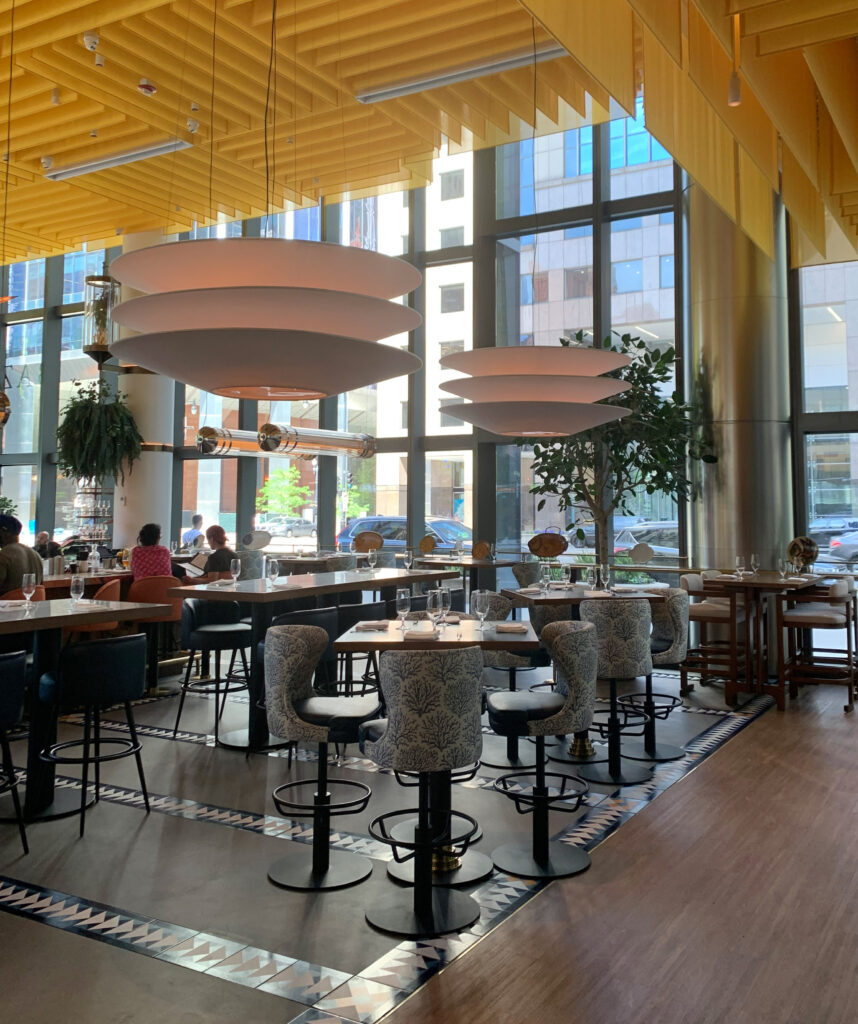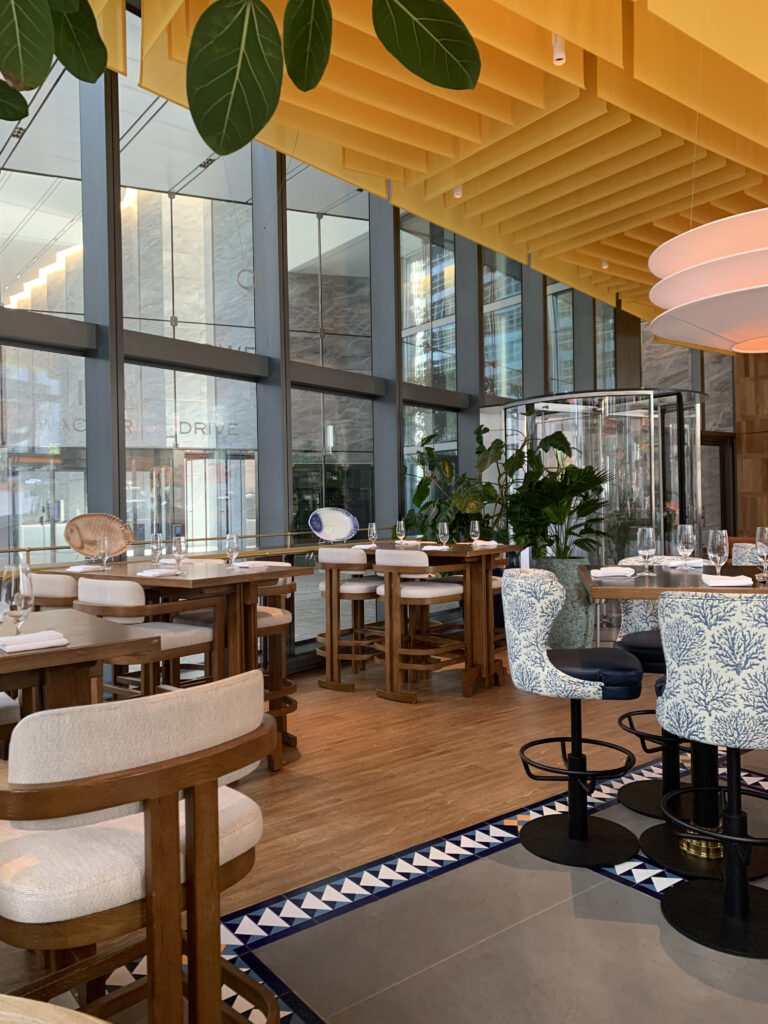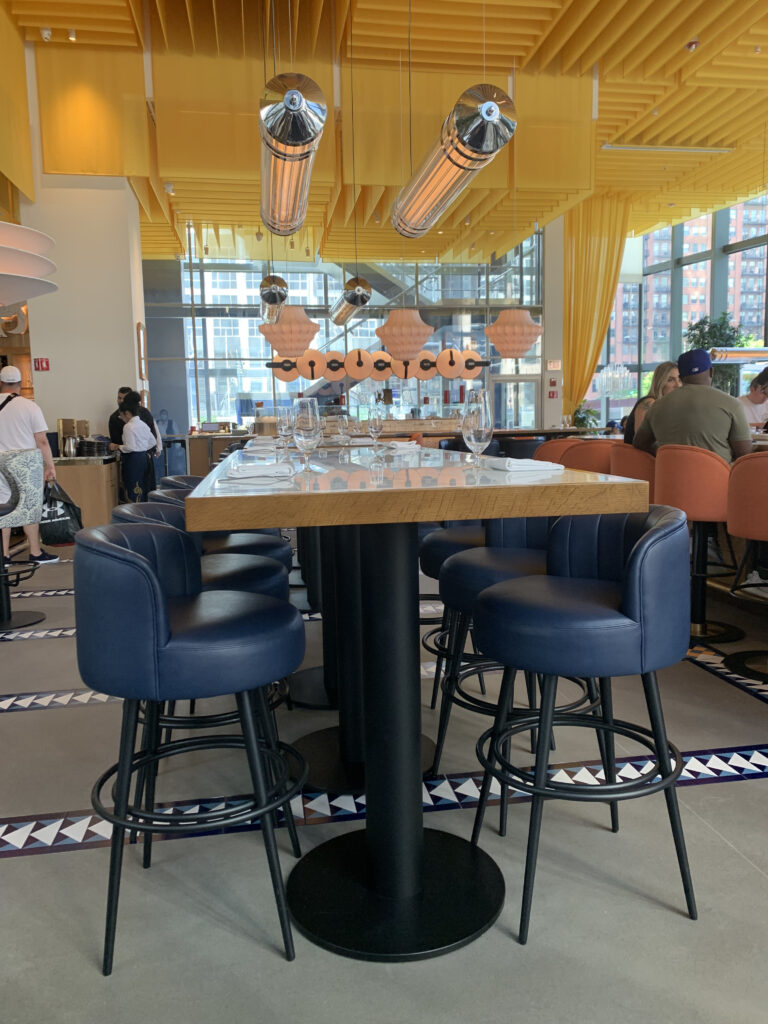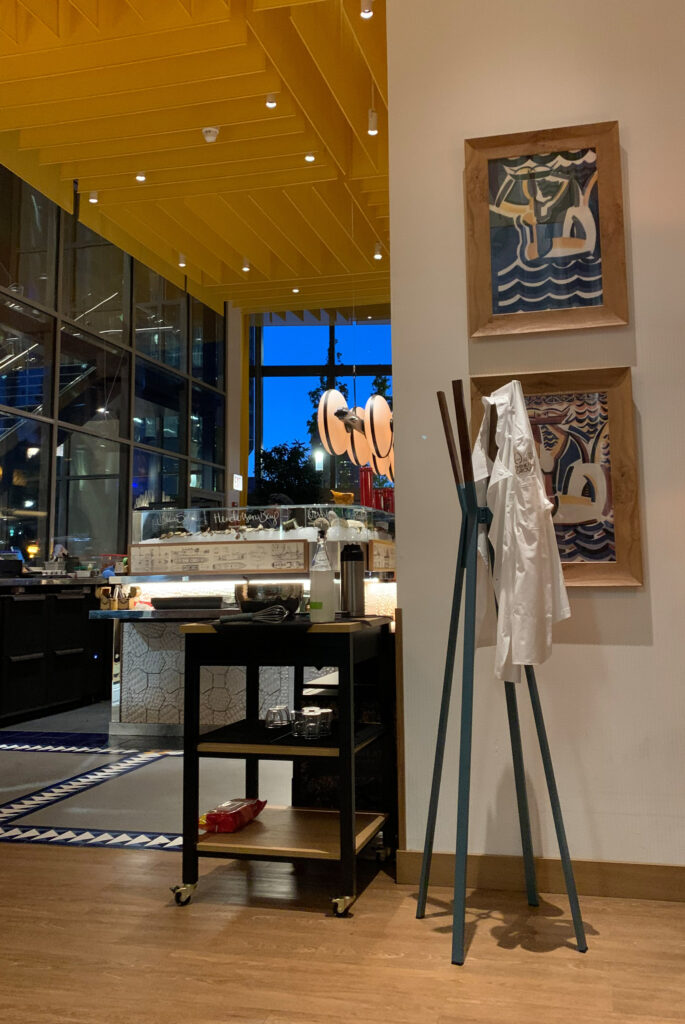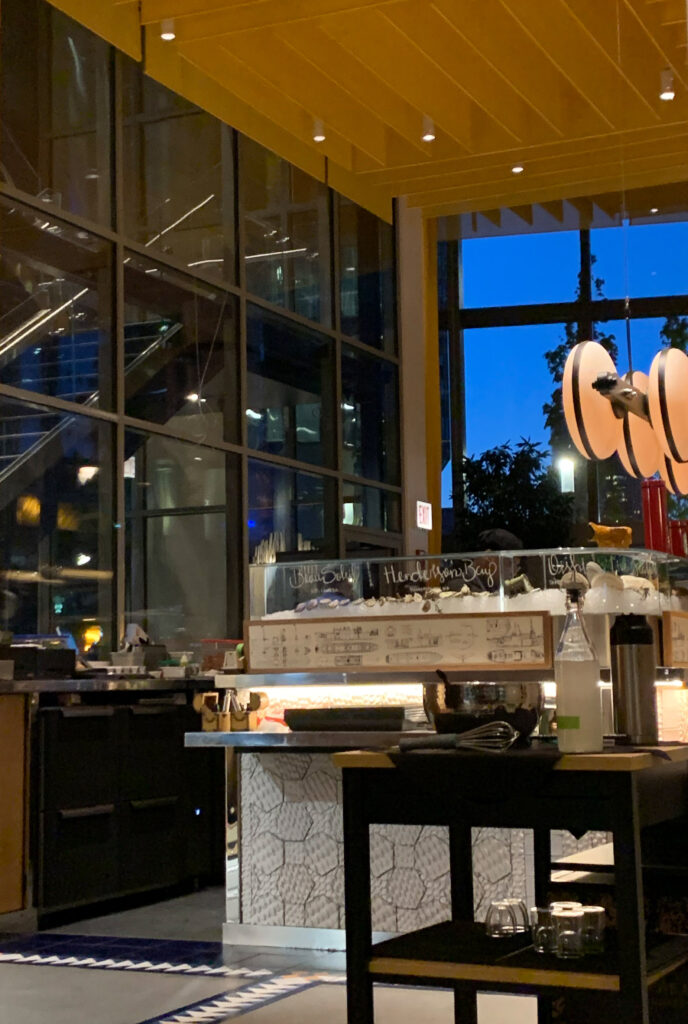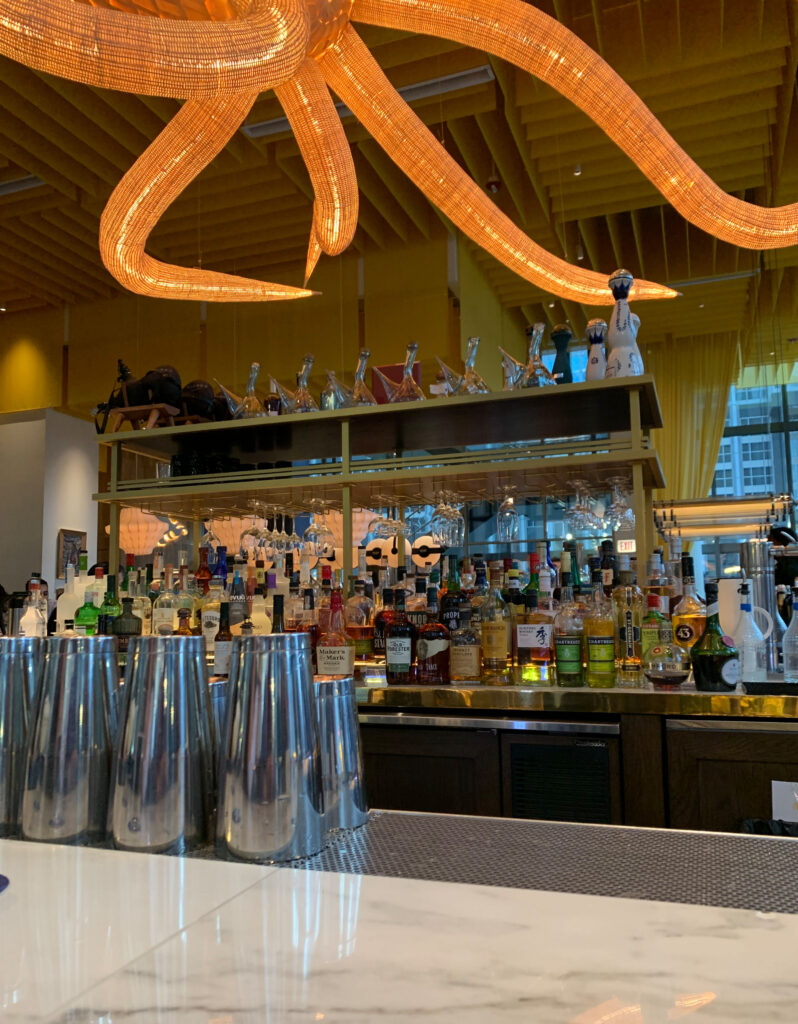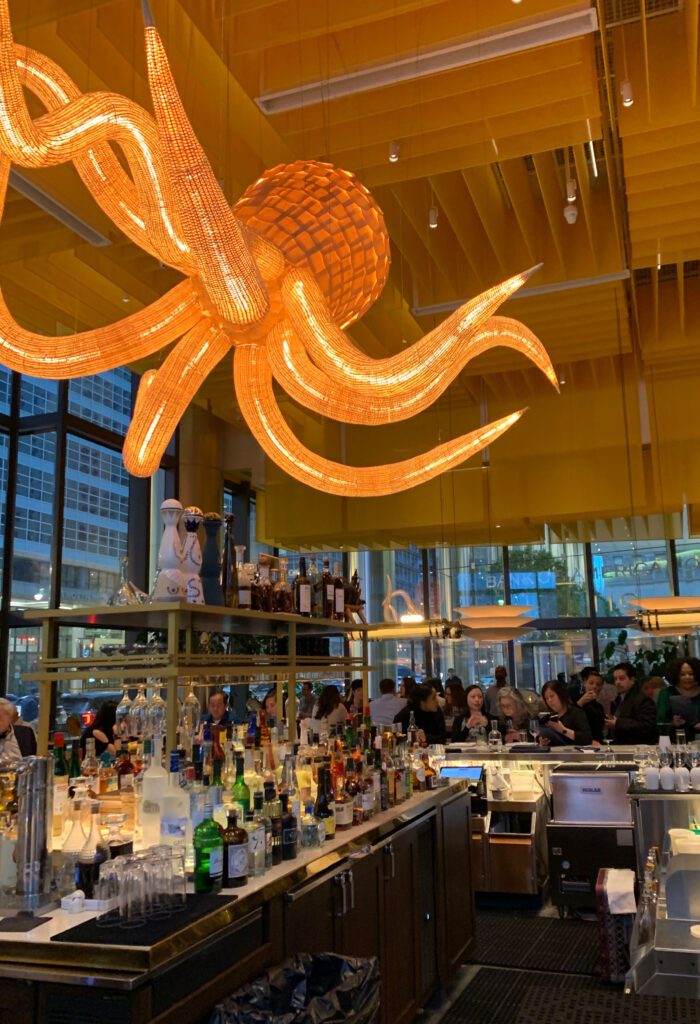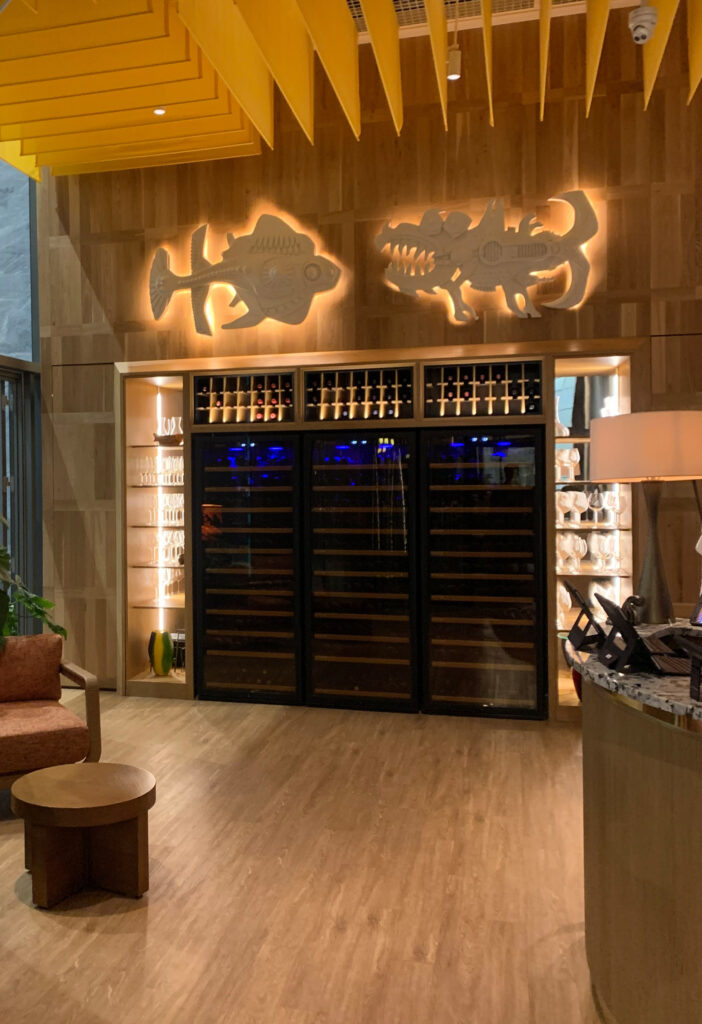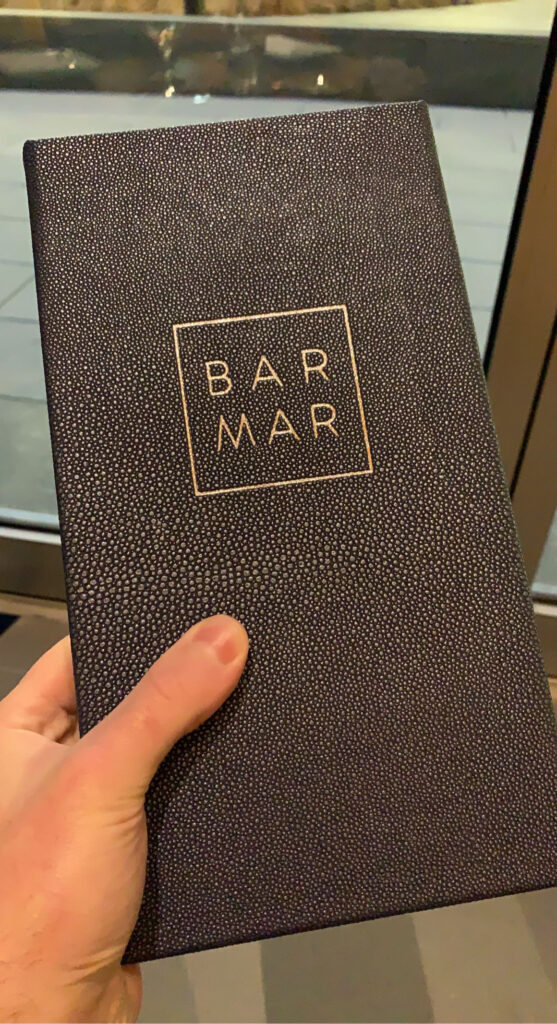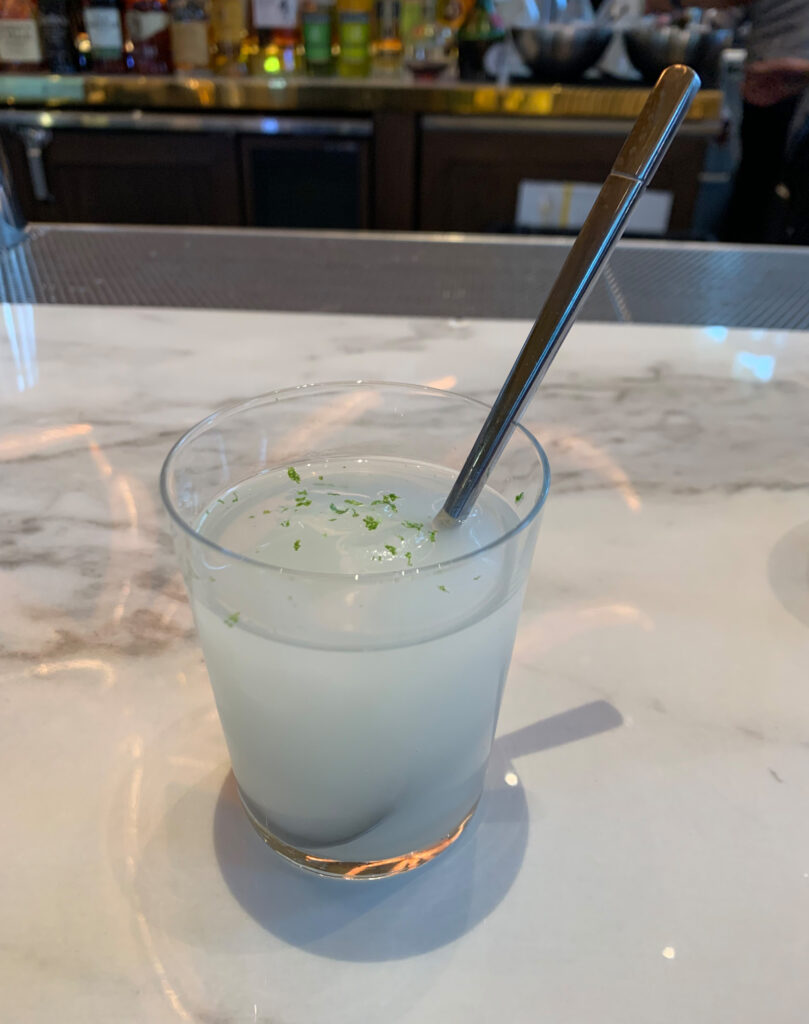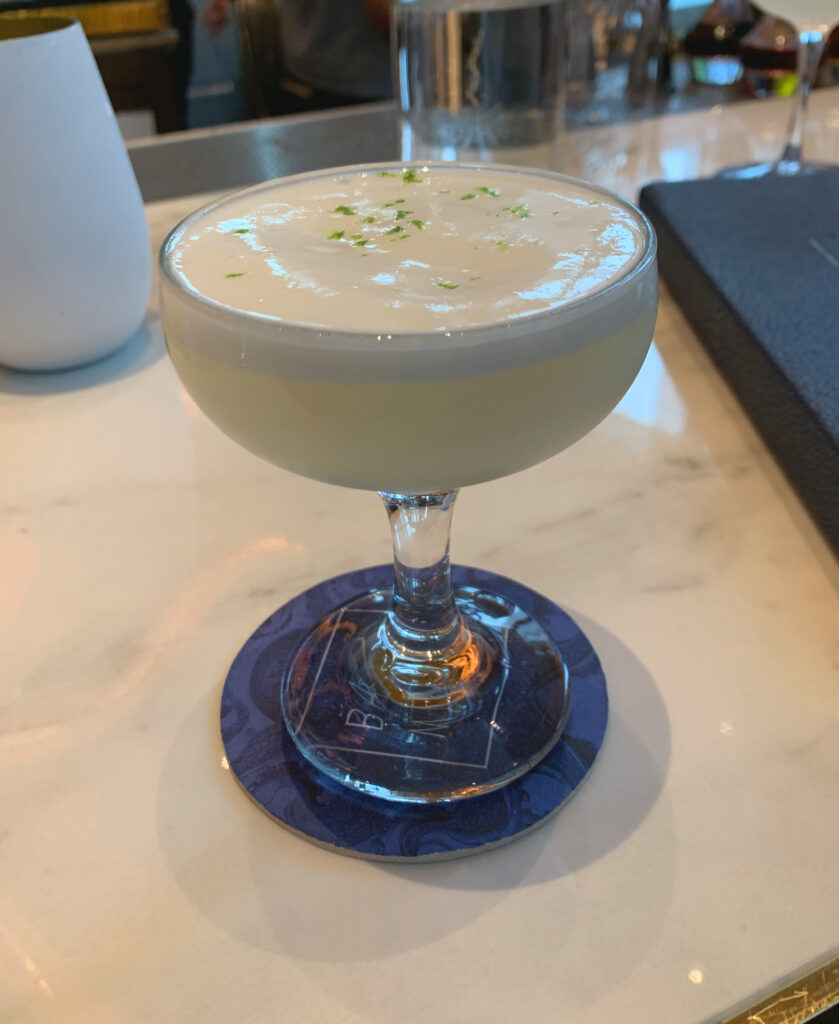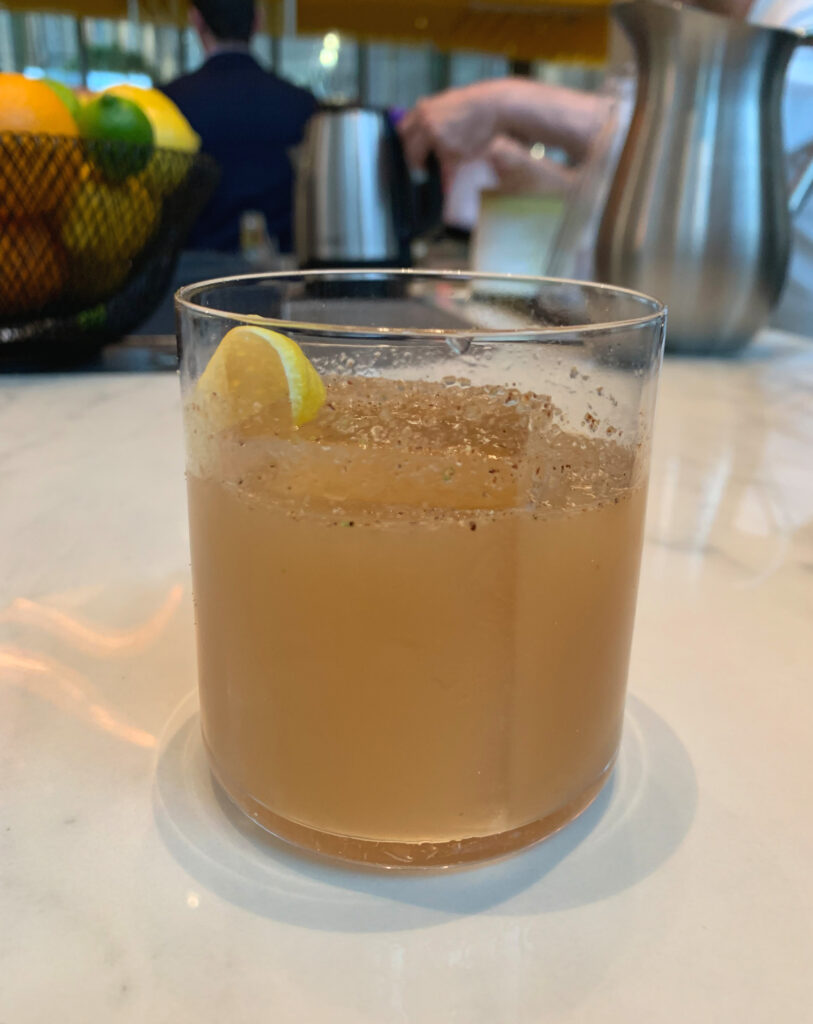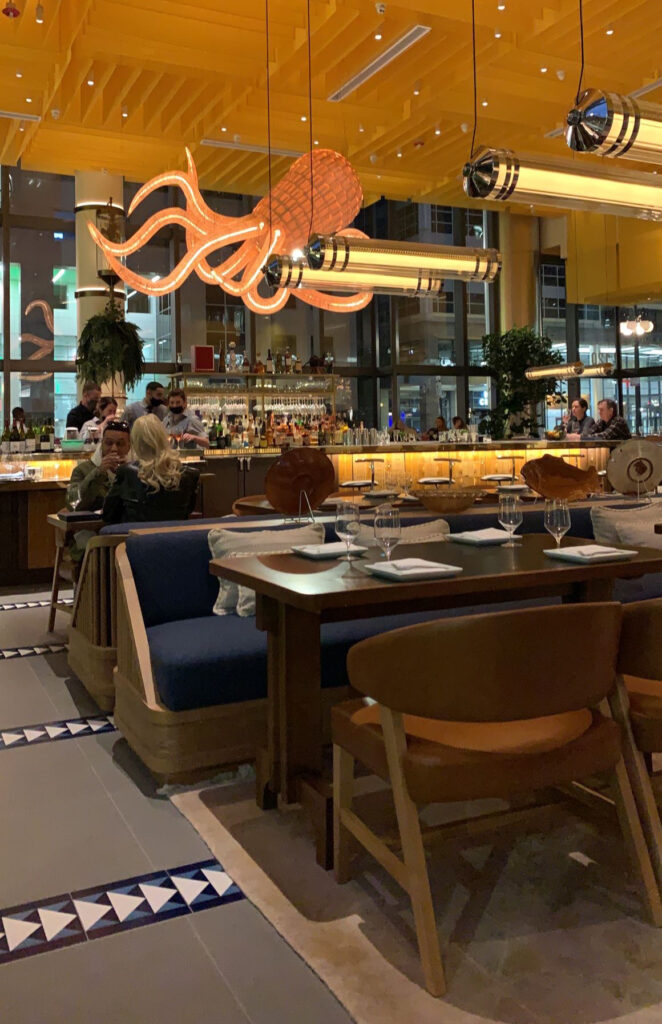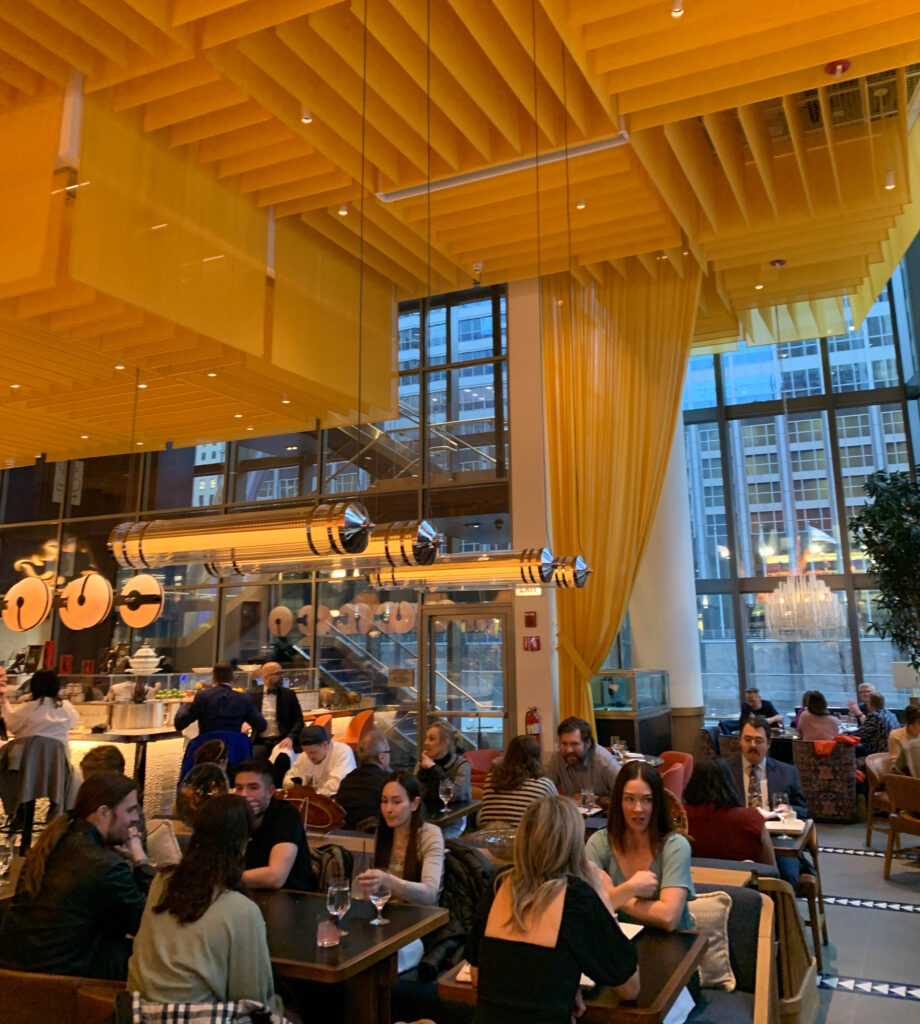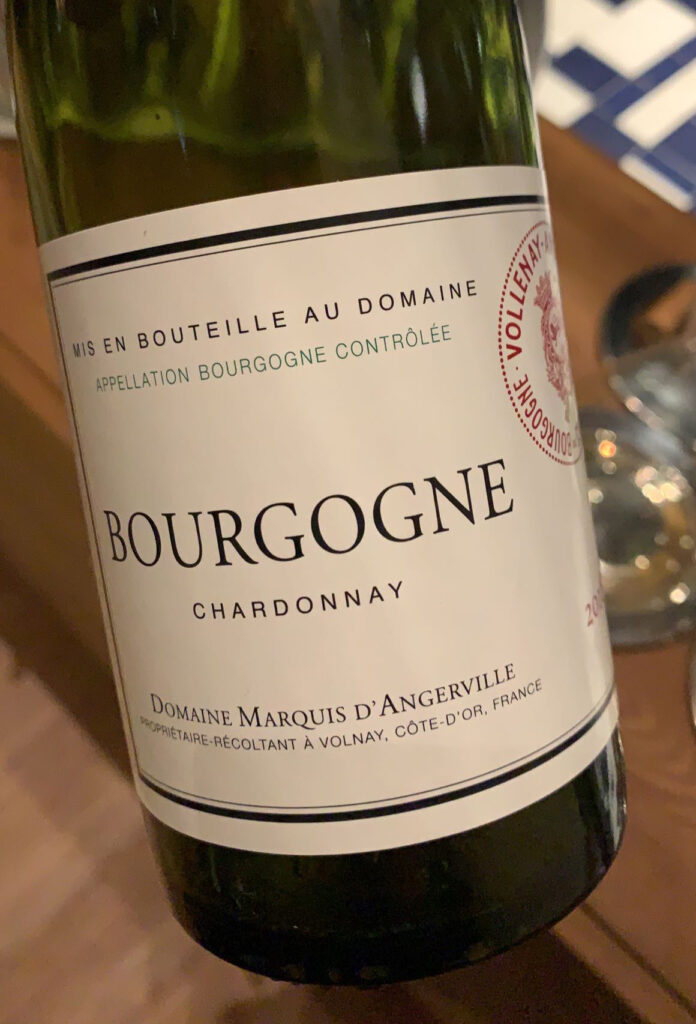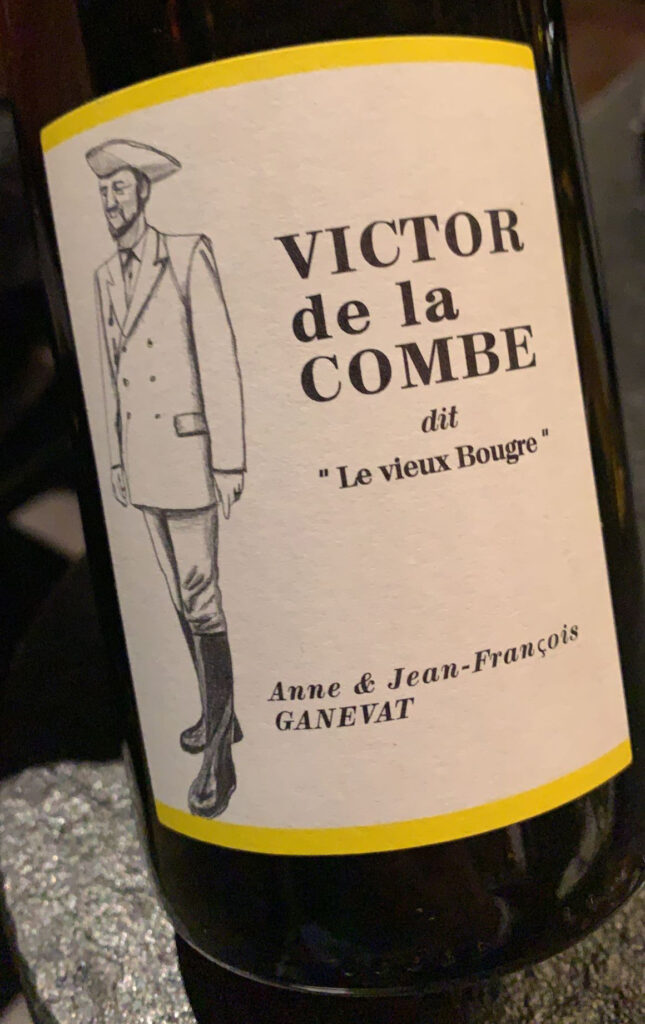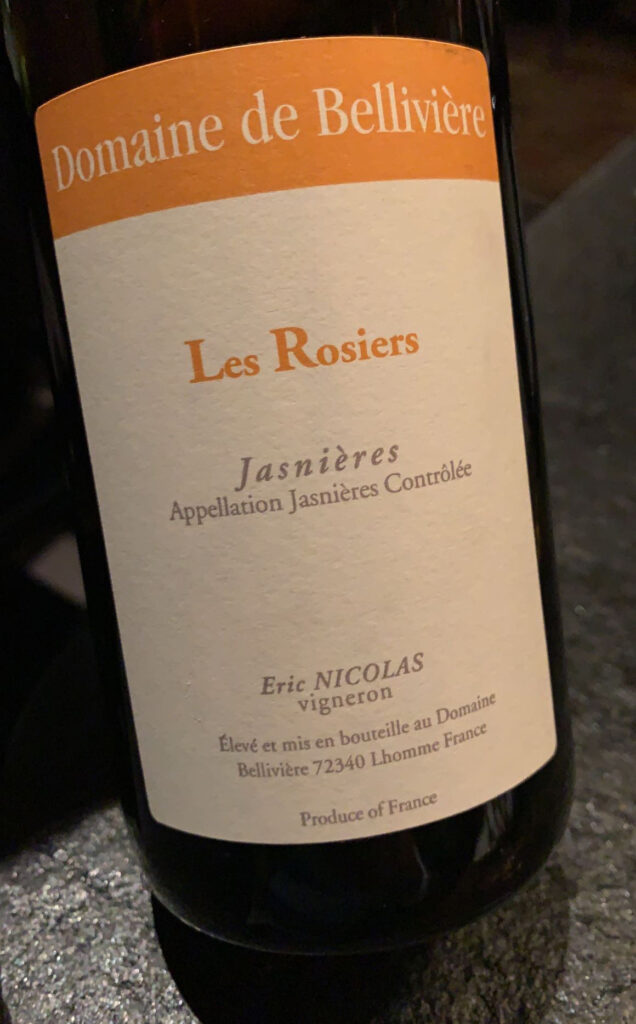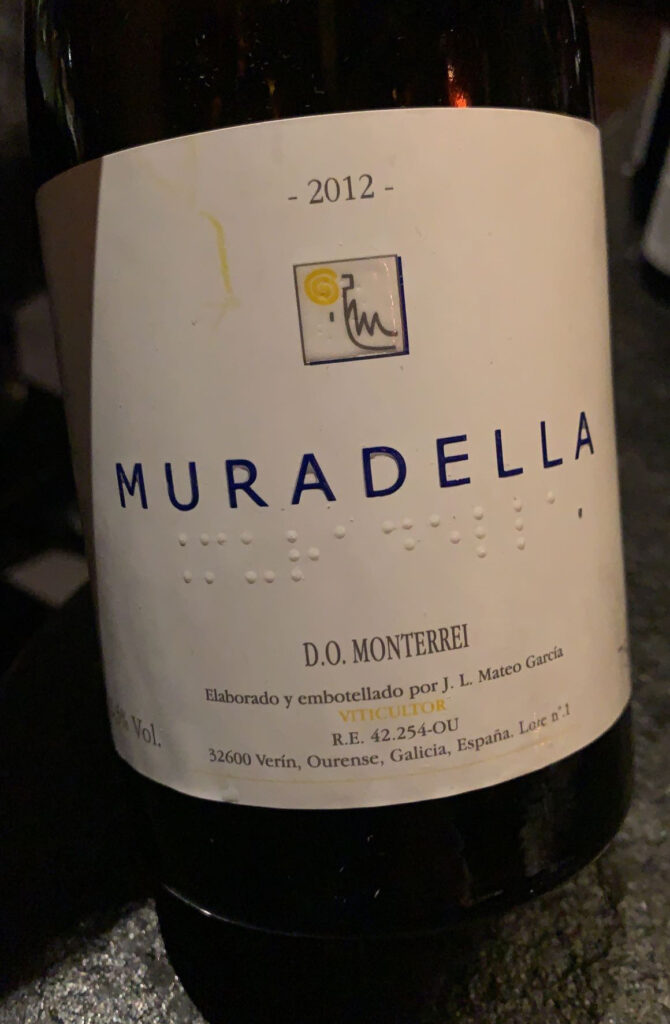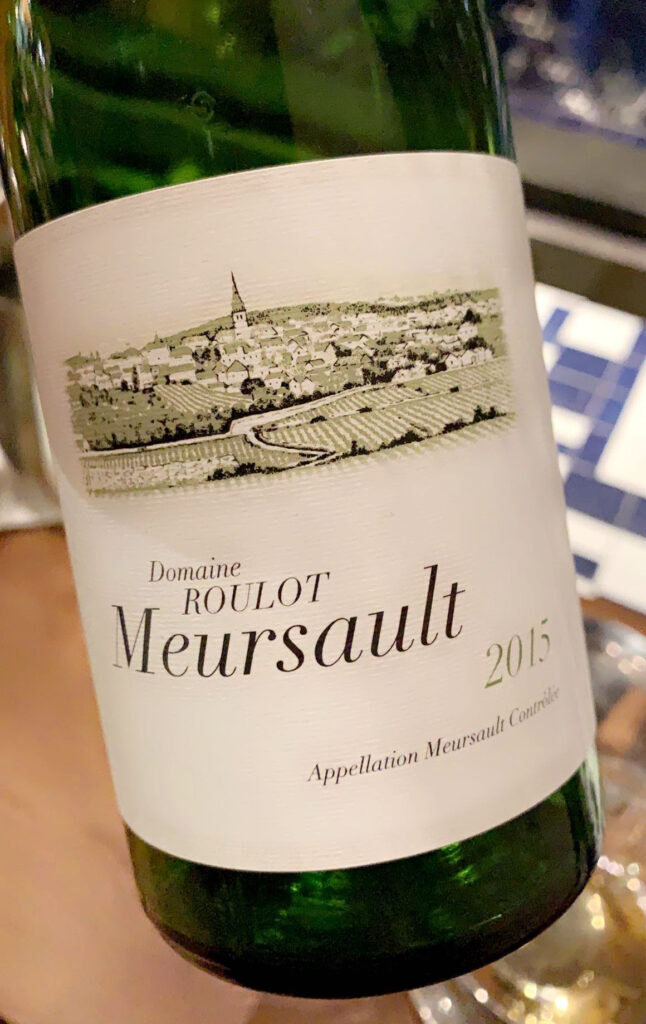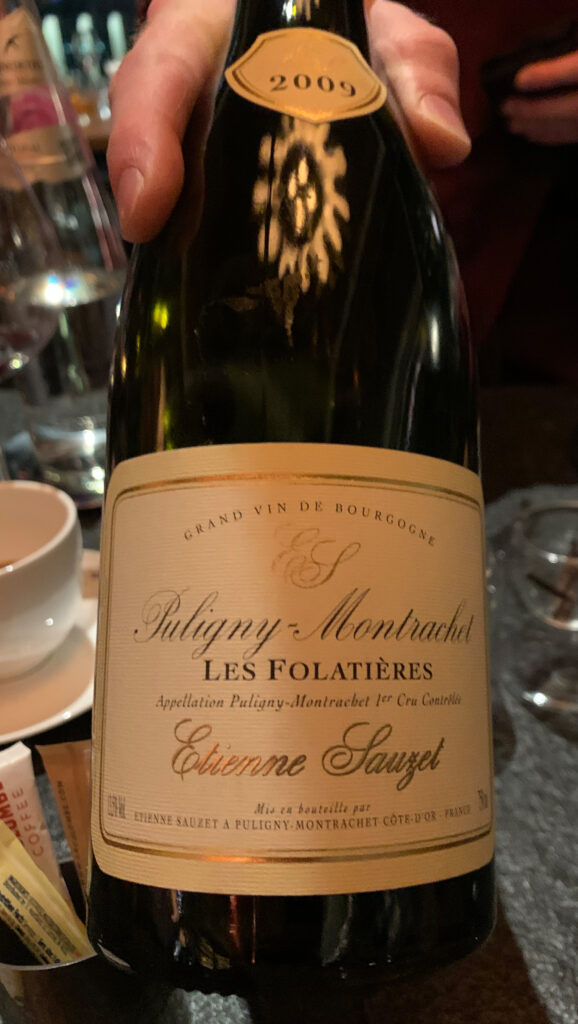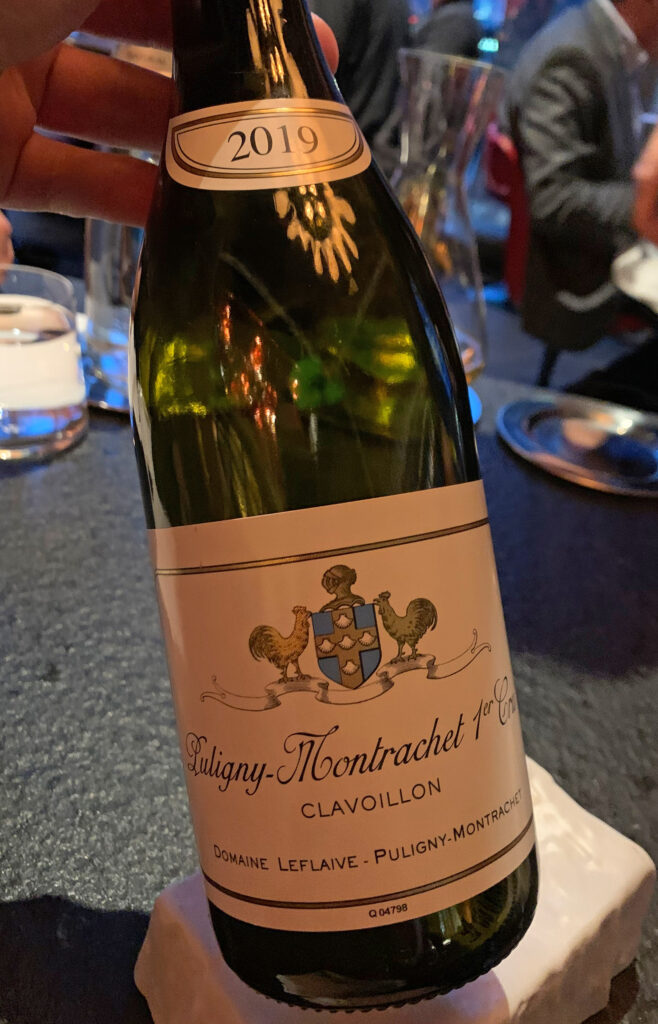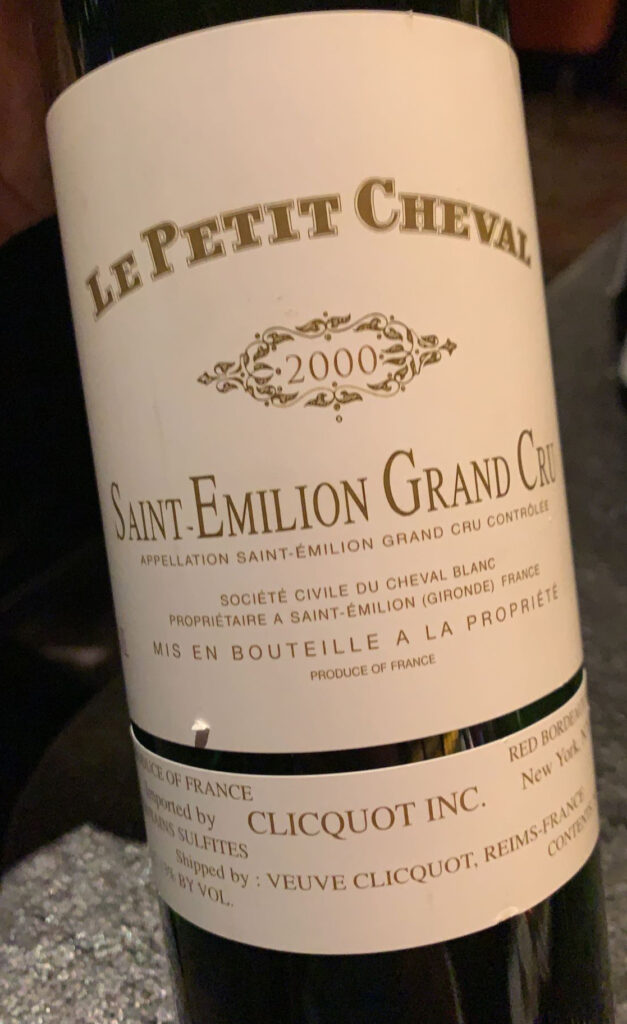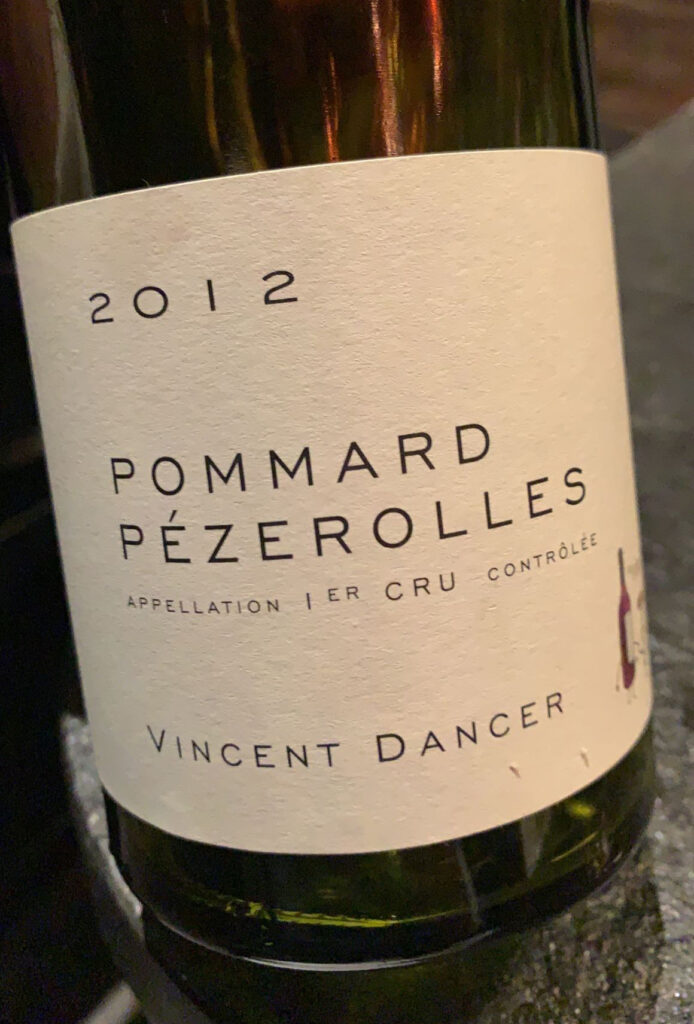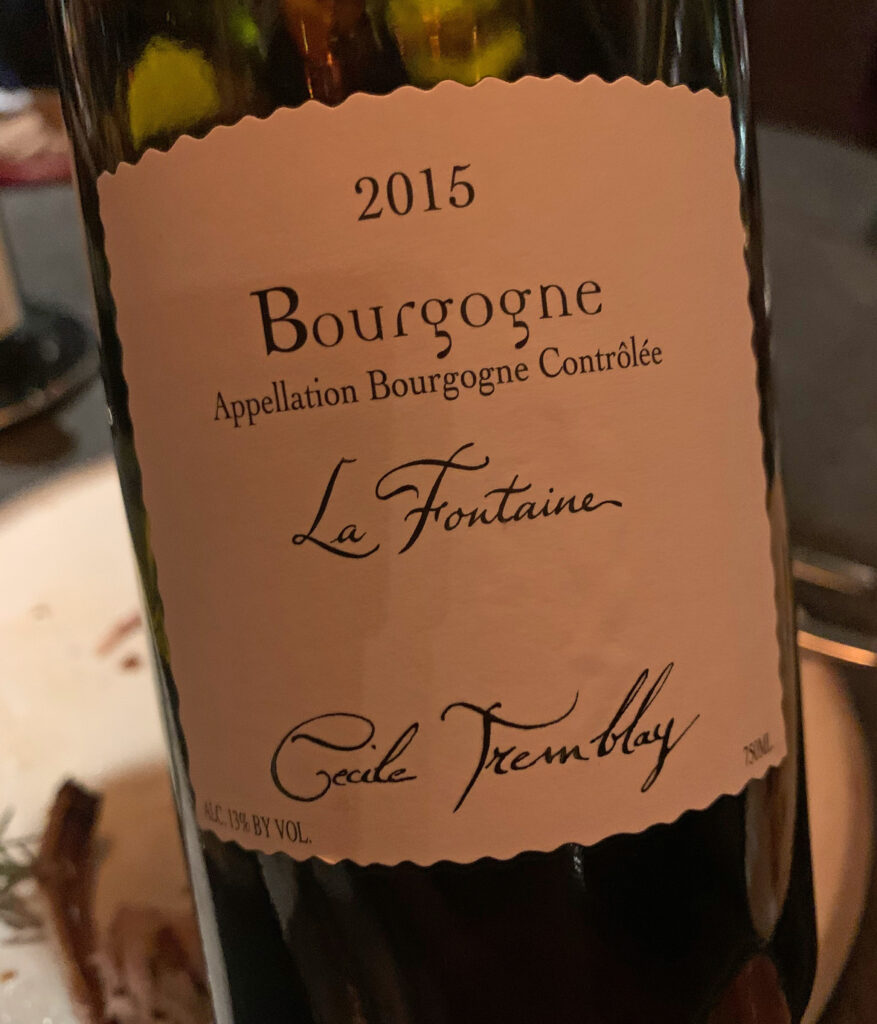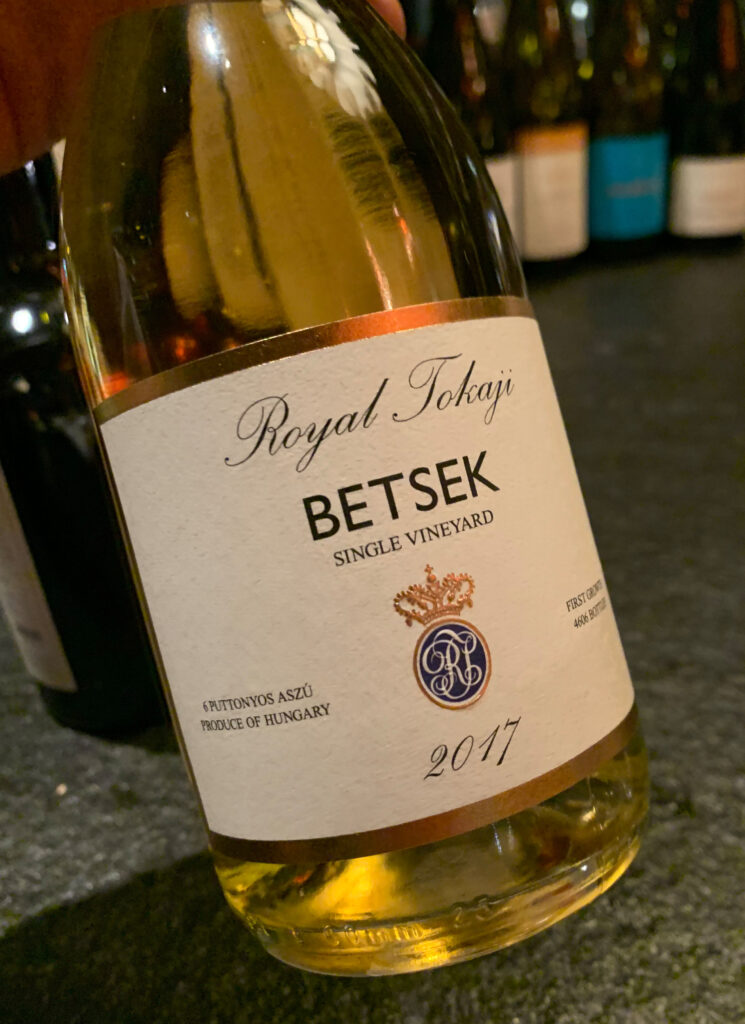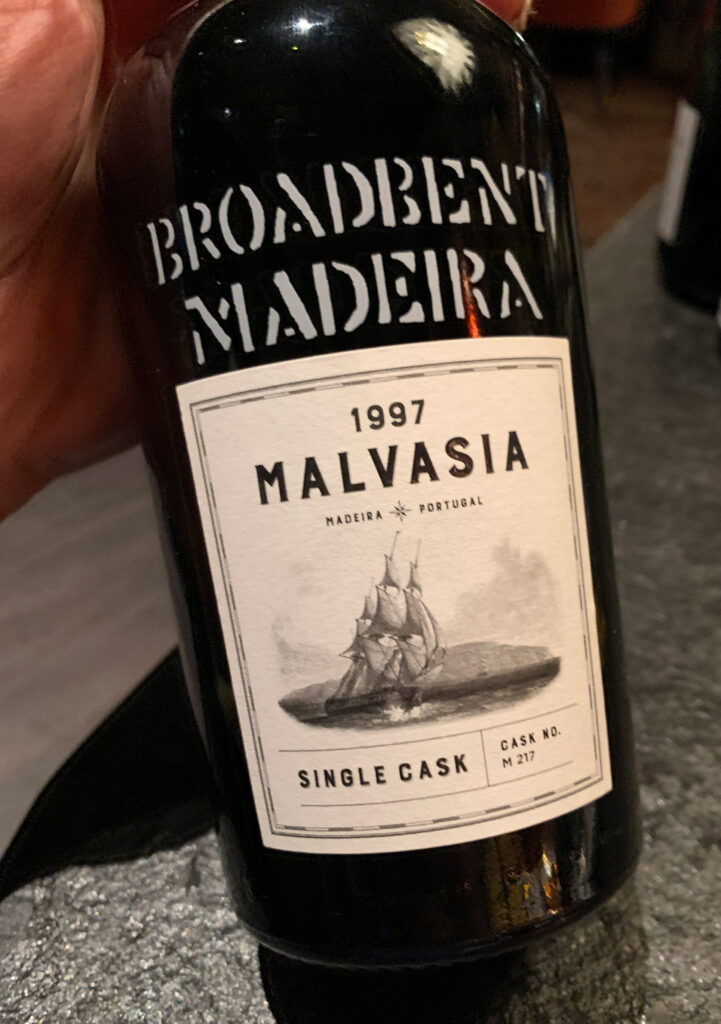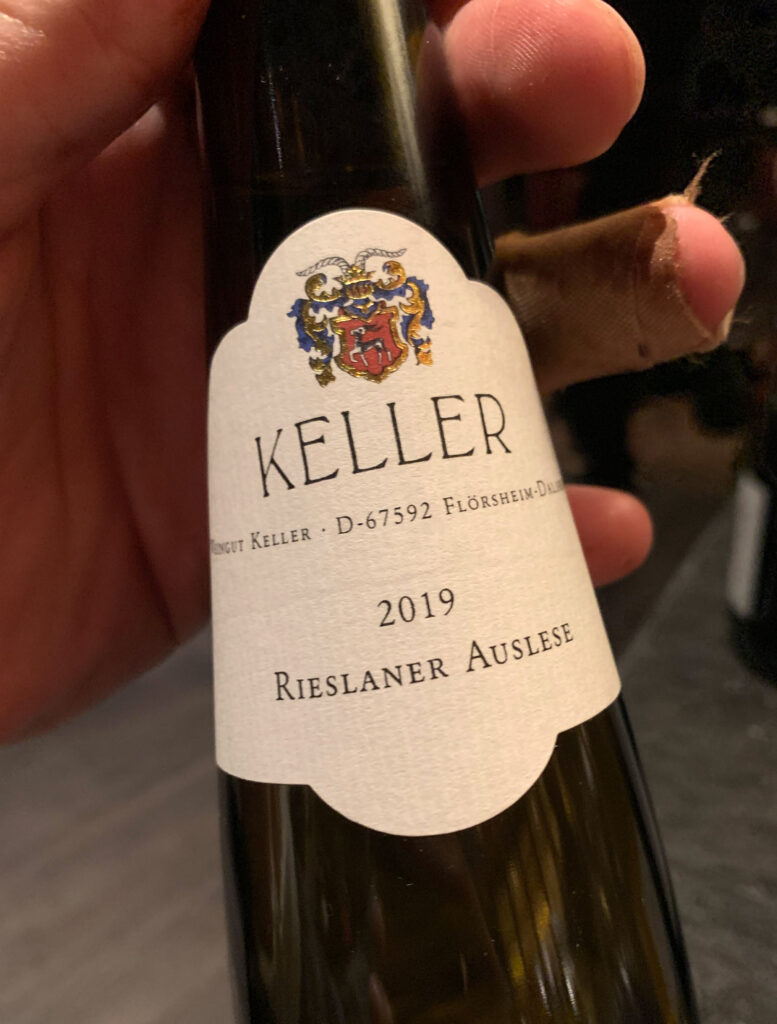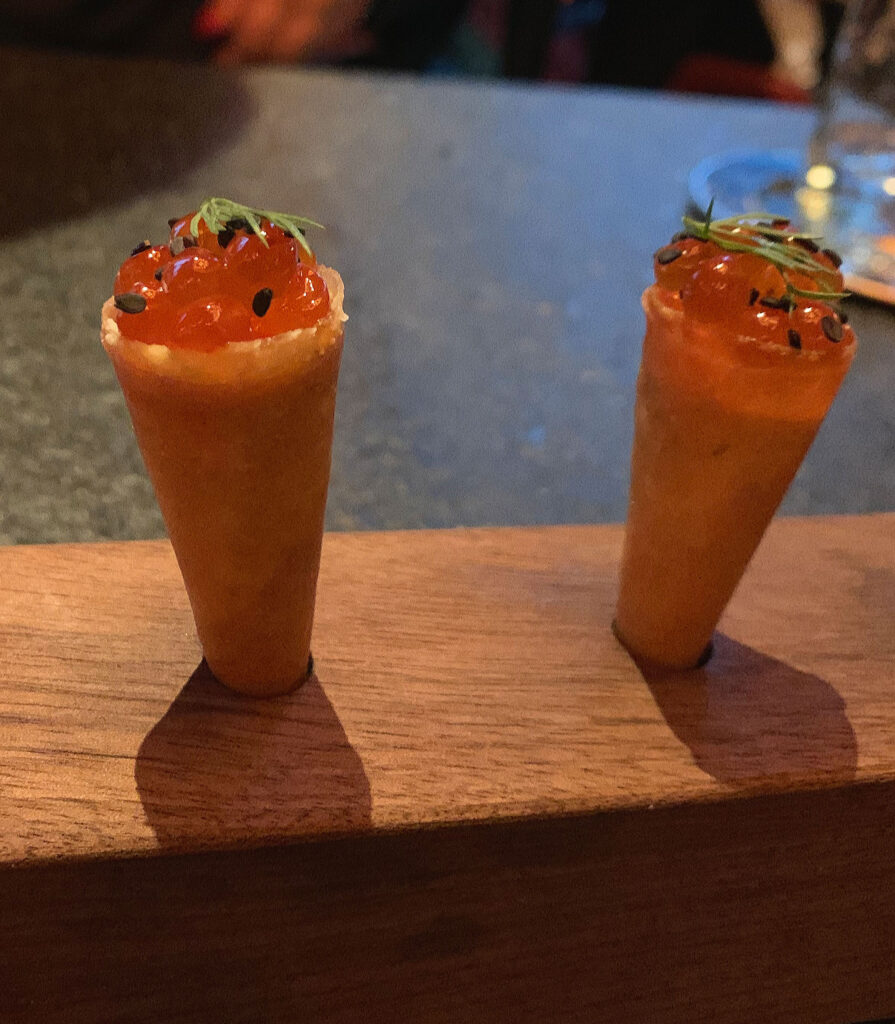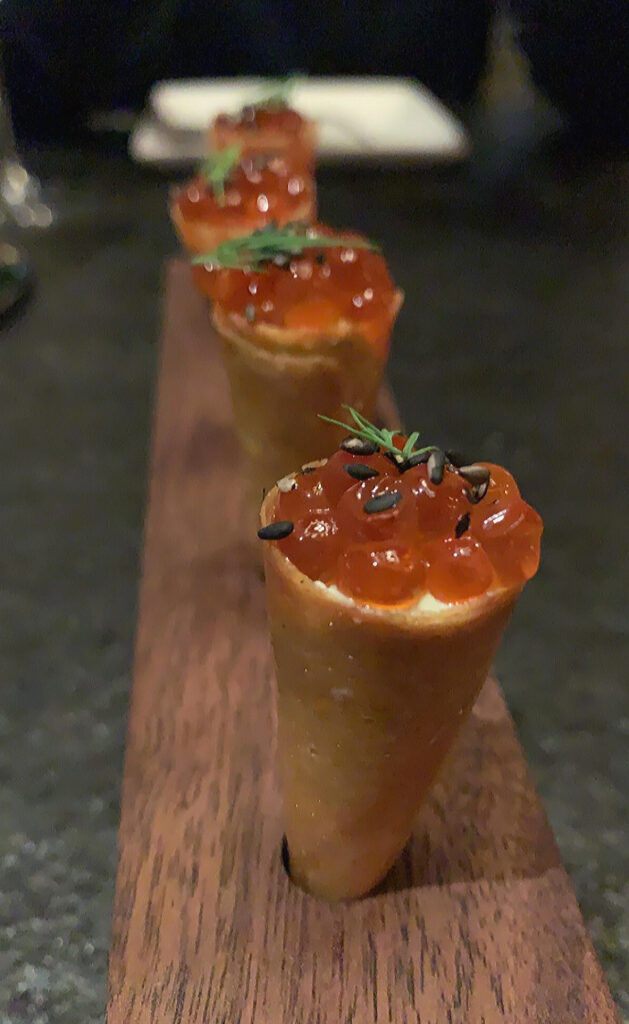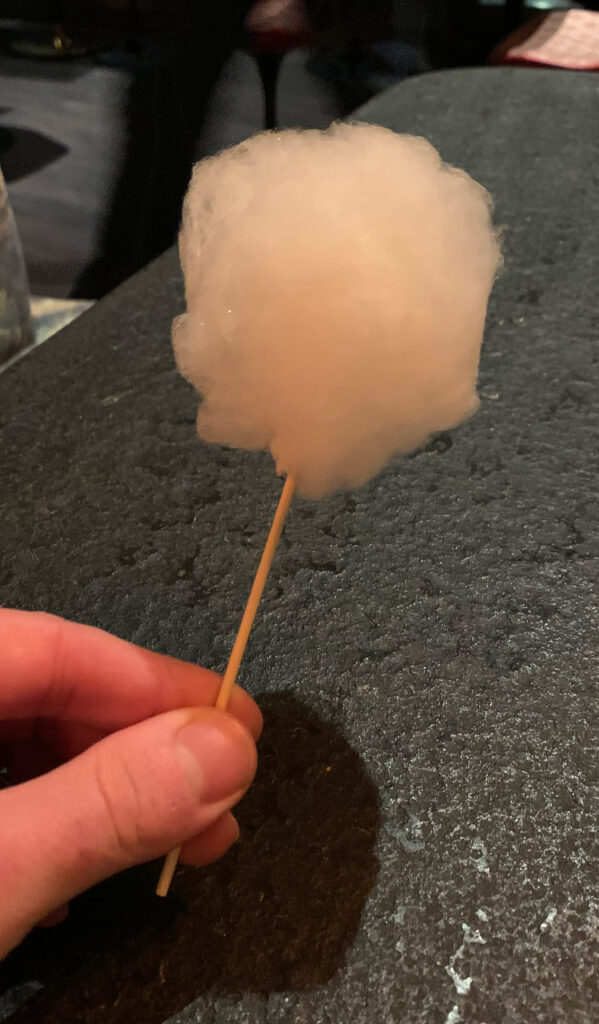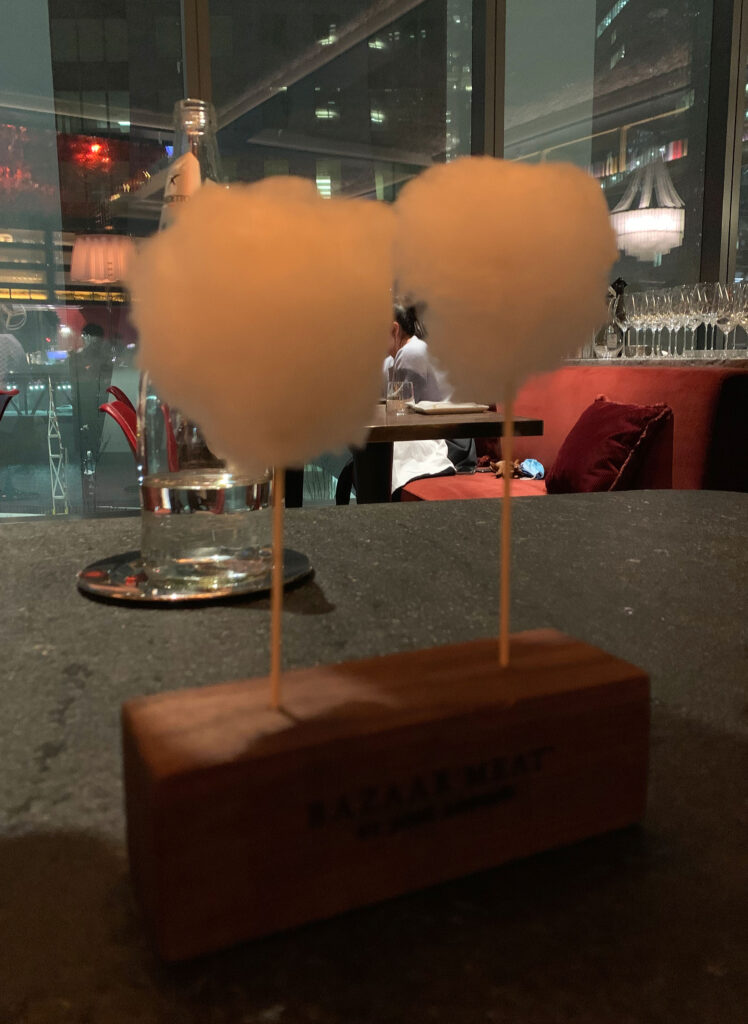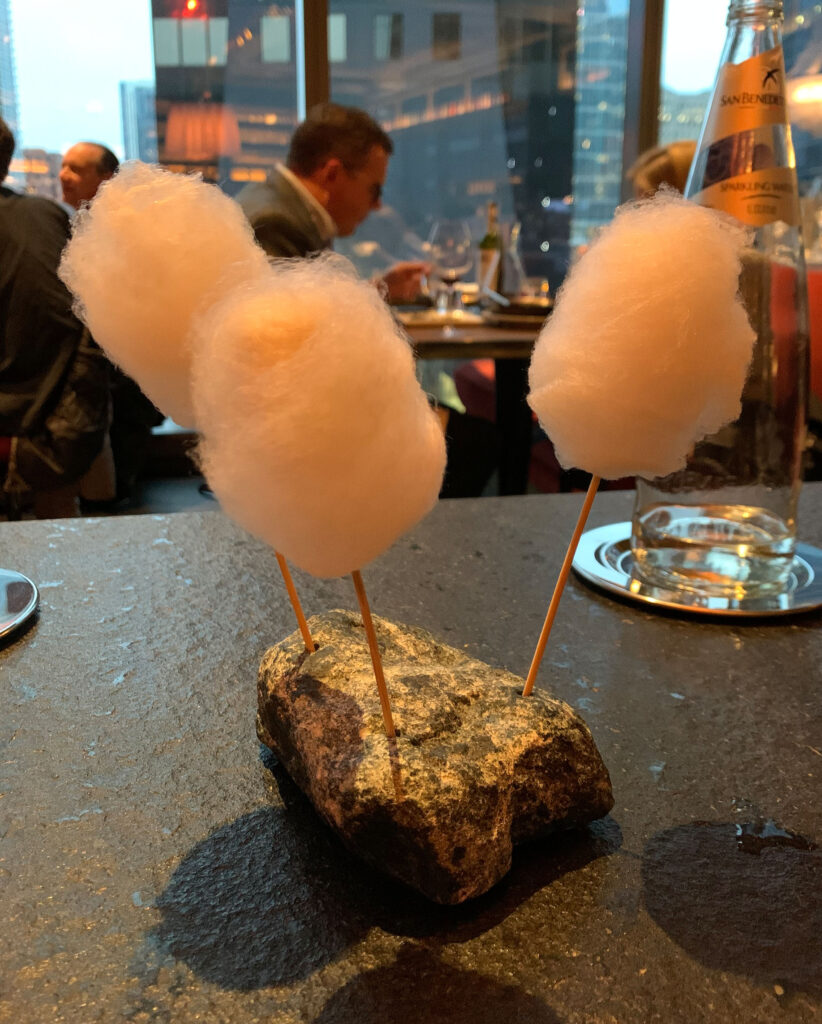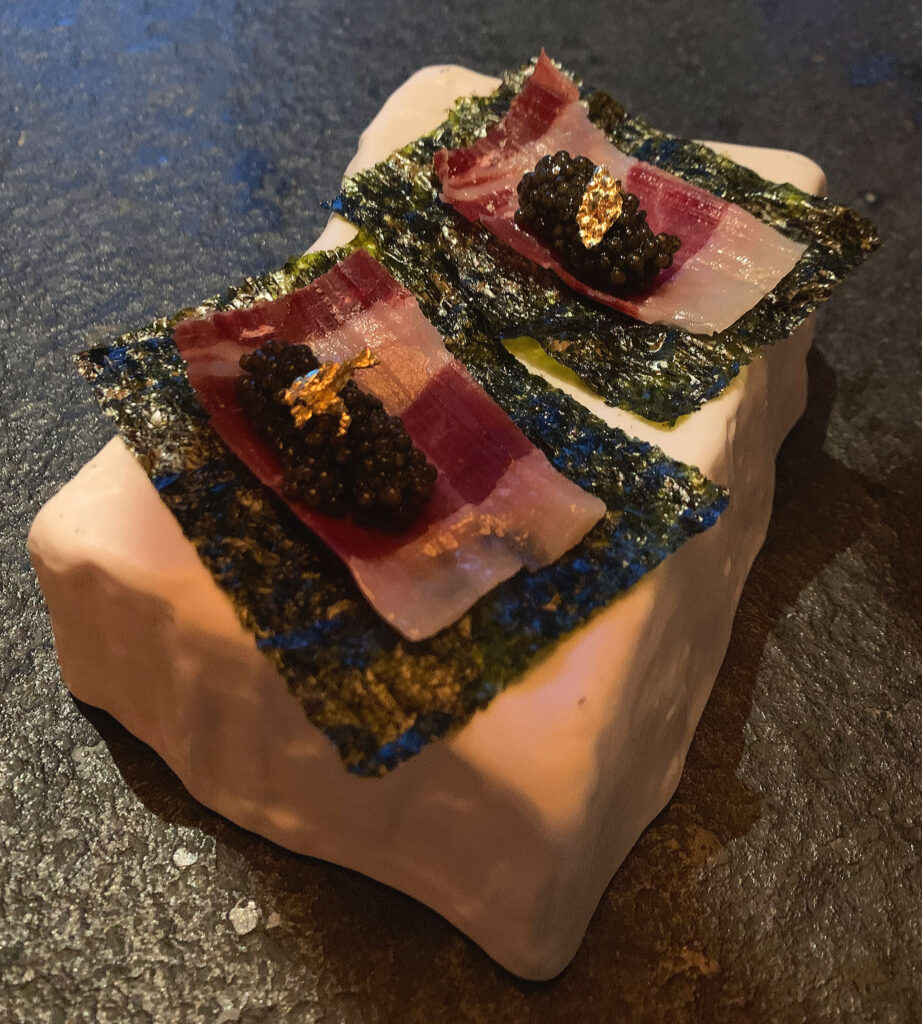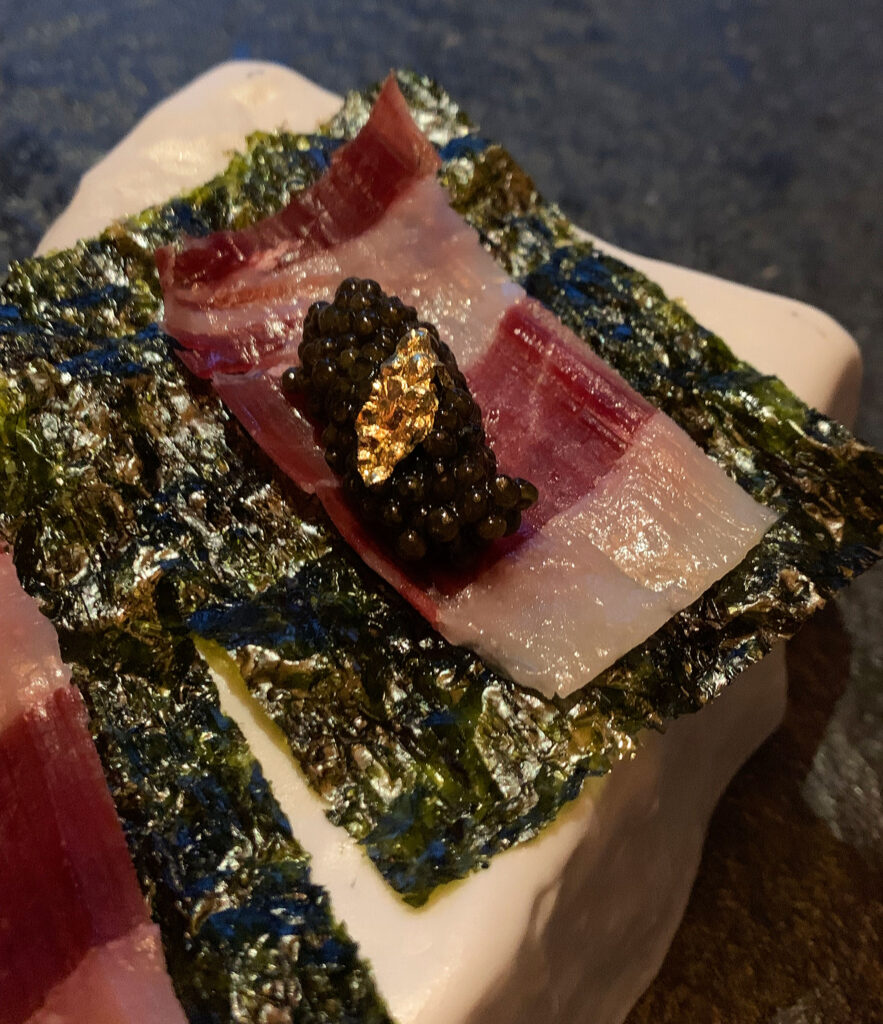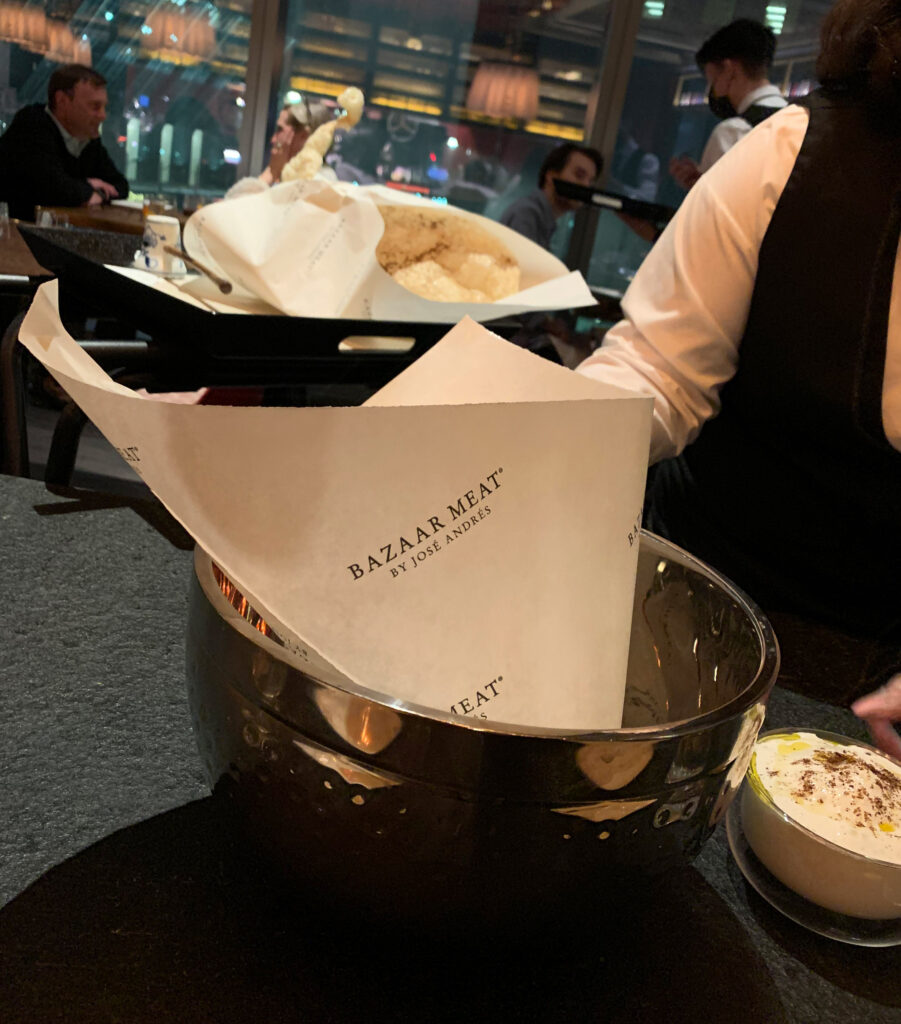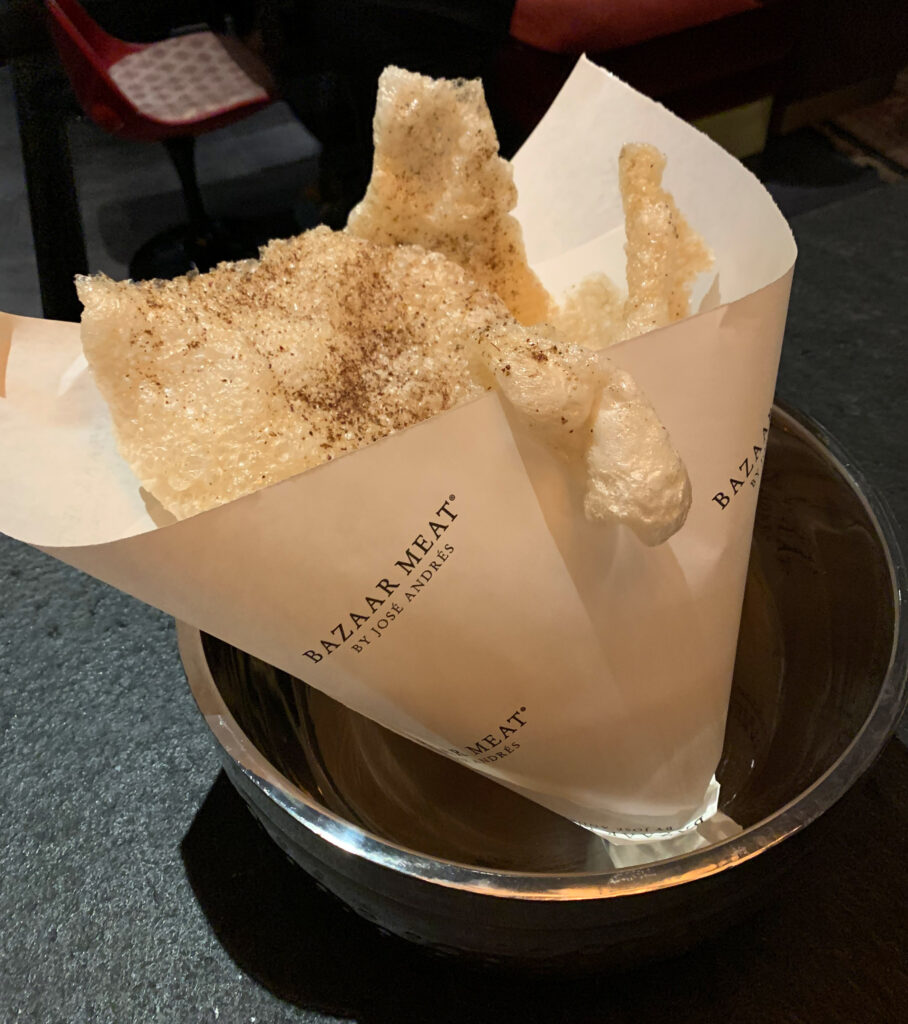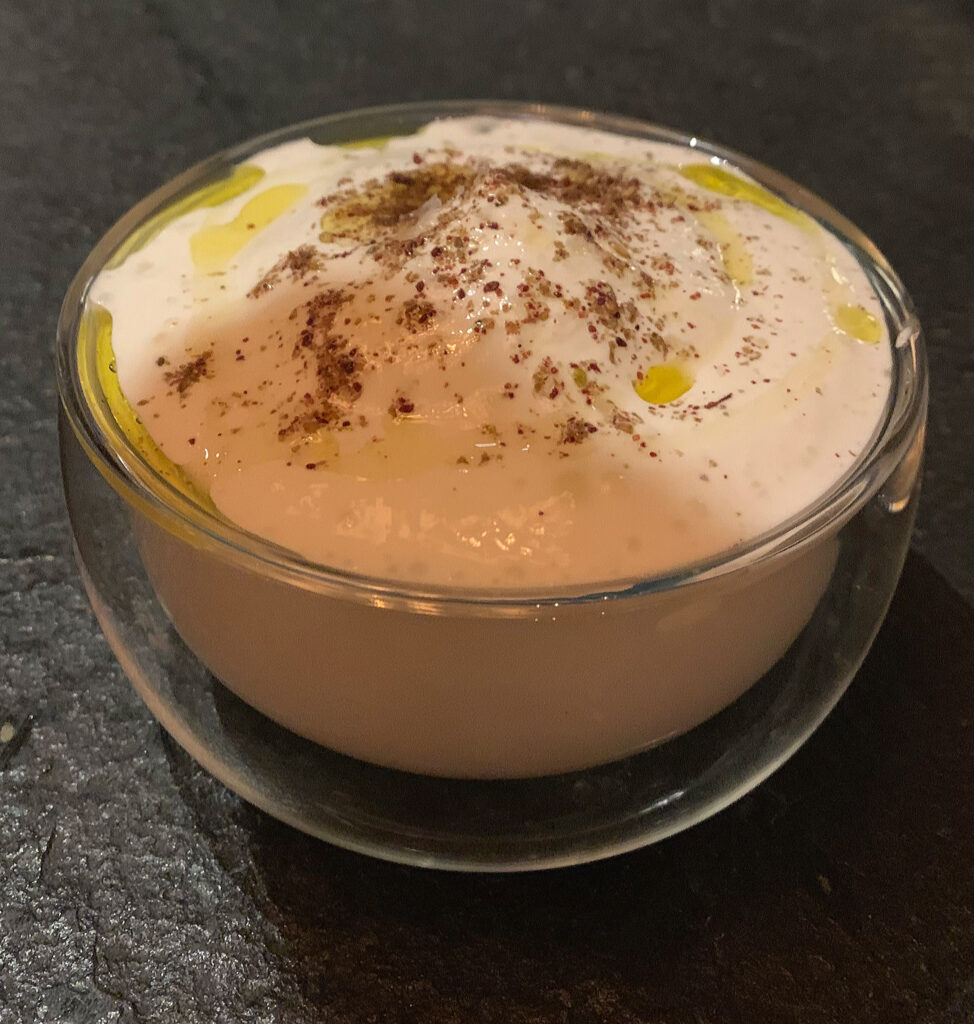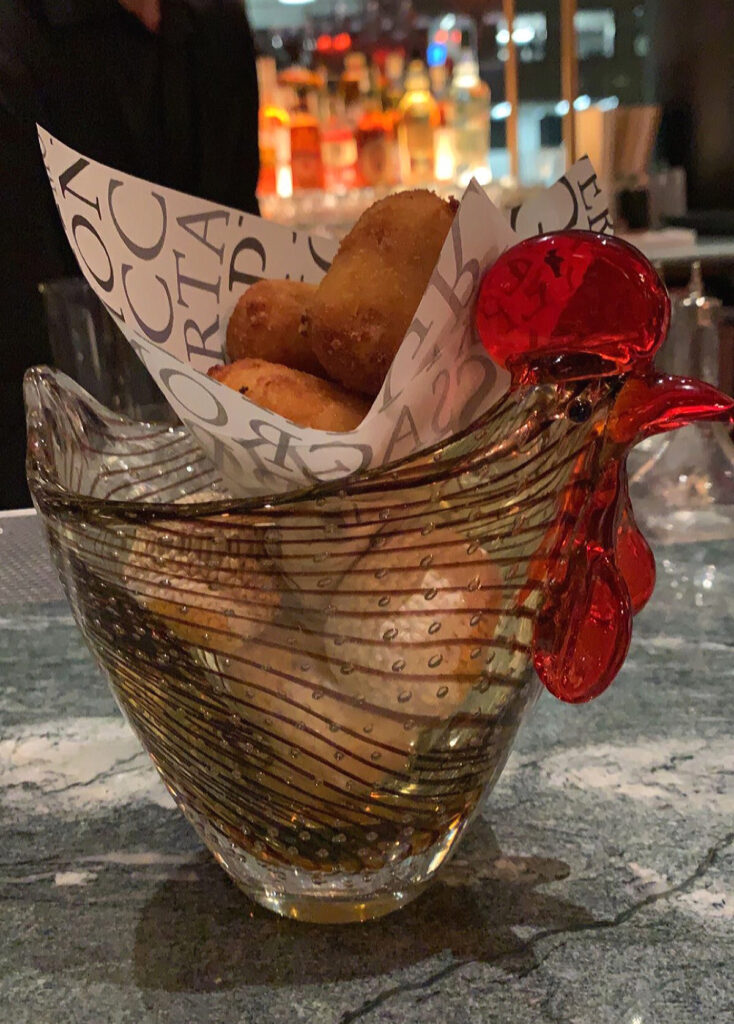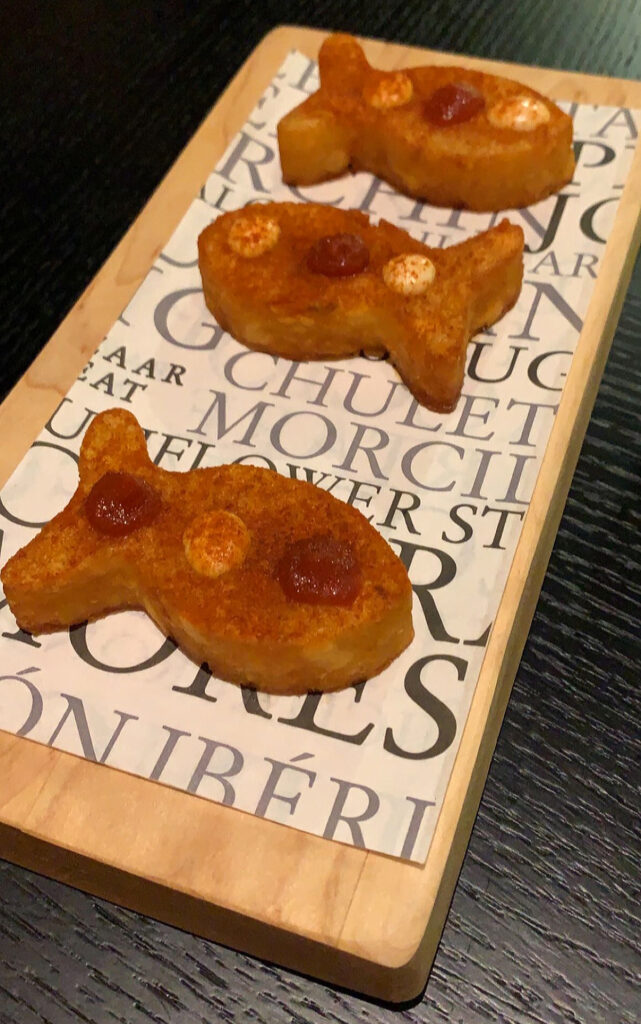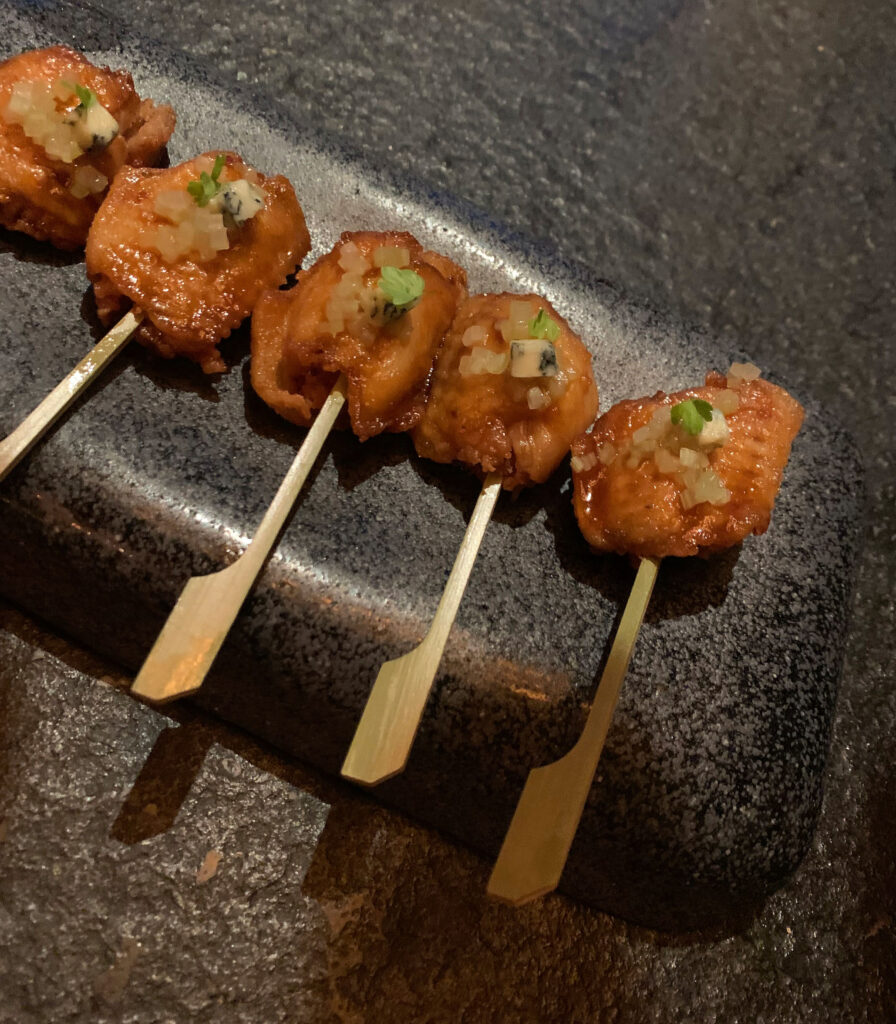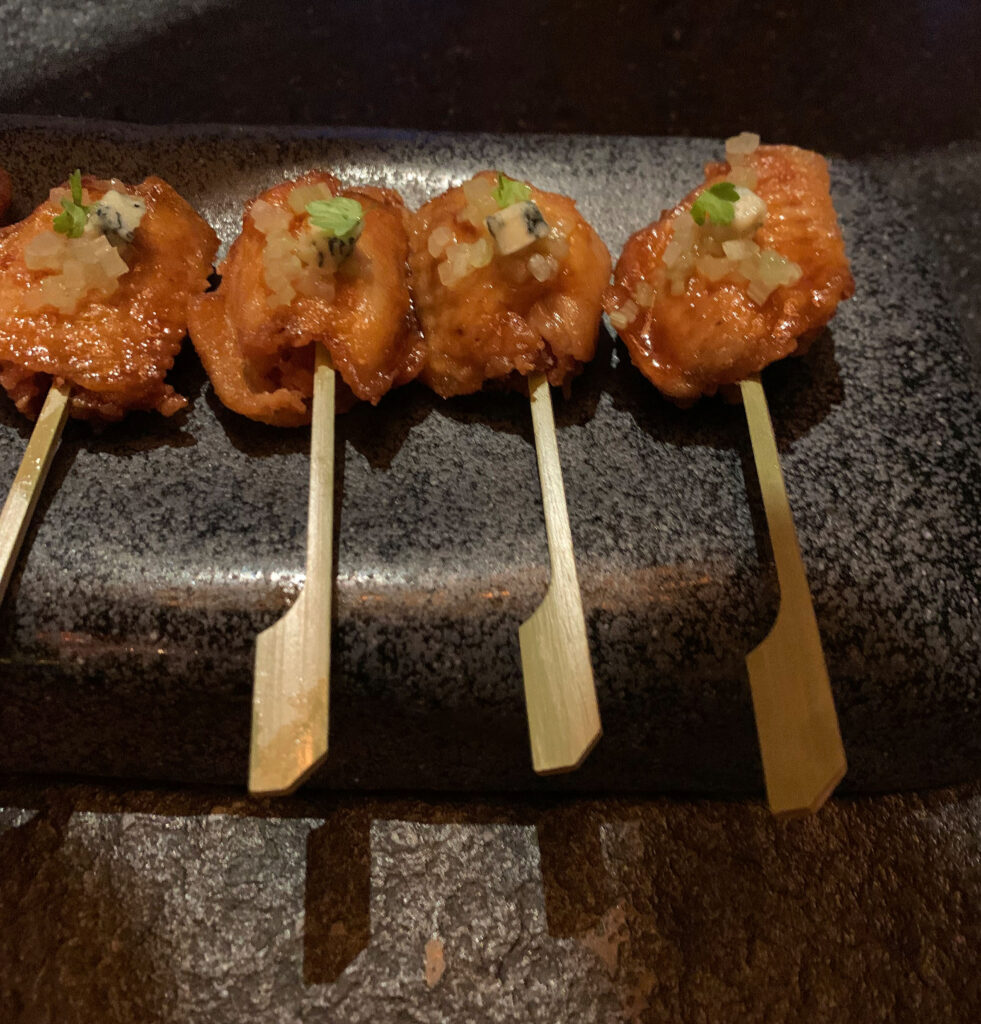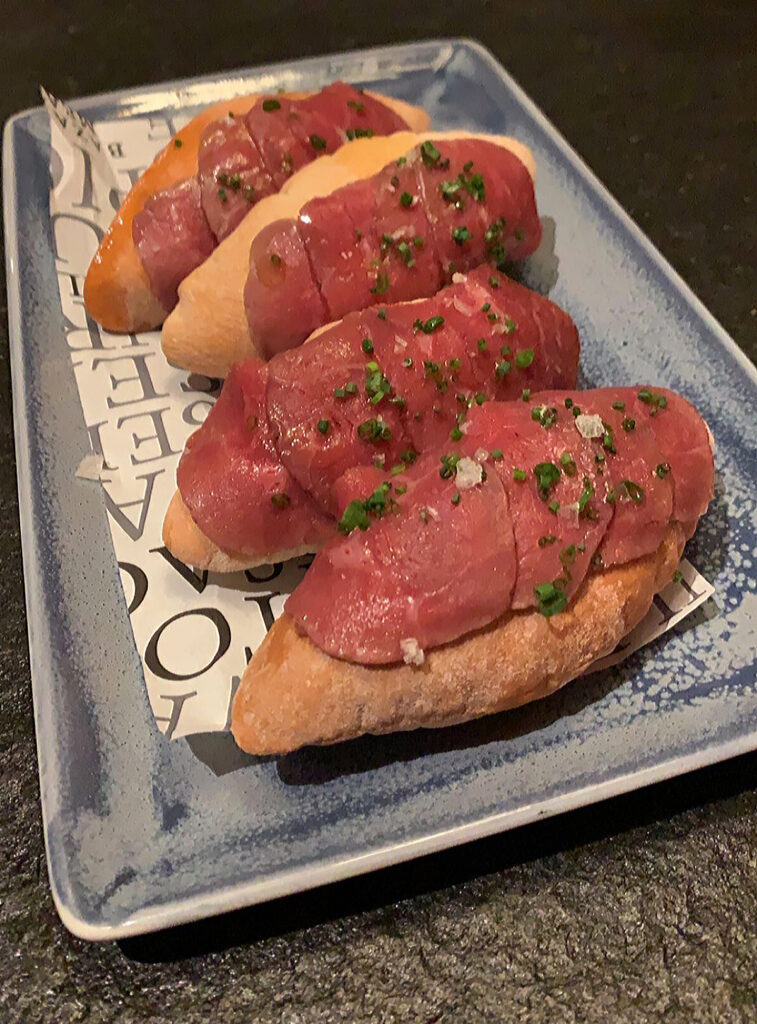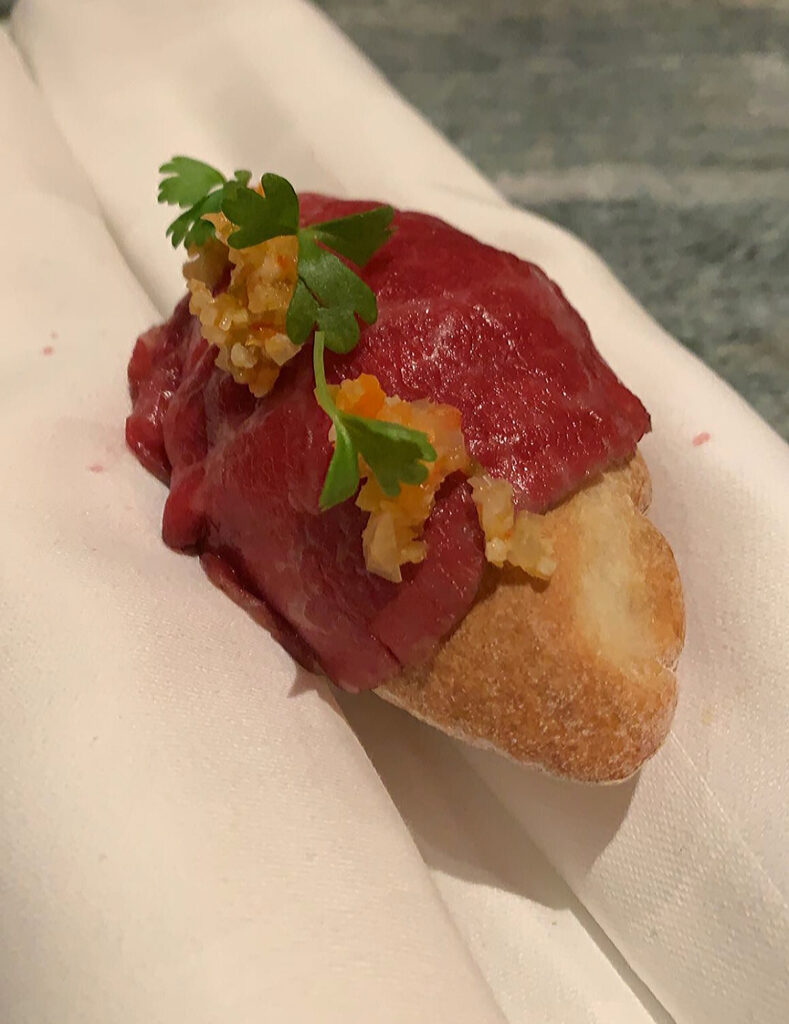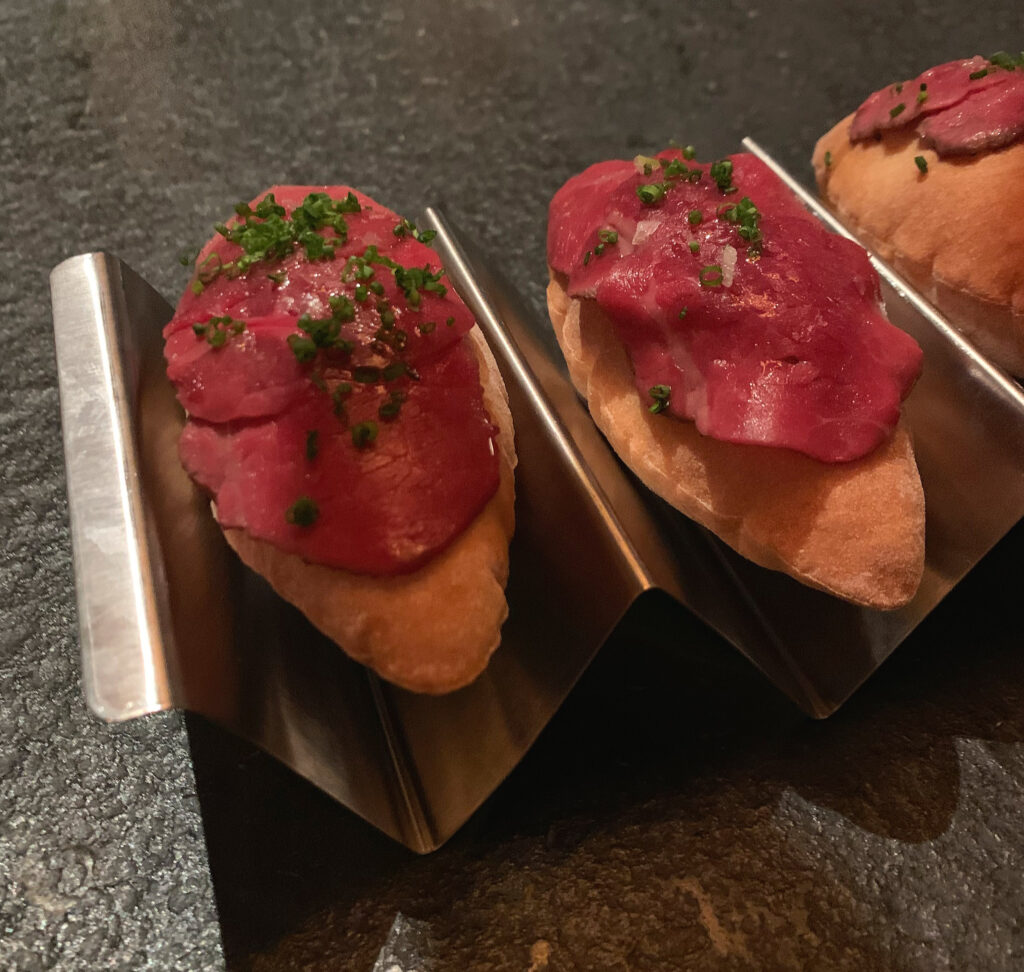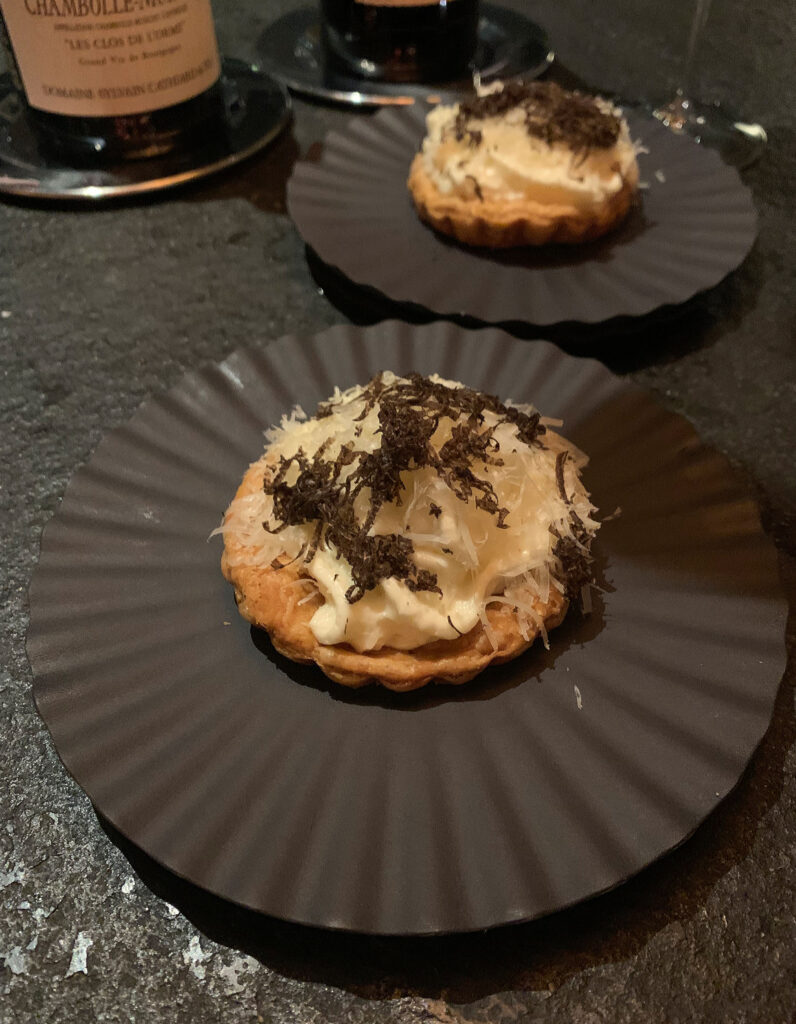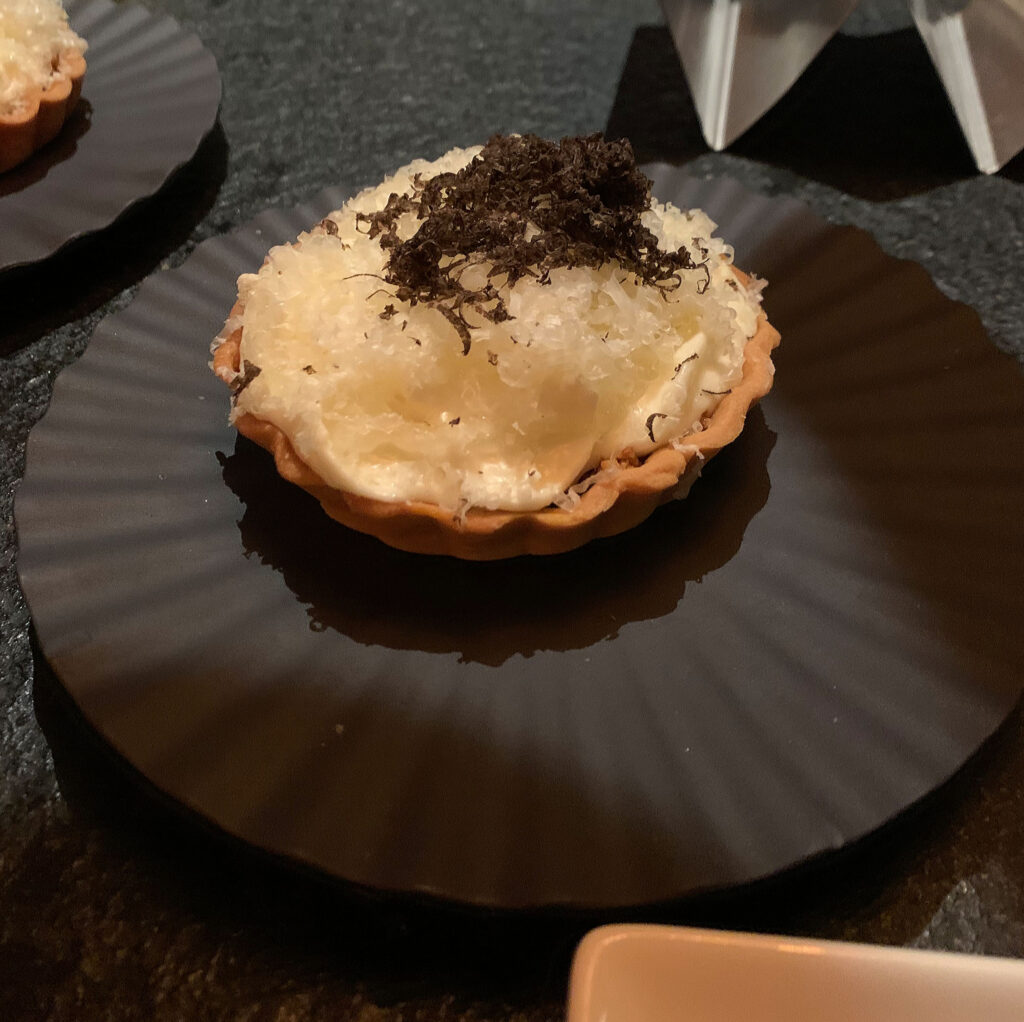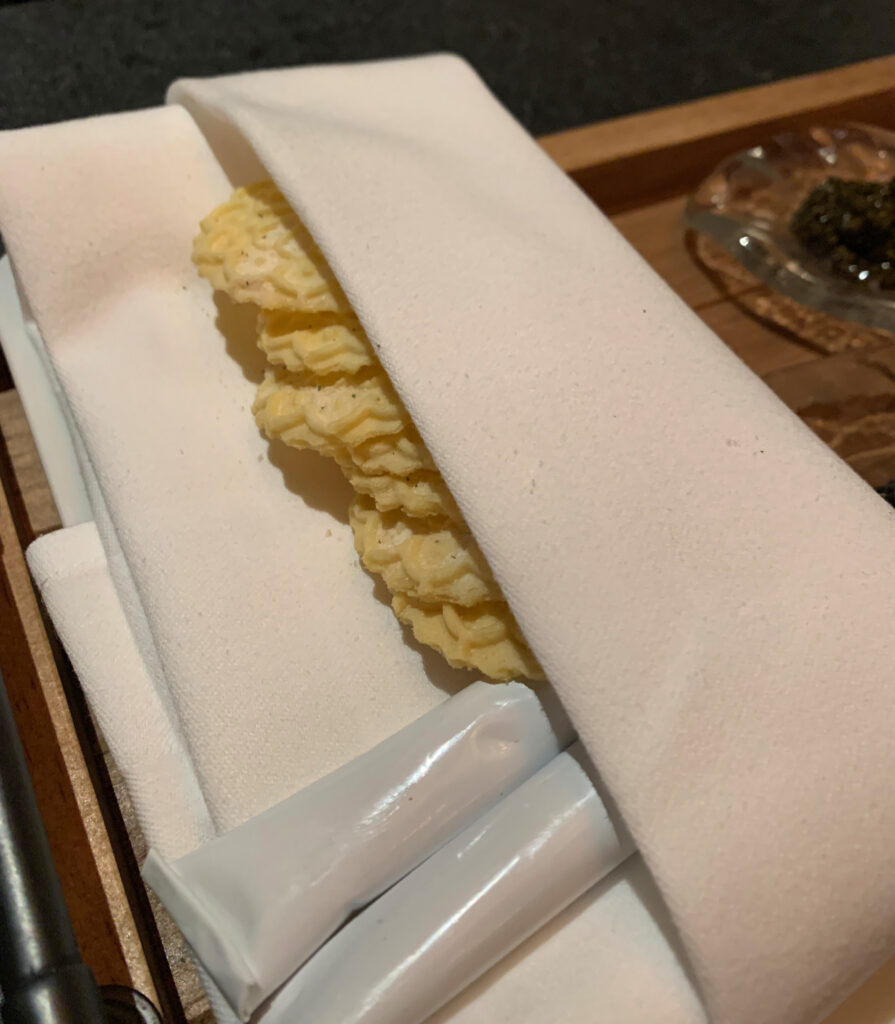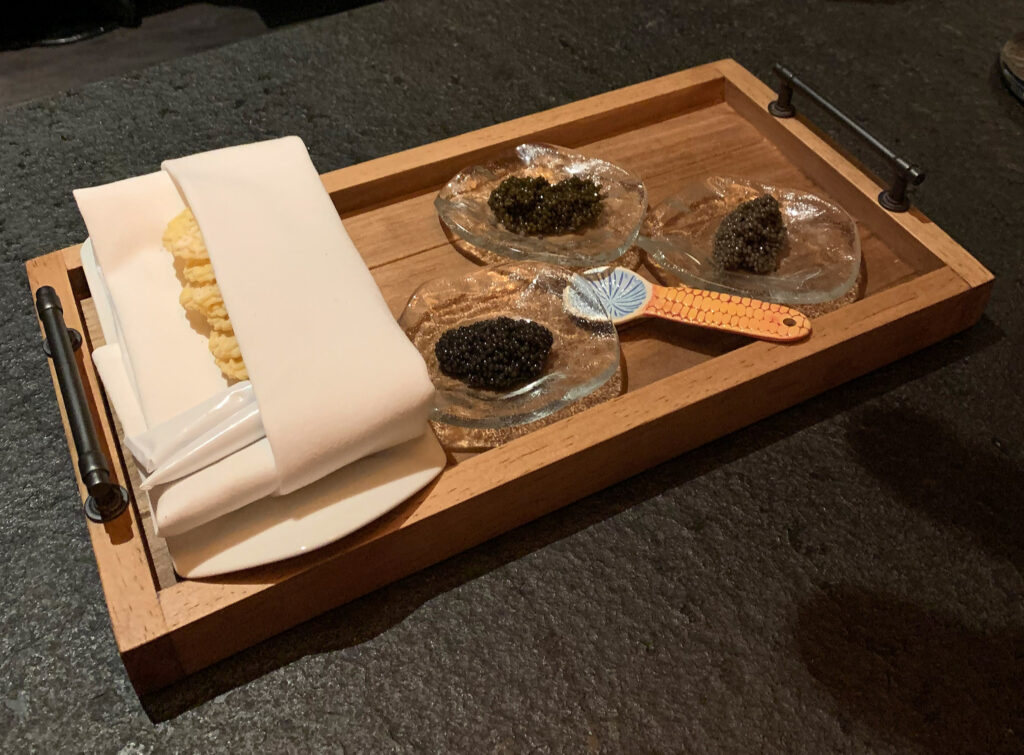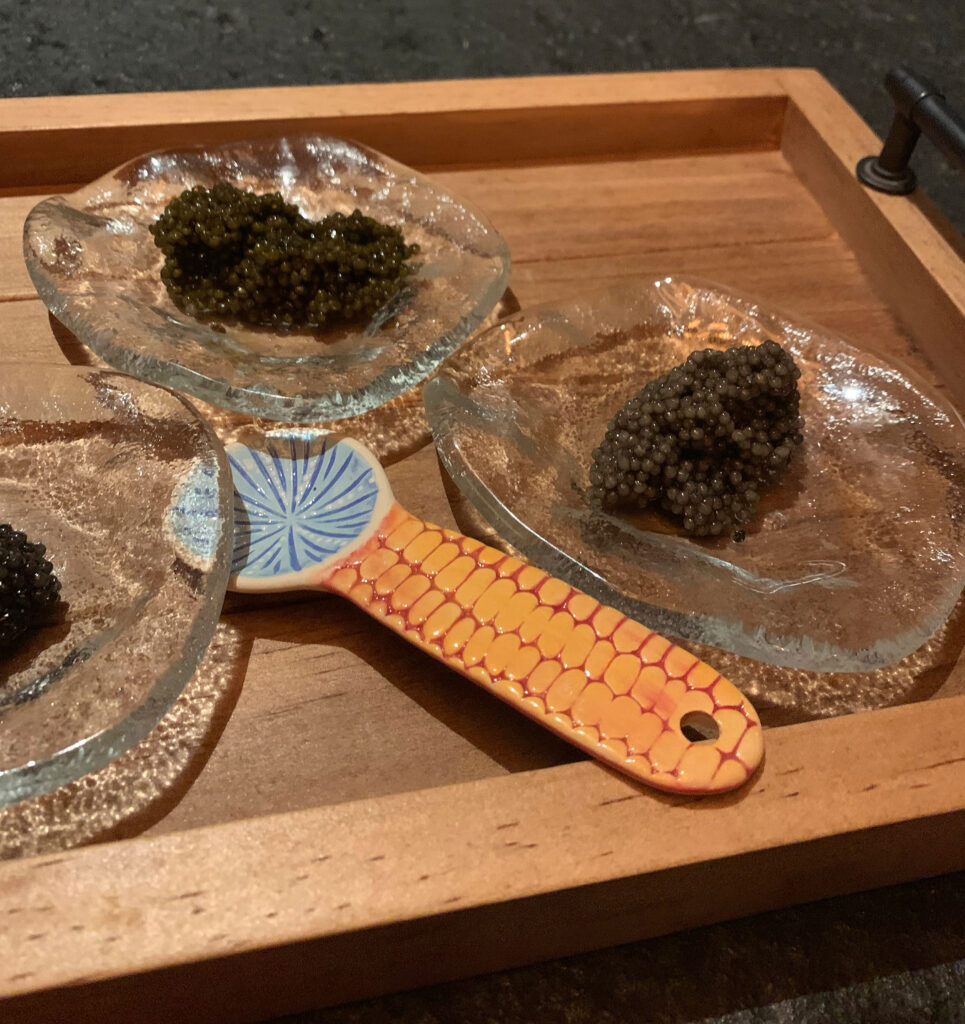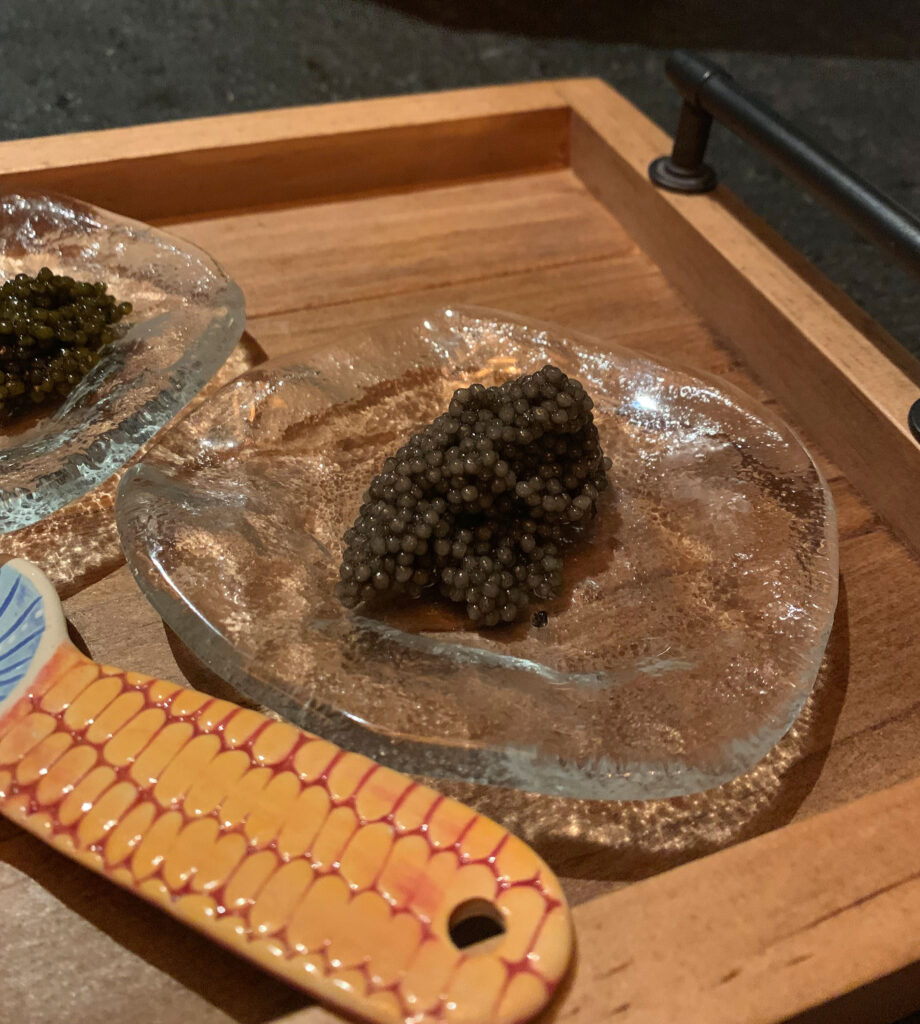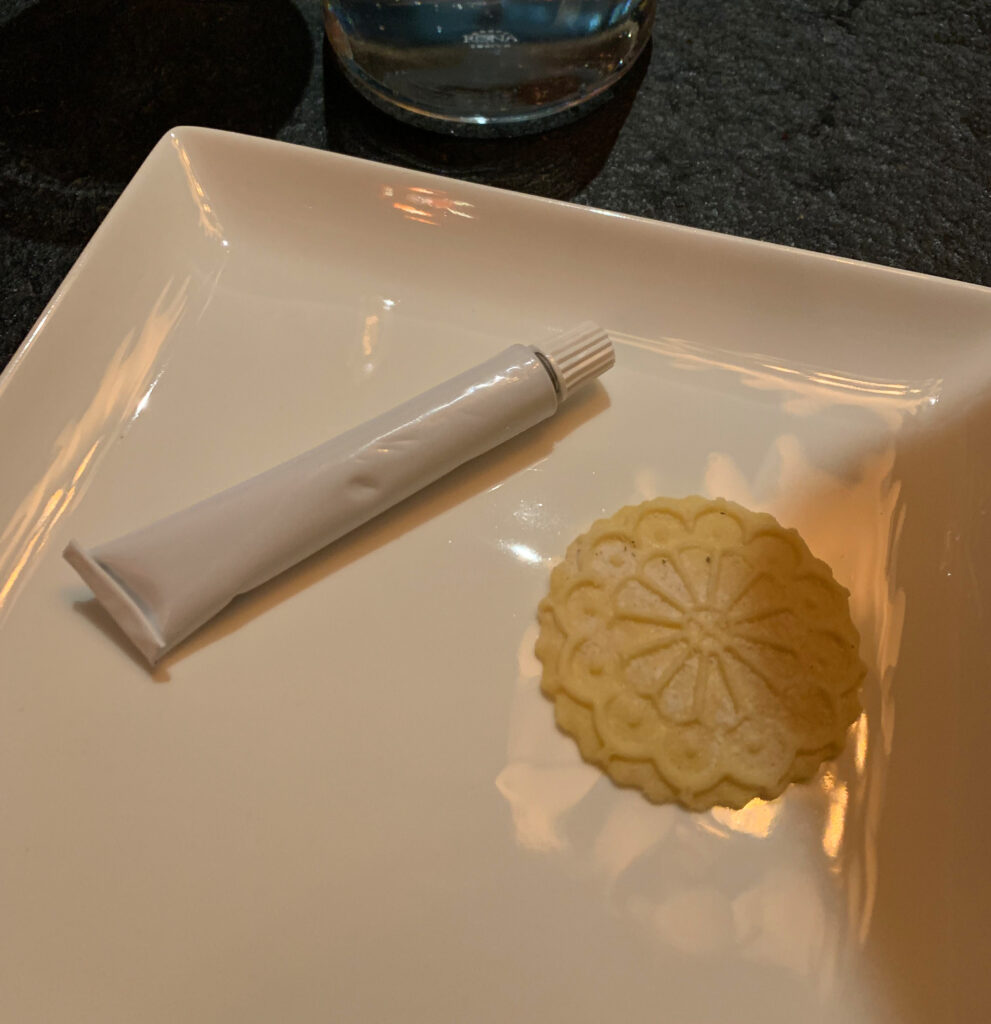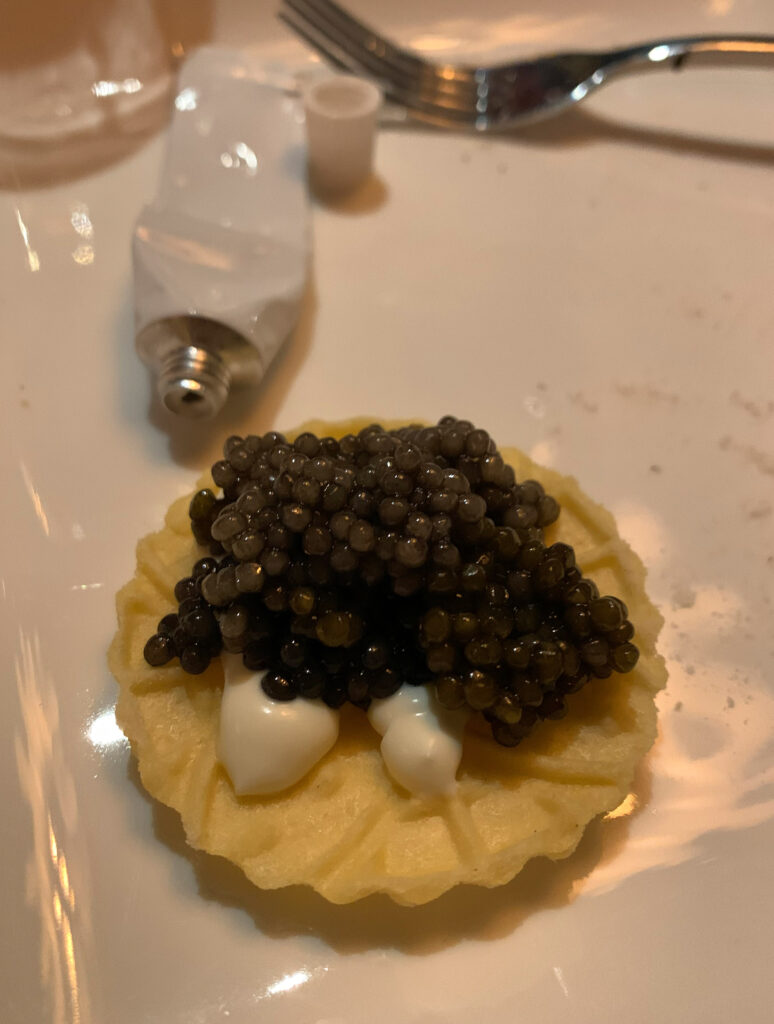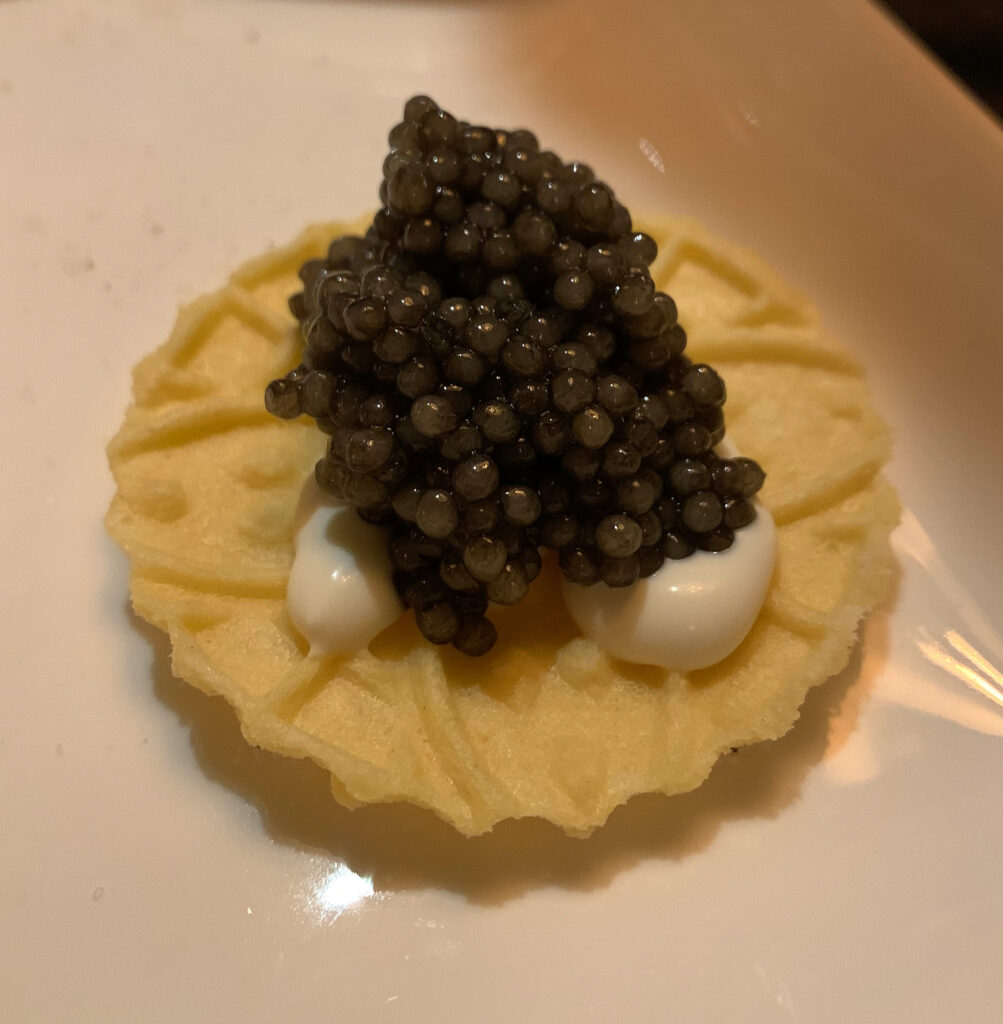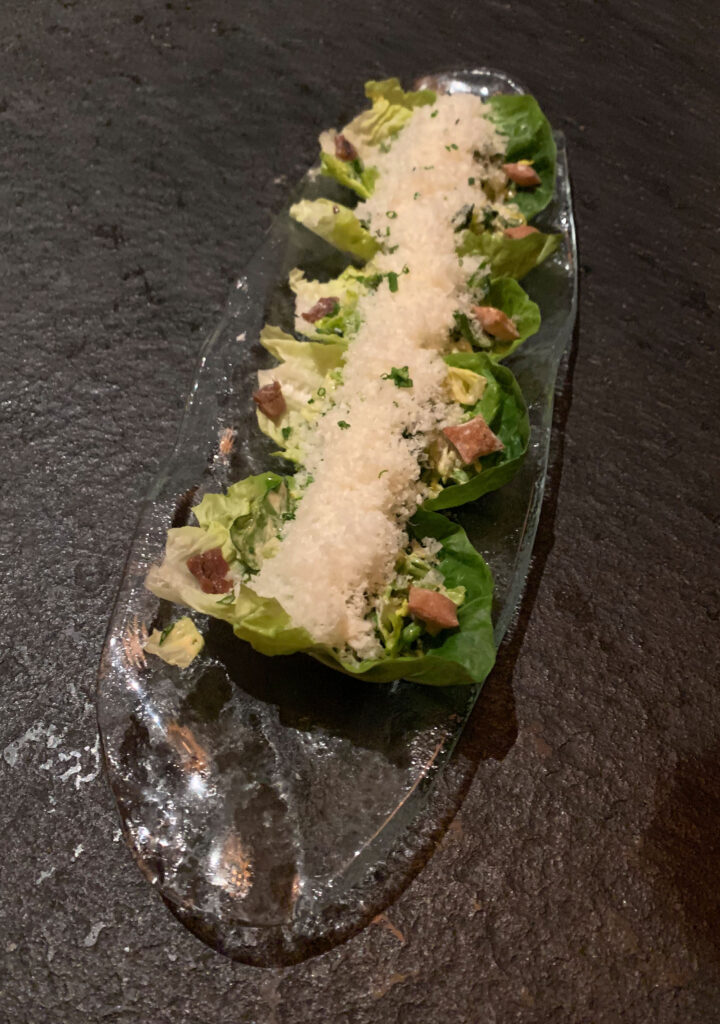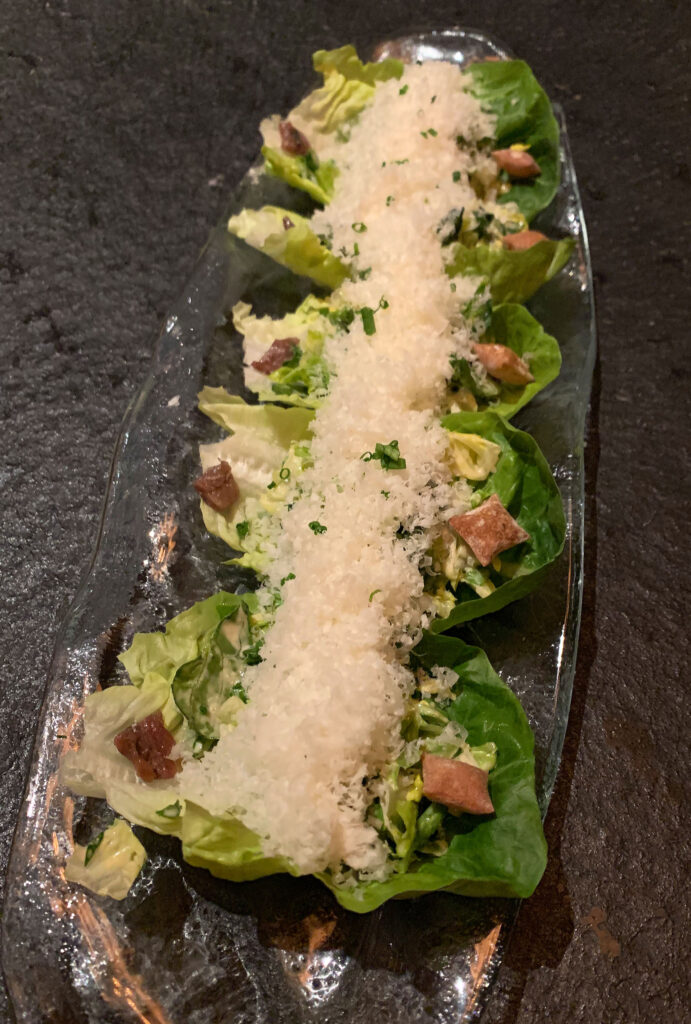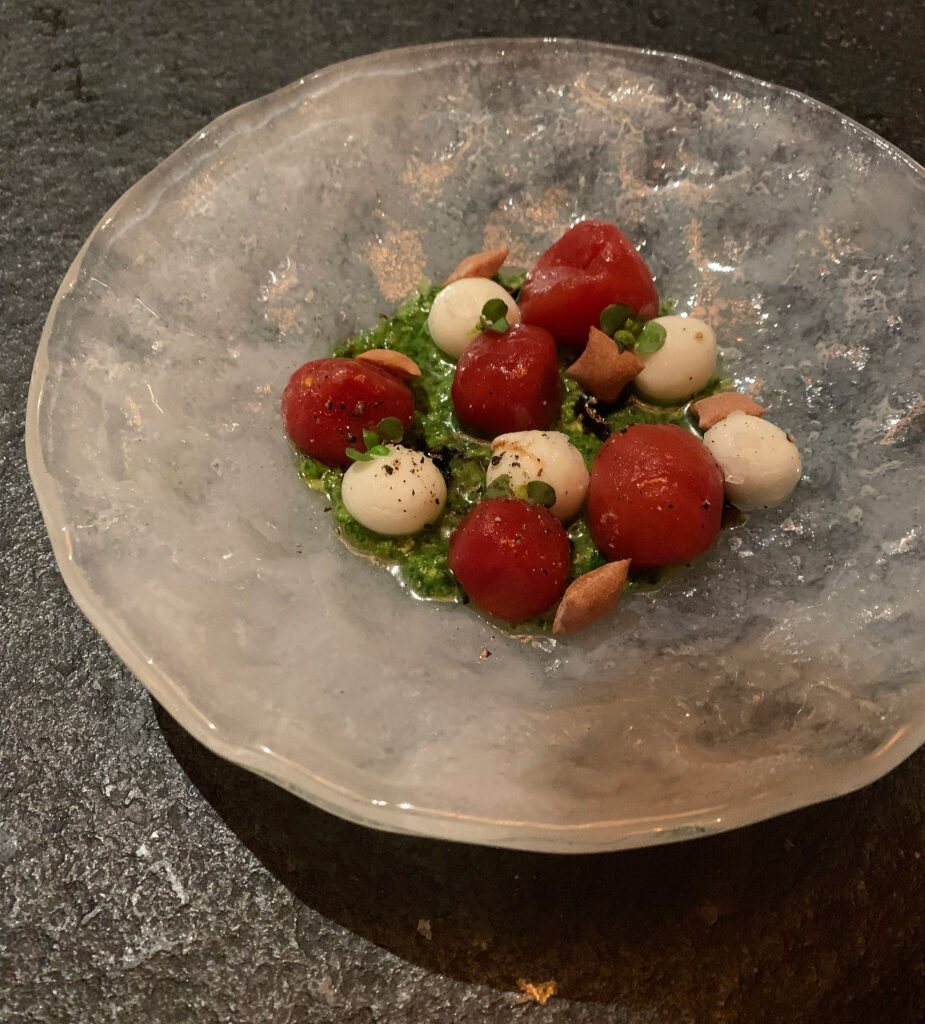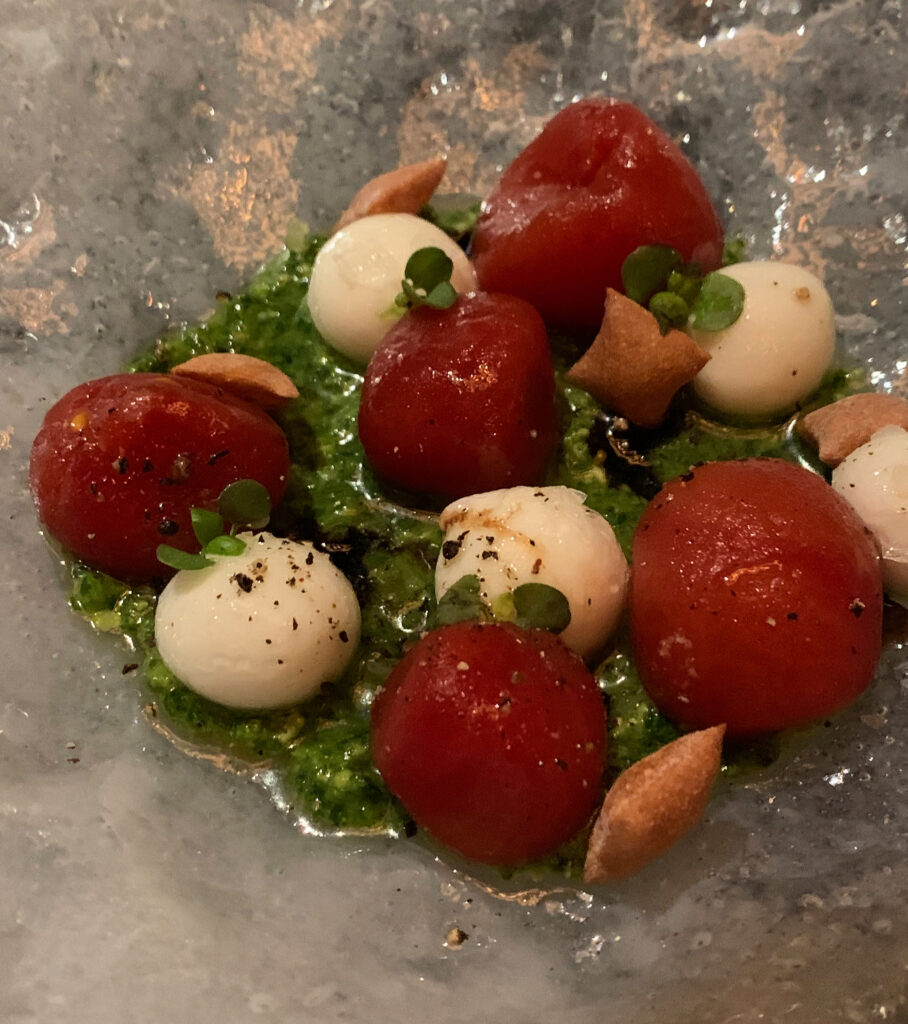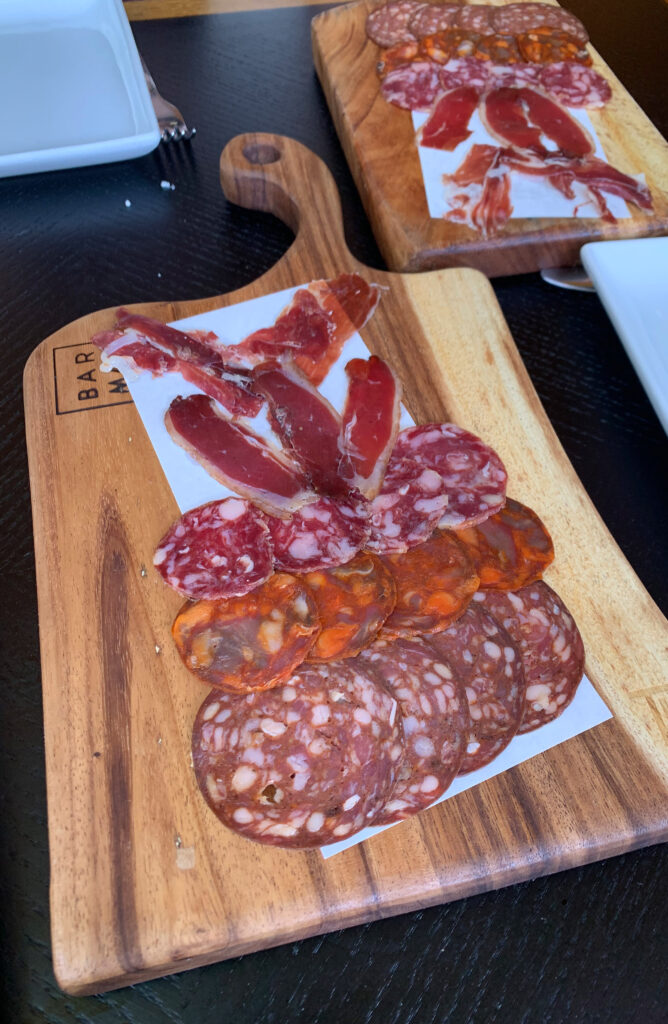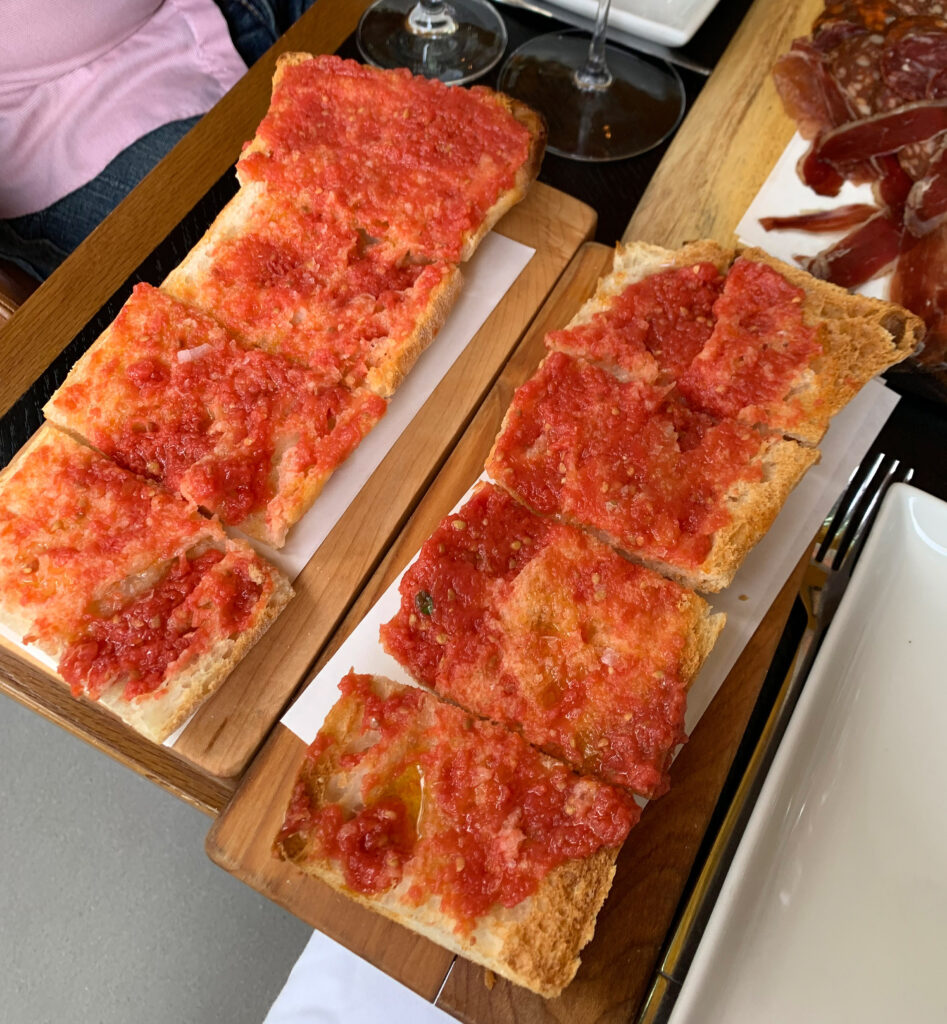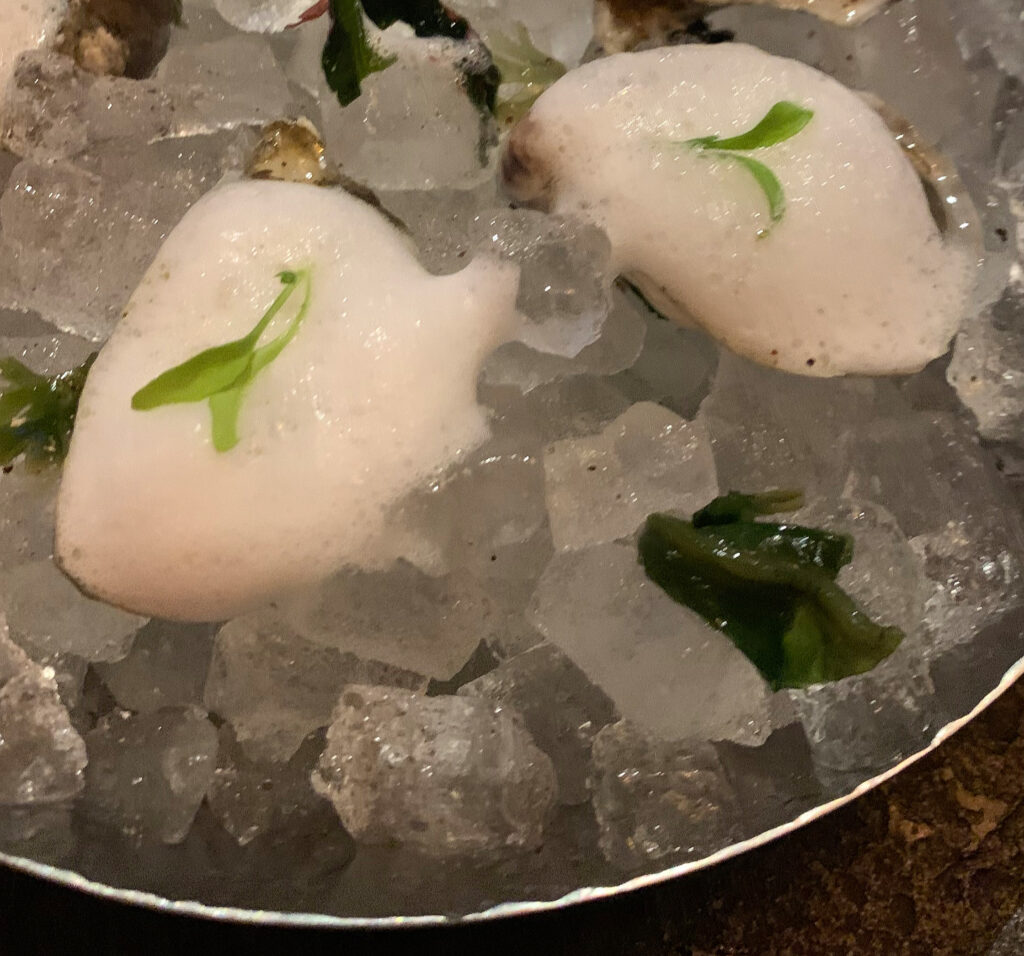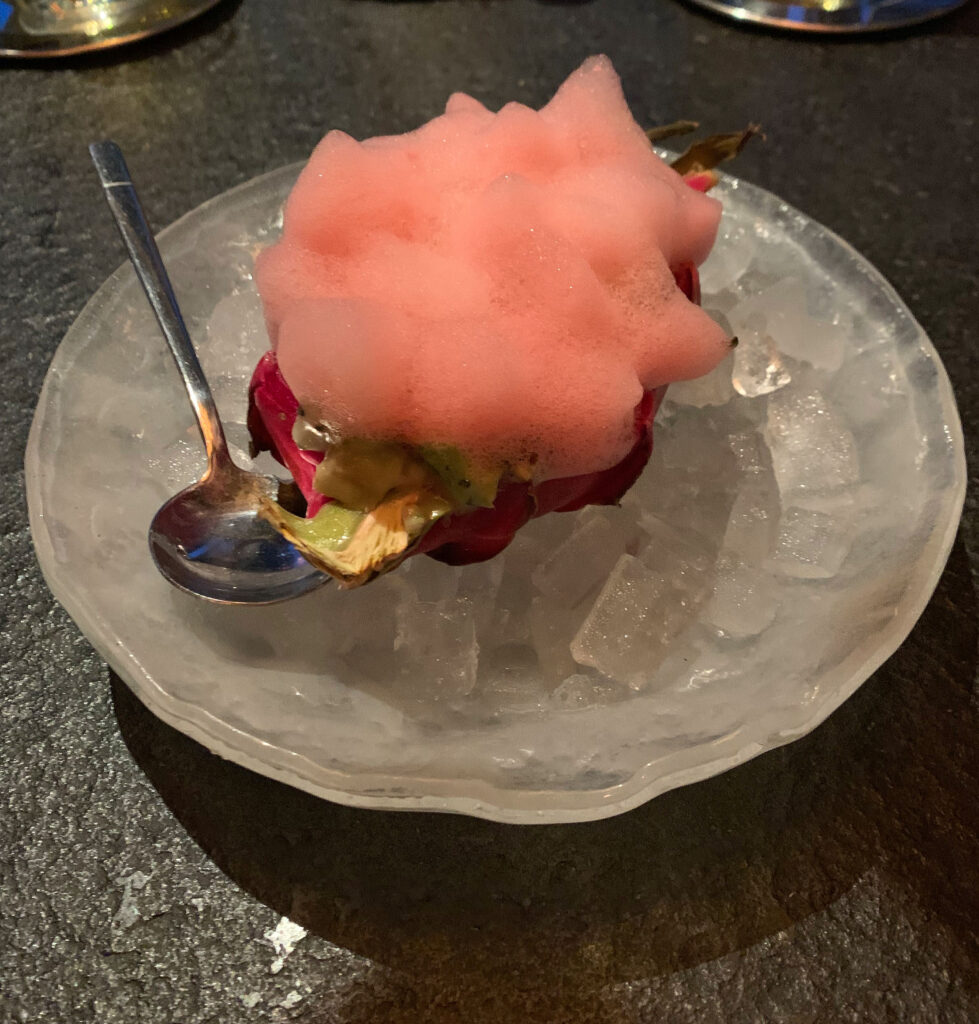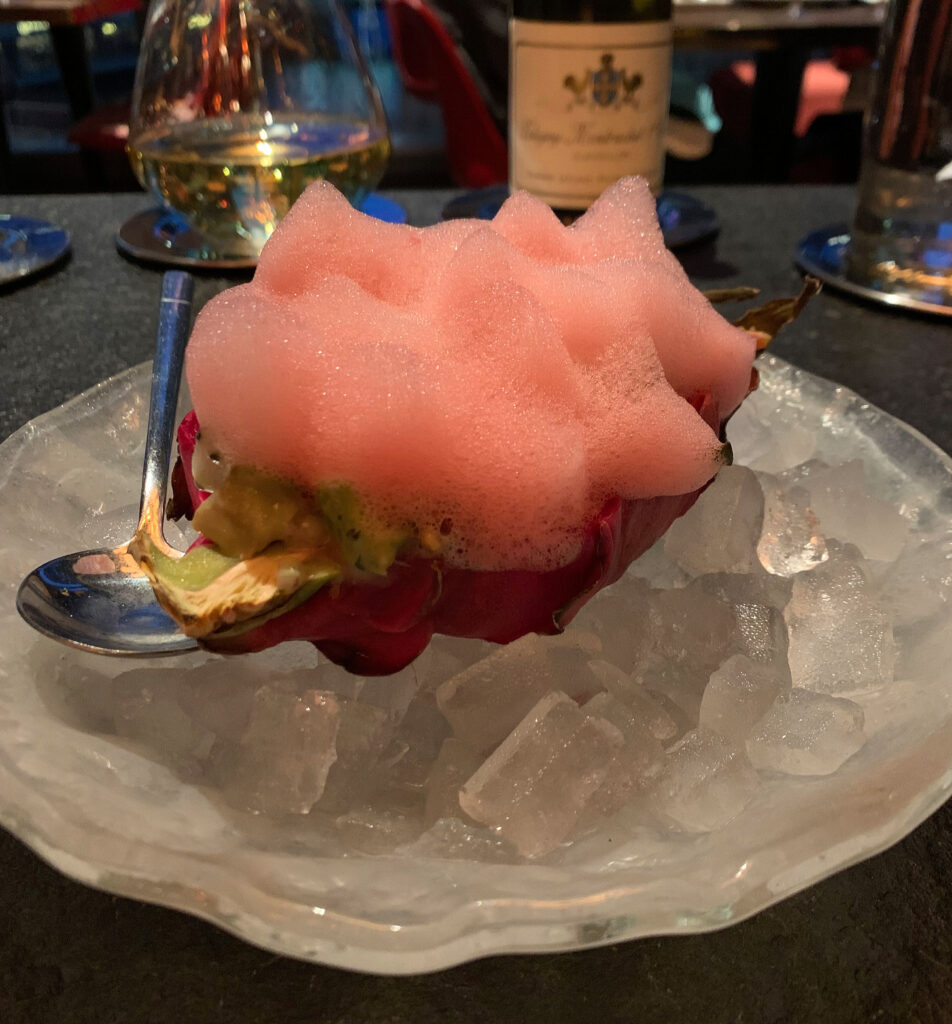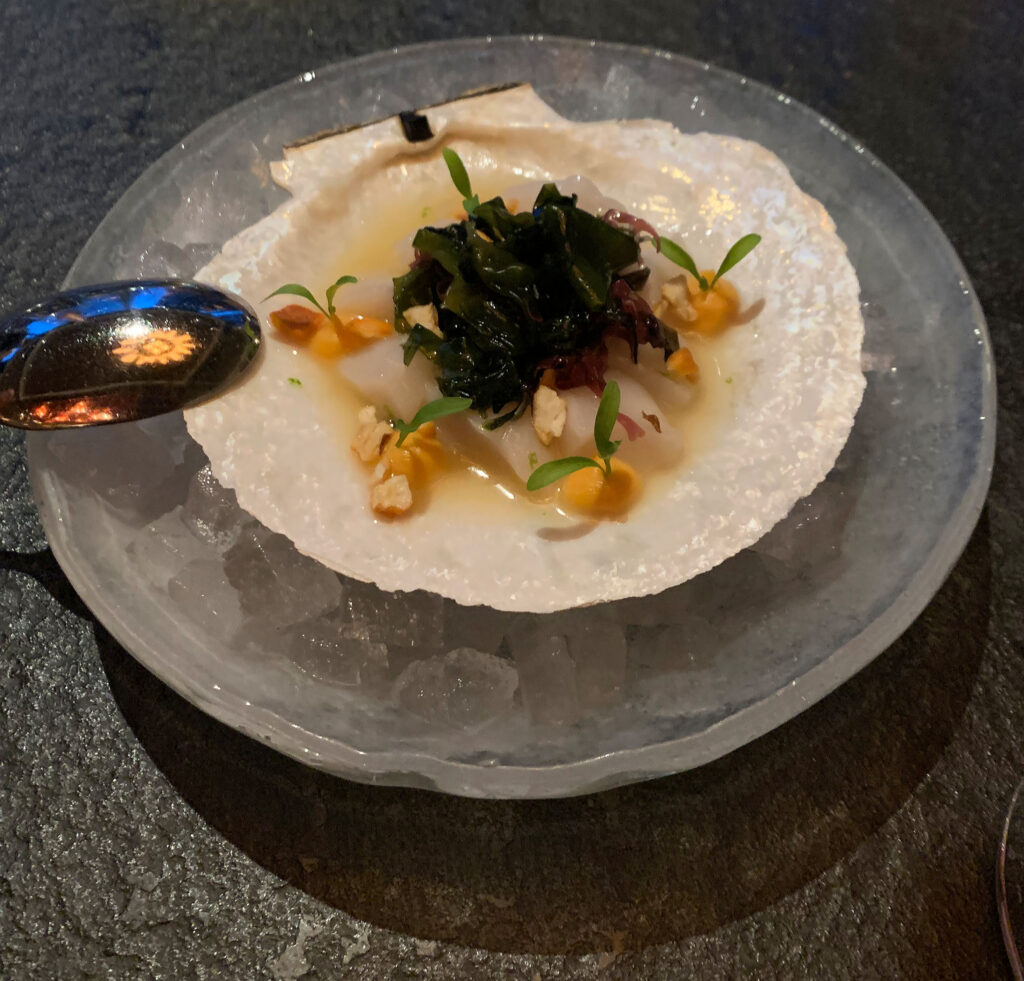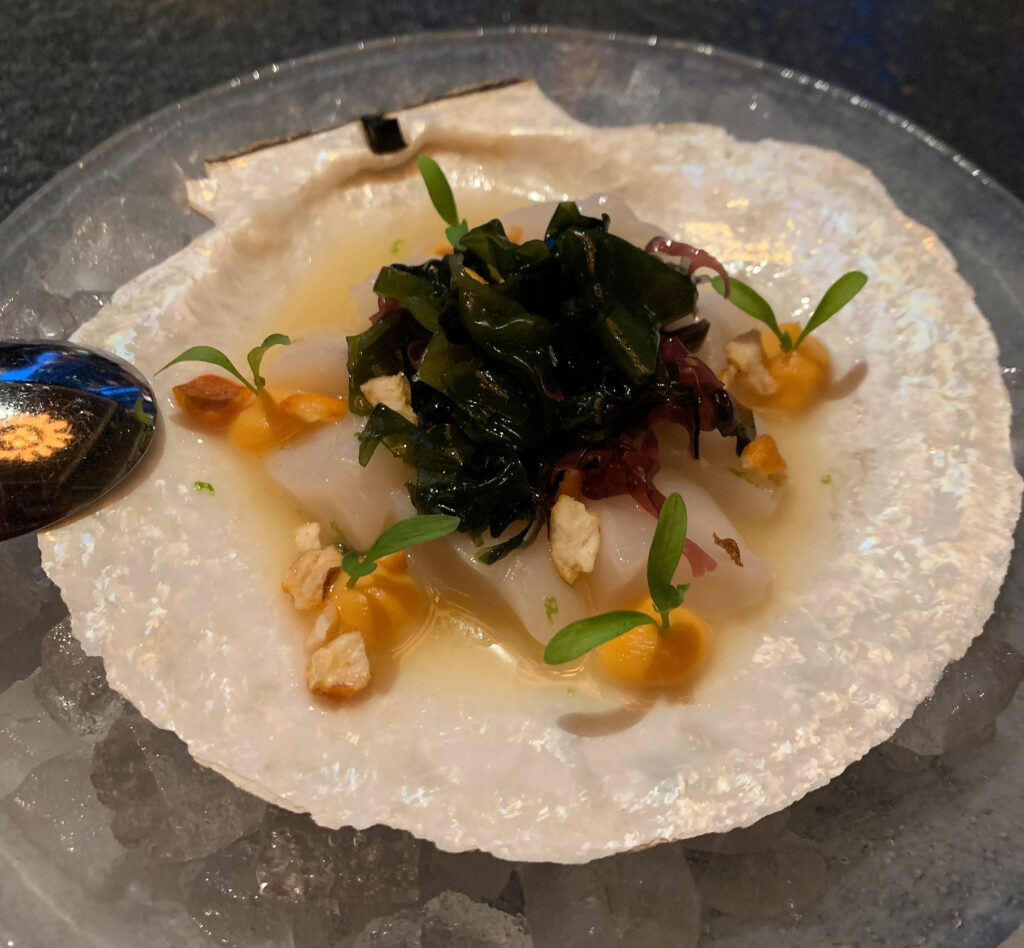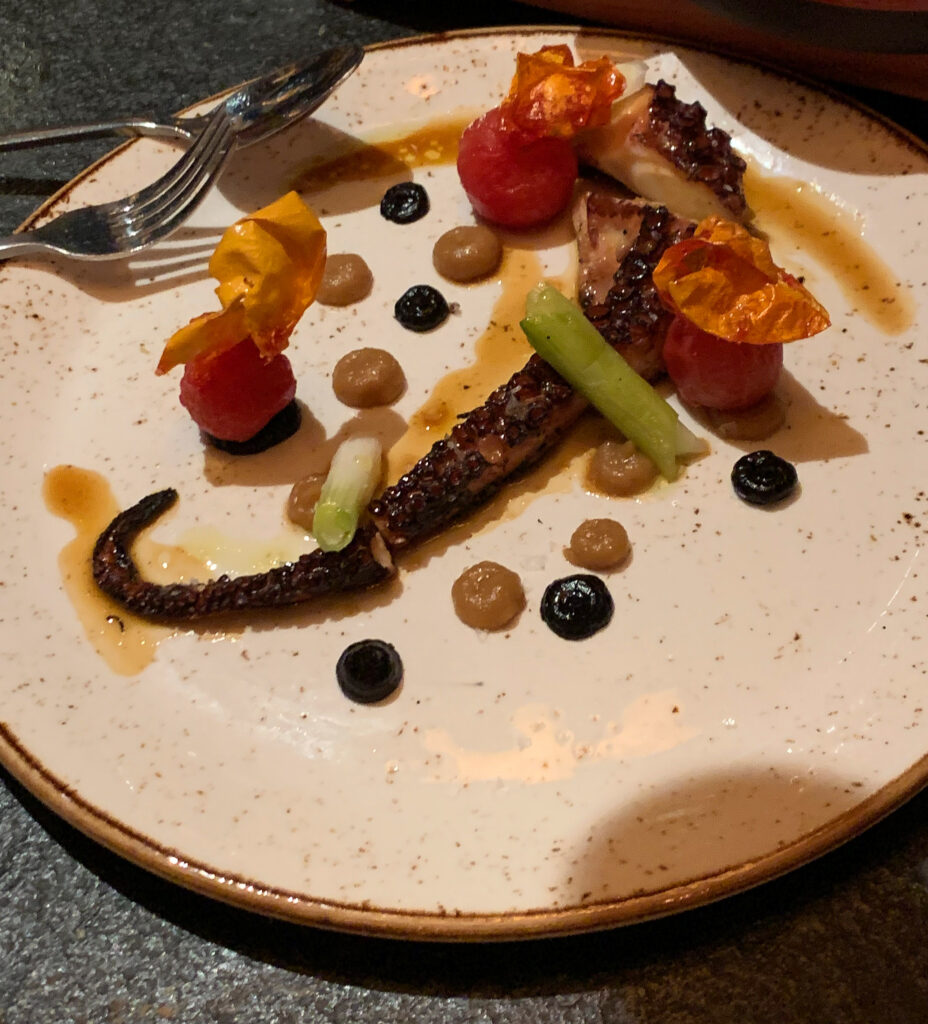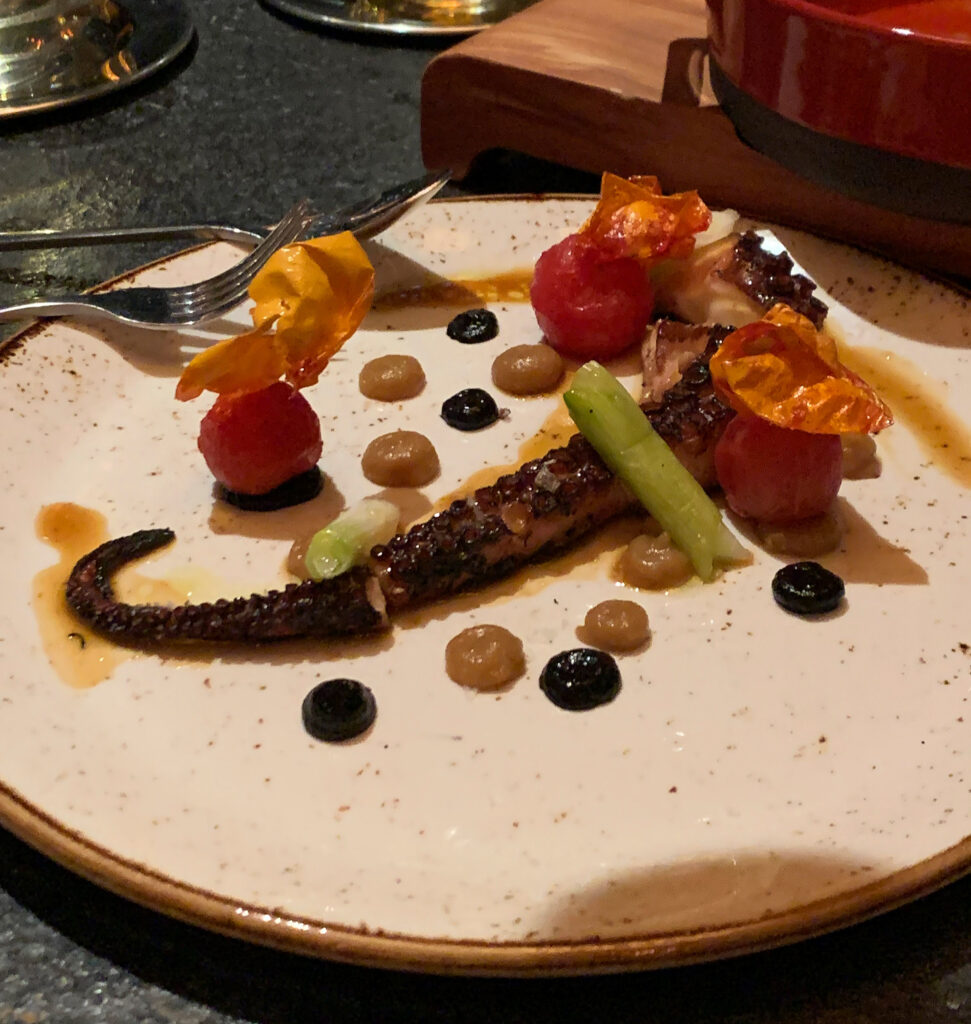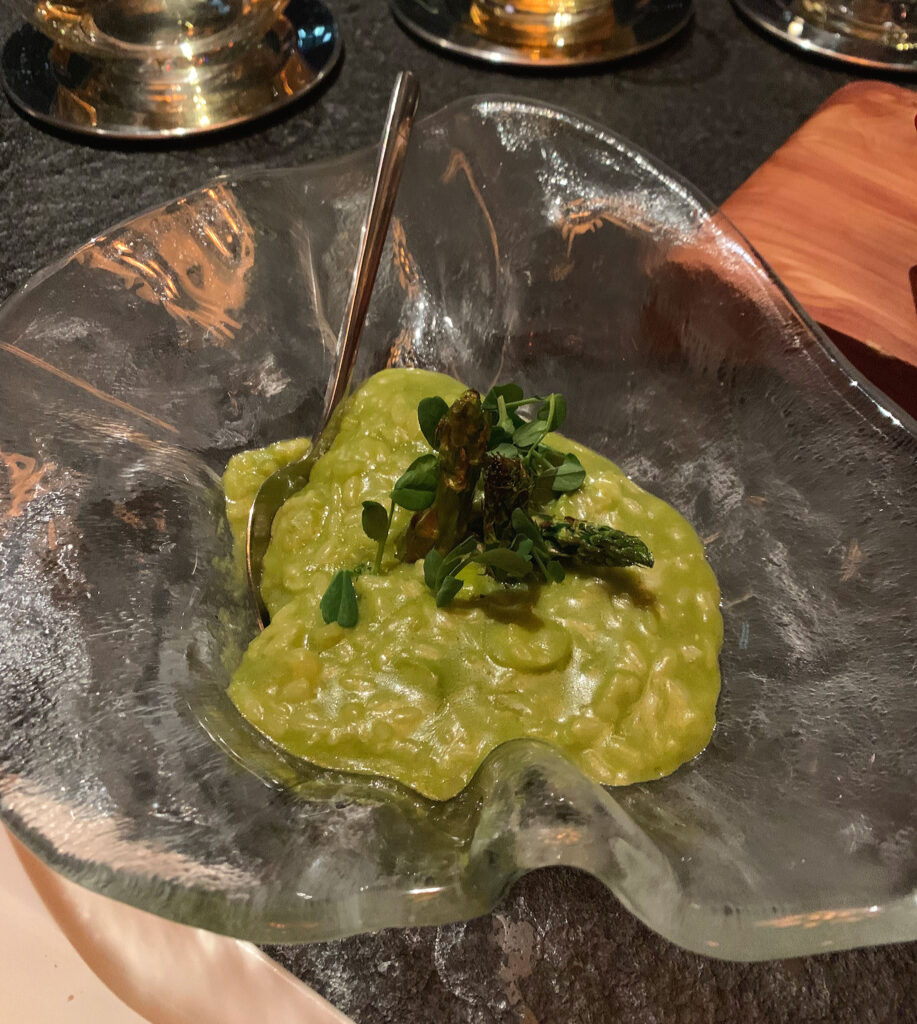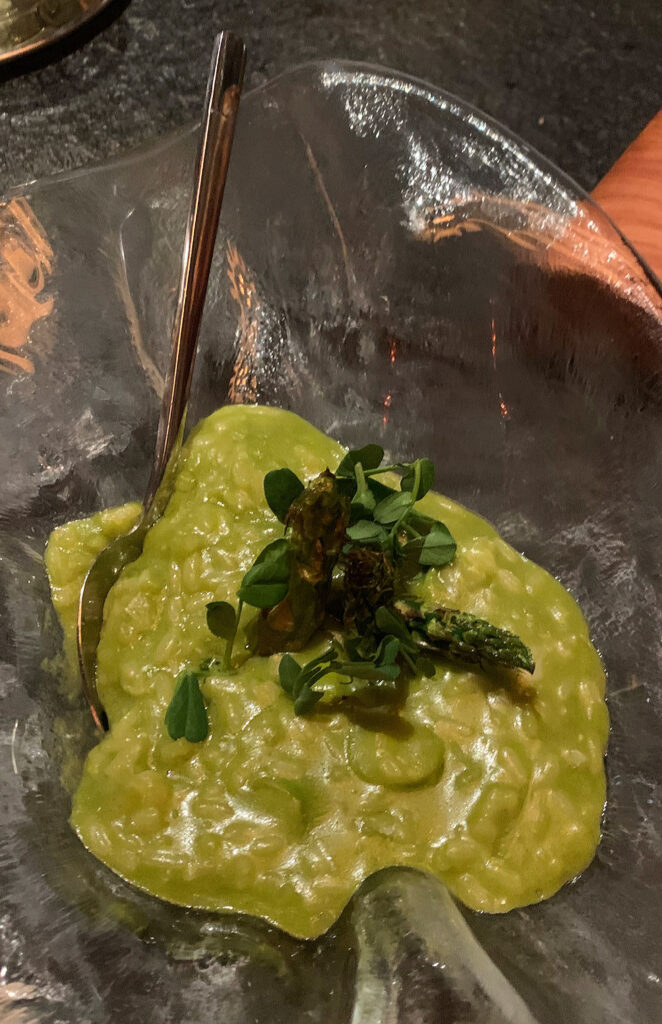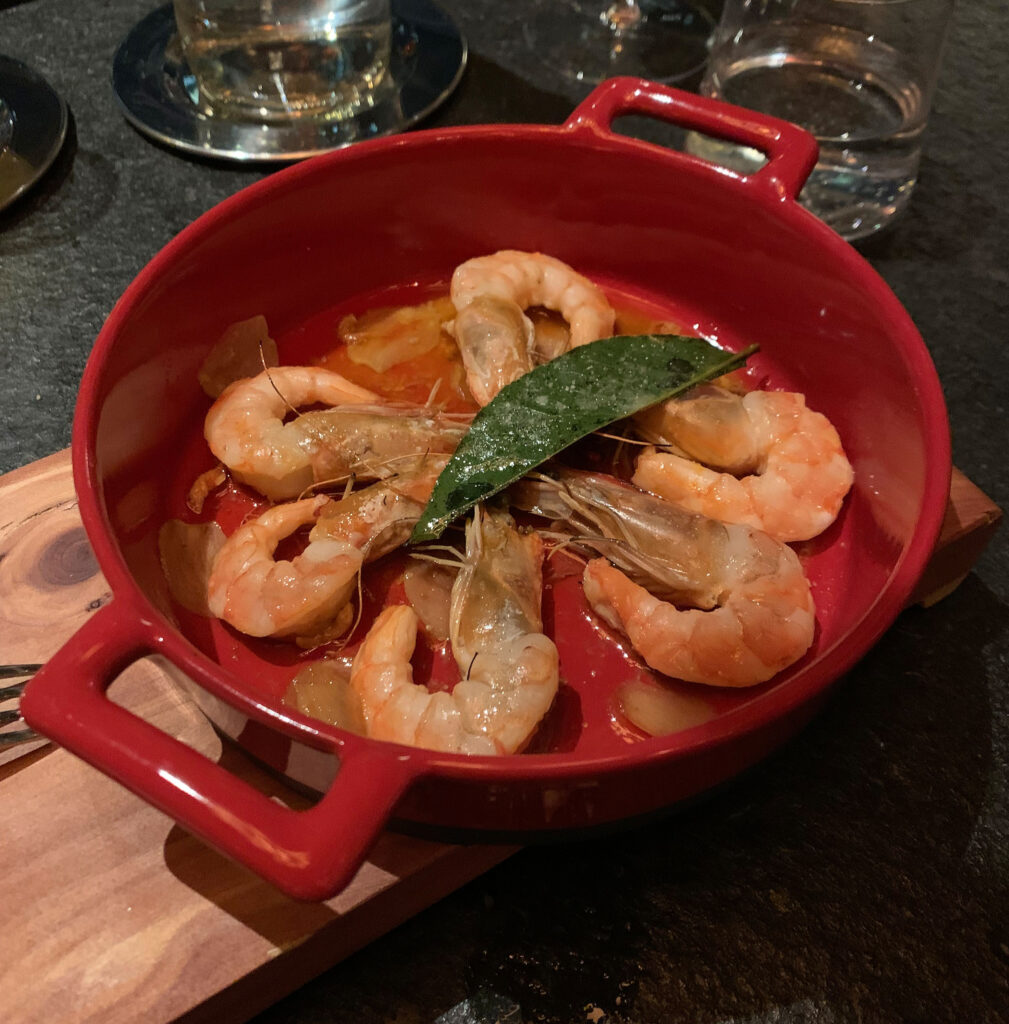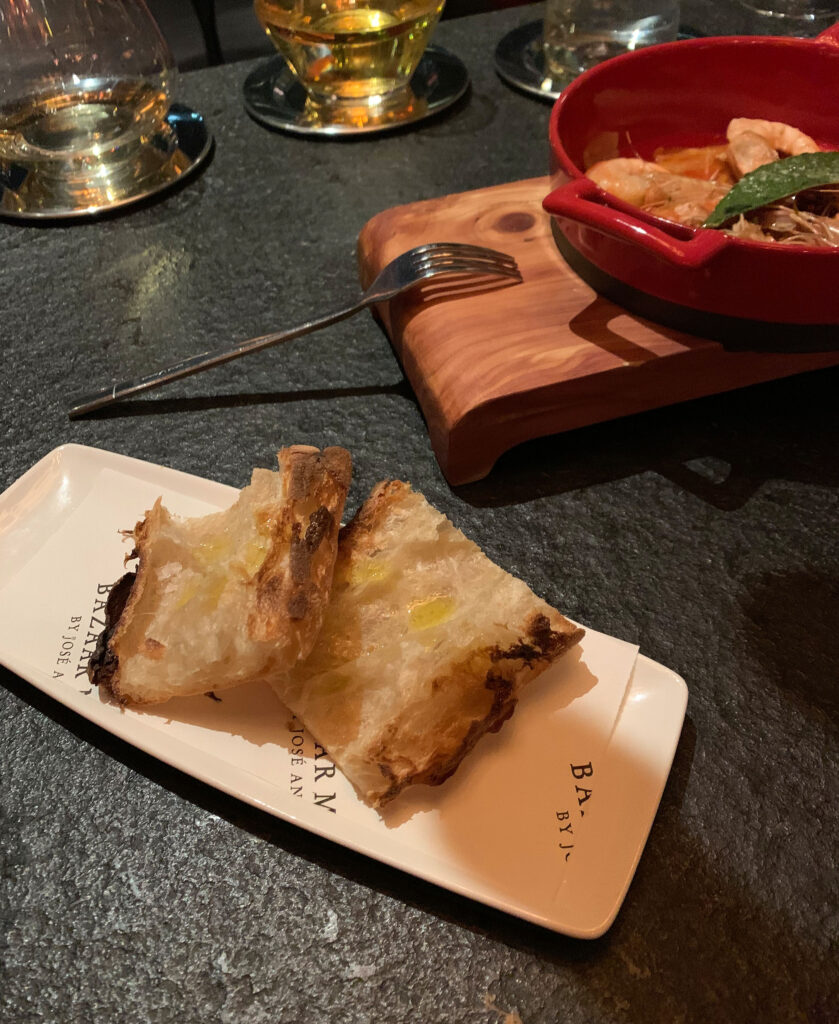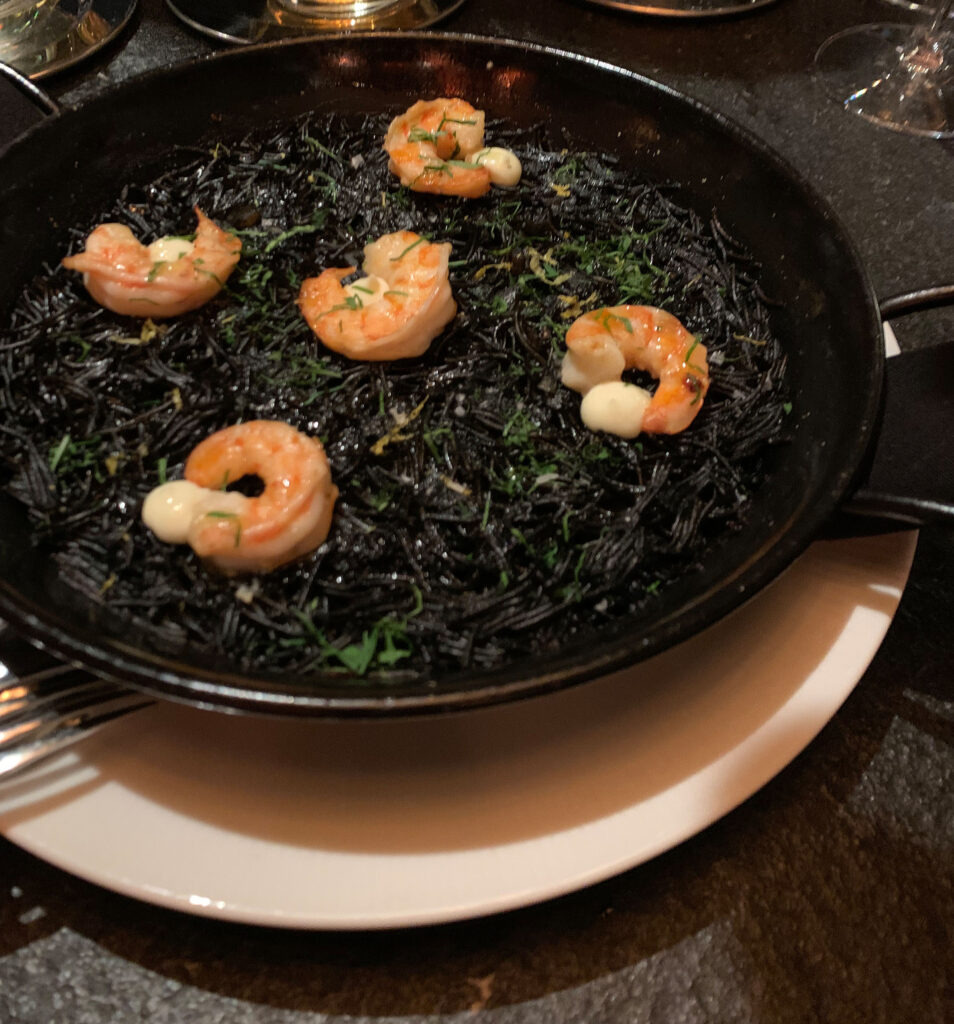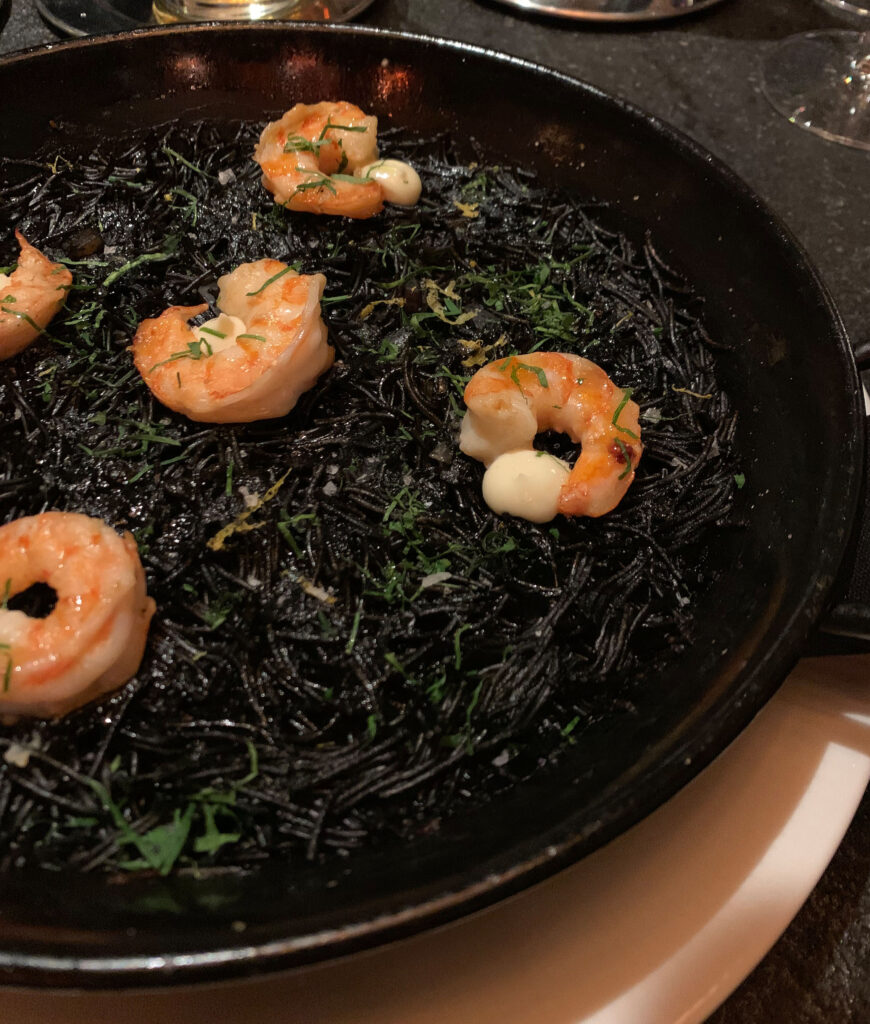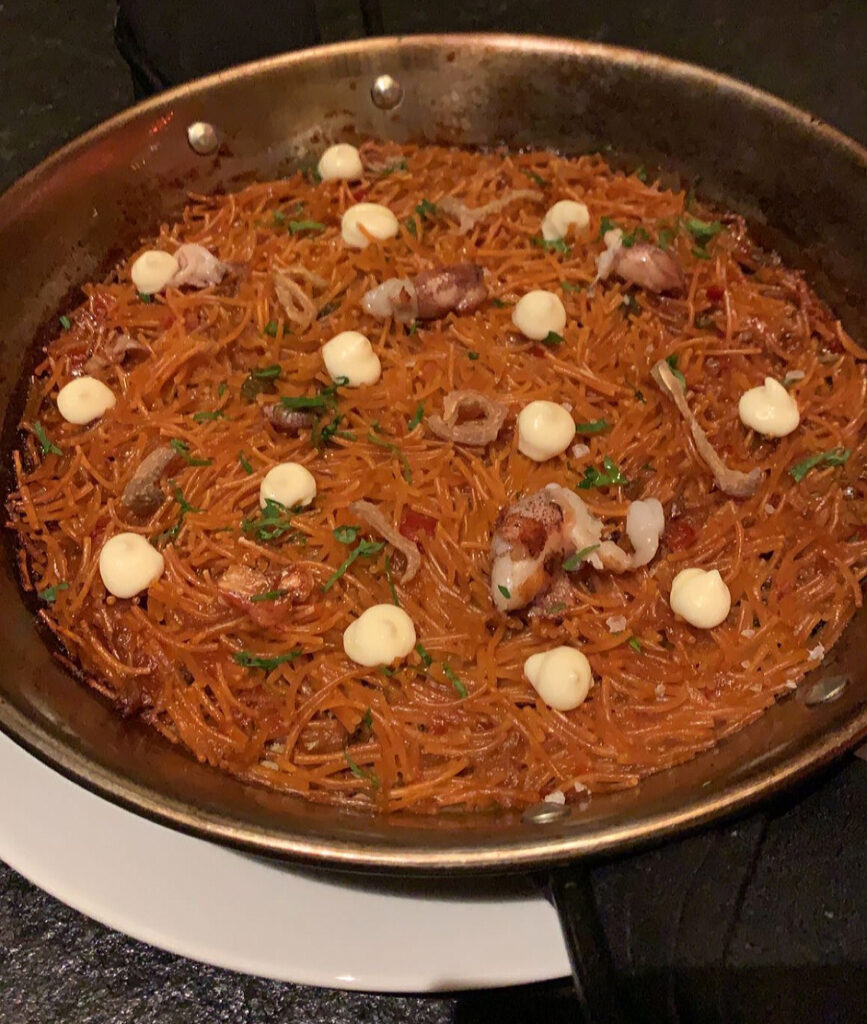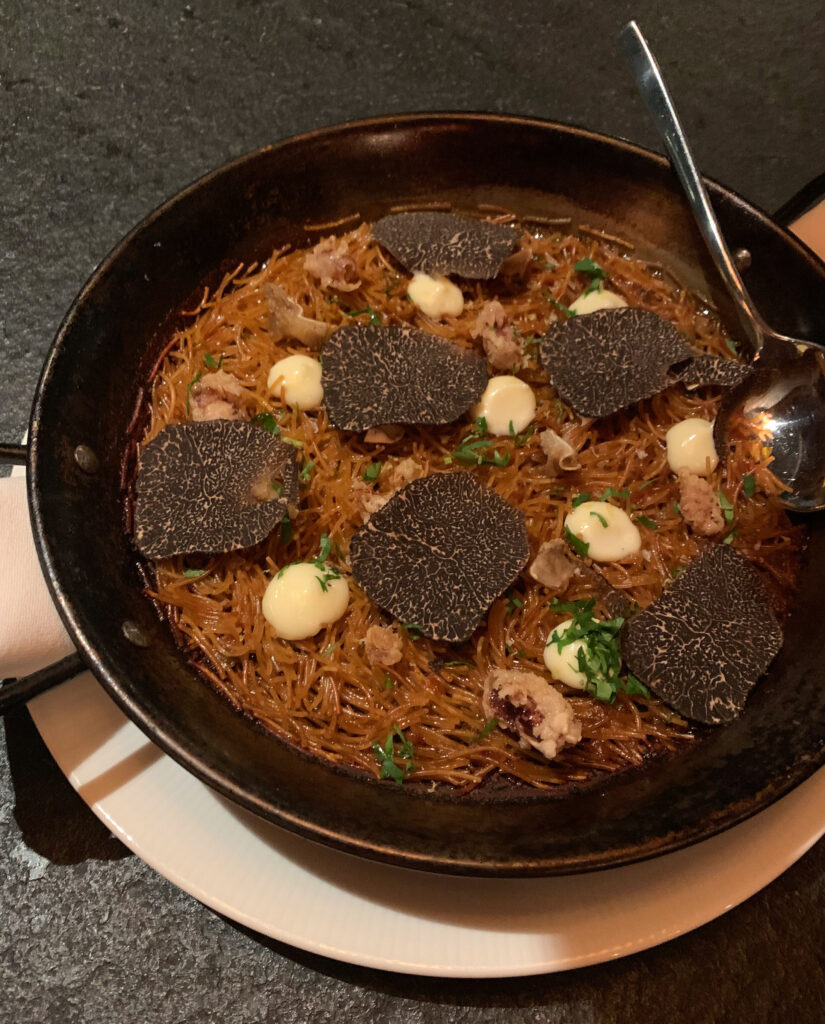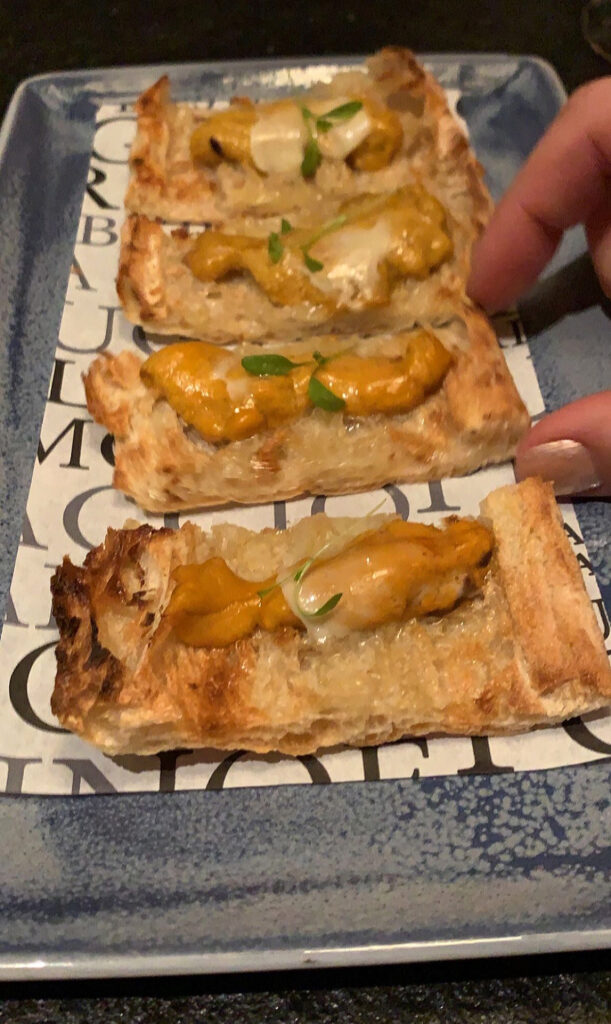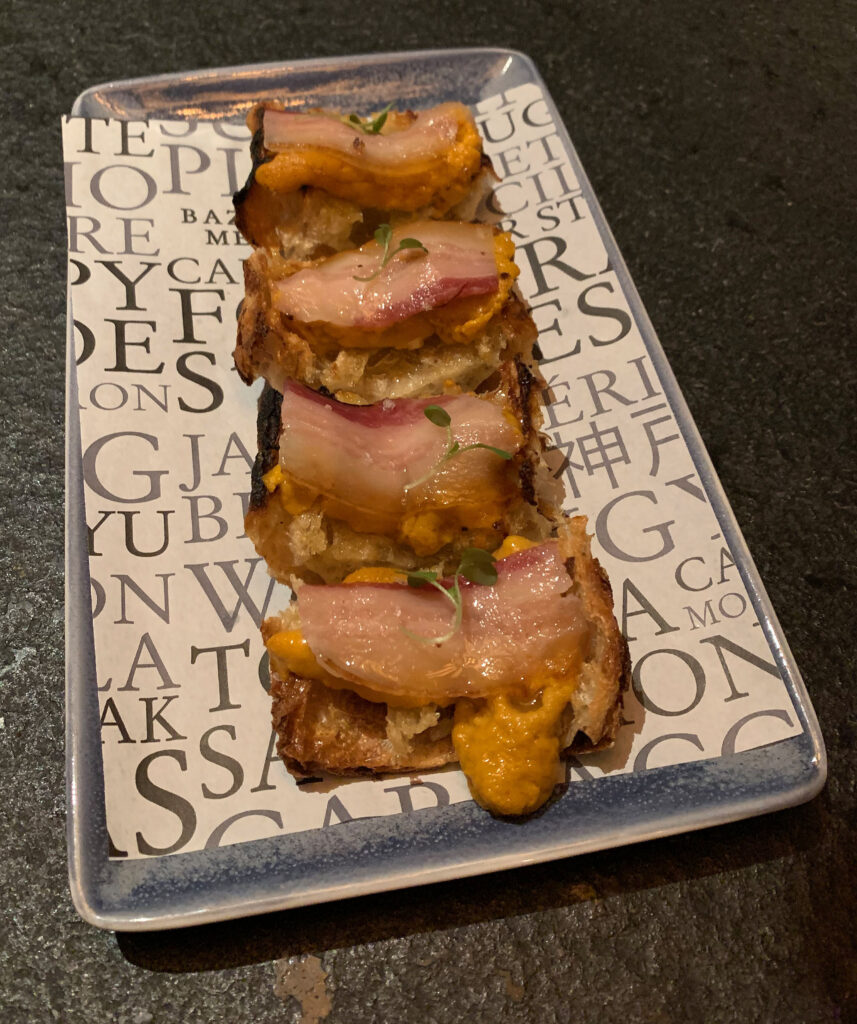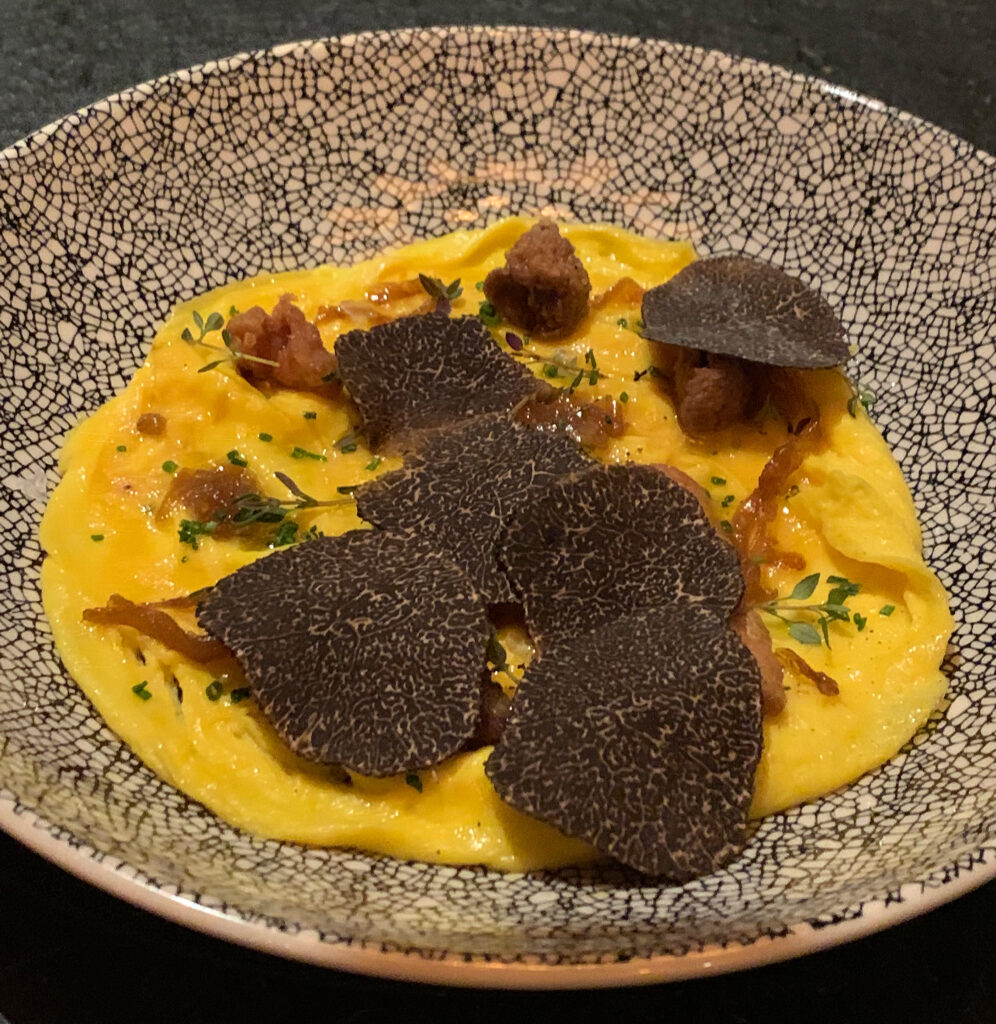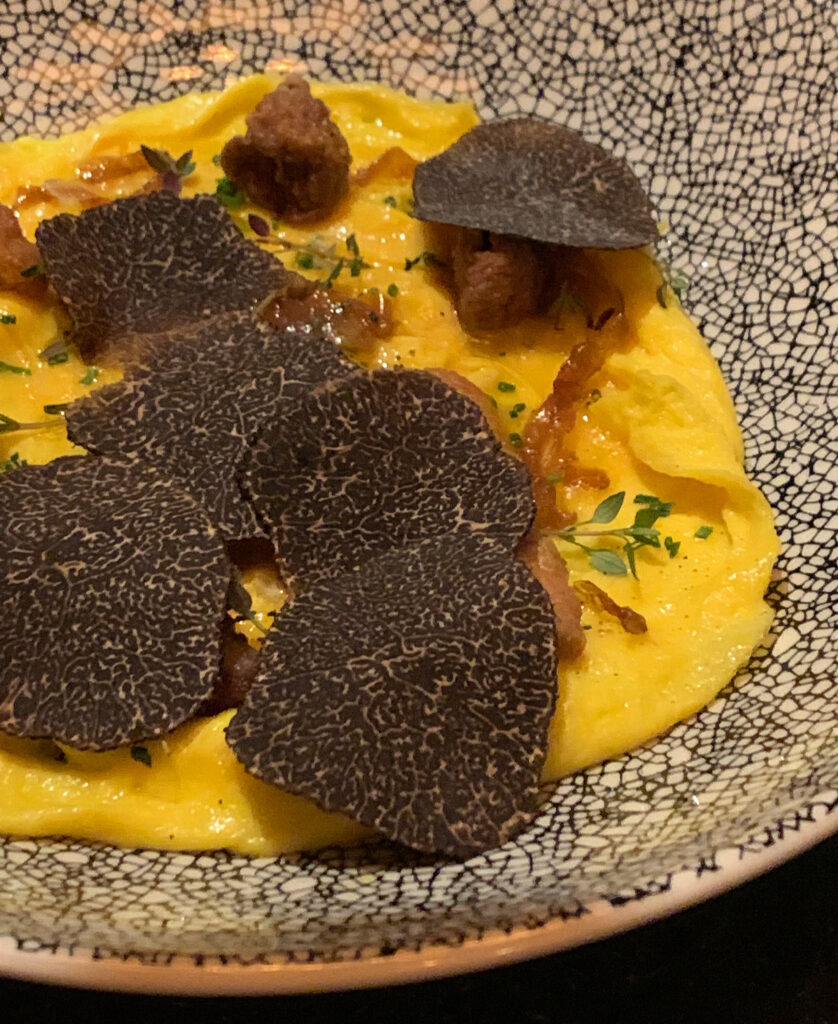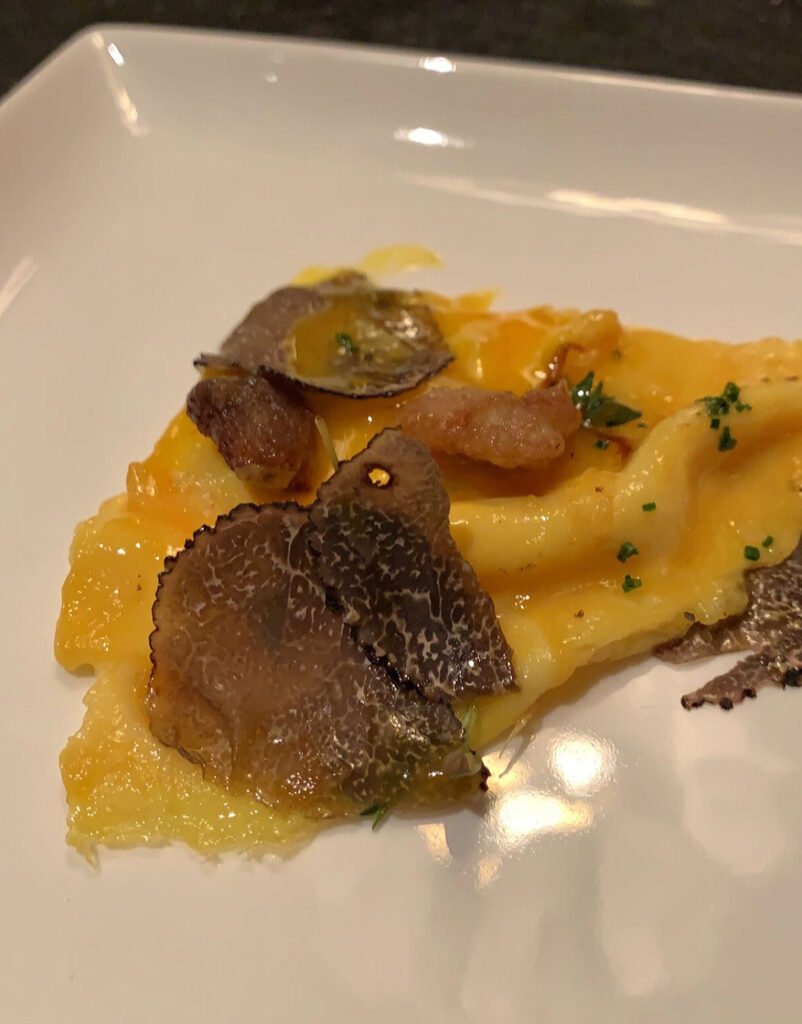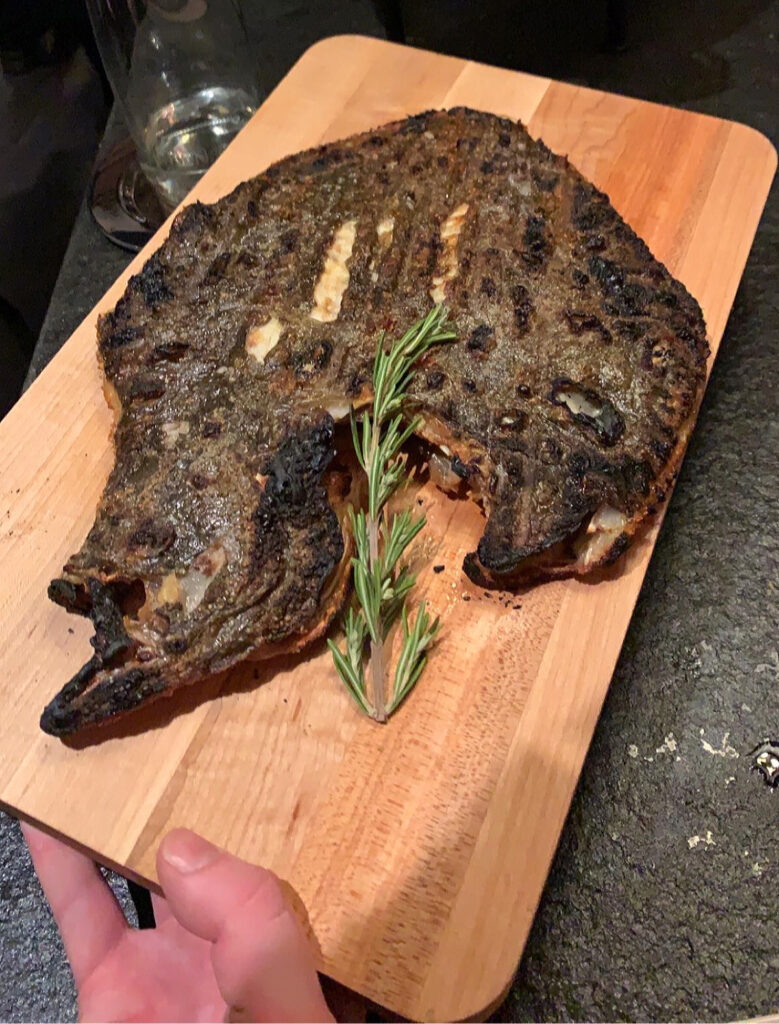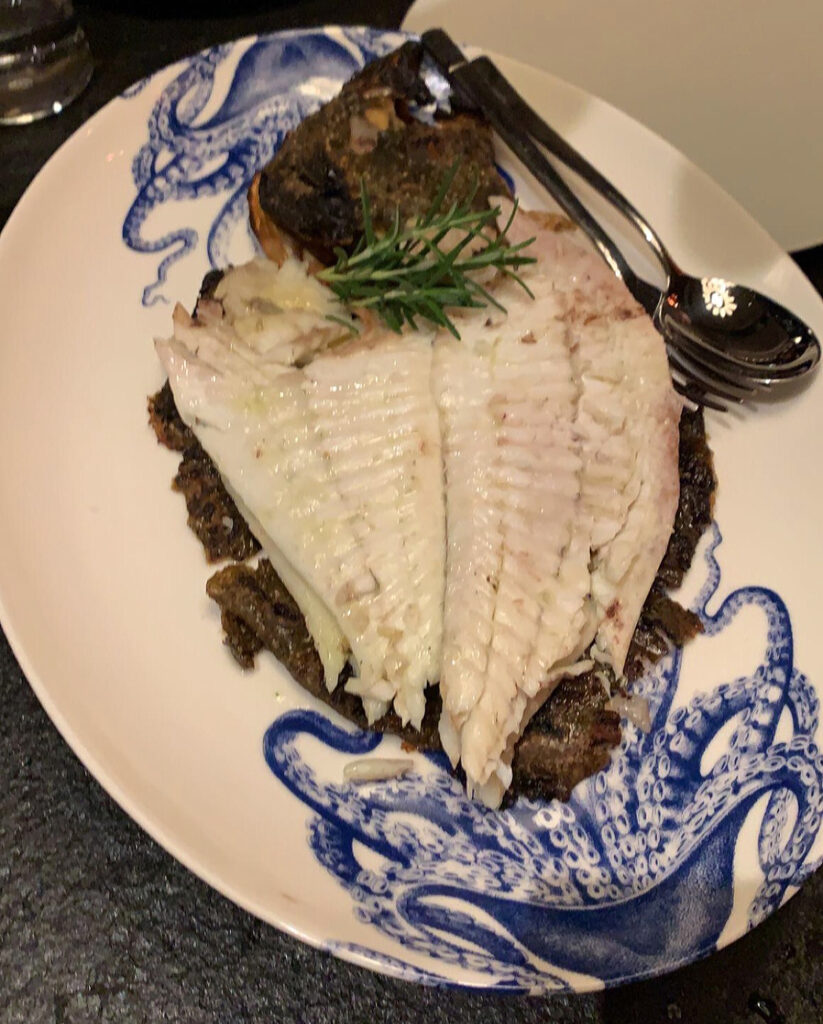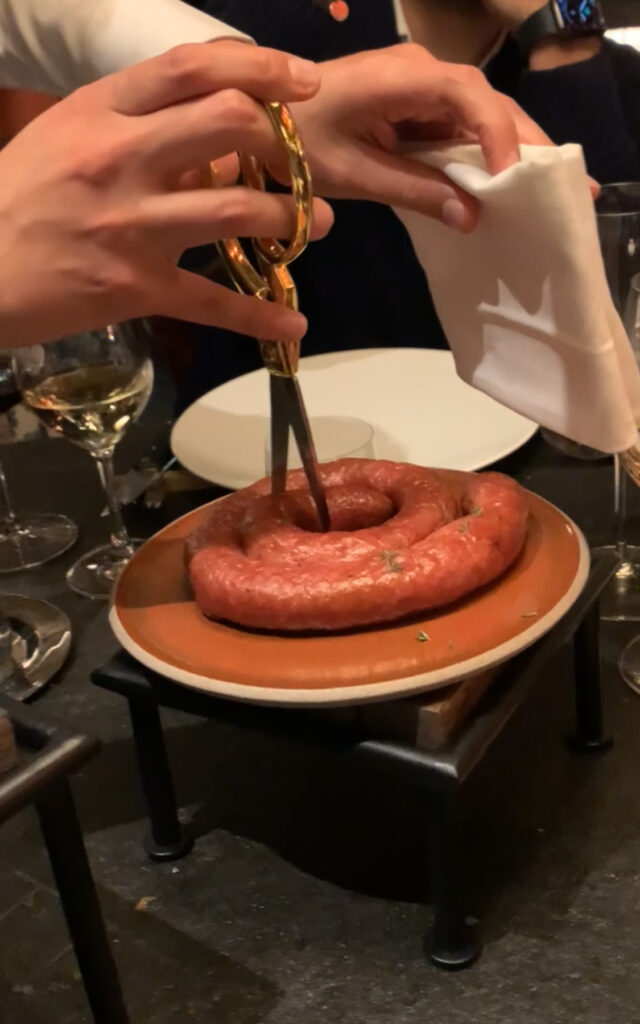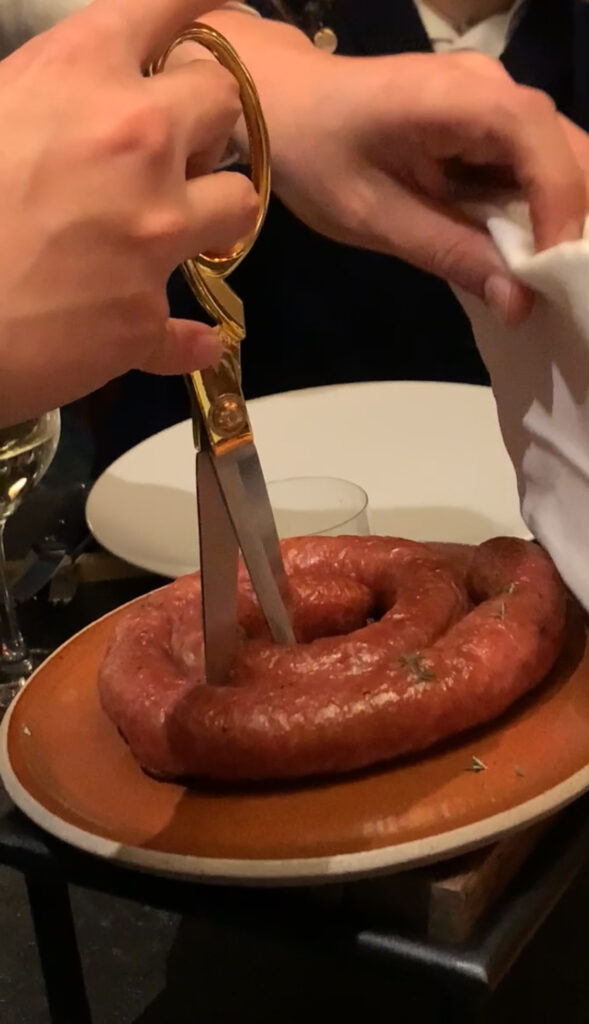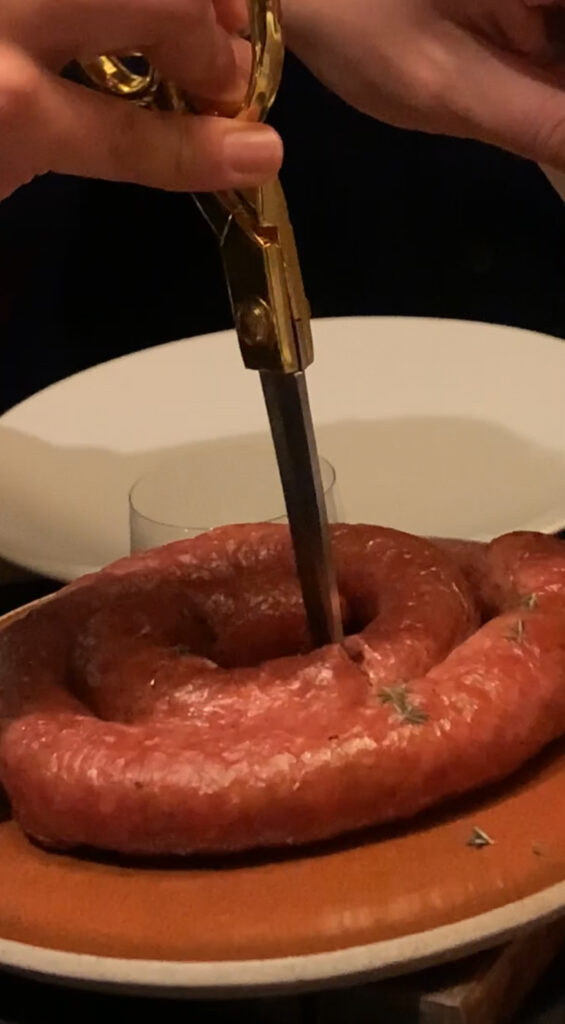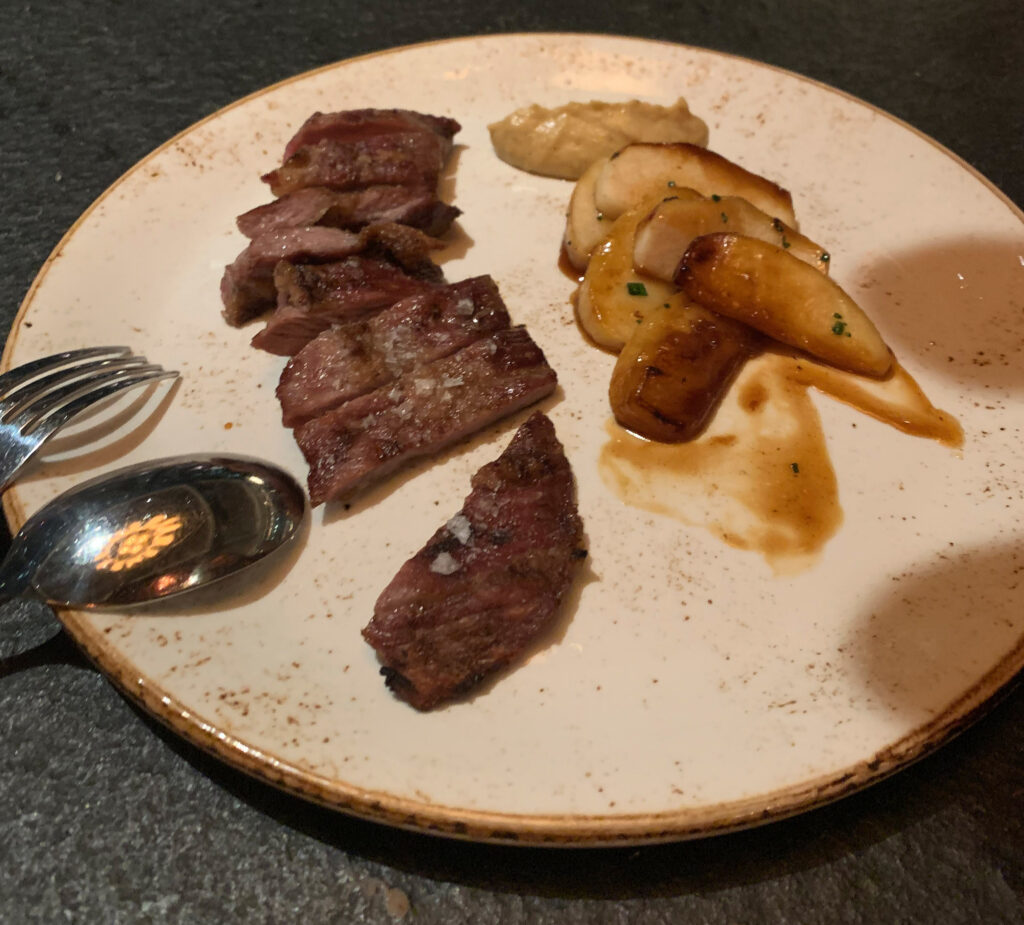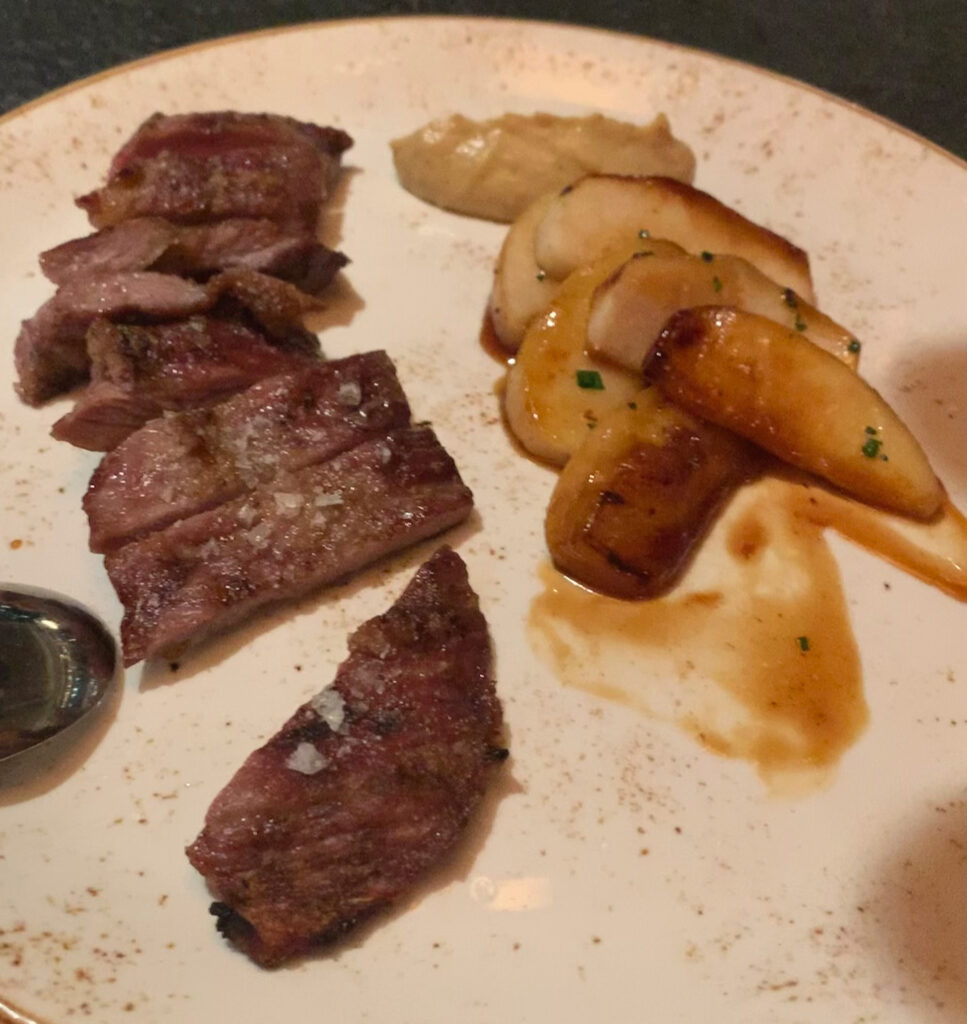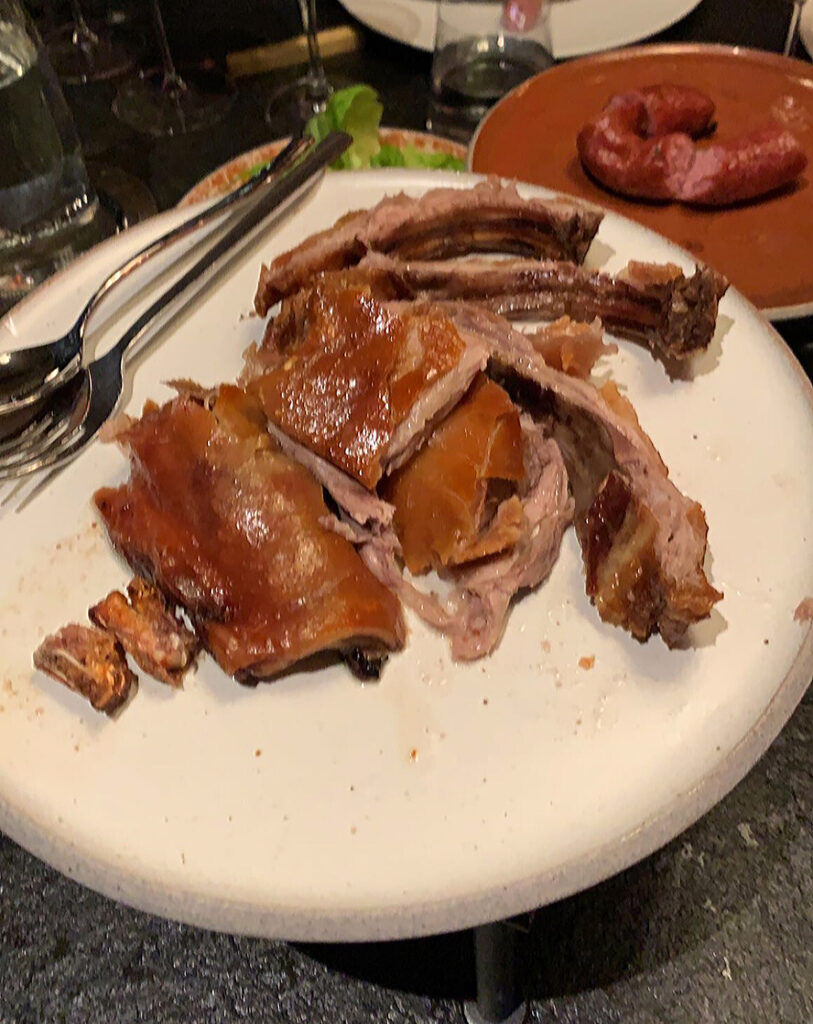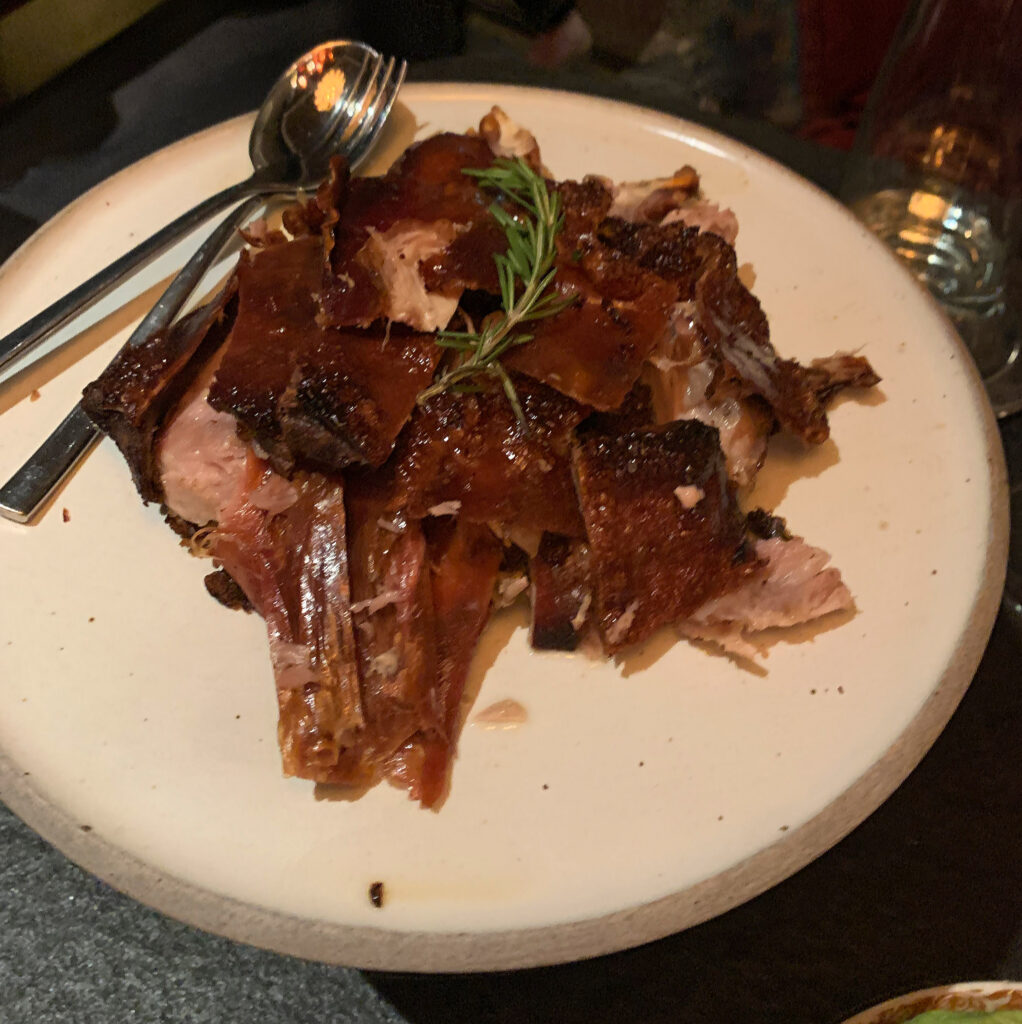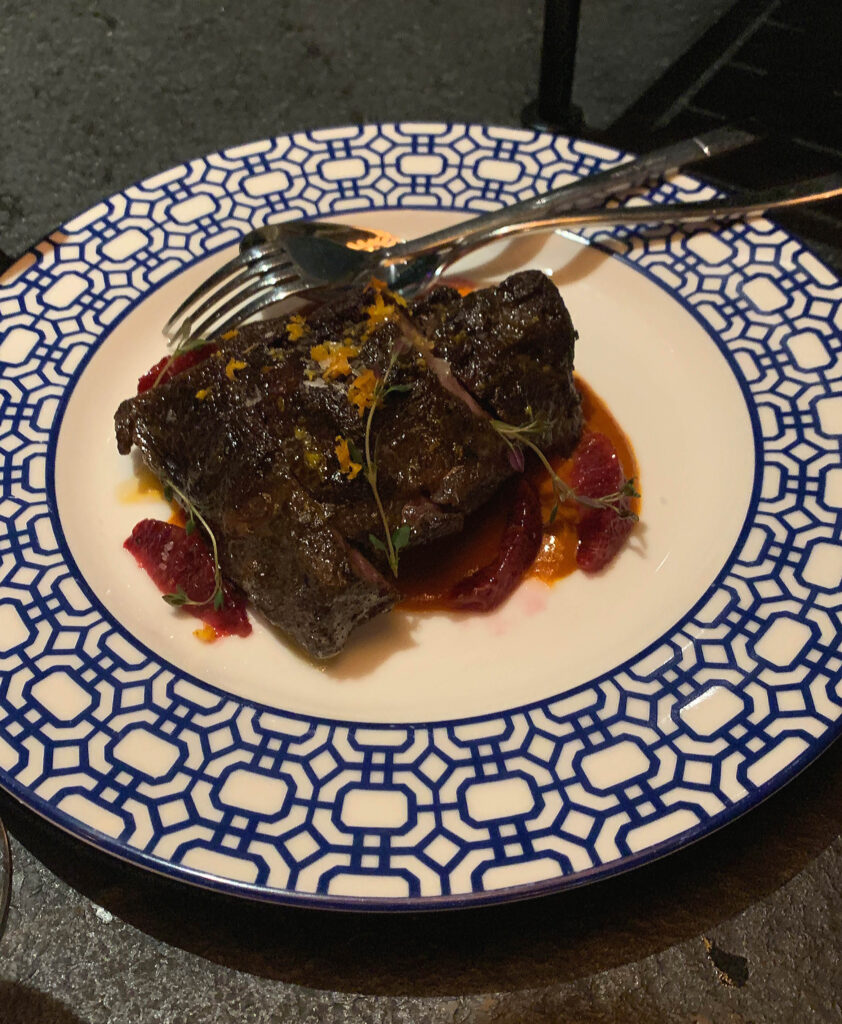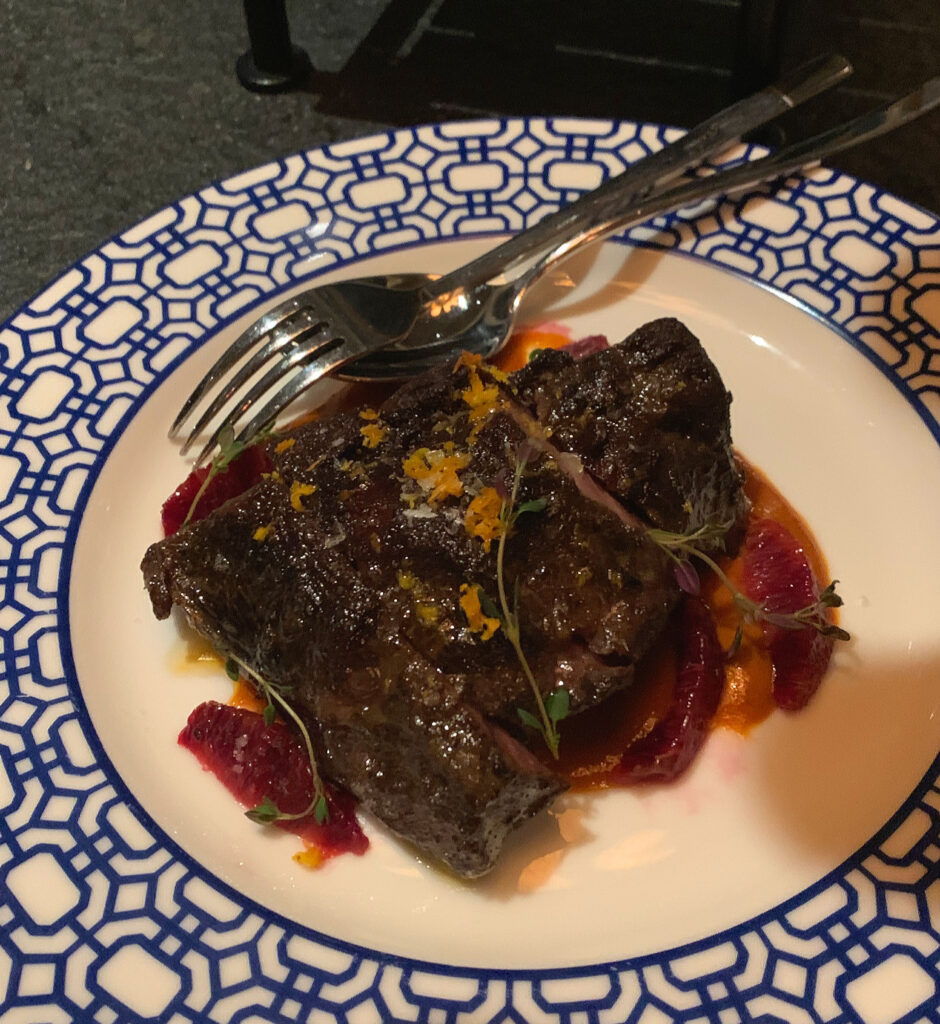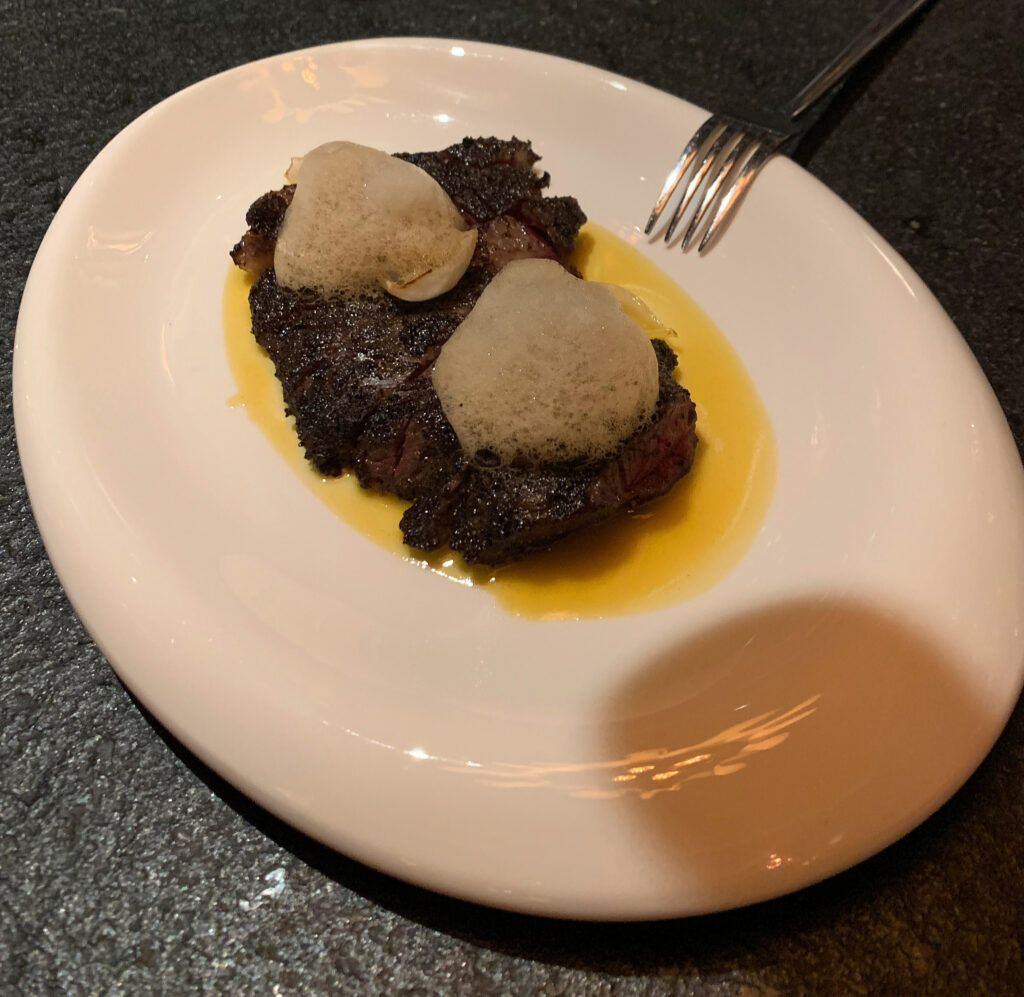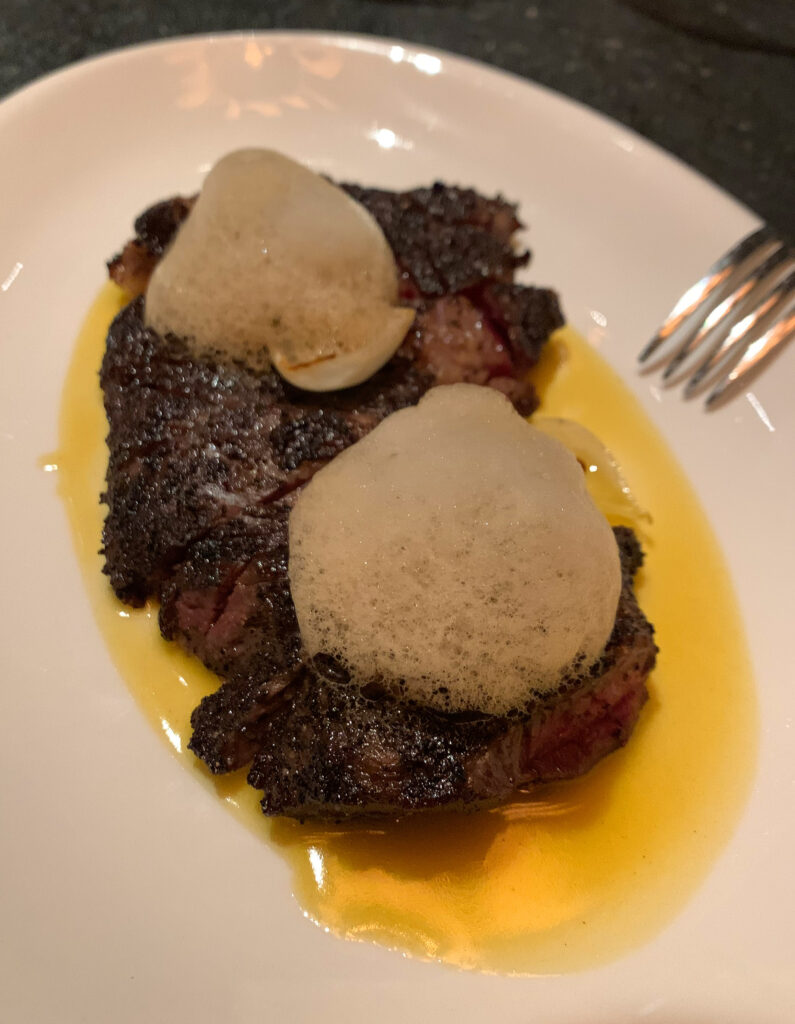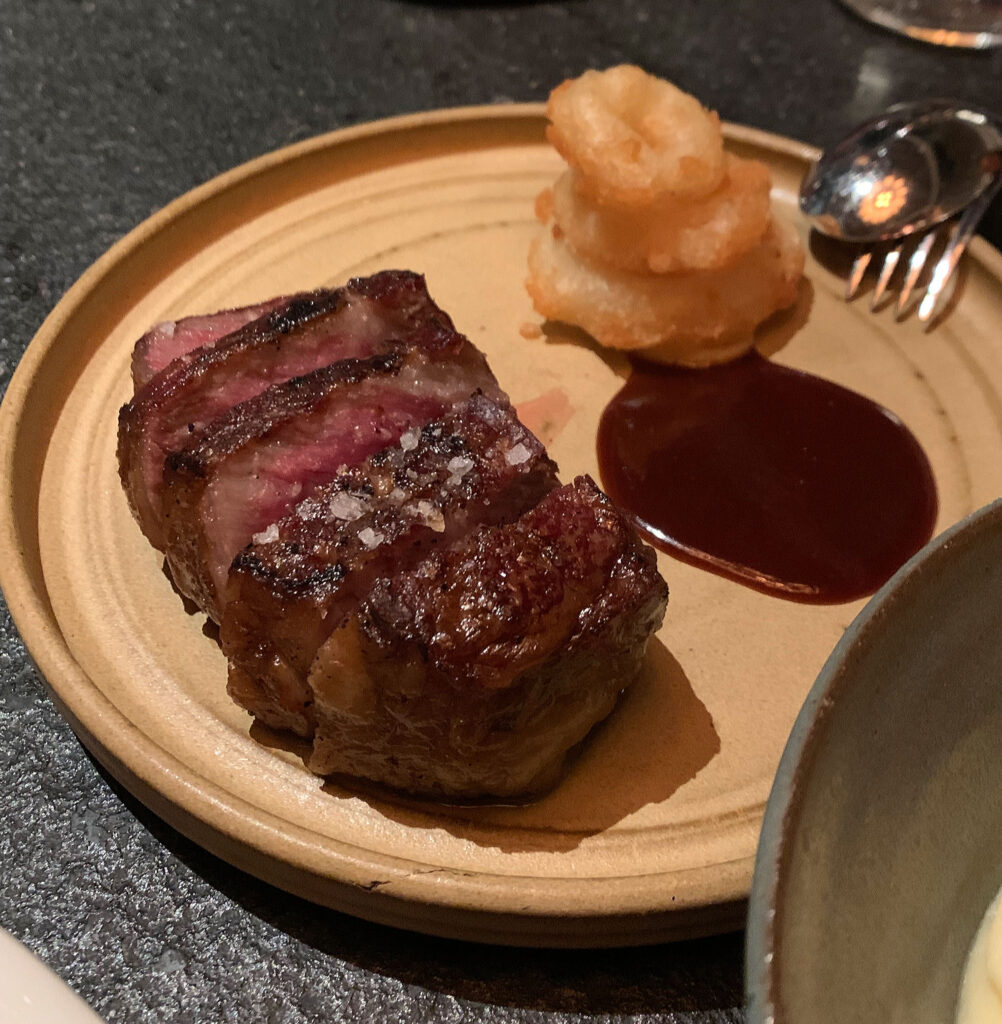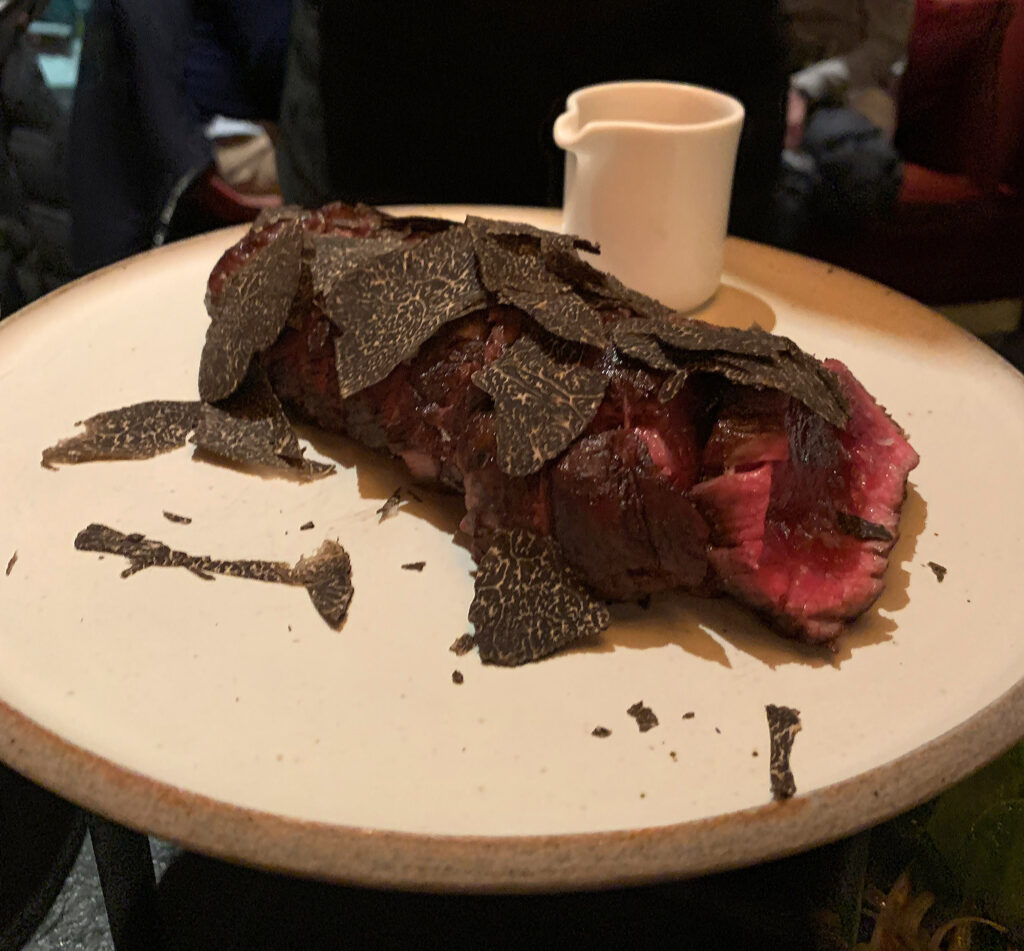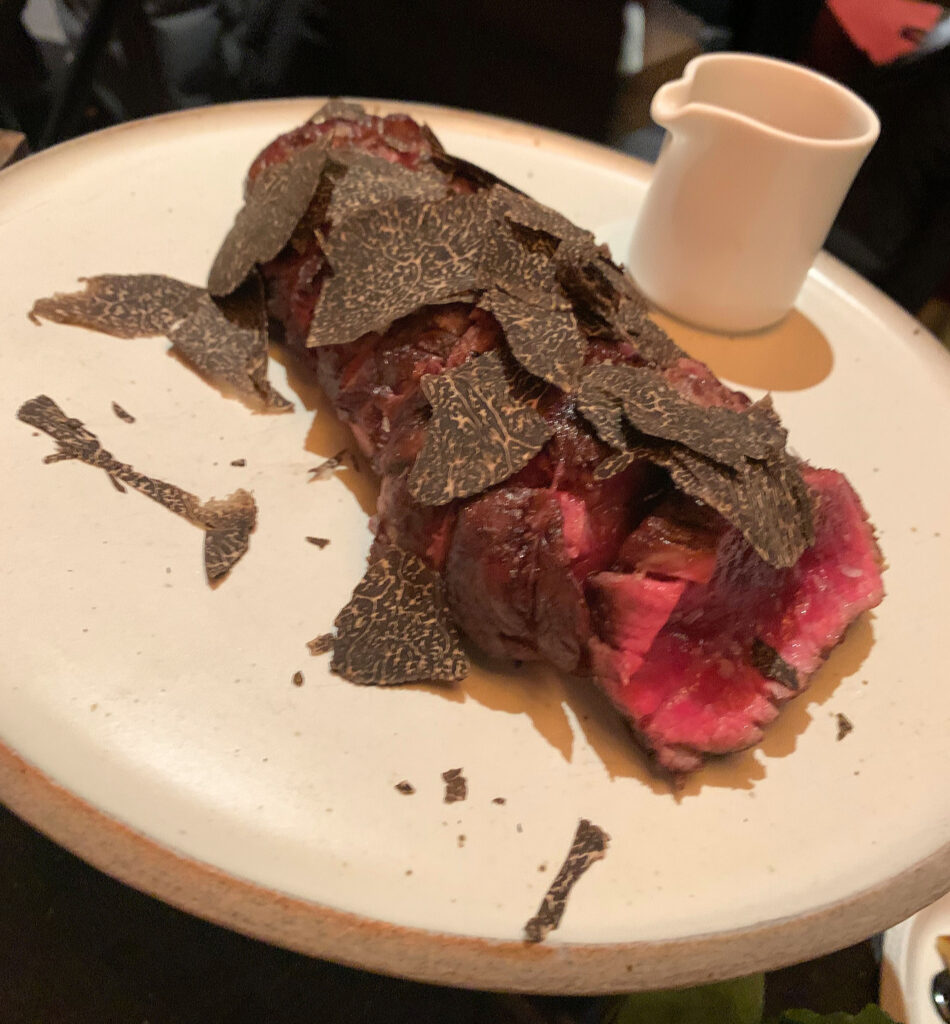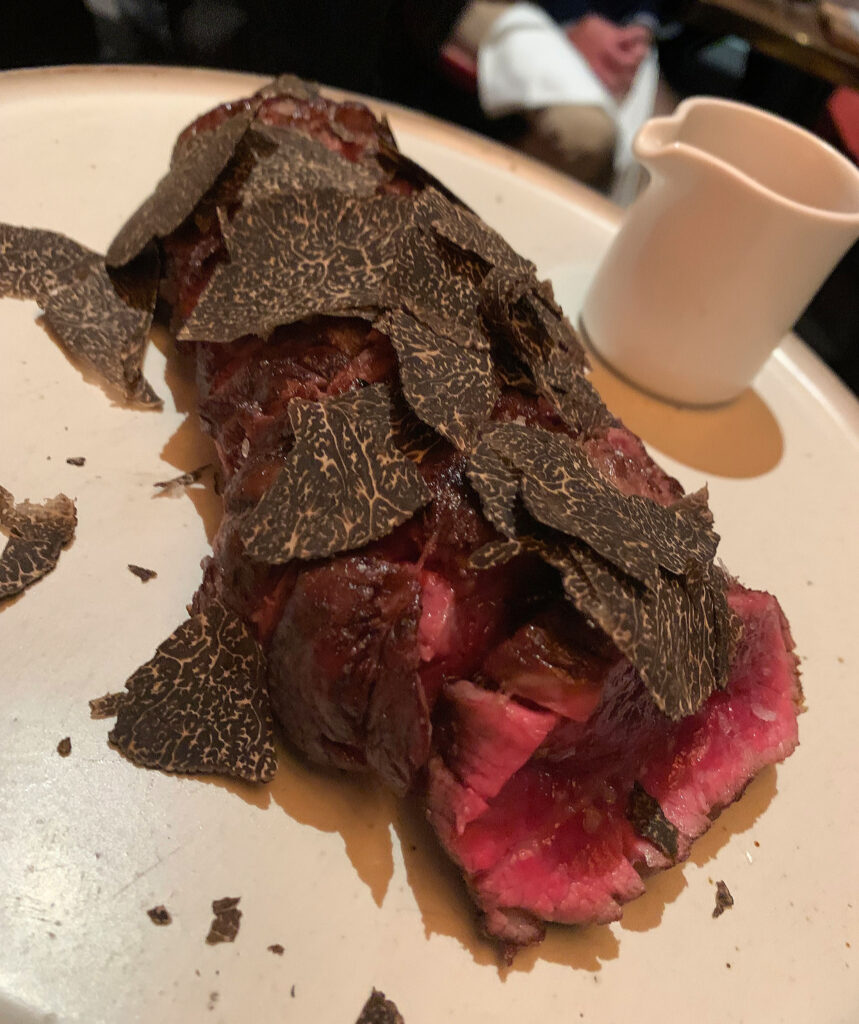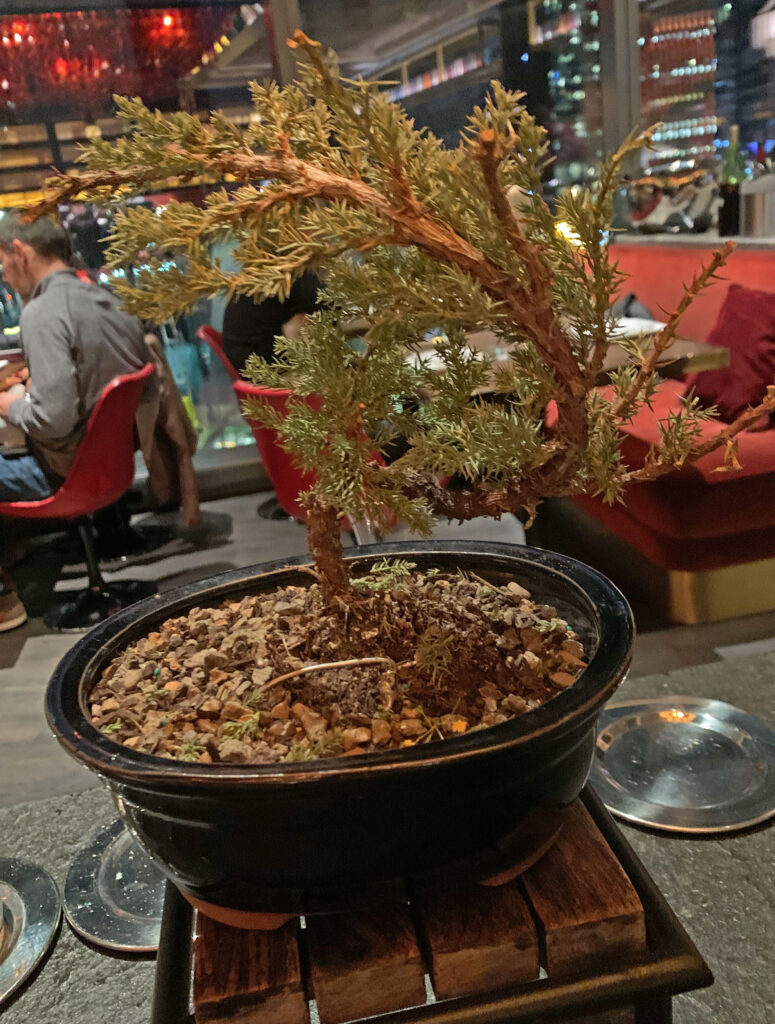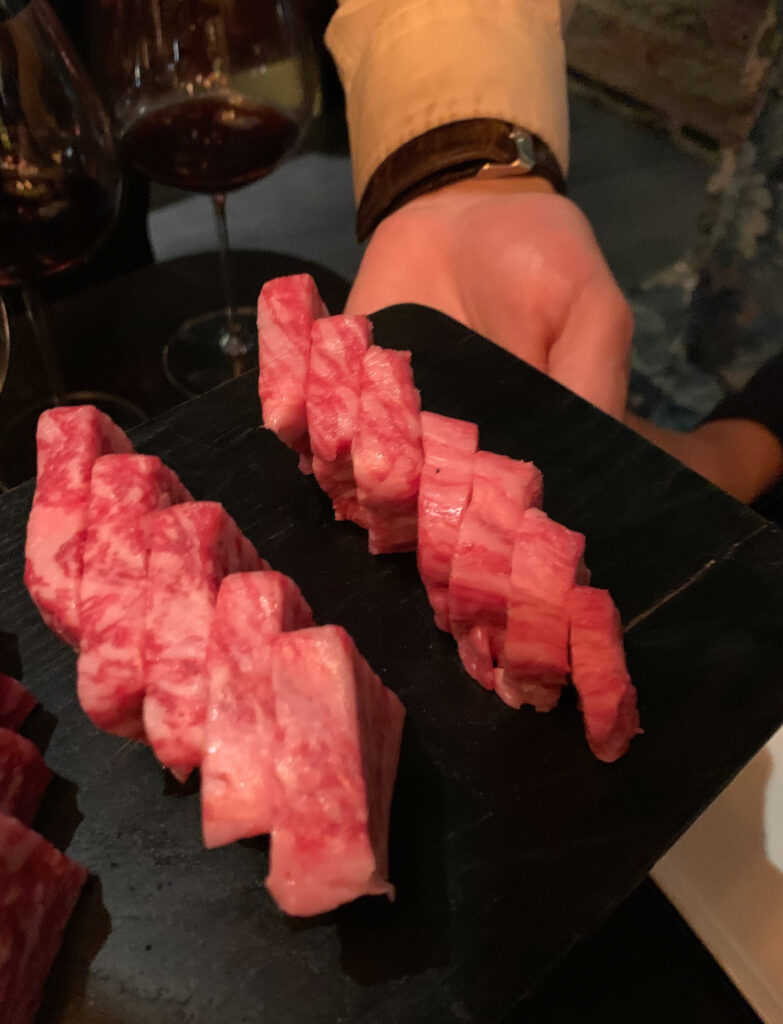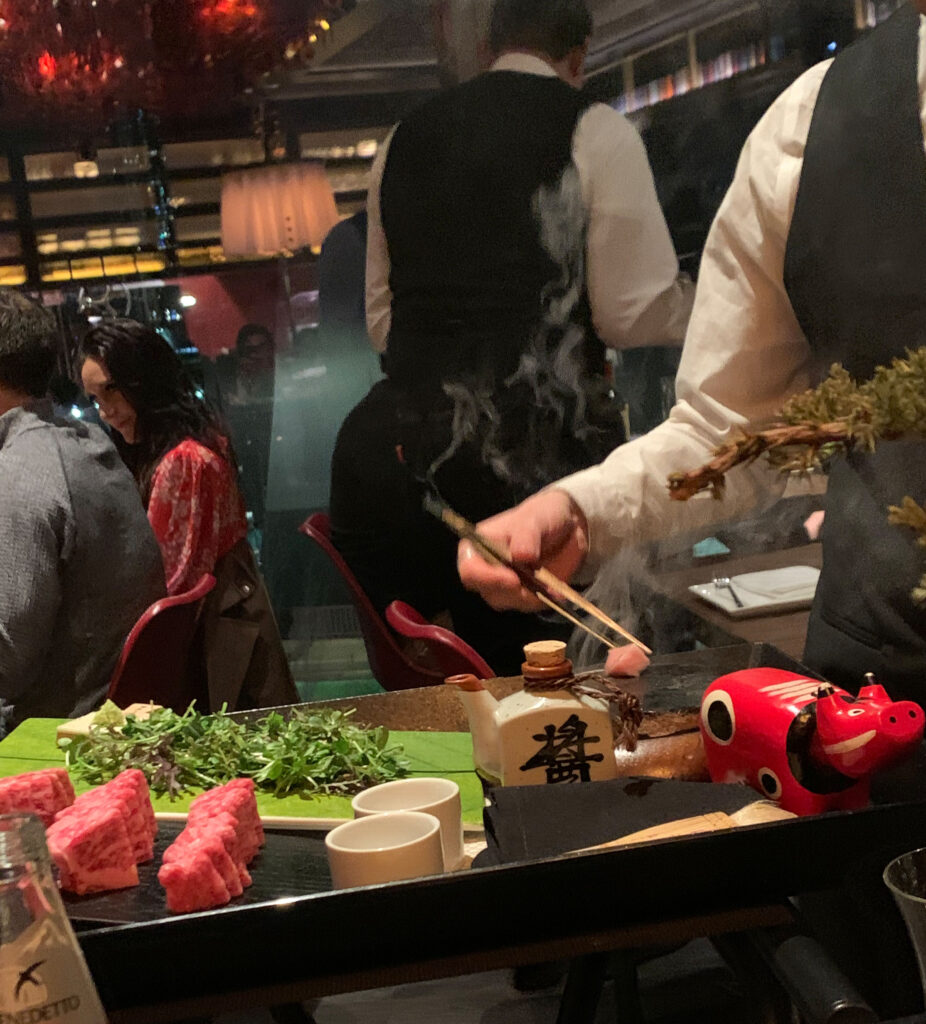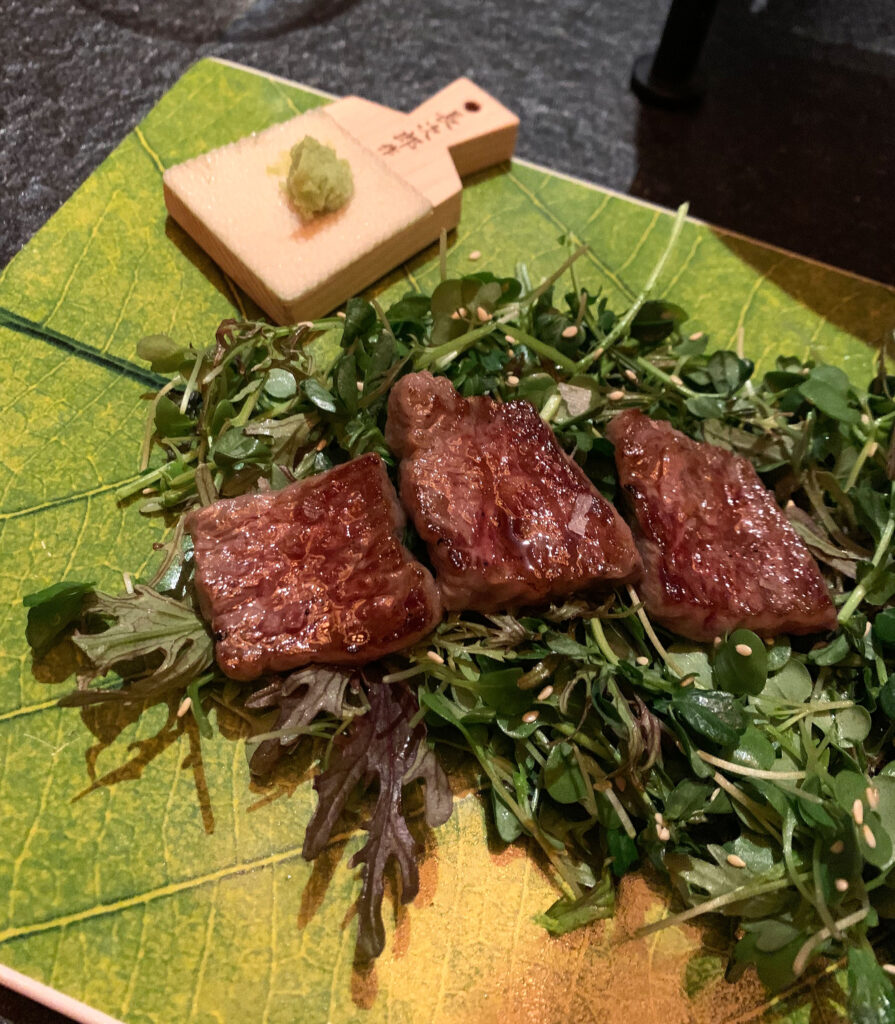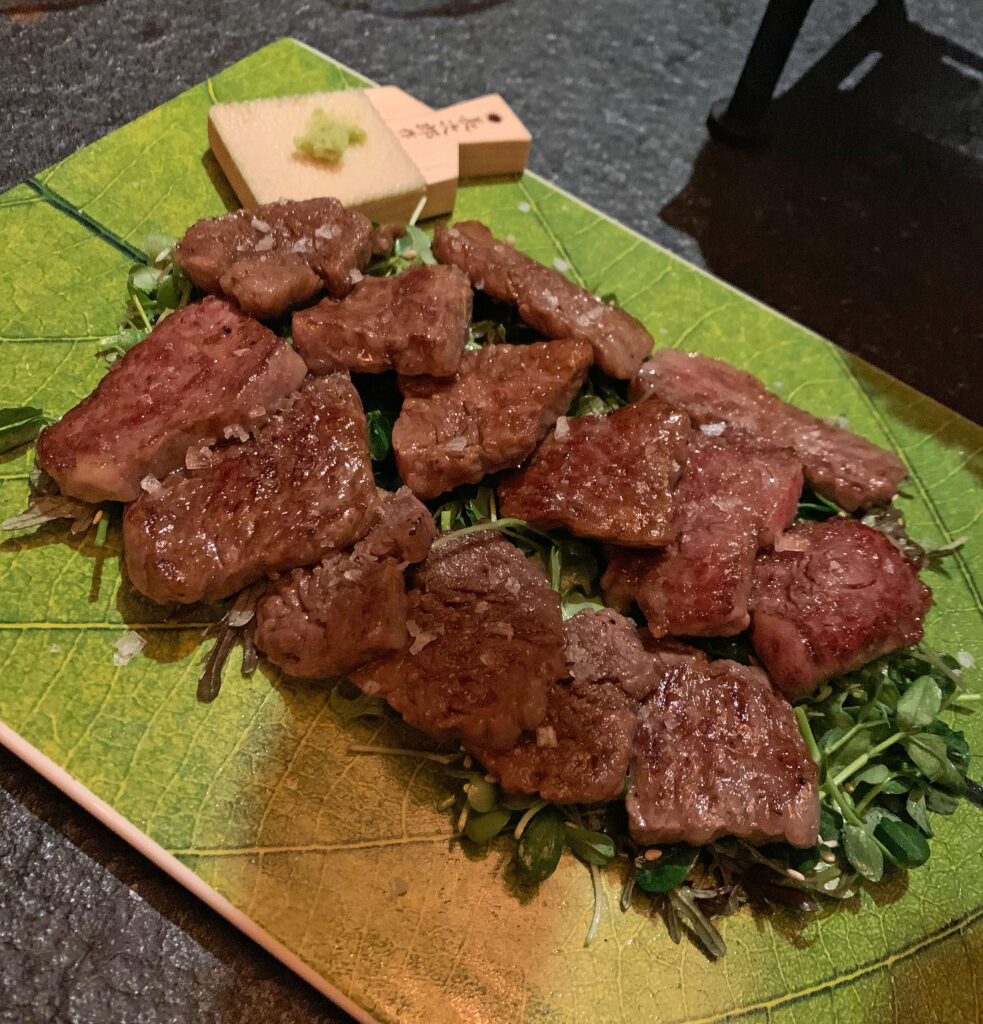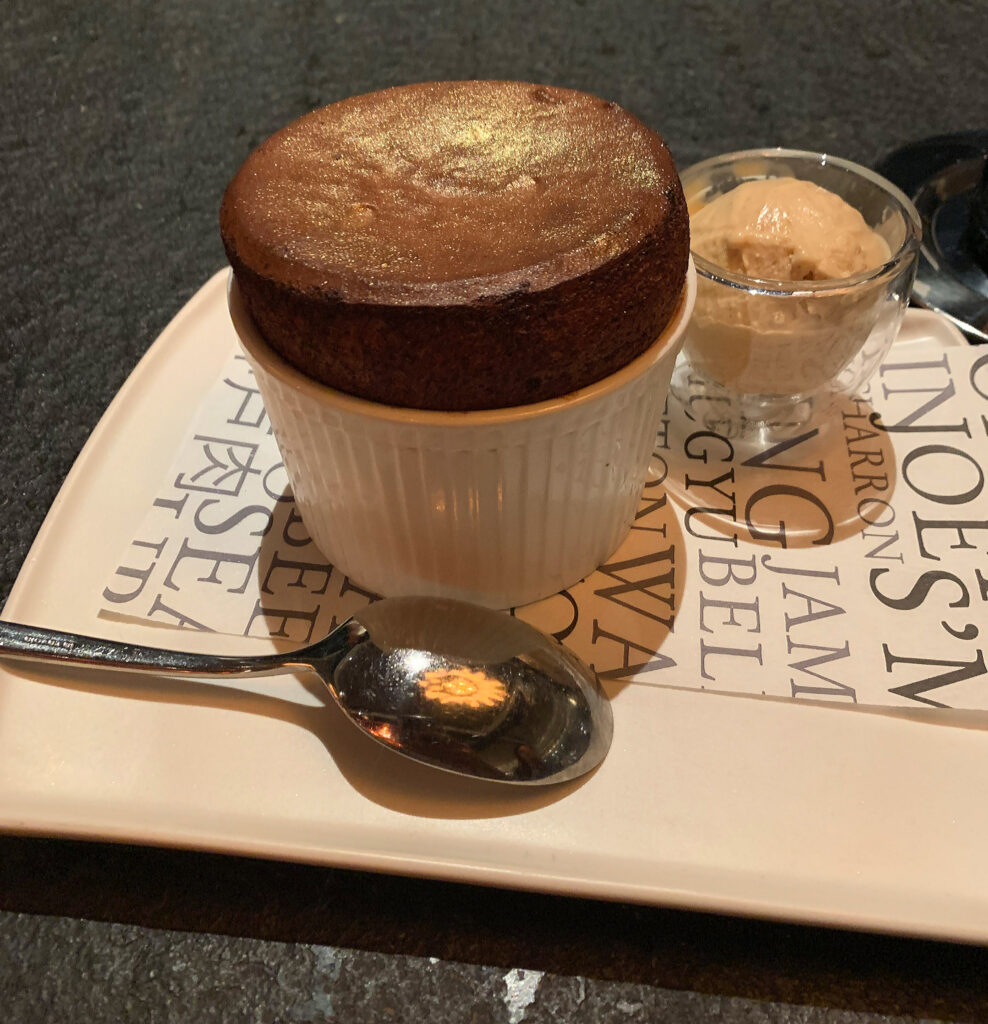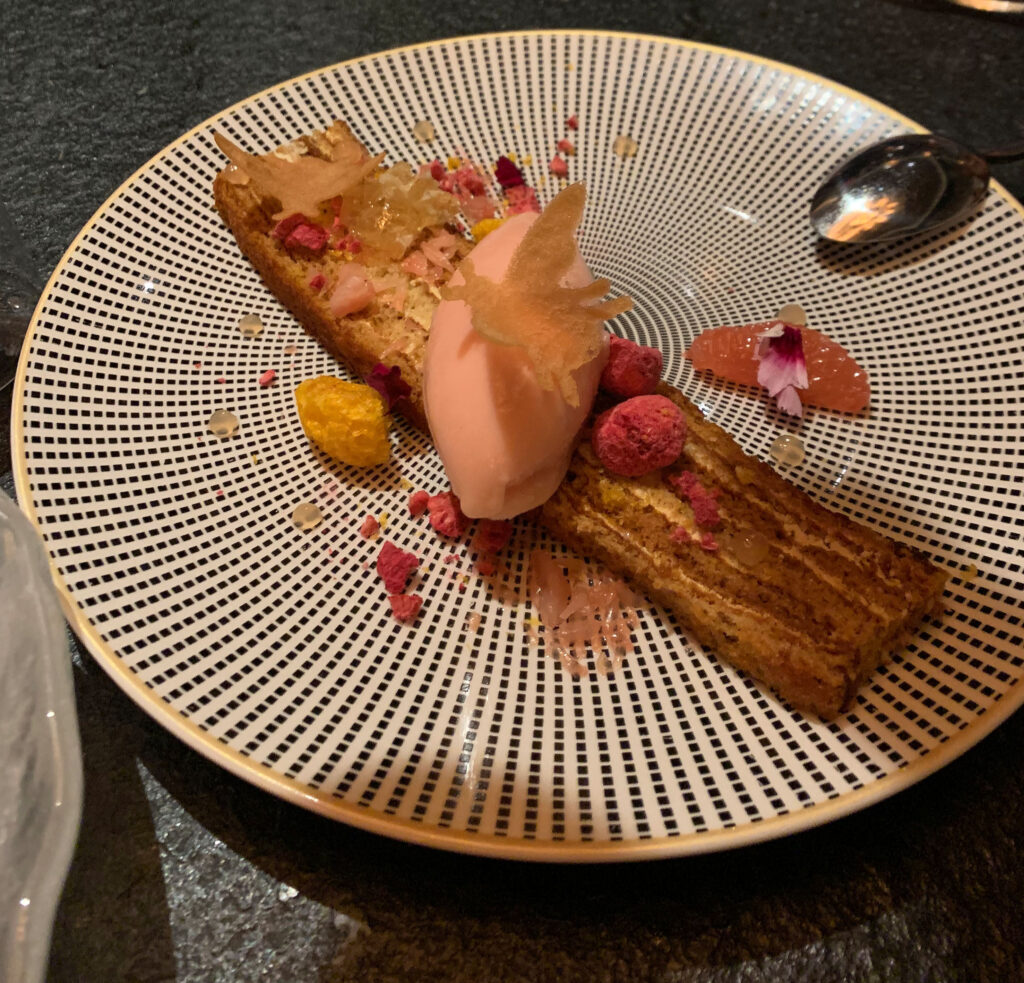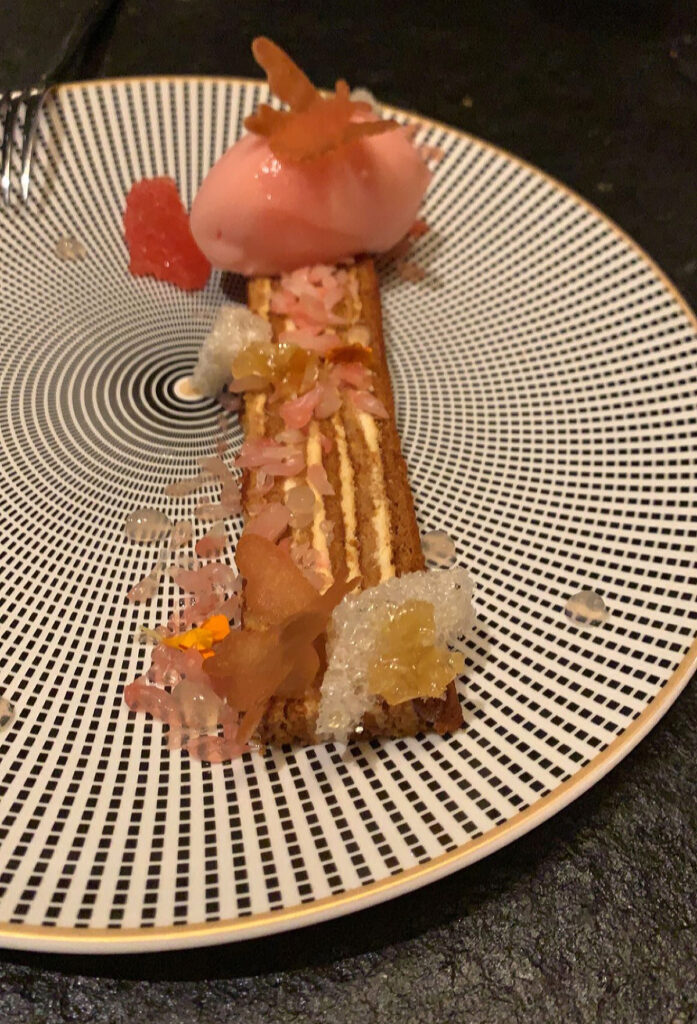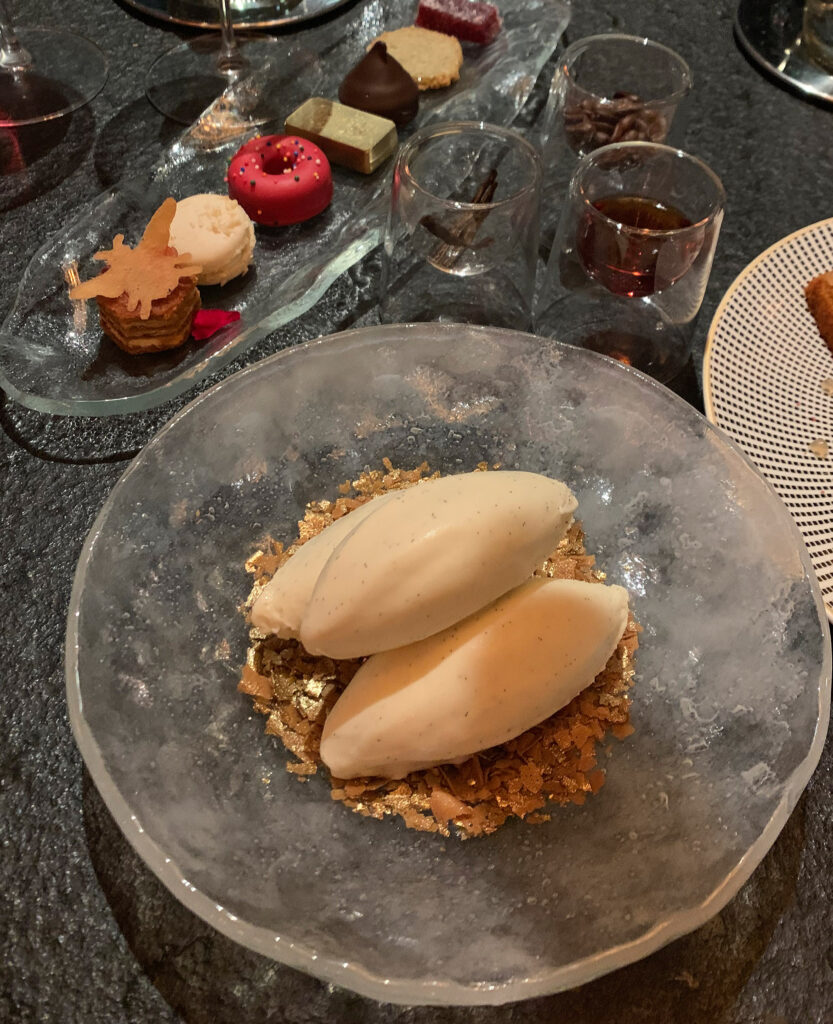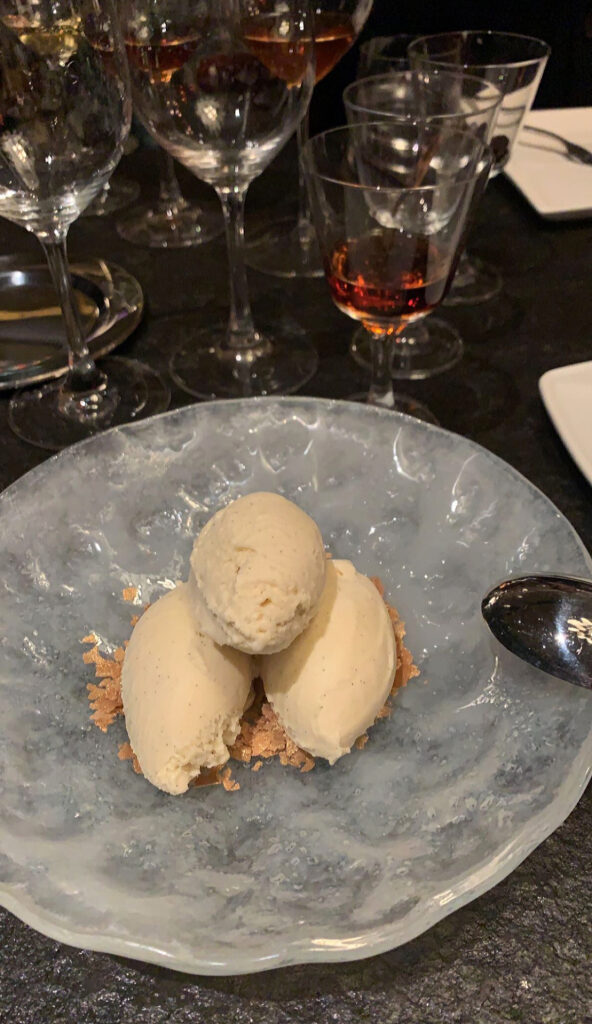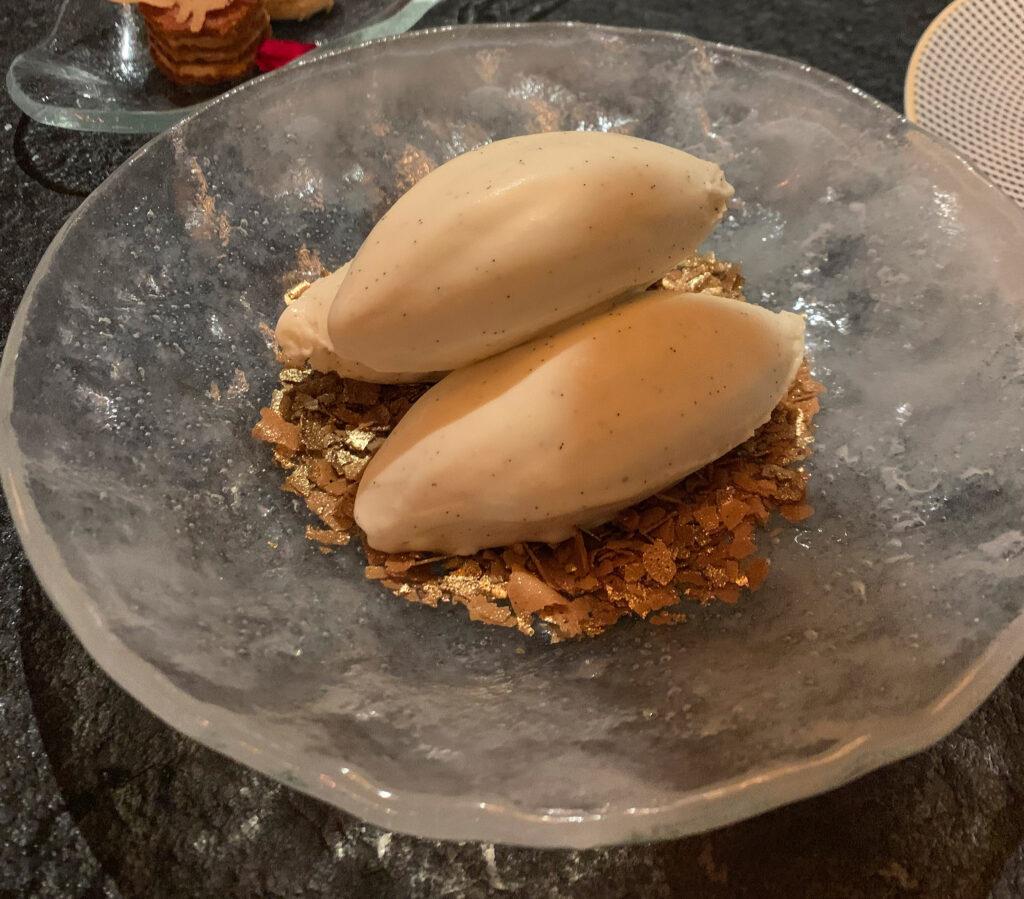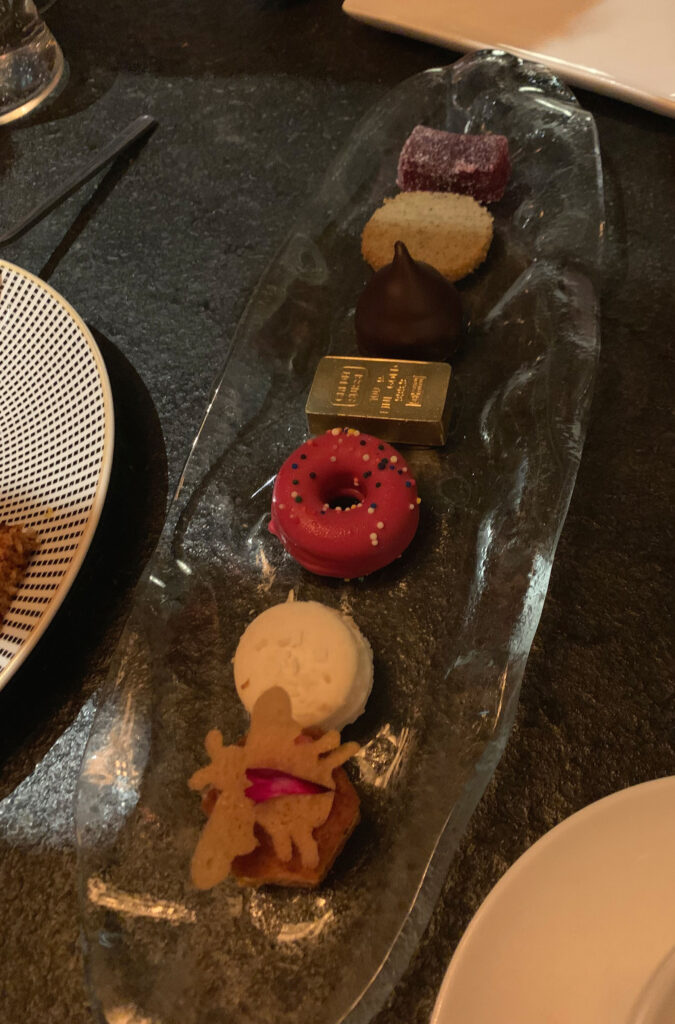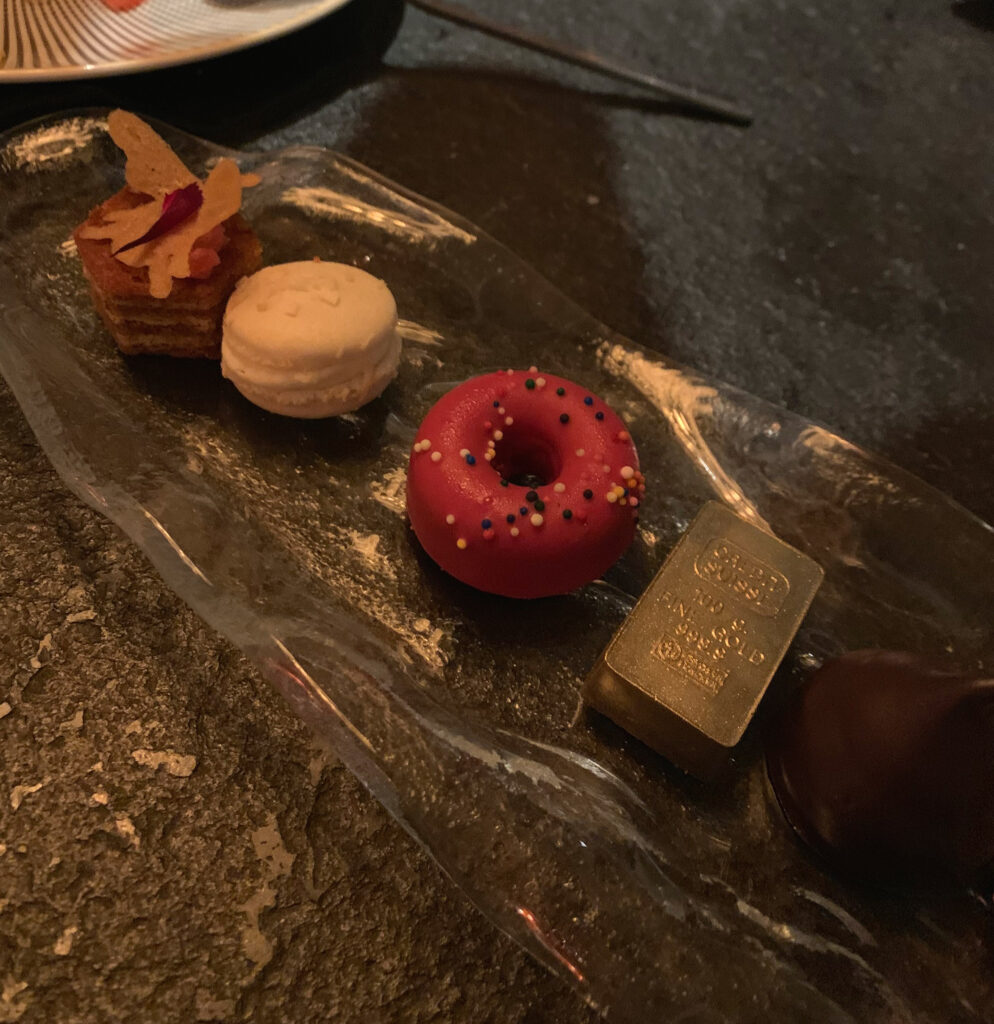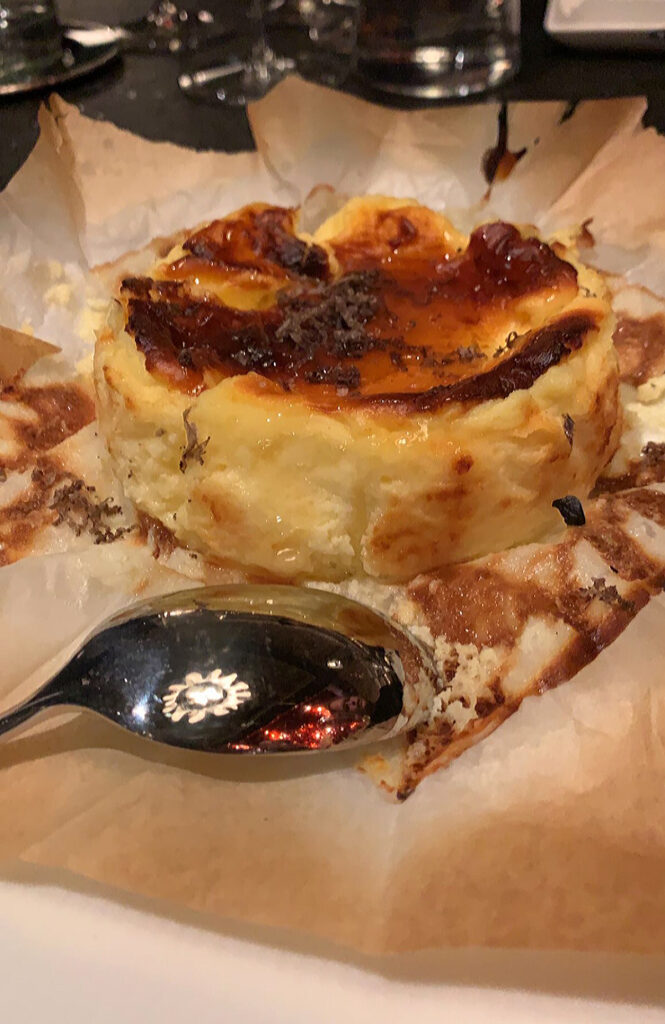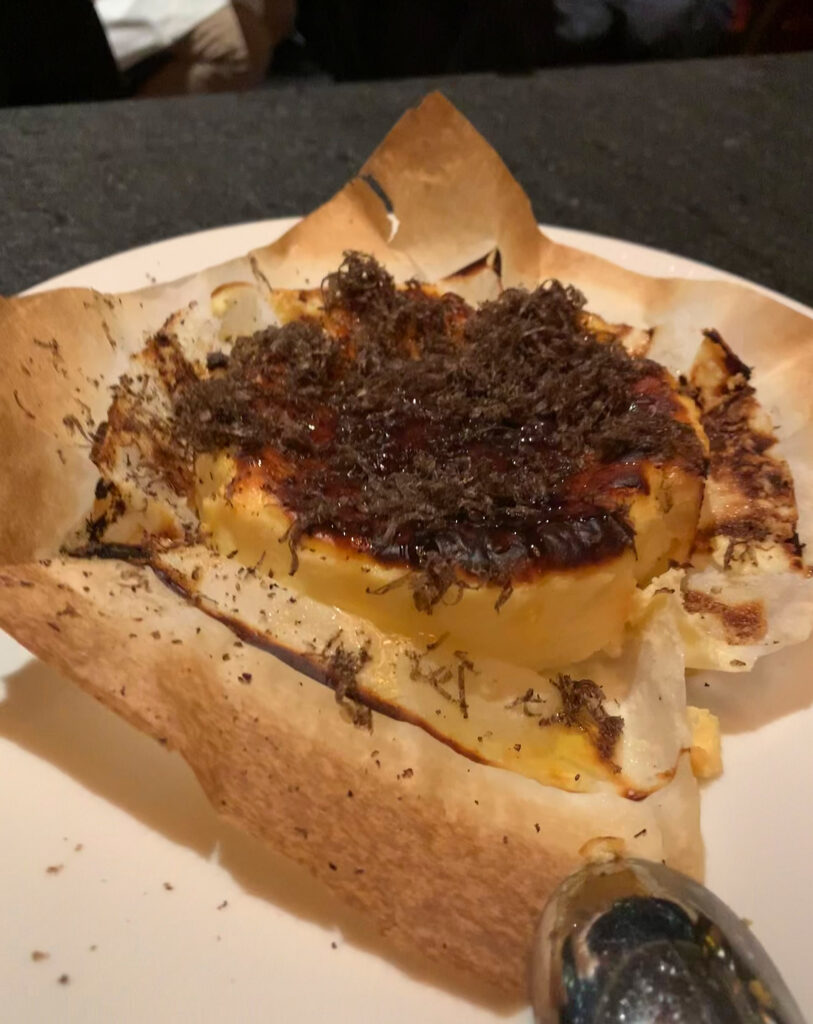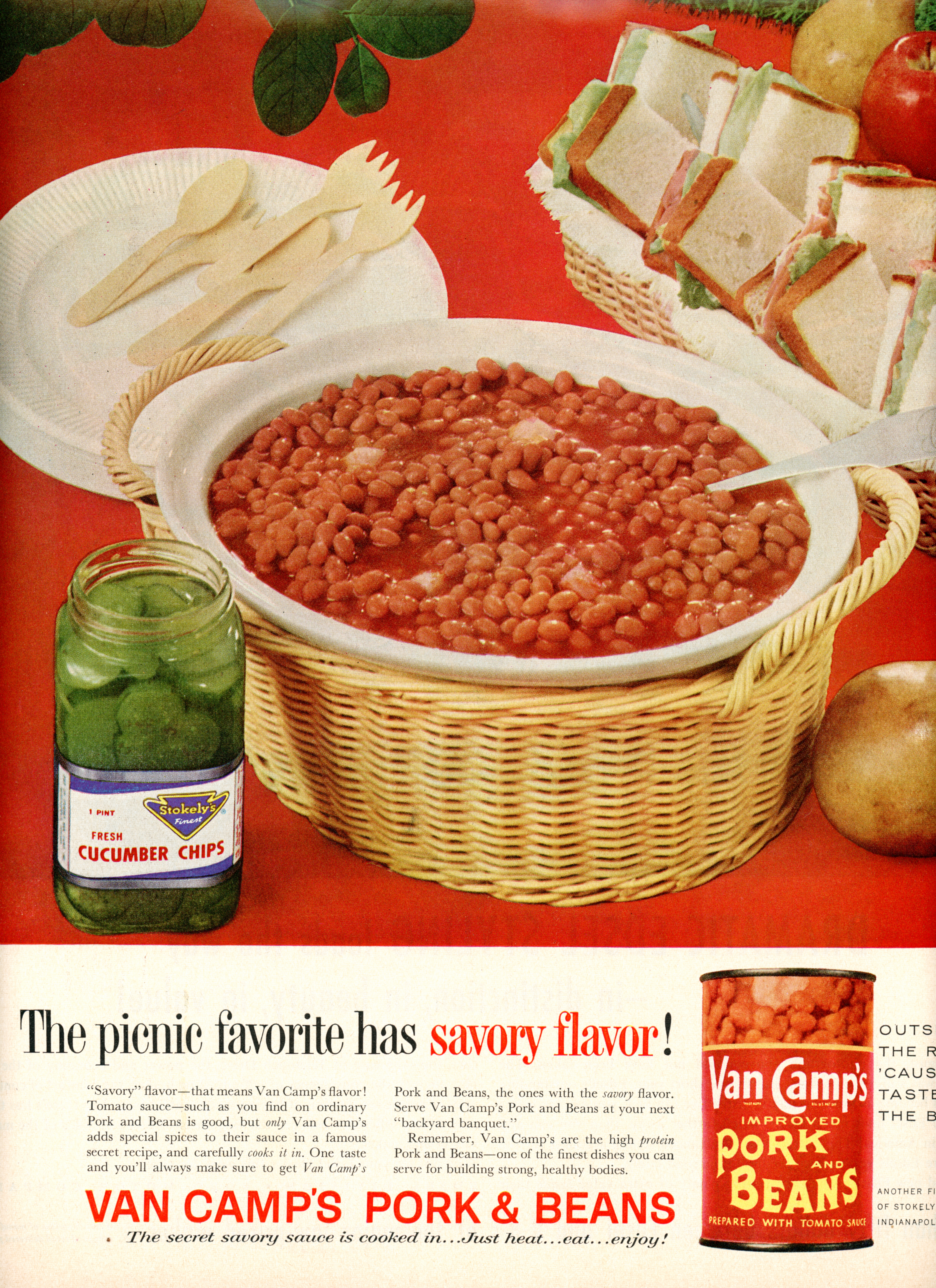You loathe chain restaurants. So, despite finding D.C.’s minibar to be one of the finest “molecular gastronomy” restaurants in the country, you viewed José Andrés’s Midwestern expansion with a bit of disdain.
The chef, no doubt, has redefined his profession—demonstrating, over the past decade, the key role it can play in tactically responding to sudden incidences of food insecurity. World Central Kitchen has transformed America’s goofy ambassador of Spanish cuisine into a sage humanitarian who has utterly transcended his association with the cloistered world of fine dining.
But ThinkFoodGroup, certainly, is not a charity, and any moves that Andrés makes as a restaurateur must be subjected to the same cold analysis you apply towards Chicago’s homegrown “talent.”
Axiomatically, you believe that the Windy City benefits little from interloping concepts that made their names pleasing a different set of patrons in a different place. Outside restaurants might help occupy pricey real estate and provide employment. Residents and tourists alike may, at first, be drawn to some transplanted novelty. But these shiny openings rarely lay down deep roots.
They divert attention away from local competitors within the same genres and flex their corporate muscle to capture a lowest common denominator customer whose patronage, like it or not, pays the bills.
In a city where even the most talented chefs, save for a select handful, are unequipped to cook with complete devotion to the rhythm of the season, diners cannot afford to have their local foodways further obscured, forever unfulfilled, by a steady stream of slick expansions ready to penetrate the “flyover” market.
Talented restaurateurs may look to manage such an impression. When Midwestern native Danny Meyer opened his first Shake Shack location here in 2014, he larded the chain’s usual menu with Publican pork sausage and pie from Bang Bang. (The restaurant he subsequently opened in 2015, GreenRiver, was a totally unique concept relative to his other USHG holdings and even earned a Michelin star before closing in early 2018). But chefs who possess a robust personal brand—like Gordon Ramsay and Nobu—often feel no need to cater to the city beyond posing for occasional photo ops.
That strategy may work out fine when addressing one of the native dining scene’s more underrepresented genres. However, when celebrity chefs leverage their promotional talent alone to siphon business from worthy local establishments, they should be treated with contempt.
For outside franchises that are lazily grafted onto the local market often spurn developing relationships with small farms. They often build anonymous wine lists in partnership with large national distributors. And they institute bland, cosmopolitan service standards that suppress regional character. Such restaurants are invasive species that flatten the organic development of diverse, distinct cultural forms for the sake of feeding perpetual corporate expansion.
When a far-flung chef looks to enter the Chicago market, you hold them to the standard set by Gastón Acurio. The renowned Peruvian chef opened Tanta in 2013, and the restaurant remains totally different from his La Mar concepts in San Francisco and Miami. (While there are other Tanta and La Mar franchises throughout South America, those in the United States feel singular).
Likewise, when it comes to offering more approachable fare within a crowded genre, Gabriele Bonci, too, has set a high standard. His Roman-style pizza al taglio does not only represent a distinct product (relative to the city’s many other crusts), but the chef chose Chicago as the very first location for global expansion. In a highly saturated market with sharp loyalties, the chef made locals feel special. He honored the dining scene with something totally unique rather than simply sapping it.
Thus, when José Andrés announced in 2019 that the Windy City would be home to Jaleo’s sixth location (after D.C., Bethesda, Arlington, Las Vegas, and Disney Springs but before Dubai), you were hardly enthused. Spanish tapas may not form the largest genre here, but there are a handful of examples scattered throughout the city (most of which maintain higher ratings than Jaleo on review aggregate sites). Tacking on a basement speakeasy, Pigtail, would not be enough to frame the franchise as something tailormade for Chicago.
Bazaar Meat, announced in 2021, sounded a bit better. The concept, at that time, only existed in Las Vegas (though a Los Angeles location has subsequently been announced). Its namesake, Andrés’s original pair of “The Bazaar” properties, had only operated in Los Angeles and Miami (though a New York location has also subsequently been announced). Relative to Jaleo, Bazaar Meat would offer Chicagoans something a bit more special. And Bar Mar, the restaurant’s downstairs seafood counterpart, was both entirely unique to the city and much more elaborate than Pigtail.
Andrés, nonetheless, had resolved to sell meat to a steakhouse city. What could he hope to offer that BRG, DineAmic, Gibsons, Hogsalt, LEYE, Morton’s, and What If Syndicate had missed? (To say nothing of BLVD, Boeufhaus, El Che, Cherry Circle Room, and the like). Did the Spanish chef really want to join the ranks of other lackluster imports such as Barton G., The Capital Grille, Del Frisco’s, Mastro’s, McCormick & Schmick’s, Ocean Prime, Ruth’s Chris, Shula’s, Smith & Wollensky, Steak 48, and STK?
Chicago is a mature market when it comes to beef. It has seen all manner of American, Australian, and Japanese wagyu slung. It has seen wet-aging, dry-aging, and rooms filled with Himalayan salt bricks. It has saddled its steaks with seafood, pasta, and asado fare. Yet you have still never seen anyone beat the humble USDA Prime served at Bavette’s, and every new iteration of the genre seems to lean on this or that gimmick. Would Bazaar Meat be nothing more than Jaleo + steak, or would it envelop itself with a sense of Las Vegas, L.A., and Miami “luxury” that would only serve as a precursor to Salt Bae’s eventual arrival?
Luckily, there was a ray of hope. ThinkFoodGroup was not going it alone but, rather, subscribing to that old chestnut: “if you can’t beat them, join them.”
While Andrés typically partners with hotels when opening his sprawling Bazaar properties, aligning with a restaurant group in the target market is rather unheard of. Tethering two hospitality brands to each other—that must then cede control of certain processes and creative decisions they are used to determining wholly—seems like a recipe for disaster. How do they retain the look and feel of their respective identities without stepping on toes or clumsily cobbling them together?
Though that challenge loomed large, the partnership held plenty of promise. With Gibsons Restaurant Group, ThinkFood could lay down a foundation rooted firmly in Chicago history. In them, Andrés held a golden key to the city’s steakhouse genre that would buttress his innovation with an ironclad assurance (built by Gibsons over three decades of operation) of quality and value. Together, they would promise “an unmatched level of hospitality and an authentic culinary experience” rooted in TFG’s “culinary ingenuity” and GRG’s “operational expertise.”
Due to the pandemic, Jaleo would not open in Chicago until the summer of 2021. However, the delay allowed for a staggered set of openings (followed by Pigtail and Café by the River) in the build up to Bar Mar and Bazaar Meat’s debut at the very end of the year.
The restaurant would be located in the new 55-story Bank of America Tower at 110 N. Wacker. Though only a stone’s throw away from the crown jewel of the Gibsons empire, Italia, the collaboration would seemingly not cannibalize any business from the existing property.
Beyond featuring some of the same Prime Angus beef, the two restaurants would comprise entirely different offerings while appealing to their respective populations of office dwellers located within and surrounding their buildings. Italia would continue to boast a postcard view at the mouth of the river while Bazaar, positioned down the south branch, would be well situated to take advantage of that particular segment’s future growth.
Bar Mar and Bazaar Meat would ultimately open on December 15th. Andrés held court during a media preview the night before then left his trusted staff and partners to take the reigns. They would make a slow, methodical start—limiting the number of seatings during the first weeks and ensuring Gibsons’s vast array of regulars got a chance to put the place through its paces before embracing the wider public.
You dined at Bazaar Meat for the first time in early December. That was followed by a subsequent visit in mid-February. However, in March, the restaurant suffered a “mechanical issue in the kitchen that requires immediate attention” and that has hampered its ability to serve much of the original menu.
Though such a blow might have crippled most concepts, Andrés had a trick up his sleeve. Prevented from offering the full assortment of grilled steaks and seafood that define the “Bazaar Meat” concept, the chef leaned on his classic “The Bazaar” offerings from the original Beverly Hills flagship. He offered guests “a menu of the most popular, beloved dishes” across the sister restaurant’s 14 years of operation alongside whatever elements of the original menu that could still be executed. This move did not only ensure that the property could stay open throughout its repairs, but offered Chicagoans something like a “greatest hits” pop-up of Andrés’s previous work. (And no, you do not mean Next’s abortive effort).
You sampled this “temporary dining experience” reflecting “the beginning of Bazaar” in late April. Though the majority of the dishes you sampled then will disappear and have little bearing on what guests find once Bazaar Meat returns in earnest, you found this last meal to be consistent with past visits.
Thus, on the basis of two “Bazaar Meat” and one “beginning of Bazaar” experiences, you feel comfortable speaking to the atmosphere, beverages, service, and cuisine that define the ThinkFood and Gibsons Group collaboration. Though the menu’s schism means that some of the fare you describe will no longer be relevant down the line, you will still condense the totality of your impressions into one, cohesive narrative.
Lastly, in the interest of full disclosure, it bears mentioning your close relationship with Gibsons Group’s beverage director. Though, in their role, this individual manages the programs across multiple establishments, Bar Mar and Bazaar Meat operate outside of that direct influence. Andrés’s wine program, which you go on to describe in detail, is instead the brainchild of the talented Christian Shaum. Any opinion offered on his work—as well as on Bar Mar and Bazaar Meat in general—is strictly your own.
With that covered, let us begin.
Randolph Street, home to West Loop’s “restaurant row,” has long been a gastronomic thoroughfare. The real action, of course, begins west of the highway. Yet Grace, Yūgen, Blackbird, avec, Embeya, Bellemore, Alla Vita, Sepia, and Proxi have certainly done their part to define the corridor between I-90 and the French Market. And now it is fair to say that Randolph’s sprawl of superlative dining actually begins east of the river at its intersection with Upper Wacker.
The Bank of America Tower stands on a block that surely feels like “downtown.” The triple-wide lanes and lines of skyscrapers impart a feeling largely lost to time: having a grand meal staged within Chicago’s metropolitan bustle. Yet Andrés has not cloistered his establishments too deeply within the Loop, an area known to become a veritable dead zone after hours.
Bar Mar and Bazaar Meat occupy an attractive corner of the urban landscape with trees, shrubs, and planters a plenty set within a courtyard space—now operating as a gorgeous patio area—that abuts the bridge and the river. Though a couple other towers (100 and 150 North Riverside) bookend the view facing westward, the sky that lies beyond them is relatively uneffaced (for now).

In fact, if you look towards the restaurants from Randolph, it becomes apparent that their windows tilt a few degrees off center from the rest of 110 N. Wacker. This trains guests’ eyes directly over the bridge and down the river towards Wolf Point, the home of Chicago’s very first tavern and eating house. Truth be told, the view does not come anywhere close to that of Gibsons Italia or even RPM Seafood. Yet the ripple of the water, the occasional creaking train, and the diamond-pointed edifice that frames them do make for one of the city’s more attractive mealtime tableaus.
Ultimately, though entering the Bank of America Tower feels very much “big city,” the orientation of Andrés’s restaurants transforms them into a liminal space. Though you approach from the street and enter through the monolithic front façade, Bar Mar turns your posture northwest. While the staid elevator that takes you up to Bazaar Meat underscores the building’s commercial utility, the elevated position it provides doubles down on the effect.
Relative to Jaleo and Pigtail, which jockey for foot traffic from River North’s transitory denizens, Andrés’s Loop properties are positive outposts. They presage a resurgent downtown that draws the energy of Wolf Point, Gibsons Italia, and West Loop further south. Yet, until that time comes, they form a threshold through which Chicago’s business district fades and a fashionable haven of hospitality begins.
Beatnik on the River and GoodFunk, Bonhomme’s natural wine bar concept, might help contribute just a bit to that feeling. There’s also a Beatrix (LEYE’s invasive, offensively bland all-day concept) set to open across the street soon. But ThinkFood and Gibsons have created a magnet destination of great import for the neighborhood. Their collaboration helps drive Chicago dining towards a new frontier, slowly recentering it at the city’s neglected nexus.
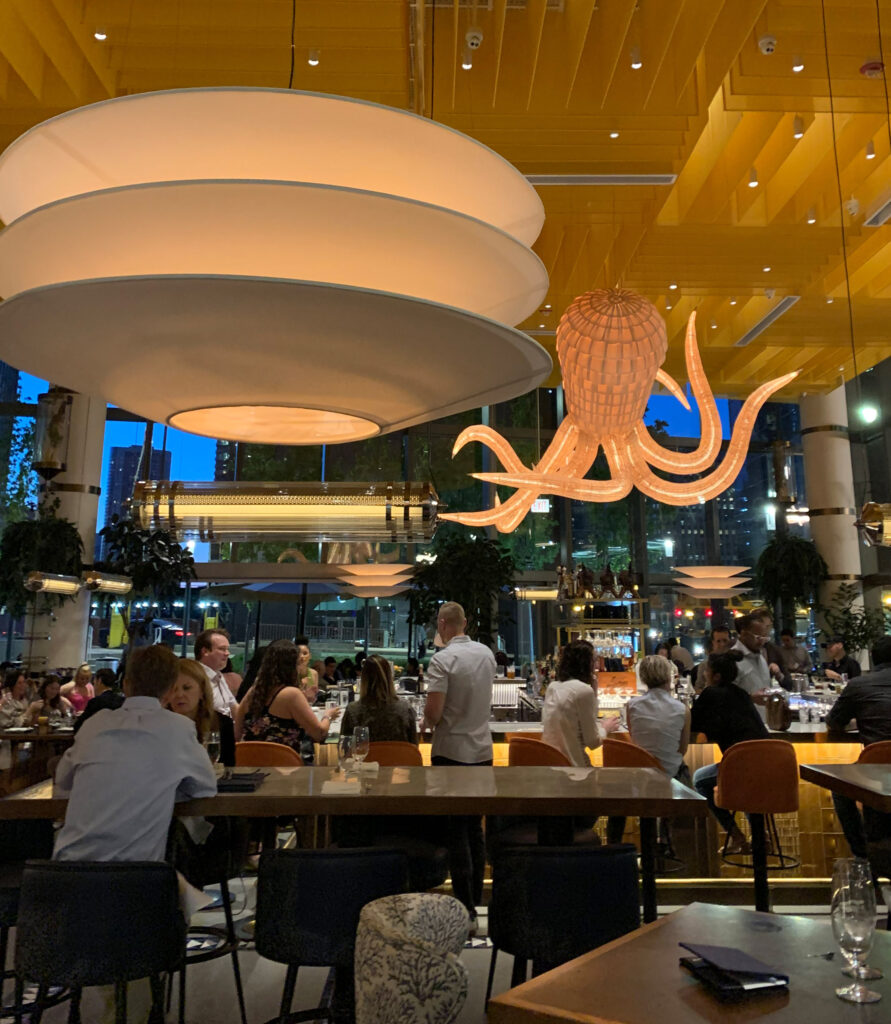
Nonetheless, this larger context is not readily apparent once you step inside Bar Mar. The space absolutely brims with energy, and it is hard to look away from the hanging octopus sculpture (“a TKMATERIAL glittering TKSIZE octopus” to be exact) that forms its centerpiece. Though the present piece will not engage the downstairs restaurant thoroughly, a short overview is order.
Relative to Bazaar Meat, Bar Mar is Andrés’s more approachable concept. While the former is open only for dinner, the latter welcomes guests for lunch starting at 11 AM (Monday through Friday). That essentially makes Bar Mar an all-day enterprise suited to host business lunches, pre-meal cocktails, more casual dinners, and late-night imbibing. Given that Bazaar Meat only allows complete parties to go up the elevator into the restaurant, guests will likely find themselves whittling a bit of time away downstairs.
The space comprises a gorgeous perimeter of three-tiered windows that flood the space with natural light and, later, the city’s twilight glow. Set along the glass are high-top, two-top, and four-top tables (along with some rather distinguished large party seating set in the corners closest to the outer courtyard). The middle of the restaurant is characterized by more rows of high-tops and some smart, free-standing, back-to-back banquettes that anchor as many as four two-tops. Two bars—one raw and the other wet—serve as natural focal points for all the action.
The former operates out of the corner of the dining room closest to the host stand and can seat eight or nine guests across two of three sides (one being reserved to facilitate service). The raised counter, which boasts an attractive seashell textured base, a grey quartz surface, and an elevated section trimmed with naval sketches, allows its diners to observe some of the kitchen’s work.
The latter bar is freestanding and fills the portion of the space closest to the corner of Randolph and Wacker, lending the restaurant a high degree of curb appeal. It seats something close to thirty people across all four of its sides and serves as a natural conduit for the tide of energy that flows in from the street. Sitting at this bar, which is rendered in burnished orange with a quartz countertop and brass accents, you can better marvel at the octopus sculpture. Above it hangs a ceiling of ribboned orange fabric with segments of varying height that fade into floor-to-ceiling curtains than run along select windows. The sum effect, accented by potted trees and hanging planters, is effortlessly breezy. It’s just the kind of trick that Kehoe Designs dreams of pulling off.
The room’s lighting is drawn from countless LED fixtures embedded in the ceiling alongside hanging lanterns and underlit surfaces. They impart soft, soothing rays that illuminate the tables while allowing for a moodier ambiance as the sun goes down. The flooring comprises a mix of rugs and tiling set onto a smooth stone base. Tabletops are rendered in wood while most of the seating features leather or fabric cushioning set on a wooden construction. The finishing touches come from an assortment of ceramics (placed atop empty surfaces), the odd chandelier, and glowing fish silhouettes set onto some of the walls.
While Gibsons Italia, Maple & Ash, and RPM Seafood each host a thriving bar scene, Bar Mar’s setting makes these establishments seem rather congested by comparison. For, while the counter seating underneath the octopus can grow crowded, the room’s other zones remain spacious. Guests may try their luck waiting for a spot at the bar, but the high-tops are just as appealing. They allow parties of a wide range of sizes to secure room for themselves without committing fully to a seated meal. By managing this overflow, the restaurant preserves the bar scene’s excitement while safeguarding the experience of those who came primarily to dine.
When it comes to menu offerings, Bar Mar delivers an experience that is almost entirely distinct from Bazaar Meat upstairs. The two properties share certain cocktails in common—contemporary versions of classics like the “Salt Air Margarita,” “Ultimate G&T,” and “Nitro-Caipirinha”—yet half of the selection remains totally unique. The drinks comprise categories like “Refreshing & Easy,” “Aperitifs & Spirit-Forward,” and “Adventurous Drinkers,” yet each offering you have sampled has struck you with its brightness and sense of overall balance.
Many feature the kind of molecular gastronomic flourishes you might find at barmini (Andrés’s D.C. “cocktail lab”) or, locally, at The Aviary. You’re talking things like an “hibiscus-rose-orange blossom aromatic cloud,” a “rosemary & cocoa aromatic cloud,” the aforementioned “salt air,” a “warm espuma,” and drinks that are “citric-enhanced” or “frozen tableside with liquid nitrogen.” Witnessing Bar Mar’s bartenders craft such a ceaseless stream of intricate drinks is a real pleasure. So, too, is having them (or your server) apply the finishing touches before your eyes.
Unlike The Aviary, where efficiency and profit have been prized above all else, Andrés’s concept retains all the charm of a conventional bar. Advanced techniques are not ensconced behind some cage in a corner of the room, but woven fluidly into the motions of the friendly faces that man the counter. “Smoke and mirrors” are not wielded in an effort to obscure bitter, boozy beverages with limited broad appeal. Instead, Andrés makes a great cocktail even better with a measured dash of whimsy. Imbibing at Bar Mar feels social and uplifting. The drinks are made to please and never come off as trying too hard. And the bartenders conjure them without any trace of pretension.
After a couple double “Nitro-Caipirinhas,” you start to wonder why you ever flocked to The Aviary in the first place. With Andrés’s entry into the market, the Alinea offshoot’s technical advantage starts to lose its luster, and the essential cynicism of the concept grows starker. Compared to Bar Mara, it’s a dark, cramped, and noisy space that has ignominiously severed the connection between the craft of bartending and its perceiver. It serves unpalatable, overpriced fare to conspicuous consumers and tourists that missed their chance at visiting Achatz’s “mothership.” It uses molecular gastronomy to flatter in place of possessing an actual personality—instead of touching on a shared nostalgia—which forms the very lifeblood of effectively harnessing Ferran Adrià’s techniques to begin with.
Andrés, through Bar Mar, offers Chicagoans a richer, fuller vision of how inventive cocktails can make for a memorable, but still distinctly human and soulful, evening. The drinks, perhaps, lack the particular level of interactivity that truly distinguishes The Aviary at its best. However, there’s no question of which space offers better views, value, flavors, and service. Bar Mar is a sneaky sort of “Aviary killer” for those who have long sworn off the sadistic Fulton Market establishment. Under the Spanish chef’s care, mind-bending mixology only forms the entry point for something much more.
That, of course, includes the food menu. Relative to the cocktails (and save for the “Croquetas de Pollo” and “Sloppy Joe”), there’s absolutely no crossover with Bazaar Meat here. Rather, Bar Mar takes inspiration from the categories of dishes offered upstairs and present a range of options grounded both in seafood and the lunch crowd it draws.
Downstairs, guests will find “Little Snacks” comprising ingredients like hamachi, tuna, smoked salmon, mussels, and caviar. They’ll find “Raw & Simple” plates like abalone with shiitake, a tiradito, and ceviches. The menu offers three kinds of dressed oysters (the bivalves being unavailable upstairs) along with salads, sandwiches, and a whole fried fish. The only meats offered, apart from ibérico ham, are a lone American wagyu skirt steak and a dish of “José’s Pulled Chicken.” It’s a bold move considering how well a steak sandwich or burger would probably sell, yet it affirms the downstairs restaurant’s distinct, thoughtfully restrained identity.
Based on one solitary but comprehensive meal, you have found that the quality of the fare at Bar Mar aligns with the standard set upstairs (just how high or low that standard is will have to wait for later). More importantly, relative to Pigtail, Bazaar Meat’s sister restaurant deserves respect. It represents a true expansion of Andrés’s brand into new territory, honoring Chicago with something more than other cities’ leftovers. Also, as an all-day concept, Bar Mar provides an accessible entry point to the pricier “Bazaar” experience while serving as an anchor for the neighborhood. Overall, this multidimensional character makes for one of the city’s most consequential openings in its own right.

After checking in with the hostess at Bar Mar and assembling your full party, the go-ahead is finally given to travel upstairs. That means sliding left of the host stand and entering a private bank of elevators inaccessible from the street. There, Andrés’s theming lapses, and you feel more like one of the Tower’s many lawyers reporting for work. Standing on the social distancing marker affixed to the ground, awash in sterile tones of metal and grey, the brief ride to the second floor feels like something of a reset. The buzz of the downstairs bar fades, and excitement builds for what José’s inner sanctum holds.
Those who have visited Maple & Ash or Gibsons Italia will be no strangers to such elevator rides. However, rather than packing multiple parties into the same car, Bazaar Meat makes use of three shafts to offer greater speed and privacy.
Nonetheless, both Andrés’s upstairs and downstairs properties demand that guests ride down to the lower level (home to Café by the River) in order to reach the bathrooms. It feels like quite a trek from your table, but the set of three elevators makes the process slightly more convenient. You need not climb a set of stairs or wait for a solitary car to arrive (as at Maple & Ash or RPM Seafood). The overall theming of the experience, once more, suffers. But sending people into the bowels of the Bank of America Tower helps maximize dining room space while totally shielding any congestion or other spillover from view. (You think of the lines that perpetually form for Bavette’s handful of single occupancy bathrooms).
However, when the elevator doors finally open on Bazaar Meat, a feeling of wonder quickly returns. First, you come face to face with another host stand that has been adorned with a woven tapestry set within its base. Its surface contains a lamp made of light red glass with an oversized shade, as well as a couple wagyu-related knickknacks (that serve as “proof” of the beef’s sourcing). Behind the stand, most strikingly, sits dozens of red-toned china plates set within individual compartments along a wall of white cabinetry. Being nearly (but not quite) identical, their effect is dizzying. The perfectly arranged plateware prefaces a meal that blurs the line between the familiar and the totally novel.
Before you can dwell too much on that symbolism, the hostesses greet your party and whisk you down the narrow corridor that leads into the dining room proper. Along the way, you pass several rows of wine fridges, stacks of Andrés’s cookbooks, and a comprehensive selection of dry-aging beef set within its own array of glowing refrigeration.
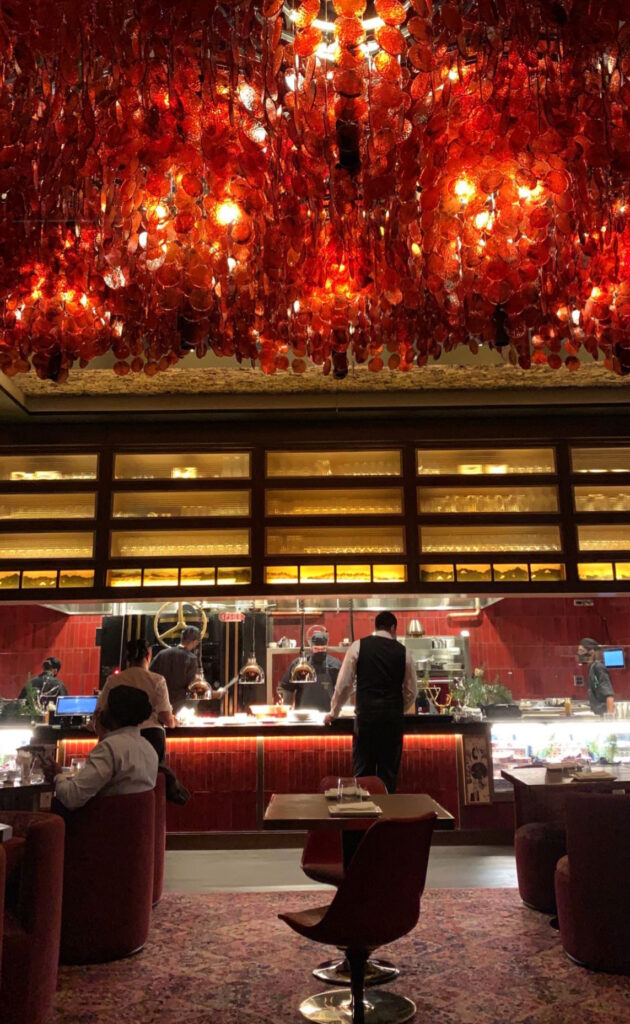
Upon reaching the threshold of Bazaar Meat’s sole, sprawling space, you are flanked by the kitchen. To your left stands a cold station (also known as the “Meat Bar”) that is distinguished by hanging hunks of ibérico ham alongside various other meats and cheese. To your right stretches a longer pass that plays home to all of the restaurant’s hot cooking. That kitchen, primarily, is distinguished by its custom IPSOR oven built in Barcelona. The hulking piece of equipment runs alongside the adjustable grills used to sear guests’ steaks. Meanwhile, a refrigerated case set into the corner of the kitchen counter (closest to the entrance) showcases an additional selection of meat.
Venturing forward, you find a front seating area split into two zones. Opposite the cold station stands a mixture of two-tops, four-tops, and the odd six-top beneath a shimmering light fixture made from strands of circular red glass. The corollary of this space, located across from the hot kitchen, is a bit larger and more plush. It features two-tops and four-tops with extensive banquette seating and a sprawling rug patterned after traditional kilim motifs. There’s a similar light fixture overhead, as well some metal fixtures that dangle lampshades over the banquette.
This latter area does not only abut the hot kitchen, but is framed by Bazaar Meat’s upstairs bar too. That surface, which seats seven, is set against windows that look out onto Wacker. An upper deck of bookshelves lines the ceiling above it, lending the bar—which you understand does not accept walk-ins—a sophisticated feel.
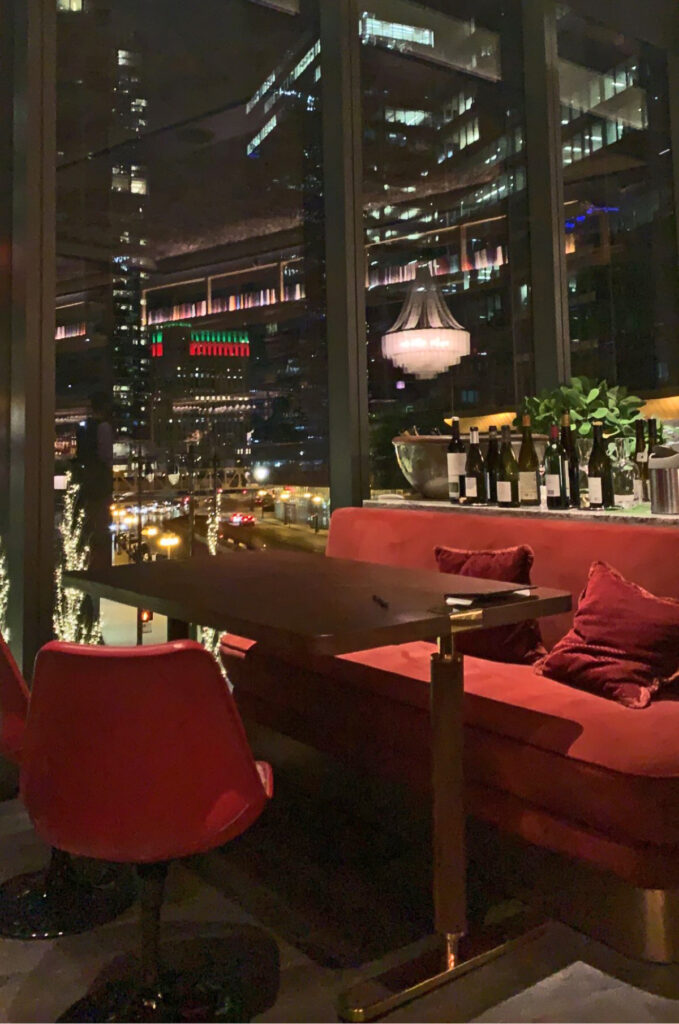
A narrow pathway bisects the two front seating areas and leads to a single, rear stretch of tables best positioned to appreciate views looking across Randolph and down the river. The most luxurious of these are the three floral-patterned horseshoe booths oriented directly towards the windows. However, a corner table (located at the far end of the bar and behind the wine station), offers comfort and seclusion for larger parties. It might be the most exclusive table of its kind in the entire city. The banquettes and four-tops closest to the windows, too, are rather nice. Not every guest at such tables will get to enjoy the view, yet the privacy (relative to the front seating areas) is worth it.
Other aesthetic elements of note include ceilings rendered in a pattern of pebbled stone and set within a coffered black frame with brass accents. These panels, which subtly glow thanks to LED strips, define the bulk of the overhead space (apart from the two aforementioned light fixtures made of red glass).
The restaurant’s tabletops are largely done in a dark tone of wood with brassy metallic strips running along their perimeter. However, just a couple, closest to the cold station, feature quartz countertops with a wooden trim. (White tablecloths, interestingly enough, were placed over tables during Bazaar Meat’s December debut but were eventually—and smartly—excised). The chairs set within the dining room, as well as the banquettes, largely feature red tones with a velvety texture. However, a set of four-tops closest to the bar display a plaid pattern, and a set of six-tops near the cold station are given chairs made from simple black leather.
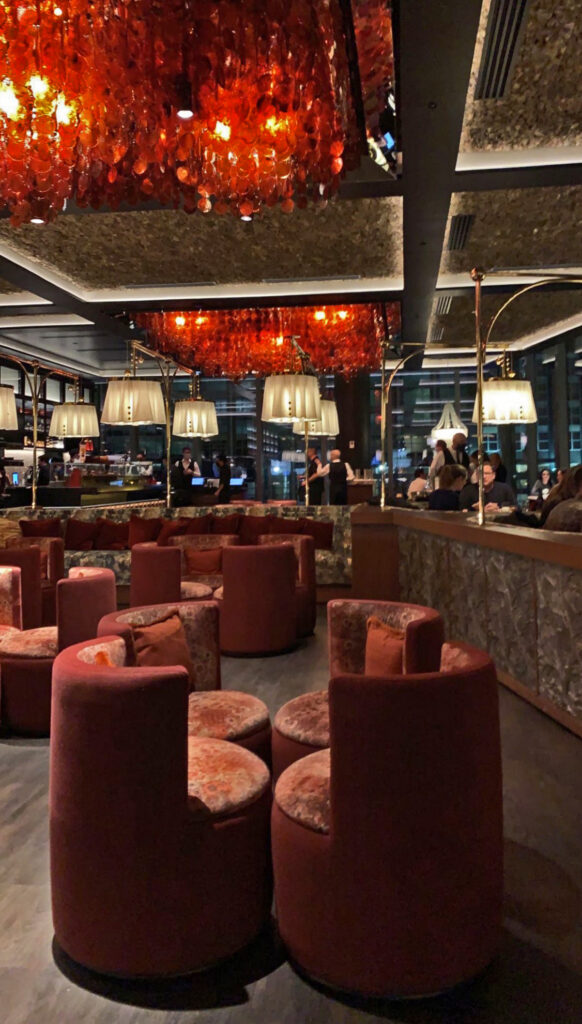
The room’s accents are derived from black columns (each with a riveted brass base), red velvet pillows (set within booths and banquettes), a couple chandeliers (placed at the corner tables), a couple small trees (set in large planters), a few shrubs (set in small planters on top of counters), and a large brass lantern (positioned towards the end of the path that leads to the rear dining area). Lastly, above and along the kitchen areas hangs cabinetry illuminated in a yellow tone and filled alternatingly with glassware or stacked wood. The cabinets of the cold station feature books (like the bar) and a series of six vintage Spanish advertisements for food products.
Overall, Bazaar Meat’s dining room sounds like a hodgepodge: glass, wood, stone, ceramic, metal, leather, velvet, and woven materials in tones of red, brass, and black with an assortment of patterns and greenery woven throughout. But the mass of aesthetic elements are, in fact, beautifully composed. No one aspect of the design screams for attention; rather, they work together to build an environment brimming with pleasing details. While there are too many to effectively bound during all the excitement of the actual meal, that seems to be the point.
Bazaar Meat constructs an ambiance filled with evocative, mixed influences that reflect the menu’s endless possibilities. They reflect, at core, the ephemeral and mysterious association one draws from its namesake marketplaces. There’s certainly a “wow factor” when you enter, yet the restaurant, nonetheless, feels intimate. Noise levels are well managed, and each guest’s vision is naturally drawn towards the windows that span the room’s three sides (rather than at each other). Thus, the space actually surpasses the Las Vegas original by combining its distinct style with a sense of the city. You get the sense that you are dining in an eclectic, exclusive jewel box floating over the river. Compared to the relatively austere décor at Gibsons Italia and RPM Seafood, it seems positively more luxurious.
Upon nestling into its seats, your party is quickly greeted by a busser, who asks your choice of water. The server arrives not long after, depositing weighty, tri-fold menus and noting your request for the wine list. In short order, the sommelier swings by a places the finely bound book before you.
The beverage program at Bazaar Meat begins with what is listed on the food menu. That includes a range of cocktails that are unique from Bar Mar’s selection below, most notably two $32 numbers made from Del Maguey’s ibérico mezcal and another, priced at $23, made with Torres brandy and Old Forester rye that has been “rested in goat leather.” While the “Refreshing & Easy” libations remain, including a “Plantain Scotch Highball” made from whiskies “sous-vided with coconut and plantains,” the spirit-forward options are well-suited to the upstairs restaurant’s beefier fare.
Of the half dozen beers listed on menu, all—notably—are made in Illinois. The selection comprises draft options from Metropolitan Brewing and Casa Humilde alongside bottles from Whiner Beer Company, Conrad Seipp Brewing Company, Off Color Brewing, and Half Acre Beer Company. It goes without saying that Andrés’s support of a diverse array of local artisans (within such a luxurious, globetrotting concept) is a great way to endear himself to the native population.

Bazaar Meat’s wines by the glass selection is where things start to get interesting. For any concept that deals so concertedly in steak is sure to attract customers looking to indulge in vinous delights at every price point. To that end, BTG forms the tip of the spear for the overall program. It signals, immediately, if diners should expect to be squeezed on account of their interest in drinking wine or if their oenophilia, in fact, will be celebrated.
The first of six categories comprises three kinds of Sherry: a Manzanilla ($10), a Fino ($18), and an Amontillado ($17) each offered in a 2.5 oz. pour. Though these fortified wines are often alien to American palates, they are important expressions of Andrés’s culture and pair wonderfully with the chef’s eclectic fare. The Manzanilla, for instance, goes well with all manner of fish and seafood. The Fino forms a fitting pairing with traditional tapas, fried foods, charcuterie, and cheese. Meanwhile, the Amontillado can stand up to mushrooms, poultry, and even lighter expressions of red meat.
The ”Sparkling” category offers guests a more familiar pleasure, and it does so while delivering value too. At the more affordable end of the spectrum, the restaurant offers a pair of Xarel-lo-based sparkling wines from legendary Spanish producer Raventós i Blanc. One, the 2016 “Cuvée José Andrés” ($16) is blended particularly for the chef’s restaurants. The other, a 2018 “Nit” Rosé ($15), is well-suited to those who desire some of the color and weight of red wine (Monastrell in this case) in their bubbly.
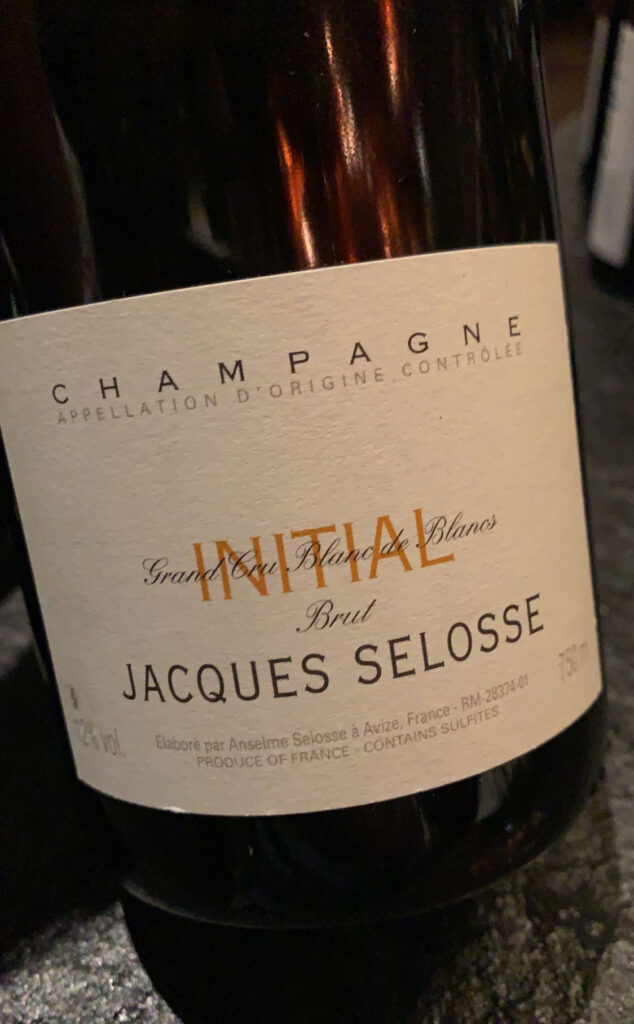
Diners who decidedly crave Champagne will find two multi-vintage options priced a bit higher than the Spanish sparklers: Vincent Couche’s “Eclipsia” ($25) and Louis Nicaise’s Premier Cru Brut Rosé ($29). These selections, in a sense, mirror the two Raventós offerings. They are joined by a super-premium pour: Henri Goutorbe’s “Special Club” Grand Cru Brut ($50) from the excellent 2008 vintage. All three of these Champagnes are Pinot Noir-based, which seems excessive until you remember that Bazaar Meat lacks the same raw seafood options (like oysters) as Bar Mar. This stylistic decision also means that the wines (especially the Goutorbe) are more approachable too.
The “White” category is patterned in a similar manner. There are two Spanish whites: a crisp, salty Albariño from Rias Baixas ($20) and a richer, bolder Godello ($16) characterized by flavors of granite. And they are joined by a balanced, medium-bodied, and attractively priced Grillo from Sicily ($15).
But more traditionally beloved varieties are in no way ignored. There’s Riesling from Schloss Gobelsburg ($15), “Estate Fumé Blanc” (Sauvignon Blanc) from Grgich Hills ($16), and Chardonnays from France—Paquet’s 2019 Saint-Véran ($17)—as well as Napa Valley’s Heitz Cellar ($25).
The “Still Rosé” section of Bazaar Meat’s BTG selection is a rather simple one. It comprises a single Garnacha-based wine from Navarra in Spain’s Basque Country: Itxas Harri’s 2020 “Ŕoxa” ($14). Though unfamiliar to you, this old-vine rosé from “well-drained gravelly limestone soils” offers a “dry,” “refreshing,” and “bright” drinking experience that aims at just what a broad base of consumers have come to expect from this category. The wine’s pricing and adaptability across the menu make it an appealing option.
Red wines, understandably, make up the bulk of the restaurant’s BTG selection. From Spain, guests will find Mencía from Raúl Pérez ($14), Rioja from López de Heredia ($18), and Priorat (a blend predominantly made of Garnacha, Syrah, and Merlot) from Vall Llach ($17). The sole Italian selection is a Nebbiolo d’Alba from De Forville ($18) that, sourced from a hilltop located between Barbaresco and Barolo, offers the class of those famous appellations at a more accessible price.
When it comes to France, the array of options leaves no stone unturned. There’s a Chinon from Charles Joguet ($18), Bourgogne from Robert Groffier ($40), Bordeaux from Château Peybonhomme ($16) and Duc des Nauves ($19), and Syrah from Vincent Paris ($17). Of this rather representative collection, the two Bordeaux are particularly interesting due to the fact that the former is made only from Malbec and Cabernet Franc and the latter predominantly from Merlot. Both, importantly, are unoaked: offering an approachable drinking experience in a forbidding genre.
While the Groffier, despite being a “mere” Bourgogne, ranks as the second highest priced BTG, its grapes are actually sourced from Flagey-Échézeaux and Morey-Saint-Denis. This means it sneakily offers a taste of top-tier Burgundy from a renowned producer and great vintage (2018) for a nice price. The premium it commands must also be weighed against the rather affordable Presqu’ile Pinot Noir ($16) from Santa Barbara. It is one of two domestic reds alongside a 2016 Long Meadow Ranch Cabernet Sauvignon ($26) sourced from Mayacamas and Rutherford fruit that offers a “friendly,” “accessible,” and “modern” expression of the steakhouse diner’s favorite grape.
The final category, “Non-Alcoholic,” is defined solely by Eric Bordelet’s “Perlant” Jus de Pommes a Sydre ($12). The producer’s alcoholic pear cider has featured on Oriole “2.0’s” beverage pairing, and you find his products to be rather tasty from the perspective of a wine drinker. The non-alcoholic, lightly sparkling apple juice—sourced from “6 varieties of organic bitter-sharp, bitter-sweet, and sour heritage cider apples”—promises a precise, refreshing experience presented with the same class as the alcoholic BTG offerings. It’s the kind of savvy selection that demonstrates the category was not treated as an afterthought.
Overall, you like the restaurant’s BTG list for it blend of popular varieties, well-known producers, and just a couple oddballs. The overarching focus on the Old World, alongside four notable selections from California, feels both focused and luxurious. Offering approachable, top-value wines from France (and even Spain or Italy) always presents a challenge, but Bazaar Meat’s wine director, Christian Shaum, has risen to the challenge. And he has demonstrated the fortitude to replace wines that have sold out—like a 2019 Raúl Pérez Albariño and a 2016 Hanzell Chardonnay—with comparable options. It makes the Australian, Argentinian, and New Zealandic wines that litter Maple & Ash and RPM Seafood’s lists seem like cop outs.
That being said, Bazaar Meat’s bottle list is where things get really interesting. Over the past few years, pricing for blue chip wines (particularly from Burgundy and Champagne) has skyrocketed. That, plus a general dearth of back vintages within the Chicago market, has made launching a program that offers either top producers or the kind of accessibility that comes with age a tall order. Until a new restaurant has had a few years to settle in, they tend to remain shackled to current release products from mid-range producers (the very same seen all across town). Though you have long celebrated establishments that look to auction houses and sellers like Ventoux Fine Wine to backfill their lists, few of the city’s wine professionals are empowered—or motivated—to do so.
However, you are pleased to say that Bazaar Meat opened with one of the most impressive bottle lists you have seen in Chicago to date. The selection—though continually changing as wines come on and off the features best in class values, back vintages, top producers, esoteric offerings, large formats, and veritable treasures galore.
These have included Champagnes from Bérêche (“Reserve”), Bollinger (2002 “La Grande Année), Dom Pérignon (2010 and 1975 “Oenothèque Commande Especiale” millésimes), Egly-Ouriet (2012 millésime), Jacques Selosse (“Initial” and 2008 “Millésime”), Krug (1988 and 1995 “Collection” releases), Philipponnat (2004, 2006, and 2007 “Clos des Goisses”), Pierre Peters (2014 “Chétellions”), and Roger Coulon (2012 Blanc de Noirs “Millésime”).
Notable white wine producers have included Emilio Rojo, López de Heredia (the 2001 and 2010 “Viña Tondonias”), Raúl Pérez (“Sketch”), and Terroir Al Límit from Spain; Coche-Dury (2018 Meursault), Darviot-Perrin (2016 “Les Perrières”) De Moor, Jobard, Lamy, Ramonet (2016 “Les Chaumees”), Raveneau (2019 “Montée de Tonnerre” and 2016 “Valmur”), Roulot (2015 Meursault), and Sauzet (2009 “Les Folatières”) from Burgundy; Domaine de Bellivière, Domaine du Pelican, Cotat (François and Pascal), Ganevat (“Victor de la Combe”), Guiberteau (2015 and 2018 Brézé), Huet, Joly (2017 “Coulée de Serrant”), and Vacheron from the rest of France; Benanti, Miani, and Paolo Bea from Italy; Dönnhoff, Emrich-Schönleber, Karthäuserhof, Keller, Maximin Grünhaüser, Peter Lauer, and Weiser-Kuenstler from Germany; Alzinger, Hirsch, Knoll, Nikolaihof, Pichler (F.X. and Rudi), Prager, and Veyder-Malberg from Austria; and Evening Land, Kistler, Kongsgaard, Littorai, and Sandhi from the United States.
Notable red wine producers have included Clos Erasmus, CVNE, Descendientes de J. Palacios, Faustino, López de Heredia, Marqués de Murrieta, Pingus, and Vega Sicilia from Spain; Cecile Tremblay (2015 “La Fontaine”), d’Angerville, Dominique Lafon, Dugat-Py, Génot-Boulanger (2002 “Les Combes”), Hubert Lignier, Jean Grivot (2009 “Les Roncières”), Joseph Roty, Le Moine (2013 Griotte-Chambertin), Pierre Girardin, Robert Chevillon, and Taupenot-Merme from Burgundy; Bertrand, Breton, Foillard, and Lapierre (“Sans Souf”) from Beaujolais; Clos Rougeard, Thierry Germain, and Guiberteau from the Loire; Allemand, Beaucastel (2001 and 2004), Clape, Guigal, Jaboulet (1999 and 2006 “La Chapelle”), Jamet, Ogier, Pegau (2006), Rayas (2009 and 2010), and Rostaing from the Rhône; Calon-Ségur (1989), Cheval Blanc (2000 “Le Petit Cheval”), Cos d’Estournel (1998 and 2004), Figeac (2009), Haut-Brion (1986), Lafite (2000), La Fleur-Petrus (2008), Léoville Barton (1990), Montrose, Pape Clement (1995), Pontet-Canet (2005), Rauzan-Ségla (1995 and 2005), and Troplong-Mondot (1998 and 2009) from Bordeaux; Ar.Pe.Pe, Bartolo Mascarello, Biondi-Santi, Dal Forno Romano, Emidio Pepe, Gaja (1997 and 2005), Giacomo Conterno, Giuseppe Mascarello (1971), Montevertine, Ornellaia (2007), Poggio di Sotto, Vietti, and Quintarelli from Italy; and Araujo, Bond (2011 “Melbury”), Bryant Family, Château Montelena (2007 and 2013), Corison, Dominus (2011), Diamond Creek, Domaine de la Côte, Dunn, Evening Land, Eyrie Vineyards, Heitz, Hundred Acre, Joseph Phelps (1996 “Bacchus” and 1999 “Insignia”), Larkmead, Littorai, Mayacamas (2005), Philip Togni, Ridge, Shafer, and Silver Oak (1992 and 1993) from the United States.
Bazaar Meat’s “Large Format” section is a pleasant surprise given how limited such selections are throughout most of the city. Notable bottles of champagne have included magnums of Bérêche (“Reflet d’Antan”), Billecart-Salmon (Rosé), Georges Laval (“Cumières”), Laurent-Perrier (Rosé), and Pierre Péters (2011 “Les Chétillons”) alongside a double magnum of Pierre Péters “Cuvée de Réserve.” Magnums of white have included Dönnhoff (2019 “Estate” and “Schlossböckelheimer Felsenberg”), F.X. Pichler (2018 “Dürnsteiner Kellerberg” Grüner Veltliner), J.J. Prüm (2019 Wehlener Sonnenuhr Kabinett), Rollin (2016 Corton-Charlemagne), and Roulot (2015 “Le Cailleret”). Meanwhile, magnums of red have included Alex Foillard, Bruno Giacosa (1999 “Le Rocche del Falletto”), Cavalotto, Cayuse, Château Simone, d’Angerville (2006 “Champans”), de Vogüé (1990 “Bonnes Mares”), Guy Breton, Heitz (2001 “Bella Oaks”), López de Heredia (2004, 2005, and 2006 “Viña Tondonia”), Montevertine (1996 “Le Pergole Torte”), Ornellaia, Pierre Girardin (2018 Volnay), Haut-Bailly (2010), and Pontet-Canet (1995).
Lastly, the restaurant’s “Dessert Wines” have included Sauternes from Caillou (2005), d’Yquem (2007) and Rieussec (2011); Barsac from Coutet (1998 and 2010); Alsatian stickies from Huet (2002 and 2020) and Trimbach (1994 Gewurtztraminer “Sélection de Grains Nobles” and 1997 “Clos Ste. Hune” Vendanges Tardives); Port from Niepoorte (2004 “Colheita Tawny”) and Quinta do Infantado (2013); Madeira from Broadbent (1997 “Malmsey”) and D’Oliveiras (1988 “Frasqueira”); and an eclectic “Around the World” assortment featuring Keller, Kracher, Maculan, Royal Tokaji, and Schäfer-Frölich.
While this dizzying array of producers, vineyards, and vintages might seem overwhelming, it stands as a laundry list of quality and affirms Chicago’s capacity to appreciate the world’s finest wines. If anything, you would like to see the range of rosé options expanded beyond the current five (four from Provence, one from Spain). But Bazaar Meat’s bottle list is clearly a product of both passion and discernment. It does not present a mausoleum of impressive names that the wider public will never drink, but invites imbibers across all spending categories to enjoy themselves.
That, of course, is enabled by rather modest markups—a laudable policy that Gibsons Restaurant Group has maintained across all of its properties. (For it would be all too easy to squeeze customers at Gibsons Italia and Bazaar Meat on account of the view alone).
For example, the restaurant’s Jacques Selosse “Initial” ($365) is competitively priced relative to Cherry Circle Room ($330), Kyōten ($429), RPM Seafood ($444), and Maple & Ash ($525). The 2010 Dom Pérignon ($425) undercuts RPM Seafood ($565). The 2019 Raúl Pérez “Sketch” ($121) is significantly less than the bottles at Joe’s ($195) and Maple & Ash ($250). The 2015 Domaine Roulot Meursault ($490) costs significantly less than the same vintage at RPM Seafood ($650). And the 1986 Château Haut-Brion ($1430) is priced far lower than the bottles at RPM Steak ($1746) and Maple & Ash ($2300)
However, in some cases, this doesn’t hold true. The 2017 Domaine Raveneau “Valmur” ($1,400), for example, costs more than the bottles at Maple & Ash ($1,025) and RPM Seafood ($1,111). And the 2019 “Flor de Pingus” ($235) is priced a bit over the same wine at Maple & Ash ($230).
Nonetheless, you enjoy seeing such strong downward pressure applied towards the city’s wine pricing. Bazaar Meat’s program, even if it does not offer the absolute best value on every bottle, clearly makes an effort to do so. This philosophy, if maintained over the long hall, will quickly establish the restaurant as one of Chicago’s best havens for wine appreciation. Conceptually, Andrés’s wide array of small plates naturally enrich the enjoyment of a broad range of styles. At the same time, the restaurant’s emphasis on beef ensures that the finest reds can truly shine. Meanwhile, a $50 corkage fee (with a limit of two 750 mL bottles) is fairly priced relative to competing establishments and the generous pricing seen across the list.
Finally, while you find the standard set by the RPM restaurants, Hogsalt properties, Gibsons Italia, and Maple & Ash to be laudable, you think Bazaar Meat really distinguishes itself when it comes to wine service. Perhaps it has something to do with the intimacy of Andrés’s space and the cohesion of the team of three sommeliers that conducts things upstairs and down. But there is a flair and confidence to the vinous stewardship that you find highly charming. It makes the experience of selecting a bottle from the excellent list feel even more rewarding, and it’s buttressed by a wealth of knowledge indicative of real ownership over the selection.
The wine team demonstrates a clear vision—via slow-oxygenation, decanting, or double decanting—of how to bring each bottle to its apotheosis. Thus, you do not simply pay for the wine, but for expertise that will engineer a superlative drinking experience. This high standard of service is rarely seen outside of fine dining, and it is a credit to the seriousness with which the restaurant approaches its program. Most importantly, this enthusiasm exists without the slightest trace of snobbery. Bacchus would be proud.
With the beverage order settled, you can finally turn your attention towards Bazaar Meat’s rather expansive menu. While certain dishes—like fish, lobster, suckling pig, and steak—are large-format endeavors designed to feed several people, most selections fit into the tapas mold. Each of these small plates delivers a couple perfect bites per person for a standard party size of four. Thus, the sky is really the limit when appending such items to your order.
Discounting dishes that come with sides of bread, you can sample almost as many options as you want from the introductory categories without spoiling the main event. However, given the prevalence of certain totemic luxury ingredients across the preparations, price and propriety may form the limiting factors—and time too. You have found that a full-fledged, no holds barred Bazaar Meat experience clocks in somewhere between three and a half to four hours. That not only equals, but exceeds the commitment at most of Chicago’s fine dining establishments (Alinea’s “most intimate, immersive, and cutting edge” kitchen table, for example, seats parties at 5 PM and 8:45 PM).
Yet time spent in Andrés’s care, under the auspices of a Gibsons-inflected staff, flows by effortlessly. Save for certain niceties of synchronization and elaboration, the service equals the standard set in the city’s Michelin-starred dining rooms. The captains are well-versed in describing the menu’s more exotic ingredients and offering their general suggestions as to the size and scope that make for a representative order. (Of course, when you double or triple that number of dishes, they record the entirety without even missing a beat).
The overall mood among the staff, meanwhile, is cheery and energetic. Yes, the cadre lacks some of the gravitas of the jacketed servers that work Italia or Rush Street, but their duties are different. Rather than staging three or four distinct courses of seafood, salad, pasta, and steak, Bazaar Meat’s crew might drop twenty different dishes on the table during the length of an evening. Staggering each of these items and describing them to just the right level of detail—as patrons, no doubt, continue to enjoy what has already been put before them—demands a high degree of sensitivity and an unerring focus.
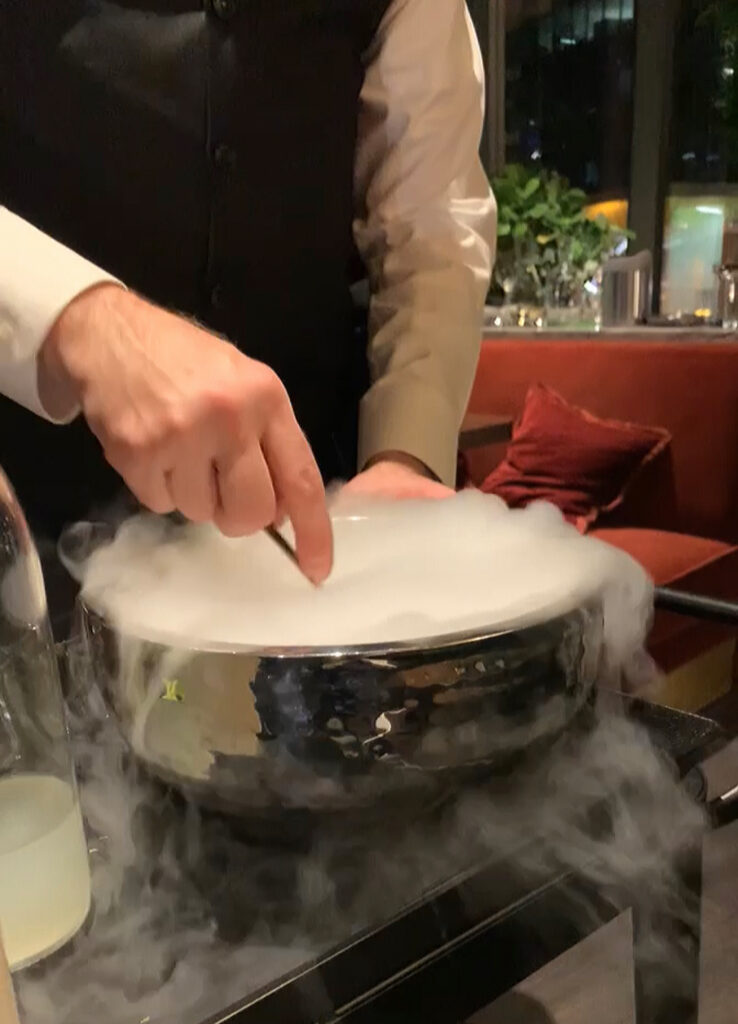
Upon placing your order, you have witnessed how each server has walked over to the sommelier station to consult with their beverage counterparts on how to best structure the meal. For, while the menu’s categories display a certain progression, all but the steaks are broadly interchangeable. Thus, the wines that Shaum has ensured are showing at their peak can, with your server’s intervention, be served with the fare they are most particularly suited to. This kind of orchestration is both rewarding (as an oenophile) and engaging (as a diner). Such an advanced practice of pairing amounts to something like a bespoke tasting menu that draws totally unique connections, forged in wine, between parts of the menu that might not naturally be mixed and matched.
Once that plan is set and the meal actually begins, you need do no more than sit back and enjoy the show. Your captain, as well as the sommeliers, remain attentive throughout the duration of dinner. However, the delegation of essential tasks to a whole range of bussers, food runners, and even managers is where Bazaar Meat shines. The restaurant operates with an overarching team spirit—a sense of cohesion and shared ownership—that ensures no plate or drink ever lays empty for long. The full range of the staff, from top to bottom, is empowered to deliver anything and everything a customer could ask for. That, you think, is the “Gibsons touch,” and you can see why Andrés found the partnership so appealing.
In practice, the collaboration ensures that the Spanish chef’s imaginative food is intelligently described, expertly prepared, artfully presented, and perfectly paced to ensure an evening of ultimate comfort and unparalleled decadence without a single rough edge. In this manner—where every want is fulfilled before you can even think of it—service ensures that guests can enjoy each other’s company, the ambiance, and the view as a superlative gastronomic experience unfolds effortlessly before them. Such a feeling, you think, transcends even the highest expressions of the classic “steakhouse” form.
But such a case is best made by evaluating the comestibles themselves.
Bazaar Meat’s menu begins with a category titled “Little Snacks” that correlates with the “Snacks” section of the temporary “The Bazaar Experience.” Since there is significant overlap between the two sets, you will combine them for the purposes of this article while also demarcating the four items that are unique to the latter selection.
Starting off, the “Bagels & Lox Cone” ($6 per each) is reminiscent of Thomas Keller’s famous salmon tartare cornets from The French Laundry. However, while that preparation combines salmon tartare and red onion crème fraîche in a black sesame seed-studded twirl, Andrés’s iteration is filled with dill cream cheese then topped with salmon roe and a few of the same seeds (which, of course, feature in a classic “everything bagel” seasoning).
Though perhaps lacking the delicacy of Keller’s three-Michelin-starred amuse-bouche, Bazaar Meat’s cone makes for an ethereal, enjoyable start to the meal. The bites arrive neatly tucked into a wooden holder that facilitates their grasping while preserving their brittle structure. On entry, the orbs of roe caress the palate before popping alongside the crunch of the sesame seeds. The briny, nutty combination is cushioned by the sour, anisey-sweet cheese and punctuated by the crackle of the cone’s shell. Everything combines on the tongue for an instant before disappearing and leaving you with a lingering finish reminiscent (though only slightly) of the titular bagel.
Whether or not the snack truly mimics its namesake, it is technically sound and appealingly playful. The cone, which is always among the first items to arrive at the table, forms a dream pairing with any sparkling or white wine.
The “Cotton Candy Foie Gras” ($8 per each) taps into a similar kind of nostalgia and succeeds to an even greater degree. The bite arrives attached to a wooden stick set into the same kind of tabletop holder. The cloud of spun sugar is immediately recognizable, yet it hides a small morsel of chilled foie gras mousse that has been coated in crispy amaranth.
With one bite, the cotton candy evaporates and your tongue strikes the duck liver. The layer of sugar combines with the crunch of the amaranth and envelops the cold mousse. As it melts on the palate, the foie gras unleashes a rich, buttery texture with a refined meaty flavor that becomes absolutely transfixing via the sweet-nutty supporting notes. The whole morsel disappears in a flash but leaves a finish of impressive length and purity. The bite ranks among the very finest preparations of foie gras you have ever tasted—and it’s just the kind to make a believer out of the luxurious liver’s skeptics. Within Chicago, you think only Oriole “2.0’s” delectable version can compare.
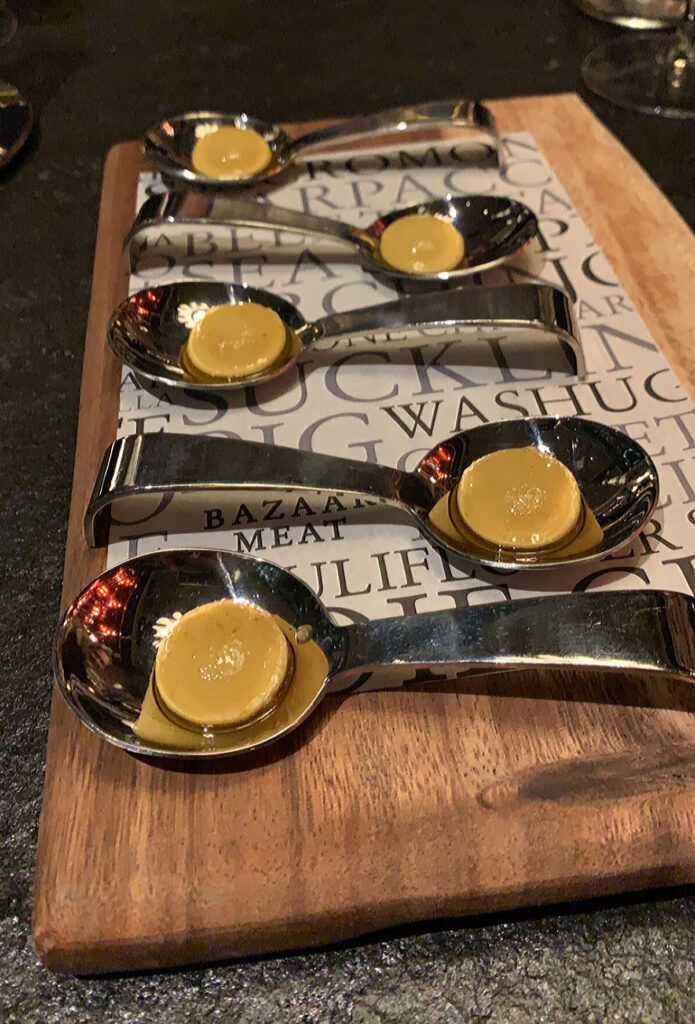
Bazaar Meat’s “Marinated ‘Ferran Adrià’ Liquid Olive” ($15) is a classic totem of molecular gastronomy that Andrés describes in glowing terms: “this will change your life!” The Spanish chef, of course, worked at elBulli for three years and is well-equipped to present his take on one of the master’s most legendary recipes.
Whereas the original technique, in a fine dining setting, demanded a delicate tableside plating of the fragile spherified olives, Andrés has concocted a version that preserves the dish’s textural novelty with a lot less fuss. Bazaar Meat’s “modern and traditional” iteration arrives neatly set on an assortment of spoons. Upon reaching your palate, what seems to be a firm orb of green olive gives way immediately and turns to liquid. It imparts a pristine, nutty flavor accented with a tangy-sweet bite of piparra pepper. While the visual trick is not rendered as well as Adrià’s original, the overall sensation remains sound. The dish stands as an accessible representation of the specification technique and a reverent tip of the cap to Andrés’s old boss.
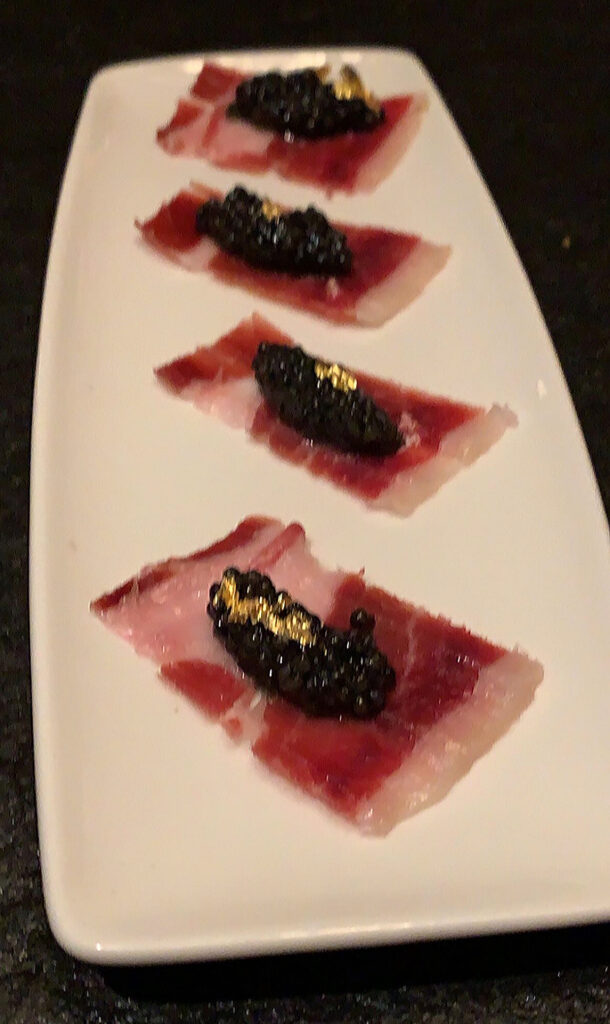
By comparison, “José’s Taco” ($16 for 2) is an indulgence in just what the Spanish chef—himself—loves. As far as luxury totemic ingredients go, the dish represents just the kind of hodgepodge that hack chefs use to charm the conspicuous consumption crowd. But Andrés, as far as you know, has been serving the item for at least a decade, and you think that fact servers to grandfather the preparation as more of a “classic” than a cynical, more contemporary ploy.
“José’s Taco” comprises jamón ibérico de bellota (produced from pigs whose diet, in the period before processing, consists entirely of acorns), Osetra caviar, and a few flakes of gold leaf. However, on “The Bazaar Experience” menu, the bite features an additional layer of nori (or dried seaweed).
Both versions are defined by the interplay of rich, deeply nutty ham with the buttery, also quite nutty flavor of the roe. And, texturally, the slick sheen of the thinly-sliced ibérico does a good job of cushioning—then melding with—the delicate caviar. The seaweed component, when present, makes the bite a bit easier to grasp. It helps absorb the ham’s melting fat and adds a salty, briny character that matches the Osetra.
“José’s Taco” is a fun, frivolous bite priced well enough to appeal to diners who might not indulge in the restaurant’s full-fledged caviar service or order an extensive amount of the prized jamón. The dish does not offer a particularly intense, persistence, or life-altering expression of its luxury totems. Yet it imbues them with a sense of playfulness and value that effectively demystifies them for a wider audience. That, really, is what Andrés’s cooking is all about.
The ”Super-Giant Pork-Skin Chicharrón” ($12) immediately calls The Aviary’s “Giant Crispy Pork Skin” ($17) to mind. However, while the latter dish is deposited at tables in its towering glory (leading to an obnoxious amount of salt and vinegar spice coating the table), the former benefits from a bit of tableside preparation. Diners witness the oversized pork skin—peeking out of a paper wrapping—being wheeled over. The server places a metal bowl before you on the table then goes about smacking the chicharrón with a mallet to yield more manageable (but still plenty large) pieces. They cleanly slide it all into the bowl then leave you with a Greek yogurt-based sauce for dipping.
Texturally, Bazaar Meat’s crispy pork skin equals that seen at The Aviary. It breaks apart cleanly and offers a puffed, crisped consistency that shatters nicely between your teeth. With regard to seasoning, you prefer the savory depth of Andrés’s chosen za’atar spice blend to the all-too-aggressive salt and vinegar used by the birdcage. (But, hey, how else are they going to match the over-the-top booziness of their drinks?) The Greek yogurt dipping sauce, topped with olive oil and a bit more of the za’atar, provides a perfect foil. It makes for a complete bite that is crunchy, nutty, faintly herbaceous, and tangy in turn. Though the portion seems sizeable, the chicharrón disappears quickly. It’s an engaging shared snack and a significantly greater value than the version Alinea Group offers.
Andrés’s “Croquetas de Pollo” ($12) represent one of the chef’s most direct engagements with a classic dish of Spanish cuisine. Traditionally, the “miniature fried savory patties” (likened to arancini and salt cod fritters) are bound with a béchamel-like sauce before being coated in breadcrumbs and dropped into hot olive oil. Bazaar Meat’s version, described as “chicken-béchamel fritters,” seems to be a rather faithful take on the recipe.
The dish arrives in a custom glass vessel styled after a chicken (complete with red-tinted comb accents). The croquetas themselves are of a medium size and sit—about a half dozen per order—stacked within a paper wrapper. Impressively, they do not scald your tongue when you dive in right away. Rather, the crisp crumb coating yields to a warm, pleasantly creamy interior laced with shreds of chicken.
Overall, the croquette does a nice job of holding its structure across several bites. Its flavor is rich, though not overly so, and unblemished by any interloping ingredients. The sensation, thus, is straightforward in its meaty, comforting, stick-to-your-ribs quality. This reflects Andrés’s intention to respect the traditional recipe while mastering its execution and offering it to American diners in an attractive way. The dish is also one of just a few that are offered downstairs at Bar Mar, where you think it forms a superlative drinking snack alongside so many seafood options.
“Patatas Bravas” ($10) represent another canonical Spanish recipe that Andrés has embraced for Bazaar Meat’s menu. Traditionally, the dish comprises chunks of potato that are fried in olive oil then served with a salsa brava (made from tomato paste, sherry vinegar, and pimentón) and an aioli. And the chef, once more, seems to respect the classic recipe by offering a preparation described as “fried potatoes, spicy tomato sauce, [and] alioli.”
Yet, once the plate arrives, it becomes clear that Andrés had a little fun with the presentation. Rather than an assortment of potato chunks, guests receive one singular fried potato in the shape of a bull’s head (or, should you say, the Bulls’ logo). (The version of the dish served at Bazaar Meat in Las Vegas, it should be noted, is characterized by many rectangular pieces. That served at Bar Mar—and titled “Tater Tots”—takes the shape of three fish).
Inspiration aside, the bull-shaped serving is like the crispiest hash brown patty you have ever experienced. It outdoes McDonald’s—and even Kasama’s excellent iteration—by way of a finer, more deeply browned crust that reveals a clean, fluffy interior. The “Patatas Bravas” break apart cleanly and, dragged through the concentric layers of the spicy tomato sauce and aioli that coat the bottom of the plate, offer a nostalgic “ketchup and mayo” sensation with perfectly moderated heat. This visually striking presentation does not fall short when it comes to technique!
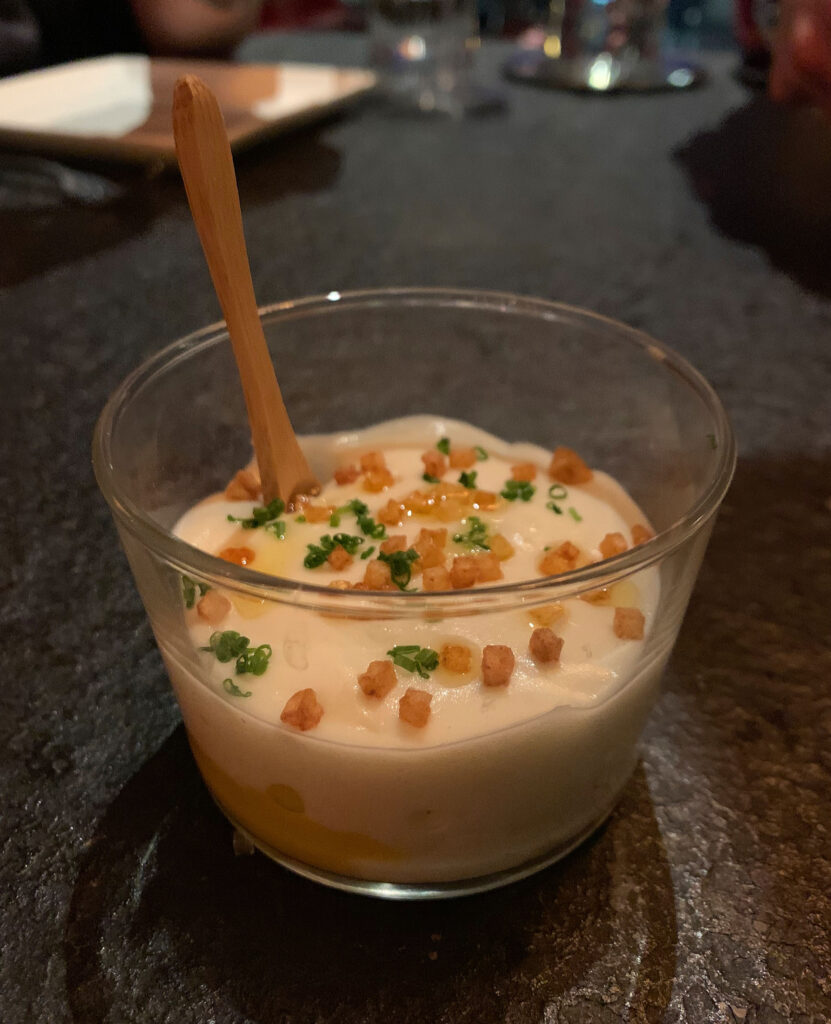
The last of Andrés’s riffs on the Spanish canon comes from “The Bazaar Experience” menu. It is titled “Tortilla de Patatas ‘New Way’” ($9 per each) and references a style of omelet considered “essential” to the cuisine. Traditionally, potatoes are cut into small pieces (with onions sometimes added), sautéed in olive oil until softened, drained, mixed with eggs, and slowly cooked on both sides to yield a robust outer crust.
Unlike the reverence with which the chef treats the “Croquetas” and “Patatas Bravas,” Andrés breaks all the rules when restructuring the recipe in his “new way.” Guests receive a small glass that has been filled with frothy potato espuma. Within it lie a 63° egg (“the point at which the egg white is just cooked, but the yolk is still delicious creamy and runny”) and some caramelized onions. Finally, the presentation is topped with tiny cubes of crisped potato and a scattering of chives that float on the surface of the espuma.
Digging in with the provided wooden spoon, you are struck by just how light and ethereal the whole preparation is. The potato element disappears instantly on your palate until you penetrate deeper into the dish and infuse it with some of the luscious egg yolk. The onions provide a fleeting touch of sweetness—and the cubed potatoes a dash of crunch—but the composition is really an exercise in deconstruction. Rather than cooking the tubers, draining them, then encasing them in whisked eggs, guests are drawn to combine the two ingredients during the process of eating the dish. (In this case, it’s the egg that is embedded in the potato rather than the opposite).
The flavors, overall, are pleasing, yet their lack of intensity seems strange when married with such fleeting textures too. The preparation feels like something Andrés would serve as an amuse-bouche at minibar, and perhaps that’s a good thing. It offers an impressive demonstration of molecular gastronomic techniques at an affordable price that allows each member of the party to indulge. It won’t go a very long way towards filling your stomach but, rather, teases the mind.
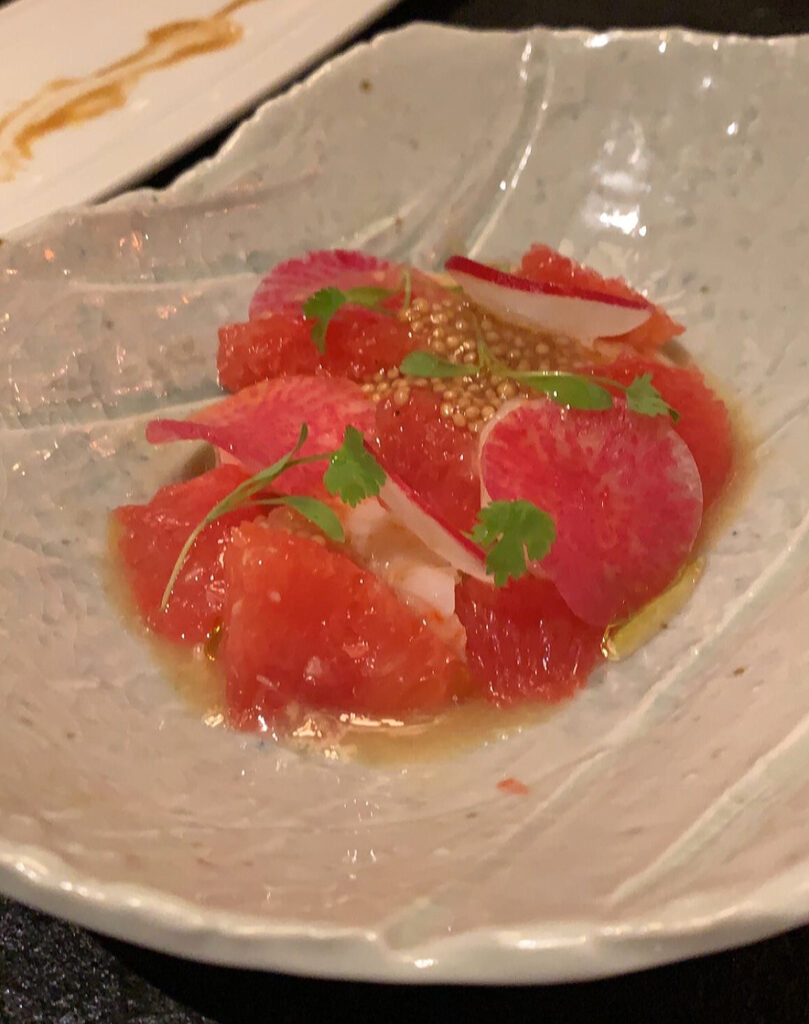
Bazaar Meat’s “Shrimp Cocktail in Grapefruit, Irma Rombauer Classic” ($14) stands as one of only a few seafood dishes on the menu (relative to the wider selection at Bar Mar). Its title references the author of Joy of Cooking (a St. Louis native), whose recipe for “Shrimp in Grapefruit” appears in the 1931 first edition. Andrés’s respect for Rombauer is apparent in his shout-out, and the chef goes so far as to assert the fresh salad “is more American and more important than the more famous shrimp cocktail.”
The dish comprises pieces of Florida Sun Shrimp—a sustainable and ethical purveyor founded in 2013—that have been poached, dressed in a mustard seed vinaigrette, then garnished with grapefruit segments, radish slices, and a few sprigs of parsley. While the combination of citrus and shellfish is certainly timeless, you are struck by how the gushing texture of the grapefruit matches the plumpness of the shrimp. The extra burst of tartness—relative to the usual squeeze of lemon—is well moderated by the heat of the mustard and tang of the vinegar.
Personally, you find that the shrimps’ natural sweetness, compared to a classic “cocktail” preparation, is a bit masked by the grapefruit. But Rombauer’s recipe, as an opening “snack,” is invigorating and palate cleansing. Plus, you admire that Andrés has taken an opportunity to demonstrate his reverence towards the history of American gastronomy and one of its most consequential works.
Bazaar Meat’s “Boneless Buffalo Chicken Wings” ($13) represent yet another classic form in which the chef has chosen to indulge. The price gets you five choice morsels of meat—seemingly taken from the bird’s “flat” (or wingette)—neatly arranged on skewers. They are lightly dressed in a buffalo-style sauce then topped with very finely diced celery and a solitary cube of blue cheese.
While decidedly dainty, the wings are true to type. The meat is juicy with a nice touch of fried crust. The buffalo flavor is subtle yet long-lasting. It blends with the cleansing celery and funky blue cheese on the finish to make for one of the most elegant chicken wing experiences imaginable. You would kill to serve these at a cocktail party. Moreover, the dish epitomizes how the restaurant draws on its technical prowess to deliver guests a quintessential bite of something beloved and nostalgic without spoiling the rest of the meal.
Next up are two airbreads: the “Kobe Airbread” ($12 per each) from Bazaar Meat and the “Philly Cheesesteak” ($12 per each) from “The Bazaar Experience” menu. Each preparation centers on a crisp, puffed roll that looks something like a small baguette. Both airbreads come topped with thin slices of “Kobe beef,” yet the former features onion jam and parmesan espuma stuffed within it while the latter is filled with cheddar.
Because Bazaar Meat serves actual Kobe “eye of the rib” sourced from Hyōgo Prefecture, you must assume that they would not misuse the designation when referring to the airbreads. That being said, the experience is more about the filling than the topping. As you take a bite, the tender beef yields to the bread’s fragile crust, which cracks and releases a torrent of filling. Undoubtedly, it’s best to eat these bites while positioned over the table. However, both the parmesan espuma and cheddar cheese are impressively light in body and deep in flavor when they touch the palate.
Overall, it is impressive to see the sizable airbread collapse into something that eats more like half its size. In doing so, like the buffalo wings, it delivers the essence of a sandwich without so much substance. The Kobe does not quite display the kind of marbling for which the meat is known, but it forms a tasty (if flashy) foil for the dough and filling. Between the two versions, it’s hard to pick a favorite, but you hope that Bazaar Meat is able to roll out its “’Italian Beef’ Airbread” (which has appeared on the online menu but is unavailable in person) soon. That version—featuring giardiniera and an “au jus espuma”—would be a clever use of the form and an unabashed love letter to the Windy City.
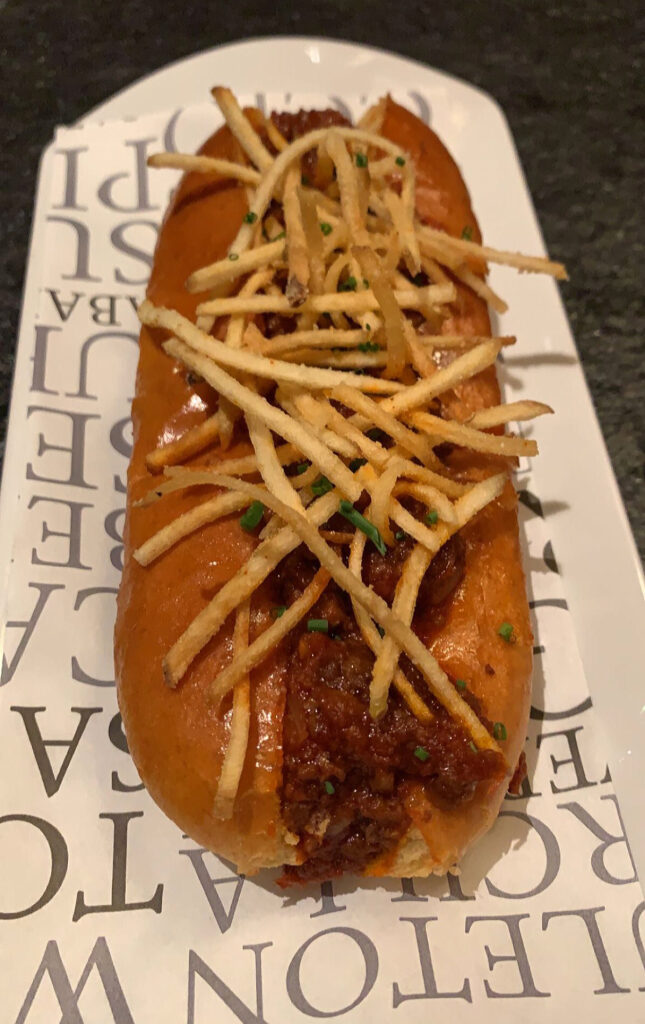
Andrés also serves a more substantial sandwich, the “Sloppy Joe” ($12), using the same brioche buns Bar Mar utilizes for lobster, tuna tartare, and calamari rolls downstairs. The creation of the sloppy Joe is dated to 1930, when a cook named Joe started serving a “loose meat sandwich” at a café in Sioux City, Iowa. The dish was popularized throughout subsequent decades but reached a capstone with the release of Hunt’s “Manwich” sauce in 1969 (“an easy one-pan meal for the whole family” that only required the addition of cooked ground beef). Classic recipes simmer the meat in a mixture of ingredients like condensed tomato soup, ketchup, brown sugar, cider vinegar, mustard, and onion powder.
Bazaar Meat’s version, by comparison, is a bit more upmarket. The ground beef—likely sourced from the restaurant’s steak trimmings—is prepared in the same manner as a Bolognese. (That, really, just substitutes the American recipe’s processed ingredients for higher quality tomatoes and fresh vegetables). The end result is stuffed into the brioche bun and topped with thin, crispy “straw” potatoes (that also appear as one of the menu’s side dishes).
Attacking the sandwich, you are first impressed by the texture of the bun. It displays an eggy, buttery density that does well to hold the meat while lending it a delectable accompanying flavor. The Bolognese itself is well executed, being tender and runny in just the right amount while still seeming more like a gourmet sloppy Joe filling than a repurposed pasta sauce. The beef and onions take the lead while being buttressed by a nice bit of tomatoey sweetness. Those “straw” potatoes provide a good textural contrast and burst of salt, but they’re bound to fall off the sandwich as its eaten. In truth, you think they are there in part to make the “loose meat” look more appealing.
Overall, you think Andrés has crafted a delicious take on gloriously lowbrow recipe—one that has subsequently made its way onto Bar Mar’s lunch menu too. It is also worth noting, relative to some of the other opening bites, that this dish is more substantial and would probably best be split into two or three portions (though you certainly enjoyed one all to yourself).
The last of the “Little Snacks” comes from “The Bazaar Experience” menu, but, in fact, this dish has also featured as one of Bazaar Meat’s desserts. The “Payoyo Cheese Tart” takes its name from a type of cheese made from the milk of endangered Payoya goats and Merino sheep in Andalusia. The resulting product is described as “soft, creamy, and slightly tangy, with an aroma of herbs and a balanced saltiness.”
To make the dish, the firm Payoyo is processed into a soft, thick cream that lines the inside of tart shell. A pine nut praline hides beneath it while thin shreds of the cheese, as well as black truffle, provide the finishing touches. Diving in, you find the crust of the shell to be well-formed and robust but perhaps just a little too thick. (Note the difference in flakiness between the two pictures). The creamy Payoyo, nonetheless, does a good job of clinging to the palate with a deeply flavored, salty-sweet sensation that ends on a tangy note. The shreds of cheese echo those notes while providing some textural intrigue. The same goes for the truffle, which imparts a hint of earthiness.
At its flakiest, the “Payoyo Cheese Tart” could perhaps feature as a “Little Snack.” However, especially if the shell runs the risk of coming out too thick, it should remain as one of the desserts. The flavors, relative to the other, lighter bites, are simply too rich to endure at the very beginning of the meal. But the overall package is appealing and works to introduce a more obscure product to the restaurant’s audience.
The next section of Bazaar Meat’s menu is titled “’Say When’ Caviar Service.” It comprises three types of the roe—”Russian Ossetra, Black Diamond Caviar” ($7 per gram), “Siberian de Luxe, Bjork Caviar” ($10 per gram), and “Oscietra Royal, Bjork Caviar” ($13 per gram)—starting at 10 grams. The “Say When” part of the presentation, you must say, strikes you as funny. The caption reads “we keep scooping until you say ‘When!’” yet the caviar is portioned out of guests’ sight. So it really only means that you can continue to order more of it, which is how any menu normally works.
That curious bit of pomp aside, you find the brands Andrés has partnered with to be unique. Both Black Diamond Caviar and Bjork Caviar (whose corporate office is located in Las Vegas) are new to you. But, given the premium that names like Petrossian, Caviar Russe, Regiis Ova, and Regalis can fetch, obscurity can sometimes be a virtue. While Maple & Ash offers one ounce portions (approximately 28 grams) of Kaluga ($100), Siberian ($160), and Osetra ($220) on its menu, Bazaar Meat provides a lower entry point at $70, $100, and $130. Of course, Andrés’s roe ultimately proves more expensive, but this accessibility is important for customers who might not usually splurge on such an item.
Also, whereas Maple & Ash sells pre-portioned containers of its caviar, Bazaar Meat scoops its own out of a larger tin. Your roe arrives on an attractive wooden tray containing individual plates for each variety alongside a colorful porcelain spoon. The accompaniments—pizzelle (a traditional Italian waffle cookie) and a squeeze tube of crème fraîche—lay under a folded napkin to the side.
With regard to quality, there is a noticeable climb between each of the three types of roe. Black Diamond Caviar’s “Russian Ossetra” is rather dark green with a slight clumpiness to the pearls and a more pronounced saline quality alongside hints of nuttiness. Bjork’s “Siberian de Luxe” (sourced from Belgium) displays a lighter tone of green similar to what might be called a “golden” Kaluga or Osetra. The pearls display greater firmness relative to each other and impart a more pure nutty quality with hints of salt. Lastly, Bjork’s “Oscietra Royal” (also sourced from Belgium) possesses a striking greyish tone (sometimes called “platinum”) with very fine definition between the pearls and a purely nutty flavor.
While each of the caviars—alone and in relation to each other—offer a fine representation of the totemic luxury ingredient, you think that the accoutrements fall short. Placing the crème fraîche into a squeeze tube is a playful and functional choice that allows for precision application. However, the pizzelle—as much as you want to love them—add little to the roe. Ideally, the cookies would form a flaky, slightly sweet canvas upon which the nutty notes of the caviars would shine. Yet, in practice, the feel like ordinary crackers that fall well short of what even the most traditional blini would offer. As always, you admire Andrés’s inventiveness. But, in this case, the pizzelle sound better on paper and actually work to detract from what should be a truly decadent experience. (As best as you can tell, this kind of caviar service is unique to the Chicago location, and that might explain why the cookies were not thoroughly tested).
Within the “Soups & Salads” category of Bazaar Meat’s menu, you have sampled “Lucía’s Salad” ($12) and the “Not your Everyday Caprese Salad” ($12). The former, in truth, is kind of a play on a Caesar. Thus, both preparations, in essence, reflect Andrés’s reinterpretation of two of the form’s classic recipes.
“Lucía’s Salad” comprises five “cups” of gem lettuce (each taken from the top of head) that have been filled with smaller, lightly dressed leaves, slices of anchovy, “air croutons,” and a heap of grated parmesan cheese. The dressing, to your palate, tastes every bit like a traditional Caesar. So, when you grasp one of the cups and eat it like a taco, it is kind of like experiencing a perfectly composed Caesar salad bite.
The outer layer of lettuce provides the crunch, the inner leaves deliver the dressing, the anchovy offers a fishy burst of umami, the “air crouton” adds a fleeting doughy note, and the grated cheese covers it all with a fluffy layer of nuttiness. There’s nothing groundbreaking about it, but the dish succeeds in concentrating the essence of a Caesar and packaging it into a tapas form. Given how hard it is to share salads in such a setting, you think the idea is both clever and sure to please those who desire only a bite or two of something “green.”
The ”Not your Everyday Caprese Salad,” by comparison, demands that you use your utensils. However, you think the dish succeeds in much the same way. Its shallow bowl contains plump cherry tomatoes, “liquid mozzarella,” and “air croutons” tossed in pesto. Compared to a standard caprese (or even, say, a caprese skewer), this bottom layer of sauce ensures a more comprehensive dressing than the standard basil, olive oil, and salt.
You scoop up a tomato, a ball of cheese, and a crouton then drag it all through the pesto. When the combination hits your palate, the membrane of the mozzarella bursts and coats everything in a thick cream. That joins with the juice of the tomato and the pronounced fruity-basil note of the pesto to create a dead ringer for the best possible bite of a traditional caprese. The “air crouton,” once more provides a faintly bready note that helps anchor the more aggressive flavors. While more involved than the “Lucía’s Salad,” Andrés’s take on a caprese offers five cohesive, concentrated bites of a classic salad that can easily be enjoy among all his other finger foods.
The menu’s next section, “From the Meat Bar,” features dishes drawn from that separate counter opposite the hot kitchen. Understandably, those hanging legs of jamón ibérico de bellota are put to good use—both by the ounce and as part of an “Embutidos” assortment of Spanish and domestic cured meats. Yet, since these particular products are produced outside of the restaurant, you will reserve any extended commentary. That is, except to say that the meats are expertly sliced and served with an excellent “Pà Amb Tomàquet” (bread with tomato) that is perfectly crispy and robustly seasoned.
The real areas of interest within this category are, instead, the “Tartares” and “Carpaccios.” Andrés kicks off the former selection with a bit of a history lesson, describing how “tartare first appeared in Escoffier’s culinary guide in 1921” and was named after the tartar sauce with which the French chef’s “Beefsteak à l’Americaine” was served. Bazaar Meat offers three distinct takes on the form: “The Classic,” ($28) “Salmon,” ($24) and “’Beefsteak’ Tomato” ($26) tartares.
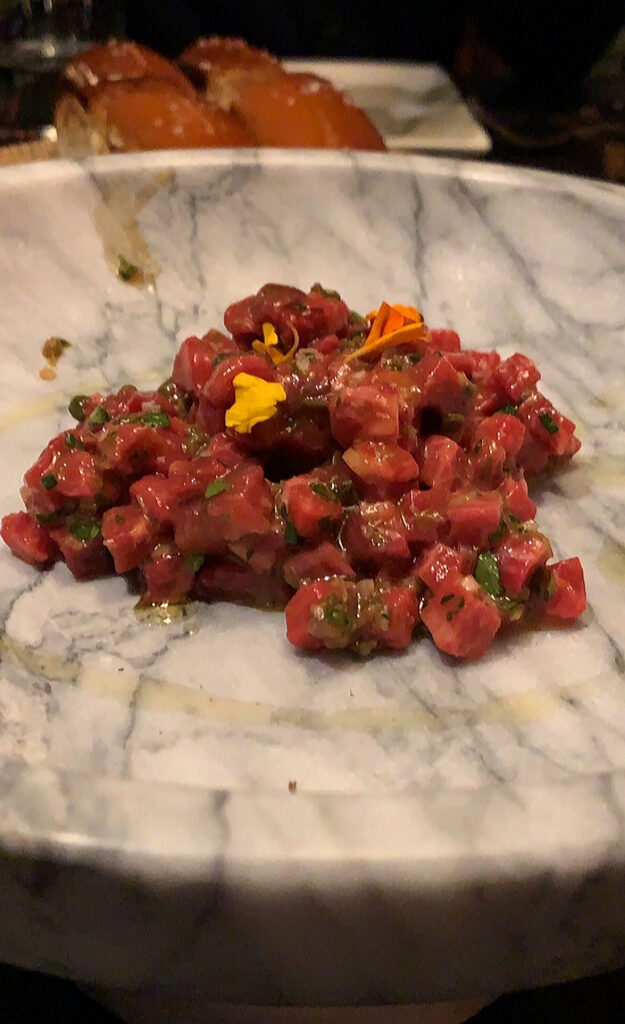
The first of these is prepared tableside in a stone bowl and features cubes of beef sirloin tossed in Savora mustard (a “cult” condiment in France featuring “eleven spices and aromatics”), egg yolk, HP Sauce, and anchovies. Upon being mixed together, “The Classic” tartare is presented and served with small buns of the same brioche that features in the “Sloppy Joe” and Bar Mar sandwiches.
True to its name, the dish delivers a delectable mouthfeel of tender steak that has been enhanced, in a straightforward but irresistible fashion, by all manner of umami. Between the mustard and the HP Sauce (primarily made with tomato and tamarind), the meat is accented by a wide array of herbs and spices—everything from cinnamon and cloves to cumin, malt vinegar, and honey. This, plus the luscious coating of egg yolk and tang of anchovy, all amounts to a preparation that represents, to you, the quintessence of a beef tartare. If anything, the serving seems a bit too small (but that speaks, you think, to the quality of the sirloin used).
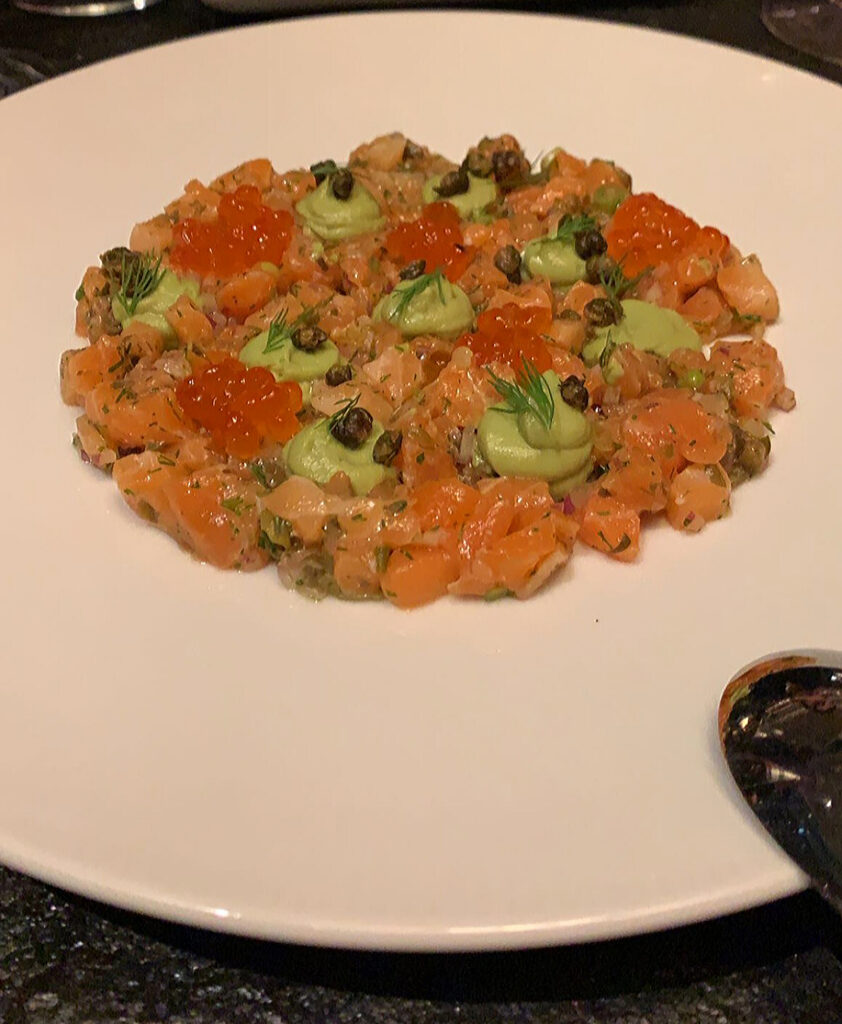
The second of the tartares, “Salmon,” is also a success. Rather than being prepared tableside, the dish arrives neatly arranged—sans bread—on a large plate. It comprises chunks of the fish that have been bound with yuzu, soy sauce, and wasabi then topped with salmon roe, avocado cream, capers, and dill. In place of the brioche buns, guests are provided a set of seaweed crackers on which to spoon the mixture.
Whereas the beef tartare was defined by intense umami, the salmon variant strikes the palate with a surprising freshness drawn from the yuzu, avocado, and dill. The fish’s mouthfeel is, like the sirloin, luscious. Its texture is enhanced by the pop of salmon roe and crunch of the capers too (which, importantly, avoid imparting too much salt). Hints of the soy sauce and cleansing notes of wasabi help to balance out the brighter notes too. While the delicate and airy seaweed crackers form a fitting vehicle for the salmon tartare, you almost prefer eating it on its own. This method allows the dish’s fine textures to dance on the palate.
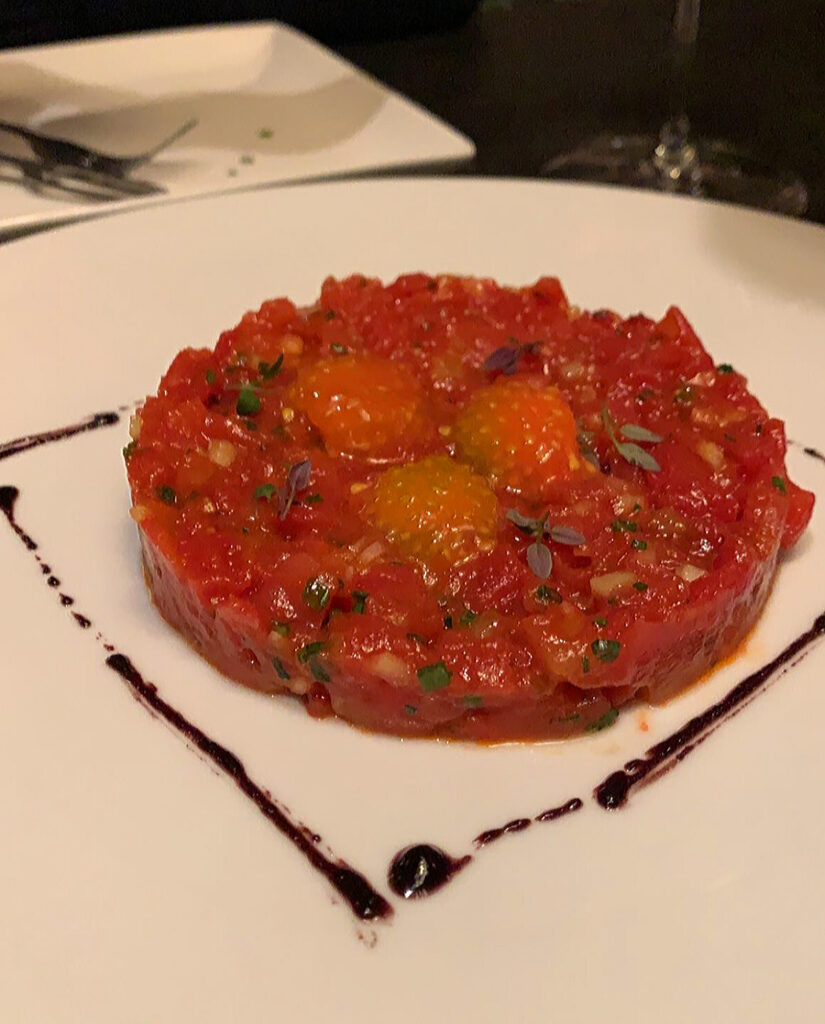
The last of the tartares, titled “’Beefsteak’ Tomato,” might be the best of the bunch. That’s unsurprising, for Andrés operates a pair of “vegetable-forward” fast-casual restaurants named for the same cultivar. Beefsteak tomatoes are known for their “large size” and “meaty texture,” displaying a “classic” tomato flavor that can, at its best, tend towards the sweeter side. The variety’s ribbed texture resists mechanized growing and, thus, wide commercialization—meaning that it is more likely to be cultivated by smaller farms that better serve the food system.
For his tartare, Andrés purées the tomato with olive oil until slightly chunky. It is combined with small bits of cucumber and black olive then dressed with balsamic vinegar. Three globules of the beefsteak’s pulp and seeds form a garnish while humble leaves of romaine are provided as an accompanying canvas. Diving in, you would never expect an entirely vegan tartare to taste so good (though Momotaro’s namesake dish, back in the day, certainly also impressed). The beefsteak is fresh, smooth, but surprisingly hearty thanks to the chunky segments (and fine bits of cucumber and olive) interlaced within. The cultivar’s natural sweetness is unlocked by the balsamic, ensuring that—even when paired with the lettuce—each bite is powerfully flavored. The dish is perfectly balanced and stands as a great testament to the chef’s technical mastery—even (or especially) when he’s not working with the usual luxury ingredients.
Bazaar Meat’s selection of “Carpaccios” begins with yet another history lesson, describing how the dish was “first popularized at Harry’s Bar in Venice around 1950” and named after “Venetian artist Vittore Carpaccio because of the red and white hues in his paintings.” Once again, the chef offers three distinct examples of the form to choose from: “Vittore 1950” ($24), “Bison Buffalo Style” ($26), and “King Trumpet Mushroom” ($24).
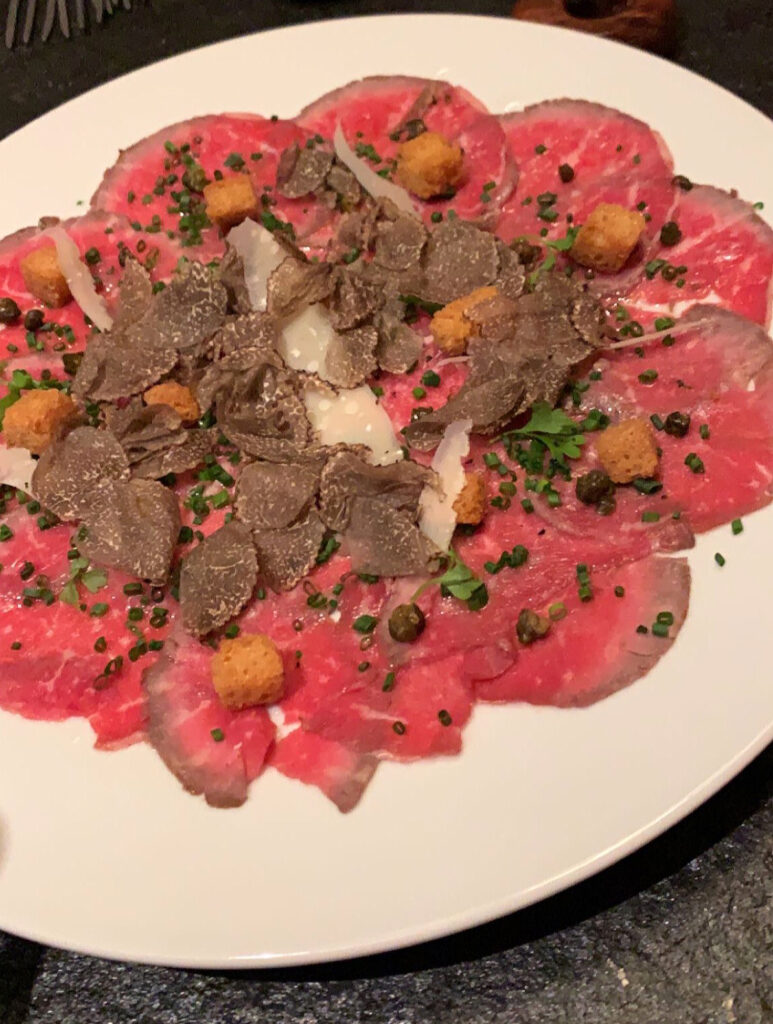
The first of these, named after the carpaccio’s namesake, is styled after the original recipe. It comprises thinly sliced tenderloin of beef in a light sherry dressing with a garnish of capers, croutons, black pepper, and parmesan cheese. Black truffles, as pictured, are offered as a supplement that is said to be “especially delectable” with this dish (and two others).
Compared to the forceful flavor of “The Classic” tartare, the beef carpaccio seems much more nuanced. It offers a highly refined textural experience in which the pink, well-marbled meat melts on the tongue and cushions the assortment tangy, crunchy, and salty accompaniments that follow. The truffles, if present, certainly add to the fun with a transfixing aroma and note of earthiness. Overall, you think the “Vittore 1950” is a fine example of the form that has earned the right to be called “classic.” It lacks some of the excitement of other offerings yet shows a subtlety that could be highly appealing for parties that prefer a more delicate appetizer.
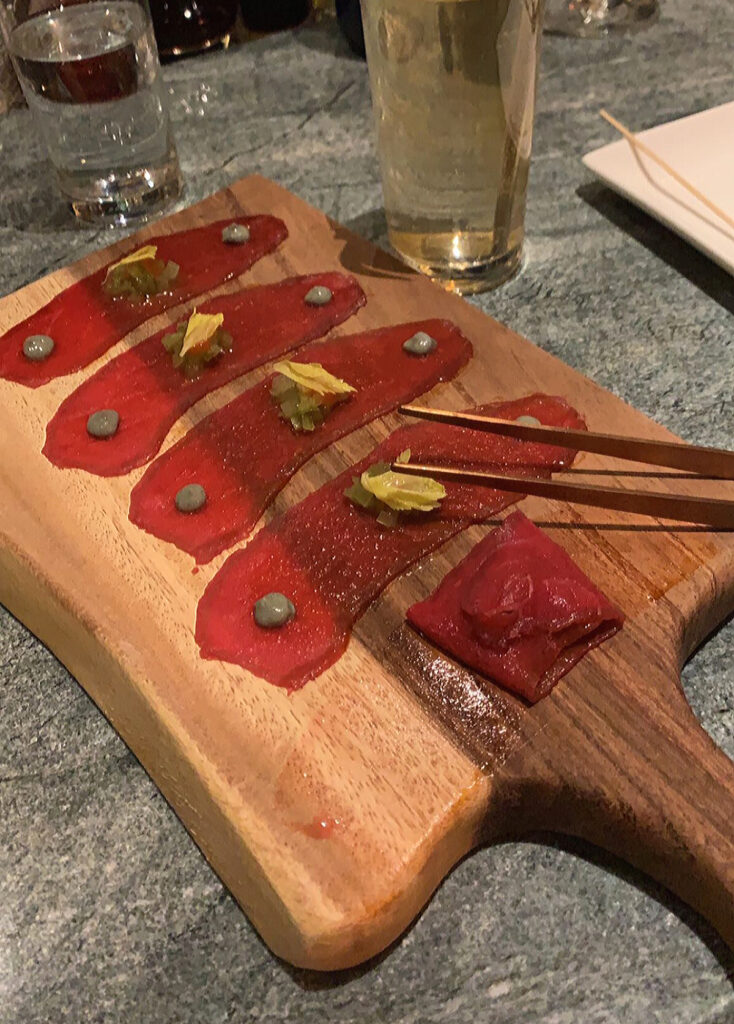
The ”Bison Buffalo Style” carpaccio, on that note, certainly fits the bill for novelty. Though two plays on buffalo wings within the same menu might seem strange, keep in mind that the “Boneless Buffalo Chicken Wings” have only appeared more recently as part of “The Bazaar Experience” menu. Besides, you find Andrés’s apparent love of the hot neon sauce par excellence endearing.
Relative to the circular slices of beef tenderloin, the bison is rendered as five distinct strips. Each contains, in its center, a mound of pickled celery with a dab of Buffalo sauce. On each end, the meat is dotted with a dollop of cream made from blue cheese. Guests are instructed to roll the package up using a set of accompanying tweezers to yield a cohesive, layered bite.
Upon hitting the palate, the bison displays an appealing trace of moisture that lends a feeling of succulence. The meat’s natural sweetness yields to the tangy blue cheese, then another layer of flesh, then the sour pickled celery and hot Buffalo sauce. Another layer of bison, a bit more blue cheese, and a final taste of the meat complete the effect. The overall sensation is both delicious and elegant—the sauce’s slow burn being perfectly balanced by the accompanying refreshing and cooling notes. The bison, which ironically is often confused for buffalo, plays its part well. The meat’s flavor is totally pristine and complementary to the nostalgic “wing” combination. The dish, like so many of Andrés’s engineered bites, is a surprise and a delight.
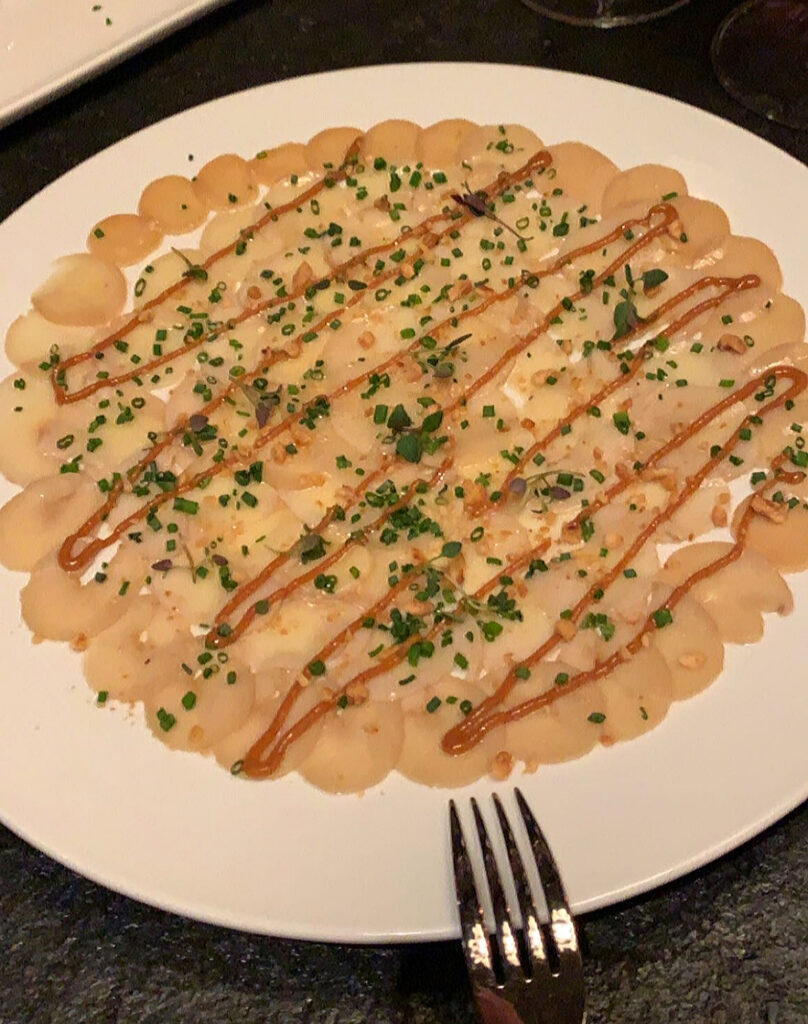
The last of the carpaccios, “King Trumpet Mushroom,” is something of a corollary to the vegan “’Beefsteak’ Tomato” tartare. It is, you think, the most visually striking of all the category’s preparations, comprising countless slices of the titular fungus that have been carefully arranged around a plate. They topped with a zigzag of mushroom confit, given a touch of herb oil, and garnished crumbled hazelnuts, chives, and oregano.
Relative to the beef and the bison, the small size of the king trumpet slices means that you naturally scoop up a few at a time. This leads to the natural formation of layers when they strike the palate. Most of the texture, otherwise, comes by way of the crunching nuts and fleeting trace of the herbs. In terms of flavor, the mushroom confit does much of the heavy lifting, and it is excellent. The gelled substance imparts a concentrated dose of pure umami that draws out the lighter flavor of the king trumpet slices. From that base, the hazelnuts, chives, and oregano shine as simple but thoughtful accompaniments. Andrés really knows how to impress when avoiding animal products.
While Bazaar Meat’s opening menu progressed towards heavier fare at this point, “The Bazaar Experience” offerings have included a selection of “Traditional” and “Modern” tapas that expand upon the preceding small, shared plates. In capturing these additional options, you will begin with the latter of the two categories, for it contains the lighter fare.
“Oysters & Yuzu” ($20), now that it has come onto the menu, represents the first occasion in which the bivalve has featured upstairs. (Bar Mar, as you have already mentioned, offers any array of different dressed oysters as part of its particular theme). The manner of preparation, in this case, is rather simple, yet patrons will surely be happy that the mollusk now appears in some form. For few pieces of shellfish signal a proper steakhouse meal like the oyster.
This particular iteration pairs the bivalve with some cracked black pepper and a frothy topping of yuzu “air.” You knock the shell back in one fell swoop, leading to a sensation in which the meaty oyster kisses the tongue then disappears within a fleeting cloud of citrus. The pungent note of pepper plays well off of the mollusk’s moderate brininess. But the dish is defined primarily by the oyster’s pristine fruity flavor that is framed by those ethereal traces of tart yuzu. The “air,” as a foil for the bivalve, works beautifully.
Andrés’s “Dragonfruit Ceviche” ($18), interestingly enough, features a similarly frothy element. The preparation comprises a halved segment of the titular fruit that has been filled with chunks of tuna and bits of pecan before being topped with a hibiscus “air.” That final element, rendered as spiky peaks of reddish foam, replicates the dragon fruit’s thorny exterior. It’s a striking presentation that makes you feel as though you are pulling a finished ceviche out from within the cactus skin.
The dish itself mingles the fruit’s fresh, mildly sweet and tropical flavor with the luscious mouthfeel of diced tuna and rich, crunchy pecan. The hibiscus element—as with the yuzu “air”—imparts a sensation that is pleasantly fleeting. Its tart-sweet, floral flavor invigorates the other ingredients and draws out an attractive savoriness in the fish. The preparation succeeds by balancing that umami element against the fruit, making for a ceviche of great concentration.
By comparison, the “Live Sea Scallop Ceviche” ($20) is more straightforward. There is no visual trickery here—just pristine chunks of the mollusk that have been dressed in leche de tigre and served on the half shell. They are joined by crumbled corn nuts, a few sprigs of cilantro, some gobs of sweet potato purée, and a tangle of fresh seaweed.
While each piece of the scallop is fairly small, its soft, glossy flesh has a resounding effect on the palate. The subtle, lasting chew melds with the smooth, creamy sweet potato and al dente seaweed ribbons to form a robust, cohesive, but ultimately tender package. The crispy roasted corn nut provides the essential contrast. It offers a burst of salt that amplifies the seaweed strands’ own latent saline notes and joins with the tangy leche de tigre to flavor the scallops.
The bivalves, once these balancing notes are brought into play, are ultimately characterized by a deep, lasting sweetness that is echoed by the sweet potato purée. Each bite of the mollusk bursts like a shellfish gusher, displaying a degree of purity and pleasure that you find seared versions rarely attain. The “Live Sea Scallop Ceviche” ultimately tastes as vibrant as it sounds and impresses, certainly, with regard to its ingredient quality.
The last of the “Modern Tapas” dishes you have sampled is Andrés’s “Spanish Octopus” ($21), an ingredient whose mastery forms a point of pride for any chef that hails from the country. While a more traditional preparation of the cephalopod appears as part of Bazaar Meat’s “Meats from the Sea” section, the present categorization has allowed for a bit more boldness.
The octopus arrives as one long tentacle boasting an aggressively charred outer crust. It is lightly dressed in chicken escabeche—an Andalusian Arabic term that refers to a sweet-and-sour sauce “usually containing vinegar and honey or date molasses” with paprika for coloring—then flanked by a few cherry tomatoes. The dish’s key component is drawn from caramelized onions, which have been rendered as a series of light brown and black globules spread throughout the plate.
Whether you attack the tentacle’s meaty base or crispy, curling end, you find the meat to be excellent. The octopus’s outer crust crackles cleanly to reveal a faintly chewy—but ultimately juicy and tender—interior. That flesh sees itself enriched by the tangy chicken flavor of the escabeche and the bursting acidity of the cherry tomatoes. But the onion, concentrated into two distinct levels of caramelization, steals the show. While the more lightly colored gel works to underscore the cephalopod’s sweetness, the more darkly colored one accentuates (and enhances) its charred crust. In this manner, both dimensions of the octopus (inner and outer) benefit from a double dose of allium that drives the degree of savory flavor higher and higher. The end result is both texturally perfect and decadent—an ode to the eight-limbed ingredient that shows it at its best.
The ”Traditional Tapas” segment of “The Bazaar Experience” menu, by comparison, features comparatively classic, focused preparations. The “Asparagus Rice” ($16), for example, looks a lot like risotto. The dish comprises a bowl of tender grains swimming in a creamy green liquid. While the color, ostensibly, comes from puréed asparagus, most of the flavor is drawn from Los Cameros cheese.
The peppery, vegetal variety—produced from a mixture of cow, sheep, and goat milk in La Rioja—lends the rice a creamy consistency with a sneaky burst of acid on the back end. That sensation joins with a bit of preserved lemon to cut the sweet-bitter asparagus (whose tips form a fitting garnish). But it’s the vegetable’s deeper tones, aligned with the Los Cameros, that make the plate delicious. The mix of funky, earthy, and fresh notes amplify the “Asparagus Rice’s” richness and transcend any notion that it’s a mere “vegetable” dish. Rather, Andrés has found the one cheese that transforms his chosen ingredient into a conduit for even greater pleasure. If the chef had, in fact, titled this dish a “risotto,” you wouldn’t bat an eye!
The next item, titled “Gambas a la Zahara” ($22), is a dish that has featured—in a larger form—on Jaleo’s menu before. As part of “The Bazaar Experience,” it comprises six head-on shrimp that have been sautéed in olive oil and garlic then dressed simply with chile de árbol and parsley. A couple pieces of pan de cristal, sans tomato, complete the preparation, which takes its name from the hilly municipality of Zahara de la Sierra in Cádiz.
Diving in, you find the flesh of the shrimp to be plump and juicy. The liquid drawn from its head, likewise, is delectable. While the garlic forms a more familiar accompaniment, the chile de árbol surprises with its traces of smoky, nutty, and slightly grassy notes. Still, the pepper’s effect on the composition is relatively minor. The dish is defined by shrimp, its juices, and a bit of bread to mop things up. It does not reinvent the wheel or even try to be too artful in its presentation (the vessel looking positively barren when compared to the Jaleo image above).
But, considering the dearth of shellfish items on Bazaar Meat’s opening menu, you find that the “Gambas a la Zahara” form an appealing—if strictly serviceable—option. They, like the “Oysters & Yuzu,” bring a bit of Bar Mar’s seafood specialization upstairs. At the same time, you find the straightforward, savory flavors at hand better suit your expectations than the “Irma Rombauer” shrimp cocktail from the “Little Snacks” section.
The last of the “Traditional Tapas,” a “’Rossejat’ Negra” ($24), parallels the standard “Rossejat” ($26) served as part of Bazaar Meat’s “Adventurous Eaters” category. Both preparations center on the titular Catalan form of rossejat de fideos. That latter term, fideos, refers to a vermicelli-like noodle of approximately three inches in length. Rossejat, in turn, refers to the “toasted” finish that is applied to the pasta. Essentially, the dish is a “very traditional” variant of paella that displays, according to Andrés, “a fascinating connection with Italy.”
The ”’Rossejat’ Negra,” owing to the recipe’s origin from “The Bazaar,” focuses more on seafood. It comprises fideos that have been stained with squid ink, mixed with a sepia (or cuttlefish) sofrito, toasted, and then topped with Florida Sun shrimp along with a few dots of aioli. Attacking the dish, you are struck by the manner in which the noodles tangle together and break off in segments that accord with the crispy layer formed at the bottom of the pan. The shrimp, of course, are plump as ever.
But most of the preparation’s flavor is drawn from the sofrito, a “foundational building block for many Spanish recipes” that tastes of onion, tomato, and the “squid-like” cuttlefish. The sepia naturally complements the squid ink notes of the noodles, yet you find the overall combination to be a bit too subtle. For, once the shrimp are eaten off the top of the dish, you are left to contend with the dark, lingering, earthy tinge of the pasta. It’s not a disagreeable taste, per se, but more strictly intellectually appealing than many of Andrés’s crowd-pleasing recipes across the rest of the menu.
Nonetheless, you find the standard “Rossejat” preparation from Bazaar Meat’s selection to be more successful. It might even rank among the restaurant’s best dishes! The fideos, in this case, are unblemished by any squid ink. They are simply cooked until toasted in the same shallow pan then topped with crispy bits of pig ear and puntillitas (fried baby squid). Some dots of aioli, as before, complete the presentation—which you have also chosen as a canvas for shaved black truffle on one occasion.
Compared to the larger pieces of shrimp that line the “’Rossejat’ Negra,” the crispy pig ear and squid morsels are better scattered throughout the entirety of the dish. This means that just about every scoop of the pasta will feature a crunchy bottom, an al dente interior, and a flaky-chewy topping all in one. Such a bite, combined with a bit of the aioli, offers a complete expression of the dish that is defined by pleasing, savory flavors (with well-attuned levels of salt) in a nostalgic noodle-meets-paella package. Without the staining of ink, the brown tones of the fideos simply look better too. You can appreciate the novelty of the dish more purely without being driven firmly towards such concentrated squid and sepia notes.
Beyond the “Rossejat,” Bazaar Meat’s “Adventurous Eaters” category contains three additional items that are all worth ordering. The first of these, “Fresh Sea Urchin” ($26), would almost seem more at home in the “Little Snacks” section. The dish comprises four pieces of grilled pan de cristal that are each topped with a lobe of uni then finished with a glistening slice of ibérico lardo—a cut of salumi made from the pig’s fatback. Such an extraordinary canapé seems cut from the same cloth as “José’s Taco,” yet, perhaps, this particular pairing of roe and fatty pork was viewed as a more challenging version of the chef’s namesake bite.
The first time you tried the “Fresh Sea Urchin,” the titular element was dwarfed by the bread and the lardo was sliced so thinly that you could barely recognize it. However, on two subsequent occasions, the preparation had clearly been refined. The uni was nestled snugly into thin, curled, and crispy pieces of the pan de cristal with a perfectly sized segment of the cured ibérico fatback serving as a blanket. Importantly, the lardo had been gently heated to help soften its texture and bring a layer of dripping fat to the surface.
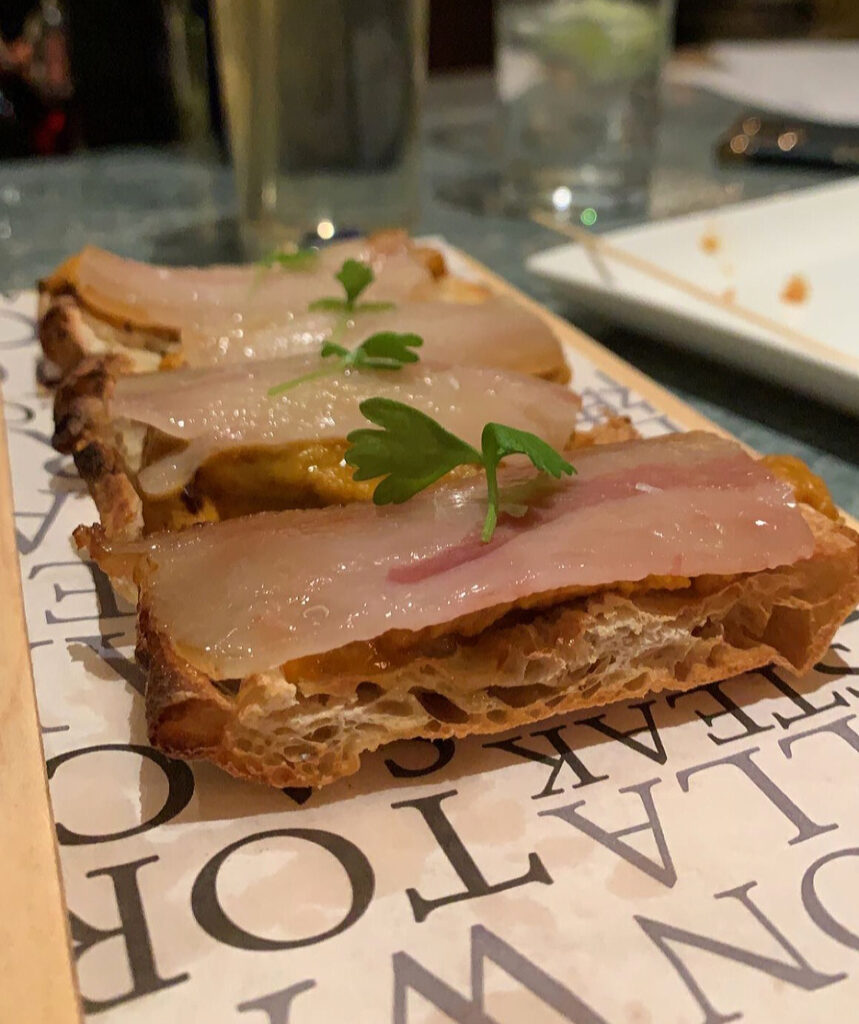
Thus, when you attack the composition, the grilled bread and rendered pork provide a warming contrast to the cool, creamy sea urchin. As the pan de cristal crunches between your teeth, the uni combines with the dripping fat of the lardo and stretches itself into every nook and cranny. The rest of the lardo, as it hits the tongue, imparts a bit of salt and a slight chew that quickly melts. Ultimately, the bread and pork serve to define the sea urchin, amplifying the ingredient’s natural umami while highlighting its sea sweetness with a burst of fat and salt. The dish is well-engineered with a truly lasting flavor, making for the rare kind of composed uni bite (at $6.50 per piece) that really does deliver outsize pleasure.
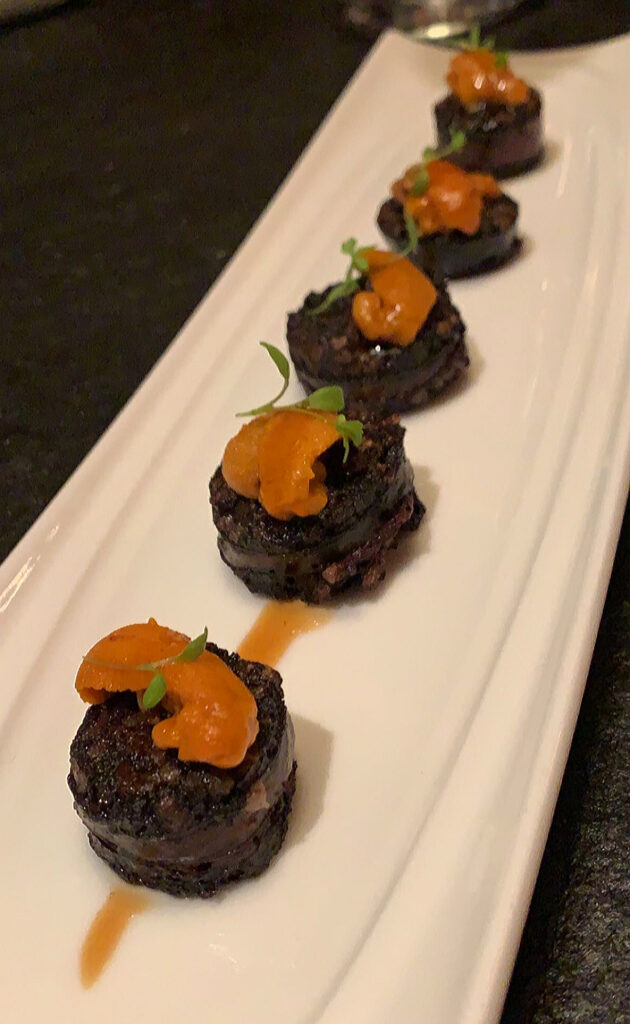
Andrés’s “Morcilla with Uni” ($18) is done in much the same vein. However, rather than topping a piece of toast, the sea urchin—in this case—sits atop of slice of Spanish blood sausage. At $3.60 per piece, guests receive a smaller portion of the totemic luxury ingredient. Yet the flavor derived from the simple combination is absolutely stunning.
The morcilla, as a base element, is intensely rich with a pronounced meaty flavor. Nonetheless, there’s a hint of tang on the backend and an overall homogeneity of texture that distinguishes it from less palatable examples of blood sausage. As with the ibérico lardo above, the dish draws a natural temperature contrast between the warm morcilla and the cool sea urchin. However, what you find most appealing is the synergy between the irony notes in the uni and the blood sausage. This kindred flavor, which you do not find overwhelming, connects the two ingredients and allows the richness of the meat and sweetness of the roe to combine and shine. Once that subtlety hits you, it becomes apparent why Andrés created the dish. Though morcilla and sea urchin do feature together in Catalan recipes, the chef deserves credit for presenting such an effortless, elegant expression of the two as a small bite.
The final item in the “Adventurous Eaters” category is a “Tortilla Sacromonte” ($22) or “egg omelet from the heart of the Gypsy neighborhood of Sacromonte” in Granada, Spain. Andrés does a fine job of conjuring a sense of place for the recipe, which—compared to his “Tortilla de Patatas ‘New Way’”—is far more classically constructed. The dish comprises kidney, sweetbreads, and bone marrow that have been combined with farm eggs and cooked. The preparation is also one of three that is singled out as being particularly suited to the addition of black truffle.
The omelet itself, to begin with, is expertly made. It forms a single, thin layer at the bottom of the bowl that displays adequate outer firmness and a softer inner curd. The bits of offal are scattered across the omelet’s surface, allowing diners to divide the serving into four or five pieces that possess a bit of everything. While the bone marrow provides a luscious coating to the eggs, the kidney and sweetbreads display more of a pleasing chew. Their flavor is meaty, and it harmonizes well with the earthy slices of truffle (should they be present). However, as much as you were prepared to love this dish, you find that the flavor of the offal is just a bit too meager to wholly season the omelet. You are left tasting the eggs more than anything else—not a bad sensation, but also not fulfilling the preparation’s fully potential.
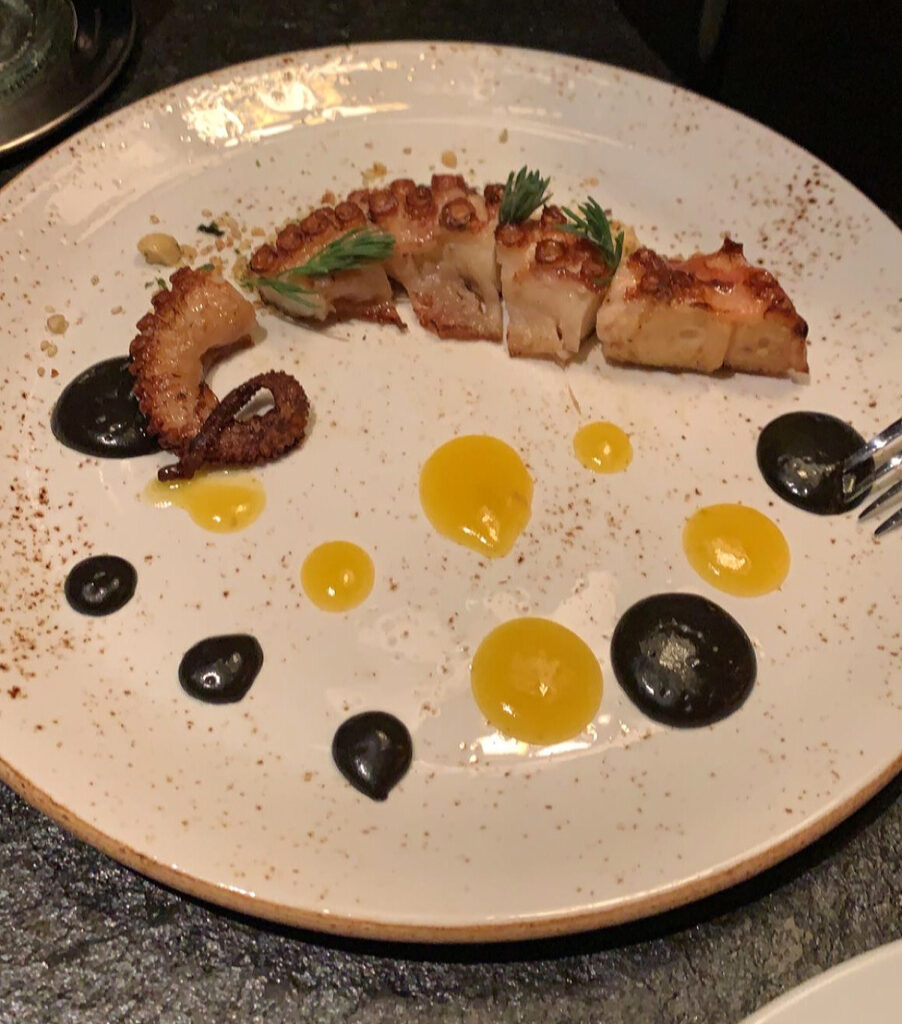
Moving into Bazaar Meat’s “Meats from the Sea” section, you find three items that are meant to form a counterpoint to the menu’s assemblage of meatier fare. The first of these, “Octopus” ($28), can be viewed as a counterpart of the “Spanish Octopus” ($21) preparation that features as one of the “Modern Tapas.” Owing to the difference in price between the two dishes, you find that the former serving comprises a thicker, meatier segment of the cephalopod’s tentacle that delivers five or six hearty portions (if shared). Instead of onion, escabeche, and cherry tomato, Bazaar Meat’s “Octopus” is paired with black garlic oyster sauce, Meyer lemon, and a gremolata made of garlic and furikake (a Japanese condiment commonly made from dried fish, sesame seeds, and seaweed).
The presentation, on a plate dotted with two colors of sauces, is indeed reminiscent of the “Spanish Octopus” dish. The pieces of tentacle, yet again, are perfectly cooked. However, their exterior is less aggressively charred and their overall thickness, as previously mentioned, makes for a substantial, juicy, and tender mouthfeel. The cephalopod’s essential flavoring comes by way of the gremolata, which lightly dresses the meat with undertones of nutty, garlicky umami. From there, you have the choice of freshening the octopus by dragging it through the lemon or descending further into the savory realm via the oyster sauce. The correct option, of course, is to combine both—yielding a bite that is chewy, tangy, and utterly mouthwatering on the finish. This is another strong—perhaps even, somehow, stronger—octopus preparation by Andrés and a star of Bazaar Meat’s original menu.
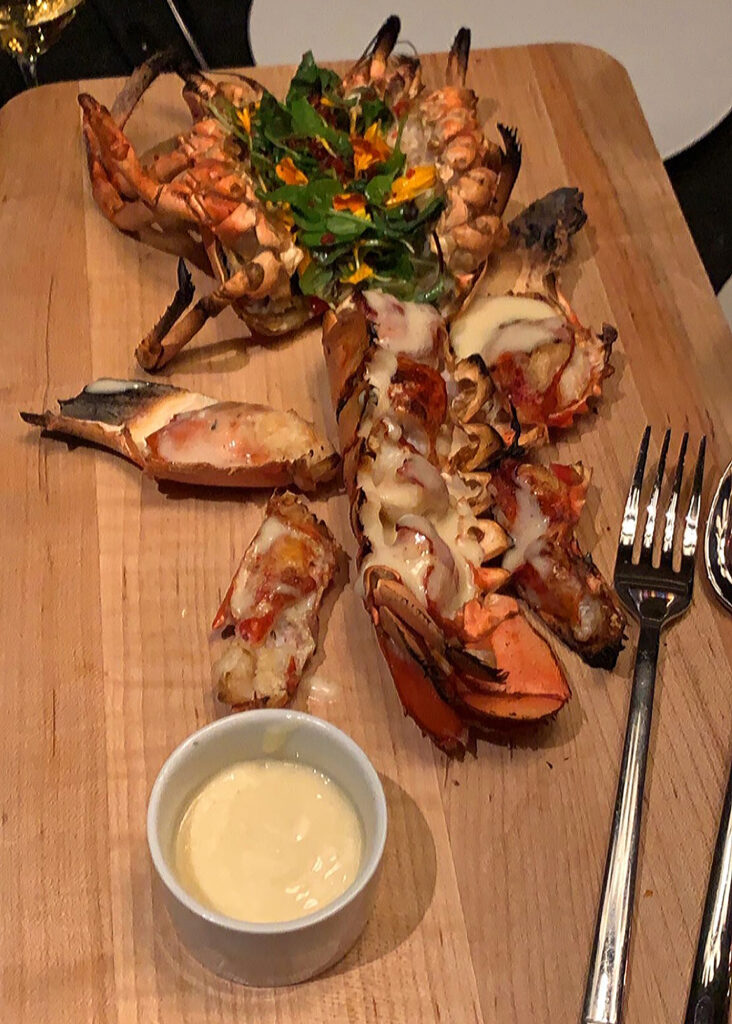
The ”Lobster, Grilled” ($60 for 1.5 lb.) offers the restaurant’s take on the steakhouse’s classic “surf” component. The price gets you a medium-sized specimen that has been cracked, cut, and neatly arranged on a wooden cutting board. Guests receive two claws, two knuckles, and one tail (all “on the half shell”) that have been dressed with peanut and ginger then served with a Thai butter sauce (some of which has also been applied to each piece).
Diving in, the lobster’s meat is soft and succulent without any of the rubberiness that can plague even expensive preparations. You do not perceive much of the peanut or ginger but appreciate the kiss of char drawn from the grilling. Likewise, the Thai butter sauce, by being interlaced into each shell, lends every bite a luscious mouthfeel with a hint of lime. That’s enough to draw out some of the shellfish’s own sweetness without overloading it with gobs of fat. Given that an 8 oz. Australian lobster tail costs $62 at Gibsons Italia, this preparation offers an engaging opportunity to share the crustacean among a larger party without any need for shell cracking or elaborate butter warmers.
The last of the “Meats from the Sea” is also the restaurant’s sole preparation of fish. Andrés opts for a “Whole Roasted Turbot” ($70 for 1.5 lb.) that arrives at the table boasting a beautifully charred skin before being filleted and presented for easy consumption. The fish is served with a simple donostiara sauce, a term that signifies someone or something from San Sebastián (also known as Donostia). In practice, the word signifies a traditional Basque green sauce characterized by ample garlic, cayenne pepper, and parsley that is used to cook everything from tuna to potatoes to baby eels.
The turbot’s pristine white flesh lives up to the moniker that titles the fish the “pheasant of the sea.” It is firm, flaky, and strikes the palate with a delicate and subtly sweet flavor. With regards to texture and an overall sensation of substance, you think Andrés has chosen the perfect fish. However, you find that the donostiara sauce—which very lightly dresses the turbot—is rather restrained in its flavor. For your palate, you would prefer more aggressive notes of garlic or cayenne pepper. Perhaps an accompanying ramekin of additional sauce might offer a remedy. But the fish, while well prepared, lacks the right complicating element at this moment to really shine.
Finally, at long last, you reach Bazaar Meat’s “From the Fire Pit” section—“c’mon, guys…this is why you are here!” (as the appended quote from Andrés describes it). Since the “More Meats” category of “The Bazaar Experience” menu includes several unique dishes, you will blend them into this larger assortment. For, that way, you can preserve an ordering that places lighter meats like chicken and pork ahead of the restaurant’s many expressions of beef.
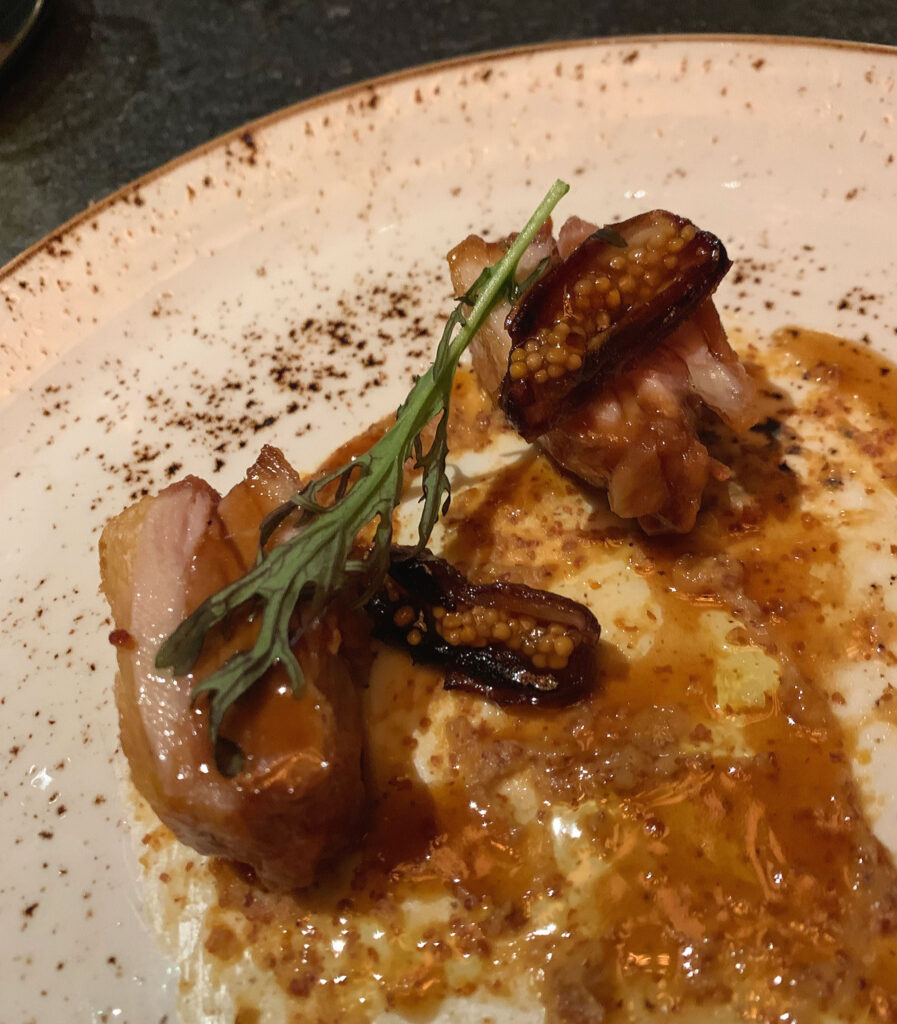
On that note, you start off with the “Amish Chicken Thighs” ($19). This preparation, from “The Bazaar Experience” menu, comprises crispy segments of succulent dark meat that have been dressed with miso. While that added burst of umami already sounds delicious enough, the dish is distinguished by a garnish of dates stuffed with “mustard caviar” (made by simmering mustard seeds in vinegar).
Each bite marries the chicken’s juicy flesh and crackling skin with the sticky, chewy texture of the date and the pop of the “caviar.” The miso notes that coat the chicken are simultaneously enriched by the rich, caramelly fruit and relieved by the subtly sour, spicy mustard. The dish, though one of Bazaar Meat’s most modestly priced, is thoughtfully composed. It reminds you a bit of Andrés’s “Boneless Buffalo Chicken Wings”—that is to say, the preparation offers beautifully concentrated flavors in a small packaged that is well-suited for sharing.
Butifarra, a style of pork sausage, is described as “one of the most important dishes of…Catalan cuisine.” Owing to this status, it is not surprising that the ingredient stars in two of Andrés’s preparations: the “Butifarra Senator Moynihan” ($18) from “The Bazaar Experience” menu and the “Butifarra Catalan-Style Pork Sausage Spiral” ($28) from Bazaar Meat’s opening menu.
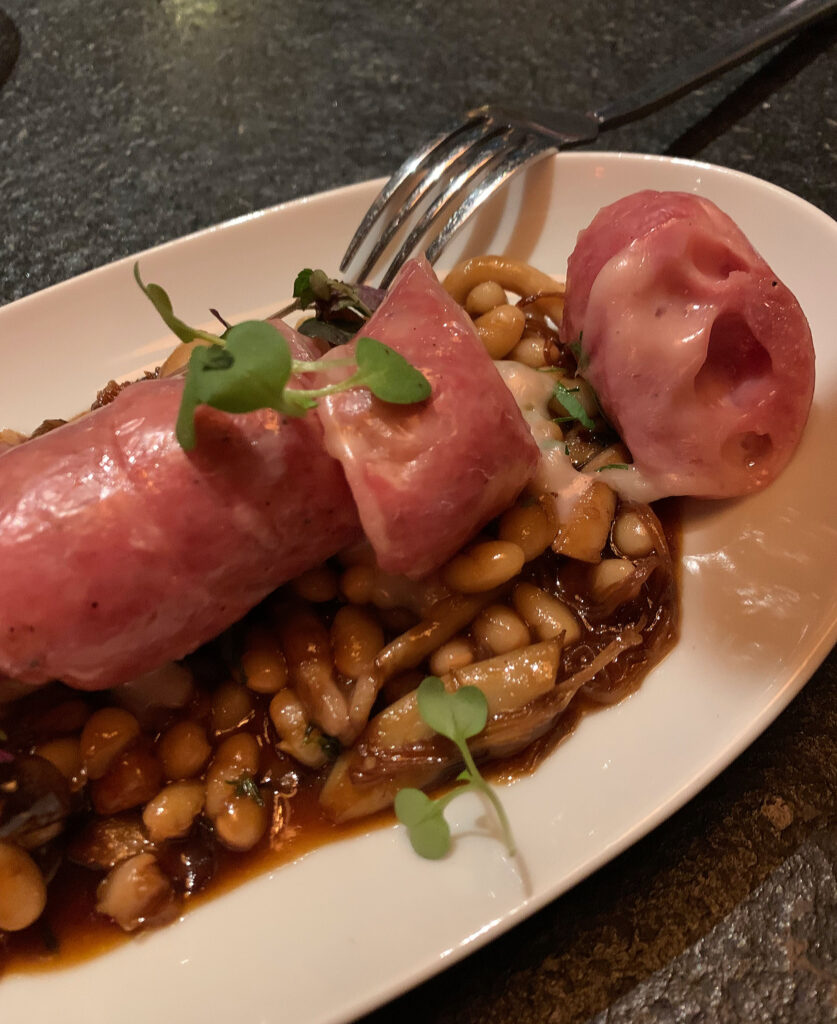
Of those two, the former is a bit less involved. It comprises a single link of the sausage that has been stuffed with Idiazábal cheese, sliced into six pieces, and served atop heirloom beans. The Basque cheese in question is considered a “cousin” of Manchego and features a lightly smoky, sharp, and gamy character. The beans in question—also called mongetes—are a white Catalan variety similar to cannellini.
The butifarra itself possesses a thin casing and a juicy—if straightforwardly flavored—interior. Due to the Idiazábal stuffing, which drips out from the center, the slices of sausage possess hollow cavities. However, this does not compromise their structural integrity. Rather, the meat collapses onto the cheese and delivers a package of flavors that are porky, smoky, and piquant. The heirloom beans feel tender and hearty on the palate. While they serve to help scoop up some of the melted cheese, the mongetes are mostly defined by a sweet, brownish liquid reminiscent of American baked beans. That, you think, is exactly what Andrés is going for in a tasty—but perhaps a bit too simple—dish named after the long-serving New York senator.
The Bazaar Meat “Butifarra Pork Sausage Spiral” is, by comparison, more elaborate. The 18 ounce portion (about three times the size of the “Senator Moynihan”) arrives on an elevated platter. Your server, using a pair of golden-handled scissors, snips upon and down the casing to yield an assortment of easily prickable pieces. On one occasion, you found that the bottom of the bottom of the sausage was not amply punctured, and, thus, the spiral stayed intact. However, you find the pomp and circumstance of the presentation both appealing and befitting the ingredient’s status within Catalan cuisine.
The butifarra, in this case, holds no hidden cheese filling, so its texture is more resolutely plump and juicy. The sausage is joined by grilled pan de cristal (that is topped with fresh tomato) and a side of honey aioli for dipping. That latter element serves to underscore the sweet flavor of the pork while the bread, in turn, allows you to make sandwiches with a trace of tangy ketchup-like flavor. Though you like the dose of nostalgia provided by the beans in Andrés’s prior preparation, this Bazaar Meat version seems more successful. It is more exciting, more shareable, and delivers a trio of flavors that are cohesive and engaging.
Bazaar Meat’s “Pluma Ibérico de Bellota” ($45 for 8 oz.) is listed among a selection of steaks titled “Not So Big Guys.” That cut—which translates to “feather” in Spanish—is taken from the neck end of the pork loin. Though once treated as a by-product, the pluma is now preferred to other cooked portions of ibérico (like the secreto or presa). It comprises several lean pockets of meat that are separated by glistening strands of white fat. After being grilled over high heat, the cut ends up looking a lot like a skirt steak.
The pluma arrives having been cut into eight slices that have been garnished with flaky salt. It is paired with apples that have been coated in Ibérico fat and lightly charred as well as a dollop of mustard. Diving in, the thin strips of pork are tender, juicy, and resound with a nutty depth reminiscent of jamón ibérico de bellota. While the accompanying apples work to accentuate the meat’s sweetness, the mustard imparts a cleansing, pungent note that serves to cut some of the richness. You find the preparation of pluma to be elegant and delicious. It offers a rather unique way to experience the coveted ibérico pigs. However, such a dish seems bound to get lost among so many eye-catching steaks a more showstopping examples of pork like the spiral butifarra and this forthcoming item.
Titled the “heart and soul” of Bazaar Meat, Andrés’s rendition of suckling pig is undoubtedly one of the menu’s star attractions. A quarter cut of the animal, sourced from Salamanca, runs $160—and, typically, the restaurant has four of these available on a given evening. A whole suckling pig (9-11 lbs.) costs $540 and can be ordered with 24 hours notice. In either case, as the menu describes, the “young animals are nested in a Spanish cazuela [a shallow earthenware pot] and roasted in a wood-fired oven.” This “traditional method,” the chef goes on to say, “achieves a crispy skin and juicy interior.”
On both occasions you have ordered it, the quarter cut of suckling pig has absolutely blown you away. Though ostensibly coming in somewhere between 2.25 – 2.75 lbs., you think the portion can easily be shared by four, three, or even two (hungry) guests. It comprises sections of pig’s ribs and loin blanketed in rigid pieces of dark brown skin. The dish is served with a mixed salad but, in truth, demands no further garnish. The pork is just as juicy as Andrés claims and displays a deep, pristinely meaty flavor drawn from the animal’s relative youth. The skin, however, is the real marvel. Despite being so crispy, it shatters cleanly without any trace of unrendered fat hidden underneath. It delivers, as a textural experience, everything you hope for when ordering suckling pig. Andrés has found the perfect way to cook the dish, and Bazaar Meat executes it with aplomb. Though the item often sells out, its price is accessible, and the preparation truly shines as one of the restaurant’s signatures.
Now, you finally turn your attention towards the beef. The “Braised Wagyu Beef Cheeks” have been offered in a 6 oz. portion ($26) as part of “The Bazaar Meat Experience” and an 8 oz. portion ($32) on Bazaar Meat’s opening menu. Both preparations, nonetheless, are exactly the same—featuring a mojo rojo sauce and slivers of red grapefruit as accompaniments.
While it is unclear where the “wagyu” is sourced from (you would guess one of the restaurant’s several domestic meat sources), the cheeks are undoubtedly tender. Their consistency, to your palate, matches (and maybe even surpasses) the best examples of braised short rib. Of course, in this case, there’s no bone to deal with, and the flavor is rather more intense too. The mojo rojo—made from garlic, chiles, smoked paprika, cumin, and sherry vinegar—imbues the deeply savory beef with harmonizing notes of heat, sweet, spice, and tang. The grapefruit slivers, when you get them, enliven everything with a cleansing burst of tartness. The sum effect makes for a dish of tremendous power and careful balance. It offers great value for customers willing to look beyond steak in search of a smoother, softer expression of beef.
That being said, the steaks are mighty fine too. You’ll start towards the more humble end of the selection with Bazaar Meat’s skirt steak. The cut has featured both on the opening menu (an 8 oz. American Wagyu/Black Angus crossbreed from Mishima Reserve in Texas priced at $48) and as part of “The Bazaar Experience” offerings (a 6 oz. “coffee rubbed” version of unknown sourcing priced at $26).
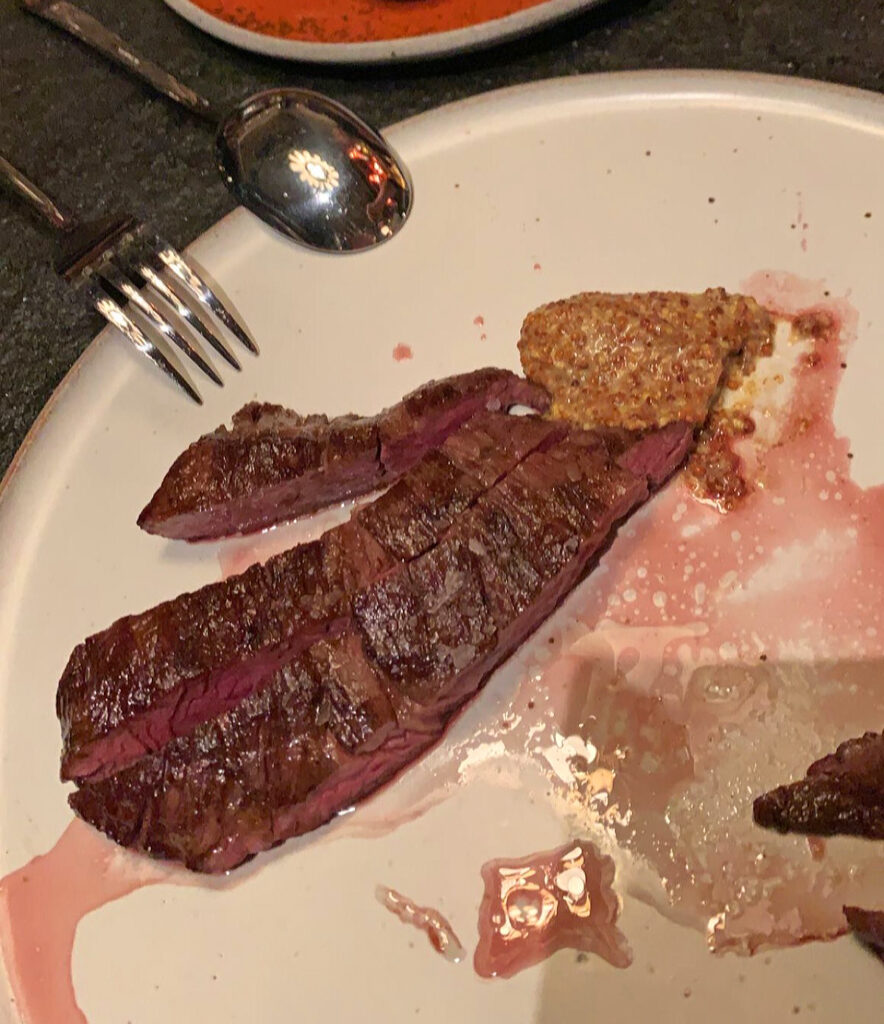
The former preparation is served with a rosemary-mustard sauce. The meat, owing to the influence of its Kuroge Washu bloodline, is quite juicy and tender when compared to the leaner, tougher character for which the cut is known. At the same time, given skirt steak’s tendency towards full flavor, the beef balances its marbling with a pronounced meaty flavor. The combination of sweet-hot mustard with a trace of woodsy rosemary fits the preparation well enough. However, given how tasty the Mishima Reserve is by itself, you wonder why the pungent sauce wasn’t substitute for something more subtle like a chimichurri.
The latter preparation, though lacking the appeal of name brand beef, is more thoughtfully composed. The steak, beyond being coffee-rubbed, is paired with “coffee air” and sits in a sauce made of passion fruit with some pearl onions. The meat, though it does not melt as easily as the domestic wagyu, displays a pleasing sense of chew backed up by a good degree of juiciness. That coffee rub, importantly, is finely executed—being charred into the outer crust without having any negative effect on its texture. Rather, the bitter notes it imparts marry with the lighter flavor of the foam and form a dramatic contrast with the tart-sweet passion fruit and savory-sweet onions. This tension, set against the robust beef flavor of the skirt steak, is totally transfixing—achieving a level of complexity that belies the cut’s humble status.
Also listed on the “The Bazaar Experience” menu is a “Manhattan Cut Washugyu Striploin” ($80 for 8 oz.) from Lindsay Ranch in Oregon. This particular style of domestic wagyu—a “Japan-U.S. joint product” comes from a crossbreed of full blood Tajima Wagyu sires and Black Angus females raised on a “strict feeding program originating from Japan” in an area with a “similar climate to Japan.” The cows are harvested between 27 – 35 months of age, a period said to be longer than other domestic wagyu varieties and that yields “more flavorful and better marbleized beef.” This particular “Manhattan Cut” can be considered a smaller counterpart of the Washugyu “Bone-In Strip Loin” ($120 for 18 oz.) from Bazaar Meat’s opening menu.
The steak arrives at the table divided into five large slices with glistening, golden brown crusts and a dusting of flaky salt on top. Befitting the “Manhattan Cut” moniker, the beef is paired with a small stack of fried onions and a puddle of steak sauce. While striploins typically display less marbling than ribeyes or filets, you are impressed by the amount of gushing fat that separates the meat’s crust from its medium rare interior. It makes for a textural interplay—crisp caramelization, melting unctuousness, and juicy “chew”—that is highly appealing. The Washugyu’s moderate but persistent beef flavor impresses you too. It measures up to the nostalgic, sweet-and-tangy steak sauce. Meanwhile, those fried onions—rendered in a tempura style—are quite nice too. You would love to see them offered as a side dish (though, perhaps, this basic version is a bit too lowbrow to stand alone).
One of the centerpieces of Bazaar Meat’s beef program is undoubtedly the “Vaca Vieja,” described as “a more mature animal with more pronounced flavor” cultivated from “hand-selected eight-year-old working cows” (in this case, milk-producing Holsteins) raised by Mindful Meats in Petaluma, California. Andrés describes this steak as being made “in the European tradition,” and, in fact, vaca vieja is a signature of Spain’s Basque Country. The older cows feature more developed muscles drawn from a “more varied diet, including grasses that impart a yellow tinge to their fat.” With regard to flavor, this yields a product that is “more intensely meaty, with a deeper beef taste, more flavorful fat and complex textures.”
While the restaurant offers “Vaca Vieja” as one of four “Beef Rib Steak Chuletón” options (priced equivalent to GRG’s own “W.R. Gibsons Prime Angus Chicago Cut” at $65 per lb.), your server has steered you towards the “’Vaca Vieja’ Rib Eye Tasting Portion” ($45 per 6 oz.). His logic was that the mature beef’s intensity could become overwhelming when indulged in to a high degree, and that juxtaposing it with other cuts from other sources would yield a more engaging experience. You appreciated the forethought, which allowed you to get a sense of what eight-year-old Holstein is all about without biting off more than you could chew.
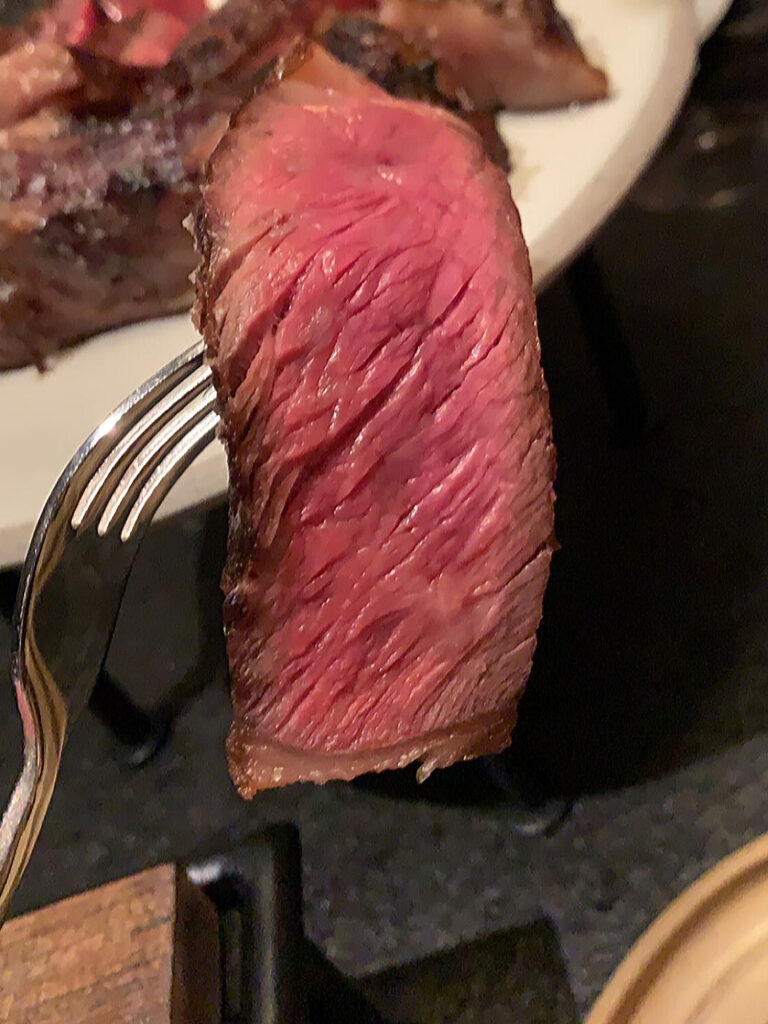
It should also be noted that the four “Beef Rib Steak Chuletón” options, as well as the “’Vaca Vieja’ Rib Eye Tasting Portion” comprise a category titled “Our Big Guys, Cooked Jose’s Way 46° C.” This listed temperature—approximately 114° F—has raised eyebrows online for being below what is typically considered “rare.” Though some commenters think 46° C might reflect a pre-sear sous vide temperature, Bazaar Meat’s menu simply states that the steaks are “oak-wood fired.” Speculation aside, you have found, in practice, that the steaks arrive somewhere between rare and medium rare—a perfect range for your particular palate.
The vaca vieja, when you finally sample it, affirms Andrés’s faith in the mature beef. The meat—cooked, on this occasion, just past rare—possesses a heartier “chew” than even the skirt steak yet is in no way tough. Plus, the flavor it unleashes on the palate is of such a quality that you want it to linger. You would describe the sensation as so pronouncedly beefy that it almost seems gamy. However, as with fine examples of blood sausage (or even uni), that irony quality remains pristine and subtle in a way that actually enhances—by contrast—the more familiar, deep flavor of the ribeye steak. The persistence of the cut’s finish might be the most impressive part—forming a dream pairing for even the biggest, boldest red wines.
The executive chef of Bazaar Meat in Las Vegas terms the vaca vieja a “flavor bomb” that “tastes like you rubbed bouillon all over a steak.” You must agree, and you think the restaurant’s embrace of the mature beef helps construct a spectrum of offerings that comprises the fattiest Japanese wagyu, more moderately fatty domestic wagyu, more familiar Angus, and more distinctly beefy mature meat. Rather than forcing consumers seeking a premium experience to shell out money for increased marbling alone (a value proposition that simply does not appeal to every diner), Andrés presents Chicagoans with a novel, flavorful expression of steak at “Gibsons” pricing. The chef invites his guests to make a distinct stylistic choice rather than one built only on superficial luxury and prestige—and that undoubtedly makes for a higher expression of gastronomy.
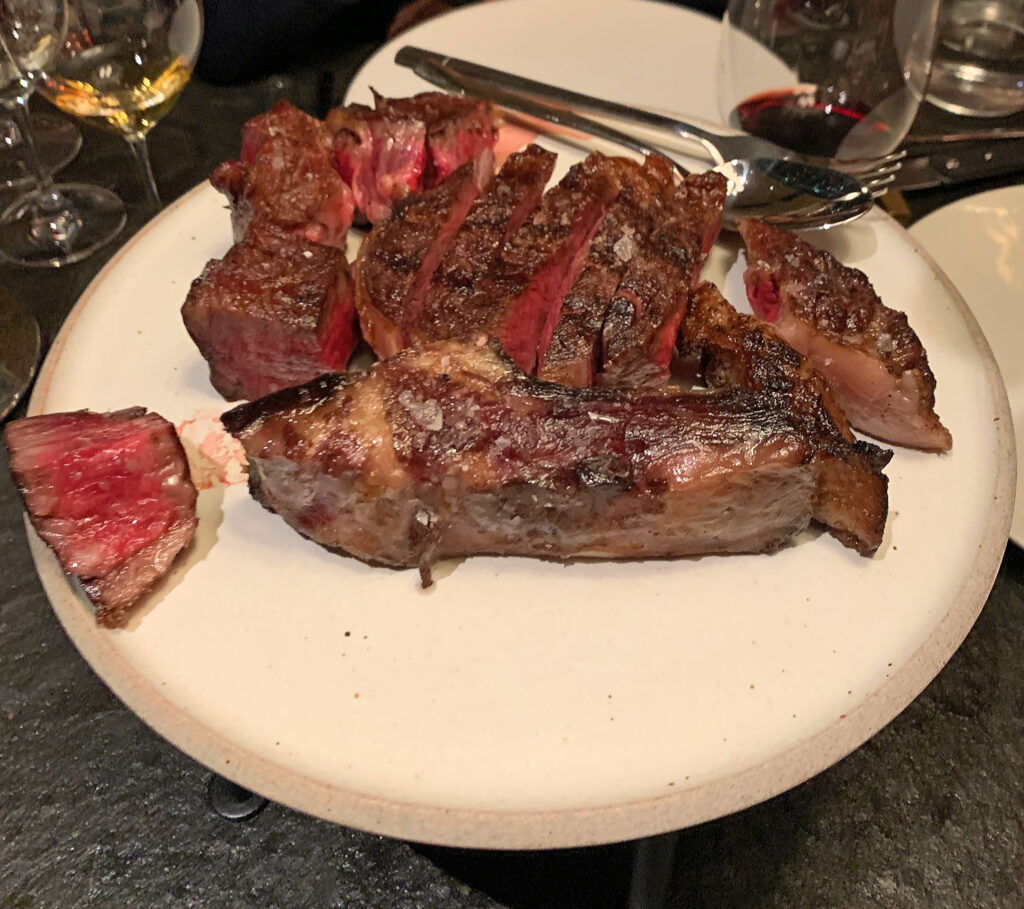
Within the “Beef Rib Steak Chuletón” category, you have also sampled the “Washugyu/Angus” bone-in ribeye ($98 per lb.), sourced from the same ranch in Oregon as the previous “Manhattan Cut.” The 32 oz. portion arrives boasting an admirable thickness of around two inches. The cut’s exterior is beautifully caramelized while the interior displays a blushing ruby tone that seems just beyond Andrés’s 46° C. The ribeye, topped with plenty of flaky salt, demands no further accompaniment. It displays an even more luscious texture than the Washugyu striploin with streaks of marbling that glisten from top to bottom. Though it’s hard to match the flavor of the mature Holstein, this steak possesses a refined, robust beef flavor that surpasses the many “tomahawks” served throughout the city.
In the “Not So Big Guys” category (also home to the Mishima skirt steak and ibérico pluma), you have also tried Bazaar Meat’s Chateaubriand ($75 for 16 oz.)—a term Escoffier applied to the center cut of the tenderloin. While “The Bazaar Experience” menu includes a version of “Tournedos Rossini” made from the tenderloin, it, the Chateaubriand, and the Satsuma wagyu tenderloin (in the “Tasting through Japan” section) represent the restaurant’s only offerings that could be classified as filet. It’s a curious choice—given the bone-in filet’s supremacy at places like Gibsons Italia and Bavette’s—but one that, perhaps, affirms Andrés’s intention to deliver more of a shareable experience.
The Chateaubriand is labelled, like the vaca vieja, as coming from a Holstein cow. However, in this case, the animal is of standard age and comes sourced from Brandt Beef, a family-owned and operated sustainable ranch in Southern California that focuses solely on the breed. Though lacking any wagyu genetics, the cut of tenderloin makes a big impression. It arrives portioned into six glorious slices that—in your case—are additionally blanketed by a mound of black truffle. A Périgord sauce (classically made from shallots, truffles, Madeira, and demi-glace) accompanies the dish alongside pommes soufflé (a puffed potato preparation similar to Andrés’s own airbreads).
While the examples of domestic wagyu you have described regaled you with their gushing fat, the Chateaubriand is more straightlaced. The meat displays, like all the restaurant’s steaks, a beautiful dark brown exterior. The interior, meanwhile, is a perfect rare from end to end. The steak’s texture is uniformly smooth, soft, and succulent. Without any bursting pockets of marbling—but still with a supreme tenderness—this center cut offers the purest textural experience of the full array of beef you have tried. The filet’s more modest degree of meaty flavor (a common criticism) is remedied by the earthy, nutty, and chocolatey truffle. Whether or not you choose to add more shavings on top, the Périgord sauce wonderfully carries the dish towards an unparalleled decadence. This, really, is what enjoying tenderloin is all about, and you do not think Andrés needs to offer any other expression of filet given how good this dish is (at a rather accessible price too).
To draw your analysis of Bazaar Meat’s steak selection to a close, you will engage with the eye-catching box appended to the last page of the menu: “Tasting through Japan.” This category, which carries the “Kobe Beef Association Member” seal, offers “selected cuts of traditional Wagyu and Kobe beef, prepared tableside on an ishiyaki stone.” A map of Japan—overlaid with tiny bovine silhouettes—serves to highlight the seven prefectures from which seven distinct kinds of beef are sourced.
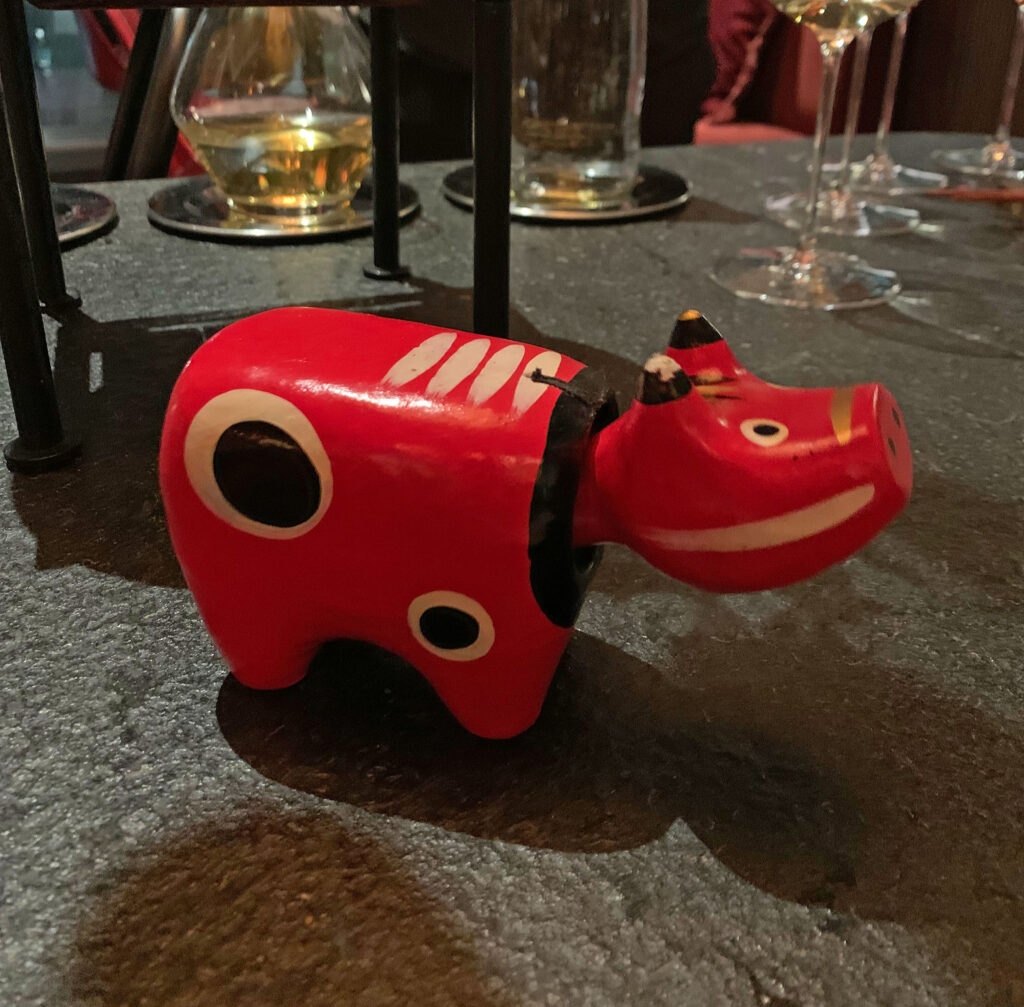
This comprises a “Sendai Chuck Roll” ($35 per oz.) from Miyagi, an “Olive Wagyu Sirloin” ($40 per oz.) from Kagawa, a “Bushu-Gyu Wagyu Shortrib” ($40 per oz.) from Saitama, a “Satsuma Wagyu Eye of the Rib” ($40 per oz.) from Kagoshima, a “Satsuma Wagyu Tenderloin” ($35 per oz.) also from Kagoshima, an “Ohmi Wagyu Striploin” ($45 per oz.) from Shiga, and “Kobe Eye of the Rib” ($55 per oz.) from Hyōgo. Though Gifu Prefecture is listed on the map, its Hida beef has not yet featured as one of the selections.
Readers who are familiar with your writing will know that you largely view wagyu as a totemic luxury scourge. Thin cuts of ubiquitous “A5 Miyazaki” have been used as a crutch on chefs’ tasting menus for at least the past decade, and, while a handful of inventive preparations do exist, the ingredient tends to sap creativity. For restaurants put the wagyu on a pedestal and offer it up in such a bare way that only appeals to customers for whom the beef, by itself, retains some novelty.
Yes, there is enjoyment to be had from “A5 Miyazaki,” but meal pricing rarely affords a thick enough portion of the meat to really show off the effect of such superlative marbling. Plus, why is it always the same grade sourced from the same place? (A3- and A4-rated beef, though ostensibly “lesser,” rarely leave Japan because their more balanced fat composition is actually preferred there). Ultimately, serving up these steaks tends to only benefit the restaurant’s purveyors. It robs guests of the opportunity to enjoy a heartier, more technically challenging final savory course drawn from game or even just a more distinctive, locally-sourced cut of beef.
In a steakhouse setting in a steakhouse city like Chicago, you think it is particularly reprehensible to spurn Midwestern beef in favor of a fancy import. While your beloved Bavette’s solely offers USDA Prime meat sourced from local purveyor Linz, Gibsons Italia, Maple & Ash, and RPM Steak have come to offer selections of Japanese beef priced in four, five, and two ounce increments respectively. These premium offerings—like domestic wagyu itself—often form a distraction from mastering the fundamentals of steak preparation. And your instinct, of course, is to view any interloping concept slinging even fancier beef with suspicion.
Nonetheless, in the interest of fairness, you shouldered the lamentable task of sampling one of Bazaar Meat’s Japanese beef offerings. You ordered eight ounces of the “Kobe Eye of the Rib”—true Kobe, despite how that term has been affixed to burgers and altogether bastardized in America—in order to see how Andrés approaches the genre. Choosing, ostensibly, the finest steak of the whole flight would lay the value proposition bare.
Long before you catch sight of the coveted Kobe, your server deposits a bonsai on the table to set the mood. After you appreciate the miniature tree for a moment, he returns with a cart containing the raw beef, a red cow bobblehead, and the aforementioned ishiyaki stone. That latter element—made from petalite and cordierite—is designed to be heated on the stovetop and then retains its temperature tableside for up to 15 minutes. Your server rubs a chunk of wagyu fat on the surface of the stone, unleashing a bewitching scent and sizzle throughout your section of the dining room. (Like so many of Andrés’s dishes, this preparation is intended to turn heads and spur copycat orders).
Once the ishiyaki is amply coated, the server goes about searing the meat. He starts with only a few pieces—in order to provide your party with something to nibble on right away—then cooks the remainder in two larger batches. Once finished, the Kobe is placed atop arugula on a leaf-patterned platter. It is served with freshly grated, real wasabi and some soy sauce for dipping.
With expectations set sky high, you dive in. The Kobe, which has been portioned into morsels of about one inch in length and half an inch in thickness, displays a golden brown exterior with a glossy sheen. When it hits your tongue, the steak weathers just a couple bites before collapsing and coating your palate in a torrent of fat. Compared to the Washugyu, which struck you with distinct layers of crust, muscle, and marbling, the Kobe is of an almost entirely unctuous texture loosely tied together with bits of perceivable flesh. A topping of flaky salt is enough to charge that pristine fat with a sublime savory flavor.
The arugula salad (studded with sesame seeds) provides a pleasant, peppery contrast. As does the wasabi, whose pungency—when applied directly to the steak—is perfectly moderated by the all-encompassing richness of the fat. The soy sauce, meanwhile, doubles down on the meat’s umami. These accompaniments are largely traditional, and, though Andrés displays a penchant for creativity throughout the menu, his restraint is wise (especially when compared to the disappointing caviar service).
Bazaar Meat’s “Tasting through Japan” section will always stand as a superlative splurge. (And, in the interest of fairness, that is how the wagyu is positioned at Maple & Ash, Gibsons Italia, and RPM Steak too). Philosophically, you think Andrés has found a way to present the Japanese beef in a way that seems comprehensive and, dare you say, educational. He does not glorify the beef as the ultimate, most luxurious offering on the menu, but labels it more of a gastronomic, cultural experience.
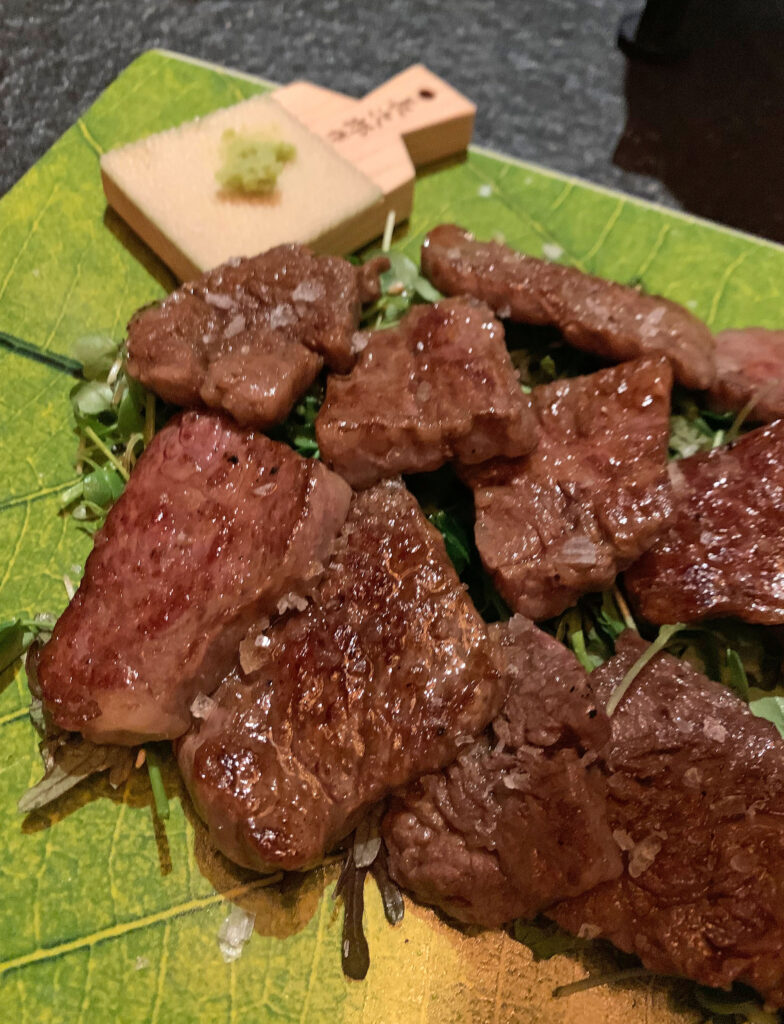
Most diners will naturally be drawn to the “Big Guys” and “Not So Big Guys” categories when choosing their steaks. There, they are confronted by differences in size and style but are generally not pushed towards spending a particularly ridiculous sum to avoid seeming cheap. Rather, in the Gibsons “Chicago Cut” and “Vaca Vieja,” the average guest will find all that they desire. Everything offered in addition to those signature items seems like a bonus, and the selection of Japanese beef—being compartmentalized on its own page—can be easily ignored.
Yet, for those wishing to take the leap, you found your Kobe—especially since its preparation was entrusted to the server—to be wholly satisfying. Bazaar Meat transforms such a splurge into a memorable hospitality moment while, at the same time, respecting the tradition that has shaped the product’s appreciation. The restaurant, from the humble “Beef Cheeks” to the finest wagyu, feels like a true emporium of meat. And, like any butcher worth their salt, Andrés caters to a wide range of valid proclivities rather than forcing his patrons towards a false hierarchy of steak size and “prestige.” In a world where conspicuous consumers will pay $1,000 for a gold leaf-encrusted tomahawk, the Spanish chef—despite a saintly reputation with which he can do no wrong—has found a way to thoughtfully broker indulgence.
To pair with all that meat, there is an assortment of sides listed under the “Vegetables & Potatoes” category. Compared to many of Bazaar Meat’s small plates, these dishes are more straightforward in their pleasure. However, that makes them well-suited as accessories to the “main event.”
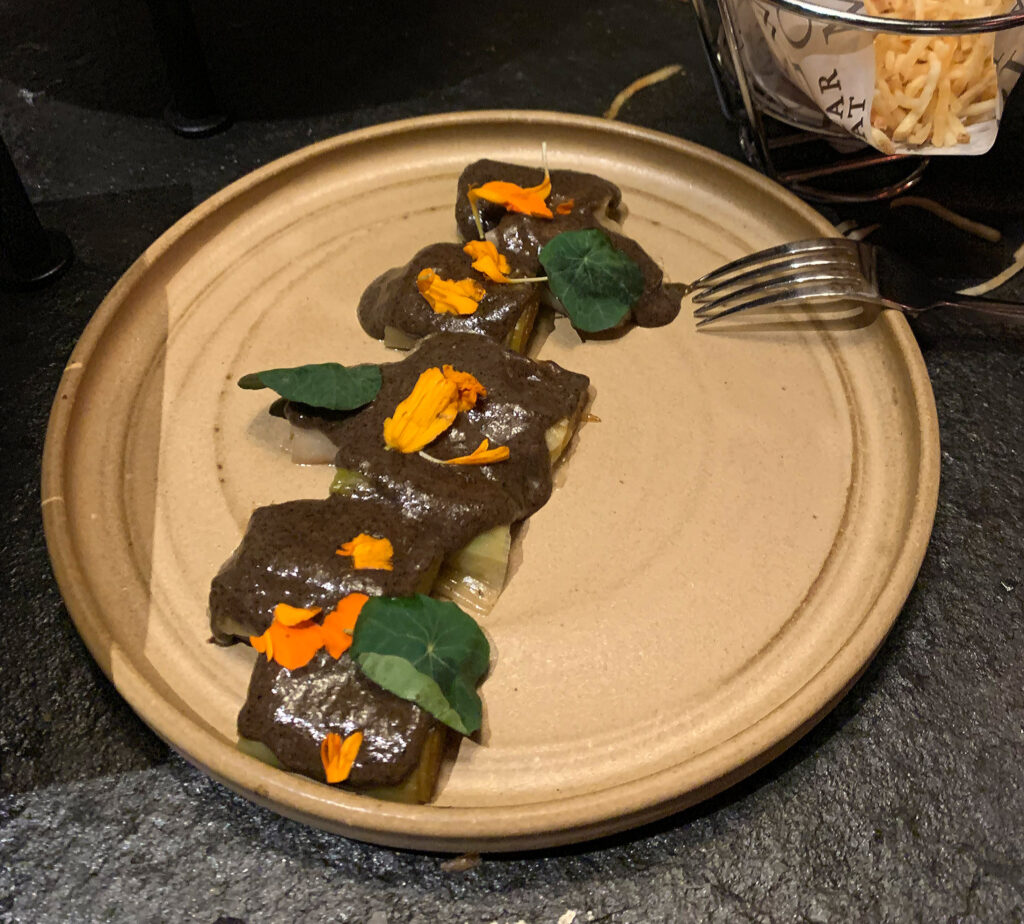
The “Roasted Leeks” ($12) are kissed with fire, yielding a nice outer char. The accompanying leek-ash dressing, which covers the allium, possesses an unattractive gray tone. However, it further accentuates the vegetables carbonized notes and combines with the leeks’ deep sweetness to form a fitting pairing with the steaks’ caramelized crusts.
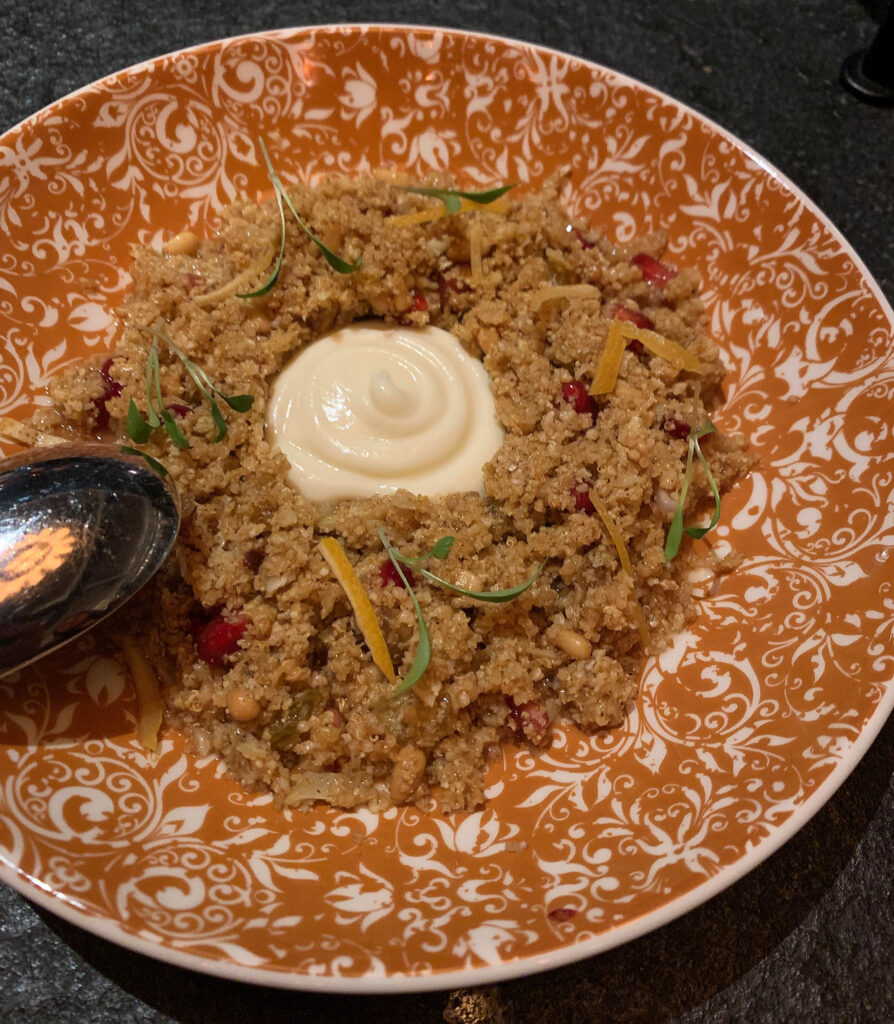
The “Cauliflower CousCous” ($12) looks more like a quinoa dish at first glance. However, the toasted grains are actually interlaced with the cruciferous vegetable, which has been ground until fine. The two components are cooked in a Harissa broth then garnished with pine nuts, pomegranate seeds, and preserved lemon peel. The quinoa and cauliflower surround a dollop of purée made from the same vegetable. As everything combines, the sensation is subtly spicy, tangy, nutty, and sweet with a wonderful, grainy heartiness. You like this side paired with pork or chicken.
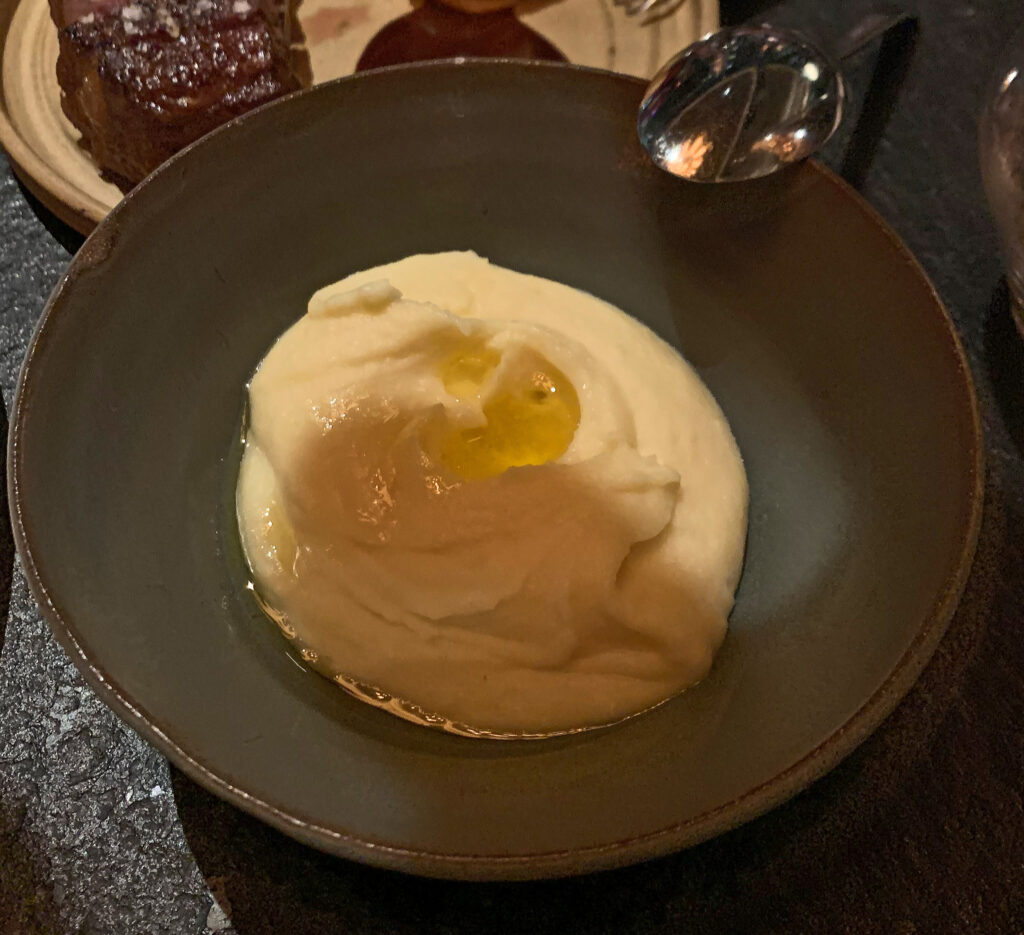
When it comes to potatoes, Andrés puts forth three excellent options. The first, a “Buttered Potato Purée” ($15), is made from tiny La Ratte potatoes (a favorite of Joël Robuchon), Échiré butter (from Western France), and cream. Unsurprisingly, this dish represents Andrés’s take on Robuchon’s classic “Pommes Purée.” The Spanish chef’s version is silky, luscious, and resonant with a deep, sophisticated chestnut flavor. Whether or not you choose to gild the lily with a supplement of truffles, you think the dearly departed French legend would be proud of the preparation.
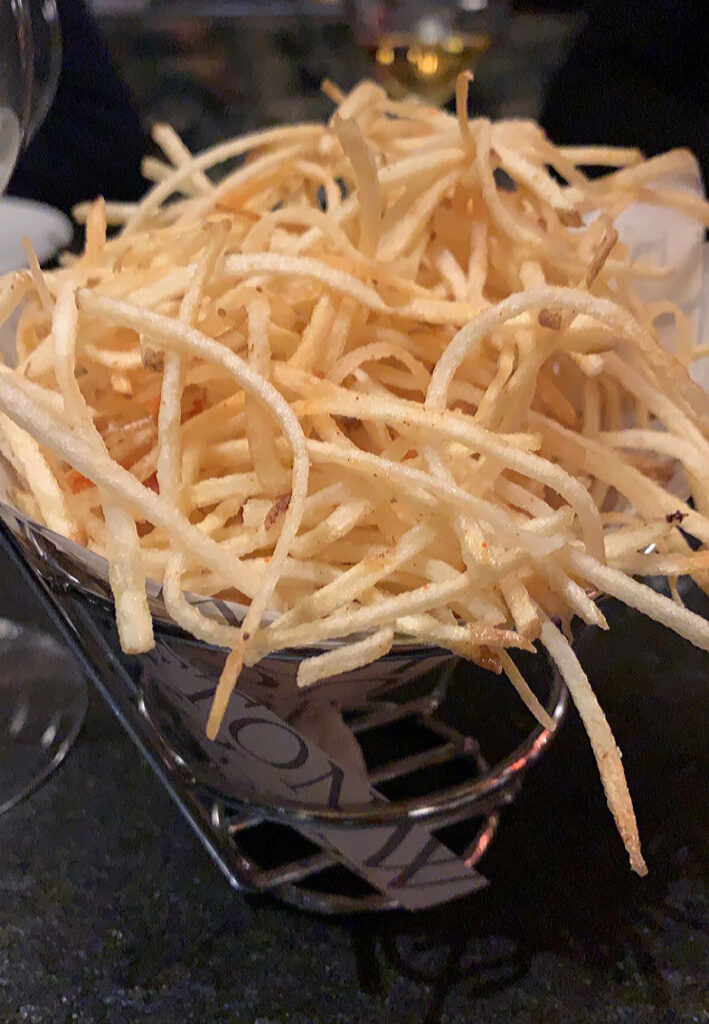
The ”Straw” ($12) potatoes have already made an appearance as the topper to Bazaar Meat’s “Sloppy Joe.” However, now starring in their own side dish, they are described as “traditional potatoes that will remind you of your childhood.” Lightly dressed in malt vinegar, the delicate curls are an absolute delight. They crunch on the palate with aplomb, drawing you in for handful after handful with their pleasing tang. The “Straw” potatoes are not only eminently sharable, but they deliver all the appeal of bonafide fries in a less filling package.
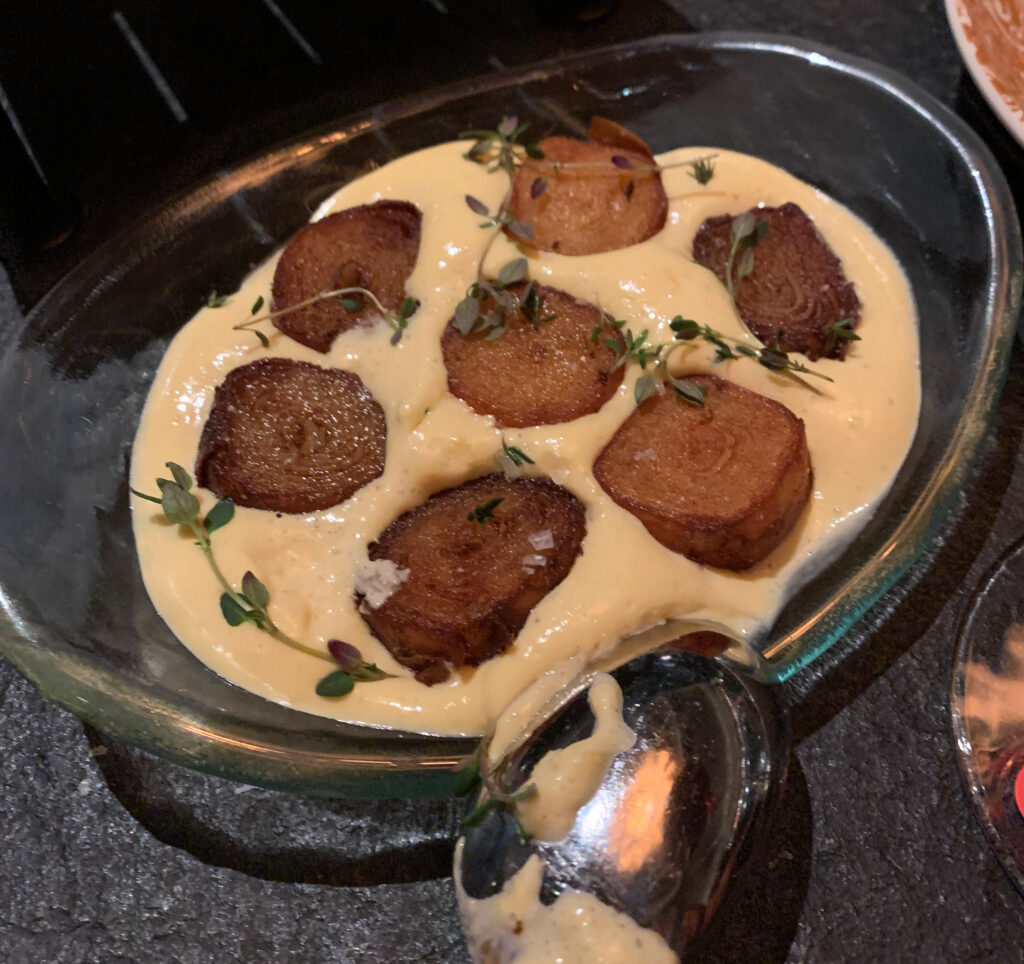
Lastly, the “Widmer Potatoes” ($12) derive their name from the Wisconsin cheese cellar from which their two-year cheddar coating is sourced. The tubers themselves are rendered as glorious, fried spirals made from dozens of thin layers wrapped around a central point. These seven circular parcels of potato possess a deep, dark brown tone commensurate with their high degree of crunch. The cheddar blankets them in a rich, nutty, and creamy texture that works its way into every nook and cranny as the bite hits the tongue. Ultimately, these might be your favorite of the bunch, for there’s a deconstructed dauphinois element to the preparation that is both clever and appealing.
With the steaks and sides now conquered, the rush of savory food—at long last—ceases. However, while you have sampled an endless assortment of delectable dishes over the past few hours, Andrés knows how important it is to save the best for last. Though the chef’s “Cotton Candy Foie Gras” and “Payoyo Cheese Tart” snacks do, indeed, engage with some sweet flavors, Bazaar Meat largely delays guests’ indulgence until the dessert menu arrives.
This unveiling, of course, ensures a memorable end to the experience (with regard to the peak-end rule) but takes on a particular significance in a steakhouse setting. For many parties, in today’s day and age, may possess meat-averse patrons for whom a memorable expression of sugar makes all the difference. A thoughtful dessert selection, in such a case, forms a distinguishing factor from what seem to be—for someone disinterested in beef—countless cookie-cutter establishments within the genre.
The first of Andrés’s options—sequentially—might be his very best: the “Chocolate Banana Soufflé” ($12). The Spanish chef’s version of the Carême classic is appropriately traditional. It arrives in the familiar kind of ramekin with a puffed, cocoa-colored crust peeking out over the top edge. An accompanying scoop of caramelized banana ice cream lays waiting to be thrown into the soufflé’s molten center, offering a sublime temperature contrast that is then shortly subsumed into the creamy base.
Diving in, the soufflé’s crust yields to your spoon and separates cleanly. It permits you to plunge into the ramekin’s center and scoop segments of the weightless, oozing chocolate and egg base. On the palate, the dish displays a creamy, milky, wholly hedonistic character reminiscent of molten lava cake. However, the soufflé admirably holds its structure and, thus, a transfixing softness of texture that highlights its flavor intensity. When the banana ice cream is introduced, the preparation does not suddenly seem fruity. Rather, the deeper caramel notes—and the hot/cold contrast—only serve to enhance the decadence of the chocolate further.
Ultimately, this is a true chocolate lover’s soufflé—a crowd-pleaser par excellence—that shows great restraint. The dish stands as a reverential example of the recipe in a city where it has—apart from some rare exceptions—sadly become endangered. Yet, by avoiding any temptation to be too clever with his chosen flavors, Andrés reminds his patrons why the form is worth the fuss to begin with. Bazaar Meat, in that respect, honors the soufflé while making it more accessible and enjoyable than ever. It’s hard to think of a better expression of chocolate with which to end a meal.
The restaurant’s ”Honey Cake” ($12), by comparison, shows some of the same complexity that defines the restaurant’s more modernist fare. It comprises a long, thin slice of the titular baked good, whose crumb is interlaced with streaks of sour cream mousse. The honey cake, then, acts as something of a canvas for the dish’s other ingredients. It is topped with a quenelle of sorbet made from Campari and grapefruit; some sugar crisps in the shape of bees; dehydrated raspberries and orange slices; puffed crisps of honey; fresh honeycomb; and an assortment of gels.
This combination is something like dumping the whole molecular gastronomy “box of tricks” out onto a plate. However, while the assembled textures are intricate and contrasting, their flavors achieve an overarching harmony that is tart, sweet, and bitter. The cake itself, really, forms the only anchoring element upon which these tantalizing elements play. While the experience is certainly engaging, the “honey cake” ultimately takes a backseat to this kind of technical demonstration (which makes for one rare instance when you feel the restaurant is needlessly showing off). You, personally, would prefer a dish that felt more like a “cake,” but guests seeking a tangy, refreshing dessert filled with novel sensations will be pleased. Perhaps the preparation would benefit from a different title?
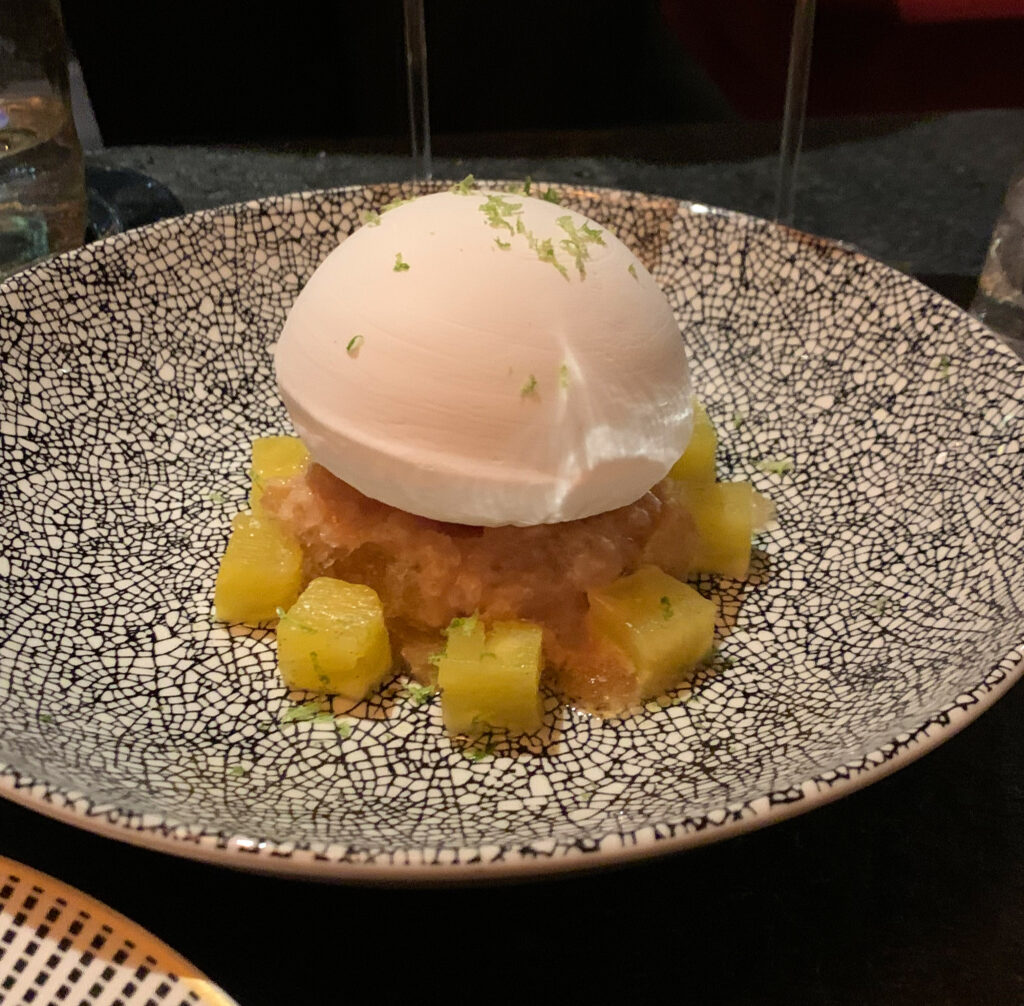
The “Coconut Nitro Floating Island” ($12) seems similar to the “Honey Cake” at first glance, but you think it is ultimately a bit more successful. The dish—which has featured on Andrés’s menus in some form since 2009—comprises a delicate coconut foam that is frozen into a neat ball using liquid nitrogen. The “island” (a play on the classic meringue over crème anglaise) is then placed atop a rum granita that infused by rum caramel sauce and surrounded by chunks of pineapple.
While you criticized the “Honey Cake” for being less of a cake than expected, you must praise the “Coconut Nitro Floating Island” for actually being more substantial than meets the eye. The frozen coconut foam, it should be no surprise, shatters into an array of melting, faintly chewy chunks with a pronounced fruit flavor accented by lime zest. The rum granita, you would think, only expands upon that cold, disappearing sensation. However, the thick, luscious caramel sauce really carries the dish by providing a warming tone that balances the liquid nitrogen “island.” Add in the juicy, gushing pineapple, and you have a preparation that runs the gamut of rum-coconut flavors in a way that is refreshing on entry but lastingly sweet and lip-smacking on the finish. Relative to the hodgepodge of a honey cake, this dish moderates its advanced techniques through a greater sense of composition.
The ”Vanilla Ice Cream Experience” ($18) is, perhaps, one of the most psychologically appealing preparations you have ever encountered. It comprises—and this is everything—three quenelles of vanilla bean ice cream that sit atop a crumbly sugar soil that sparkles with gold leaf. The secret of the dish, however, is drawn from a trio of accompanying shot glasses containing aged rum, fresh vanilla bean, and espresso beans.
Guests are instructed to first taste the ice cream on its own and then incorporate the aromas of the accompanying items. These serve to prime the olfactory system and alter the taste of subsequent bites—imprinting the rum’s woodsy caramel notes, the purity of the vanilla bean, or the earthy intrigue of the coffee onto the bare quenelles. It’s a wonderful, mind-bending trick that has been executed elegantly. It really, in fact, calls attention to the more subtle means through which chefs manipulate taste through aroma. And the “sugar soil” (essentially crispy brown sugar flakes) underneath the ice cream helps to keep the experience engaging from smell to smell too.
You simply think the “Vanilla Ice Cream Experience,” while initially shocking, is the kind of dish you are destined to try once then never bother with again. It’s a fun parlor game to roll out for every new guest—but also one that shirks the development of a truly stunning dessert you could return to visit after visit. But, as much as you might rue that trade off in theory, Andrés’s soufflé delivers the goods and buys the chef some space to offer other, fleeting pleasures.
The ”Bazaar Patisserie Sweets Selection” ($22) stands as one of the restaurant’s new dessert offerings as part of “The Bazaar Experience” menu. However, despite being priced higher than almost all the other options, the dish carries no further description. That made you a bit skeptical—did the “selection” really change that frequently or did the vagueness simply signal that the item was an afterthought? Perhaps the sweets were suited for diners who wanted something lighter. Maybe they were intended more to be taken home. You prepared yourself for something frivolous but, in fact, were pleasantly surprised.
The ”Sweets Selection” comprises seven different mignardises: a pâte de fruit, a shortbread cookie, a chocolate marshmallow, a Credit Suisse emblazoned gold bar, a pink frosted donut (with sprinkles), a macaron, and a miniature version of the “Honey Cake.” Being priced at a little over $3 each, the value proposition for these tiny bites seems uncertain. Two people, at most, could split them—but the dish is best viewed as an individual sampler. (Who could bear to break a macaron in two?)
Apart from looking pretty, the mignardises each display a refined texture befitting their individual pastry traditions. The pâte de fruit, for example, is chewy without being gummy. The macaron, likewise, is crisp and delicate. With regard to flavor, the bites are straightforward and nostalgic with notes of berry, coconut, chocolate, nuts, and icing appearing in turn. You find the gold bar—for its photorealism—and the donut—for its mimicry of a Hostess Donette—the most pleasing. But even the “Honey Cake,” in this miniature form, strikes you as more concentrated and pleasing than the full-sized dish. While you are still not sure whom this assortment appeals to (particularly at what ultimately seems like a high price), the “Sweets Selection” is executed well enough to spur a feeling of delight when it arrives.
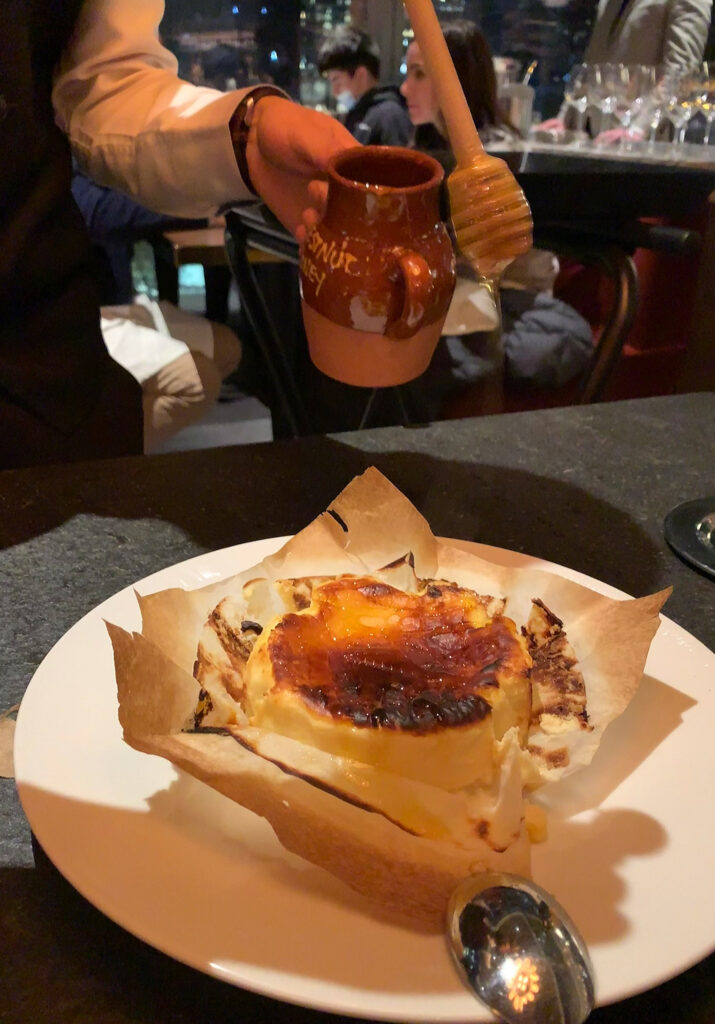
The last of Bazaar Meat’s dessert options is the “Tarta de Queso” ($32), which is highlighted by its own box containing the following description: “unlike American cheesecake, Basque-style burnt cheesecake is baked at a high temperature allowing the ingredients to caramelize and create its own crust. This Spanish specialty has a creamy texture and with [sic] notes of caramel and brown butter.” Andrés, in truth, is something of an ambassador when it comes to the recipe. It features prominently at the chef’s Mercado Little Spain concept in New York’s Hudson Yards development and can even be shipped nationwide, via Goldbelly, for a cool $114.95.
Nonetheless, the version he serves in Chicago is distinct. It arrives at the table neatly wrapped in paper and touting a top crust that is closer to golden brown than the pronouncedly black version from Little Spain. Your server unfolds the wrapper, revealing the cheesecake’s glistening, custardy interior. Then they top the dish with a stream of chestnut honey drawn from a cute ceramic vessel—though black truffles, also, are suggested as a supplemental garnish.
Diving in, the cheesecake strikes you with a rich, creamy consistency that avoids any feeling of density. Rather, each scoop glides across the palate and—apart from the layer of burnt topping—melts easily. This helps the cake accentuate the shavings of truffle (should they be present). But the recipe, to your palate, is superlative even without that extra splurge. Andrés’s cheesecake balances the classic American cream cheese base with tangy, tart, and earthy goat cheese. A touch of bitter matcha and the highly aromatic, also slightly bitter honey form the complicating elements.
Yet everything serves to amplify deep flavors of nut and caramel as channeled through the semisweet cheese. The dish, despite its richness, just keeps you coming back for more. It’s a marvelous example of the form that, alongside the soufflé, is a total “can’t miss.” (Prospective guests should note, however, that this item can sell out by the end of the night).
With dessert finished, the evening draws to a close.
Wacker Drive, while still bustling at the time of your arrival, now possesses only a subdued glow. But, from the right vantage point, you might just spy a kaleidoscopic sliver of the Art on the MART projection further up the river.
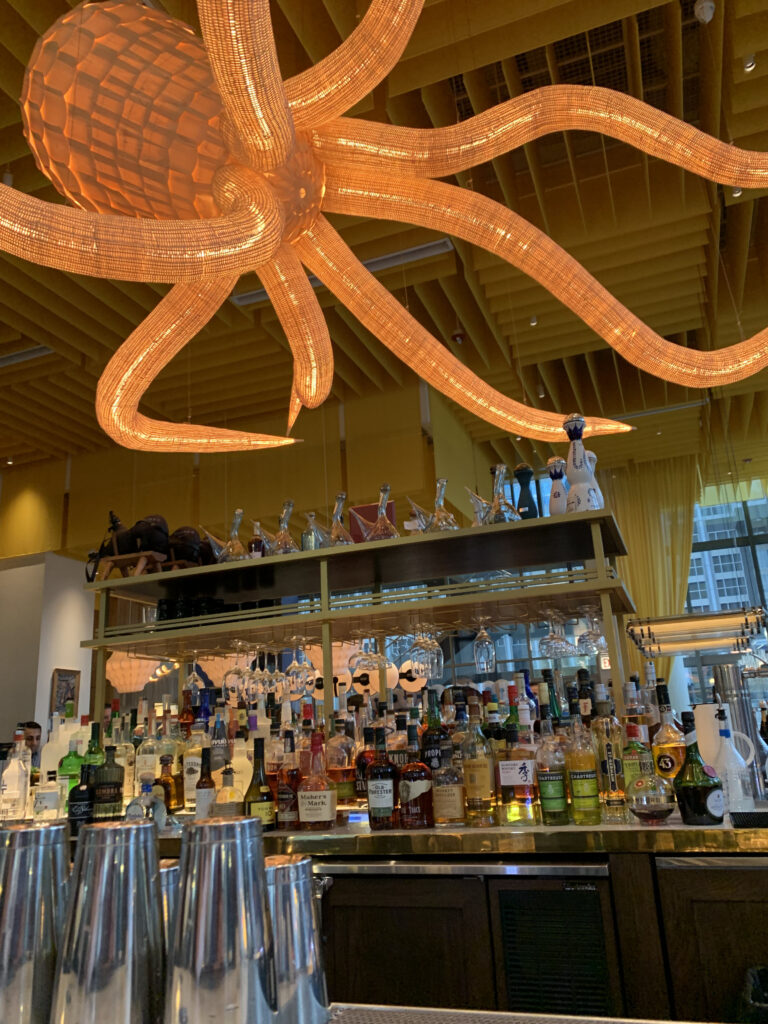
You retrace your steps across the dining room, down the elevator, and past Bar Mar—which is awash in an evening swell of imbibers. The glowing octopus beckons, yet you are entirely sated. Andrés and his talented deputies have already served you everything under the sun. They’ve plied you with some of the city’s finest cocktails and wines too and executed nearly everything with aplomb.
Yes, those few missteps—a caviar service lacking the right vessel, a turbot missing a bit of extra sauce—are minor in the grand scheme of things. For Bazaar Meat achieves a level of satisfaction through a dizzying diversity of flavors and forms that few restaurants in Chicago have ever matched. And the hospitality, channeled through Gibsons’s tenor and tone of service, is close to faultless.
Andrés’s employees labor with a sense of joy that is more akin to places like Smyth and Oriole than the slick, monolithic style seen at Maple & Ash or the RPMs. The bussers, servers, hosts, and sommeliers combine the homey ease of Rush Street’s broad-shouldered, long-serving cadre with a youthful enthusiasm that enlivens the space. With so much ground to cover on the sprawling menus, they ensure that parsing the selection always feels approachable and fun. When they come to the table toting crispy pork skin or Kobe beef, they provide the finishing touches—or maybe even cook the whole steak—unerringly.
Plus, spatially, you do not feel lost within a crowd of other well-heeled patrons destined to command outsize attention. The dining room buzzes, but it does not burst your eardrums. It shines, yet it does not intimidate. The riverside views are broadly appreciable no matter where you sit. And, for all the tableside presentations and wafting wagyu fat, you are more likely to see neighboring diners smile than scowl. Surely, Andrés and Gibsons know their establishment will attract Chicago’s heavy hitters, and they manage each guest’s experience in such a way as to make everyone feel special.
In the final analysis, it’s best to think of Bazaar Meat more as a fine dining restaurant than a steakhouse. Andrés, in fact, describes the overall concept as “a vibrant mix of sophisticated cuisine, artful service and playful theatrics…where dining transcends into fête extraordinaire.”
Readers will already know how that word, transcends, relates to your vision of superlative hospitality. It’s not a term that many chefs, despite the perpetual search for a marketing advantage, bandy about. Yet it is consequential, signaling an experience in which many distinct parts amount to something larger and more meaningful than a commercial transaction.
Andrés affirms that food, wine, and service are only tools used in pursuit of a larger, sustaining feeling of togetherness at the table. That is where the chef’s burgeoning identity as a humanitarian intersects his aptitude as a craftsman and his vision as an artist.
By channeling molecular gastronomic techniques towards American and Spanish nostalgias—by offering such dishes in a shareable, accessibly priced format—Andrés has built a space in which fine dining ditches its class conscious gatekeeping to bring people together. Nonetheless, when it comes time to satisfy the carnivores in the crowd (the type who might raise their eyebrows at so many small bites), the chef does not miss. He serves up an array of meat that is absolutely singular and reflects quite a good value too. He encourages conscientious consumption driven by an appreciation of distinct styles rather than the “bigger is better” philosophy that reigns at most steakhouses.
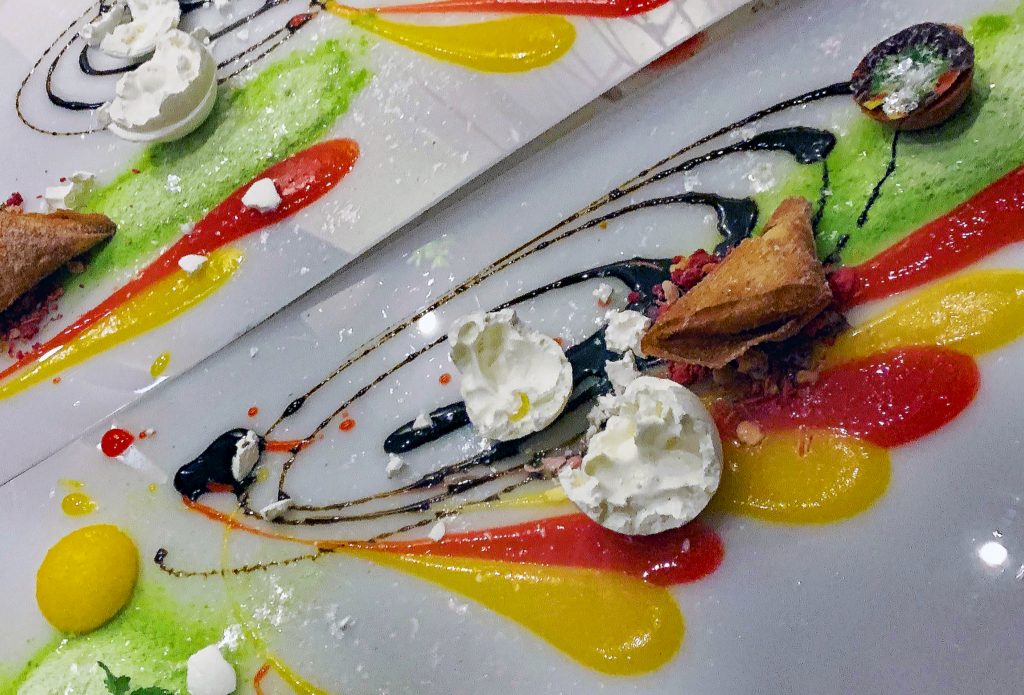
Ultimately, however, Andrés’s entry into the Chicago market is best viewed through the lens of Alinea—that favorite punching bag of yours. While moto, Schwa, Graham Elliot, Grace, and Ever attest to the city’s wider molecular gastronomy heritage, only Achatz was inducted into the style at the source. He, like Andrés, worked at elBulli—though for far less time. The former spent “a few weeks” there while the latter lasted a few years before being fired by Adrià.
Andrés would open minibar in 2003 after a decade in D.C. while Achatz—having made his name at Trio from 2001-2004—would open Alinea in 2005. Each restaurant would come to characterize its respective city. Alinea would earn three Michelin stars in 2011, and Andrés would notch two in 2016 when Bibendum finally came to the capital. (Somni would also earn two stars as part of Michelin’s 2019 California guide before closing, meaning that both chefs have held a maximum of four total stars at once across all their properties).
Under The Alinea Group, Chicago would become associated with an application of molecular gastronomy that is austere, unsettling, and smugly incomprehensible at times. Though early dishes like the “Black Truffle Explosion” and “Hot Potato Cold Potato” earned legendary status during the mothership’s first decade, they would be traded away in favor of “style over substance” environmental presentations that are largely unrooted in any shared culture or nostalgia. The dawn of Tock would only empower Alinea to further chase efficiency and profit at a cost to the guest experience. The restaurant has seemed content to offer a “bucket list” experience for budding “foodies” and tourists for whom expressing Chicago’s sense of place holds no value.
Next, under Dave Beran, offered a more engaging, more classically inspired counterpoint for a time. Yet the restaurant has devolved into little more than a tacky, increasingly aimless “Alinea light” in the years since. (The “Hollywood” menu, in particular, represents the absolute nadir of all Chicago tasting menus you have ever tried).
The Aviary and The Office, in Charles Joly’s heyday, felt like the coolest bars around. Today, in a Fulton Market that seems worlds apart, the dark, cloistered venues exist only to squeeze the neighborhood’s senseless new inhabitants on bitter, boozy drinks and Alinea-priced, “blink and they’re gone” bites.
And Roister, good old Roister, would show promise under Andrew Brochu before slinging expensive burgers—and the former chef’s famous fried chicken recipe—in perpetuity. The menu, for all the group’s supposed creativity, rarely changes. And the service and pacing there represent the worst of Alinea’s obsession with efficiency.
Is St. Clair Supper Club even worth mentioning? Only, you think, for their atrocious wine events. Nobody in the city even remembers that craven cash grab—a far cry from the inventive set menus Brochu once served in that basement space—exists.
Quite simply, Andrés’s entry into Chicago has shown the city what it has been missing out on all these years due to The Alinea Group’s molecular gastronomy malfeasance. Of course, there is nothing wrong with those techniques as such. They can, truly, be used to conjure the most stupefying, delectable flavors and textures imaginable. It’s all a matter of attitude.
Andrés deconstructs dishes while maintaining a deep love for the original recipes. He retains the food’s essential character while constructing a novel form that offers the same kind of pleasure—and touches on a fundamental nostalgia—in a way his guests have never experienced before.
On other occasions, the Spanish chef recognizes a classic recipe’s lasting quality and does as little as possible to it. He might tweak the exact ingredients or reimagine the presentation, but those only serve to honor the original creation and share his enthusiasm with others.
By comparison, The Alinea Group simply hides behind abstraction because they are incapable of engaging deeper emotions. They deconstruct with a sense of disdain for the ingredients they torture then serve up the results with a fart sniffing confidence. Customers nod their heads in wonder as the smoke and mirrors surround them. They attest on social media that they totally “got it”—that it was the “best meal of their life.” Then they run out in search of fast food and promptly forget all but the most photogenic of the evening’s comestibles.
This is all to say: Bazaar Meat serves better “molecular” cocktails than The Aviary, it serves better “molecular” small plates than Next or Alinea, and it blows Roister out of the water when it comes to any kind of heartier fare.
(Is it any surprise that Smyth, despite John Shields’s experience opening Alinea, has maintained a stratospheric standard of cookery under executive chef Luke Feltz—formerly sous chef of minibar?)
You dub Andrés “the Alinea killer,” and you attest that one sprawling meal at this property—enjoyed at total leisure, with total warmth, and built, plate by plate, in accordance with one’s personal taste—negates any need to go to any of Achatz’s concepts ever again.
You surely feel that way, and—despite your skepticism regarding ThinkFoodGroup’s arrival—they have unquestionably enriched Chicago’s dining scene. Bazaar Meat has catapulted itself immediately into the city’s upper echelon of restaurants by offering an experience that is both broadly appealing and transcendent.
And the best part is that Andrés’s partnership with Gibsons is only getting started. You look forward to further menu growth—to even greater distinctiveness relative to the Las Vegas and forthcoming Los Angeles locations—in the years ahead. For Bazaar Meat holds the potential to transform how Chicagoans conceive of fine dining, wine service, steakhouses, and—yes—Midwestern cuisine in toto. And the restaurant, at this moment, seems far more motivated to scale those heights than any of the city’s old guard—especially those who wield the same techniques with no intention to please.





